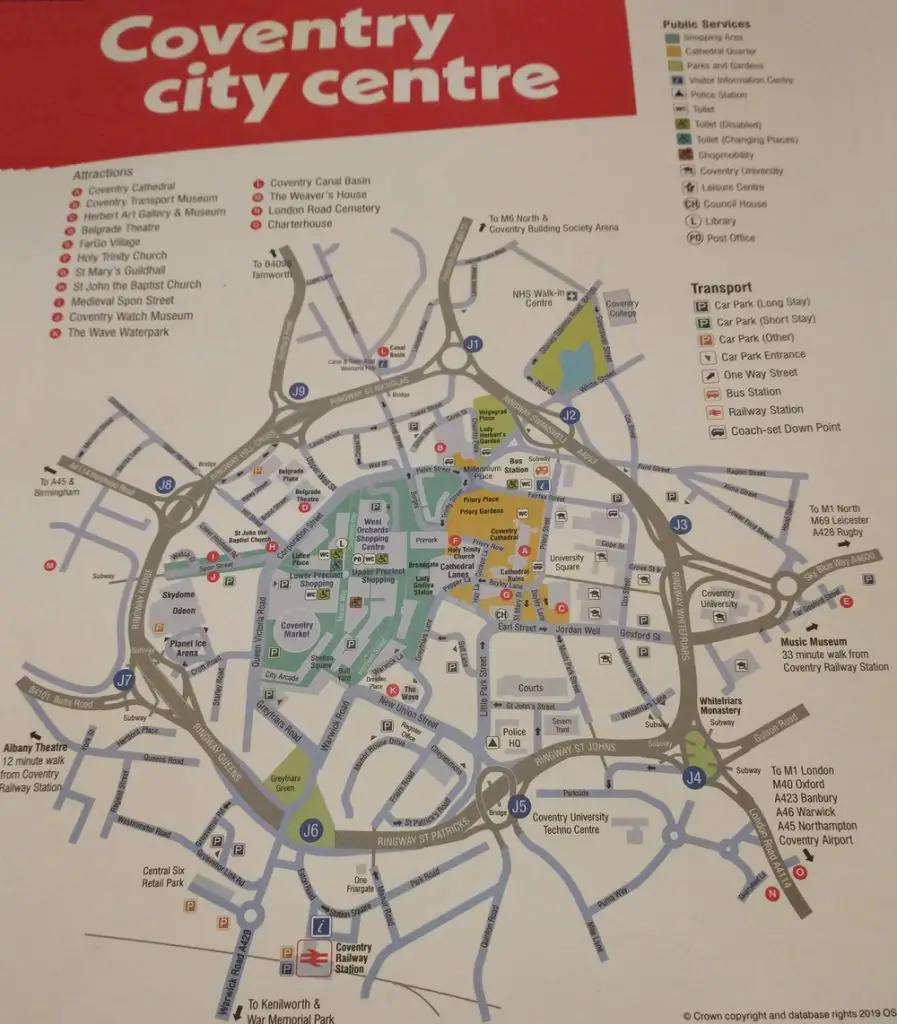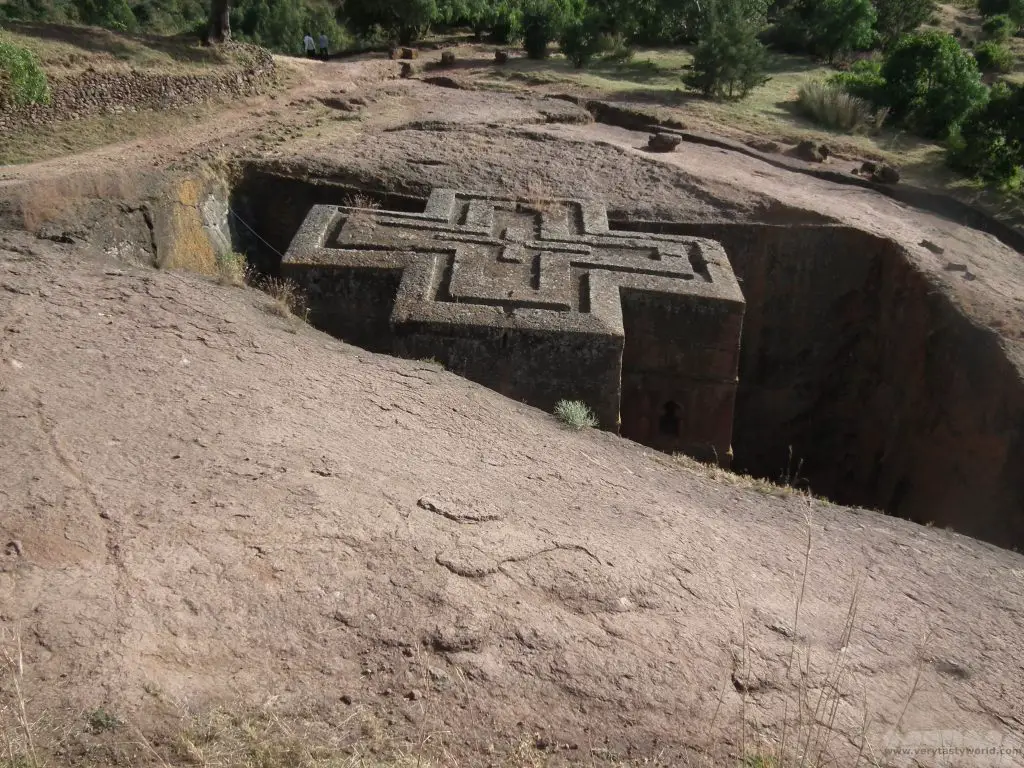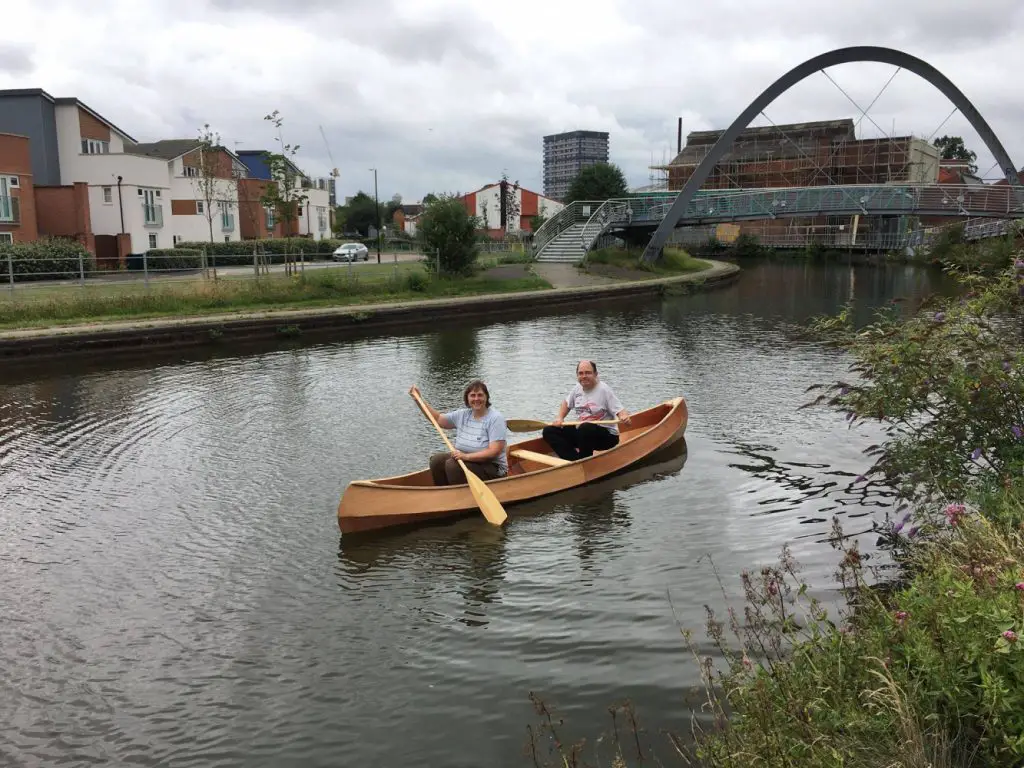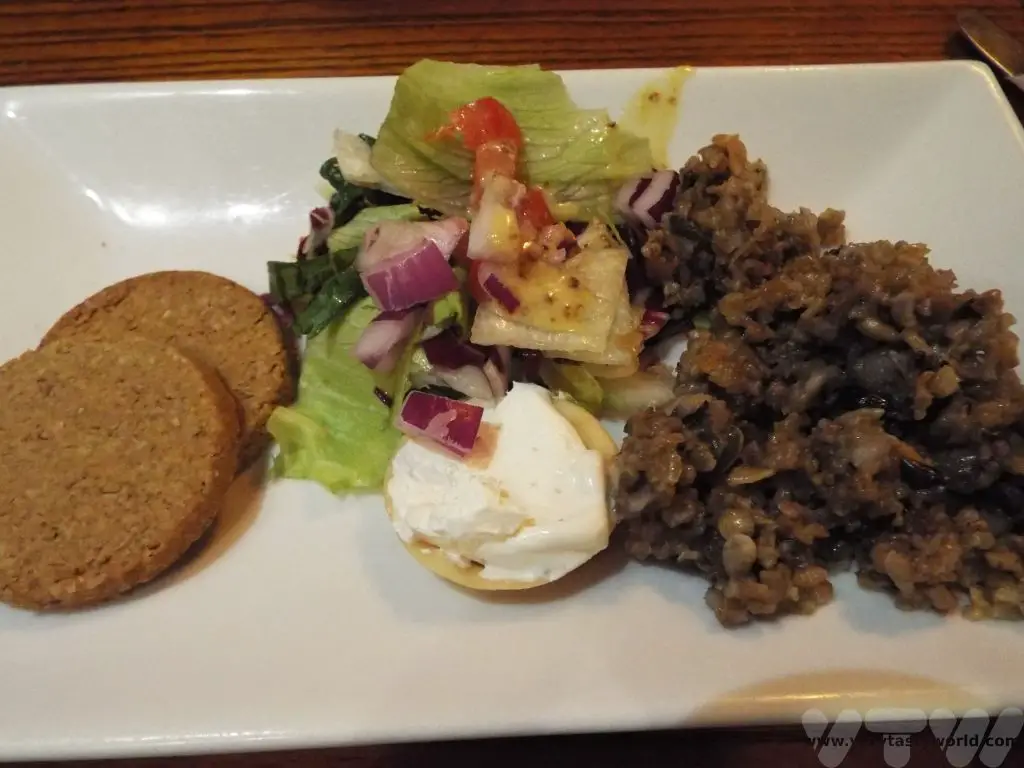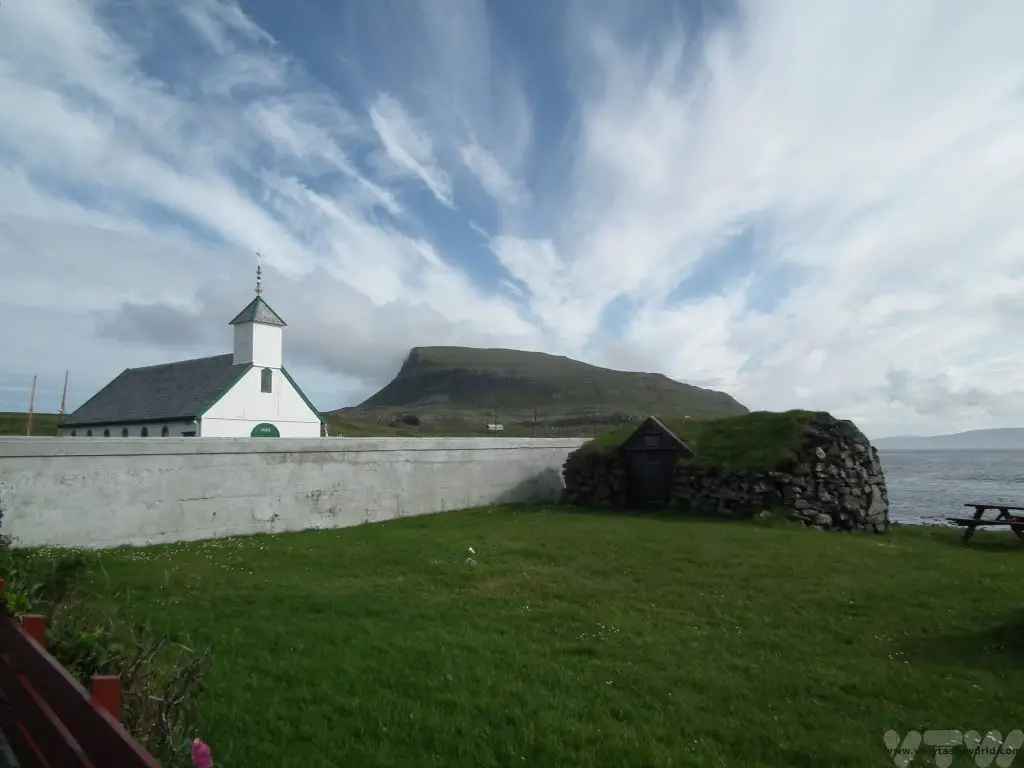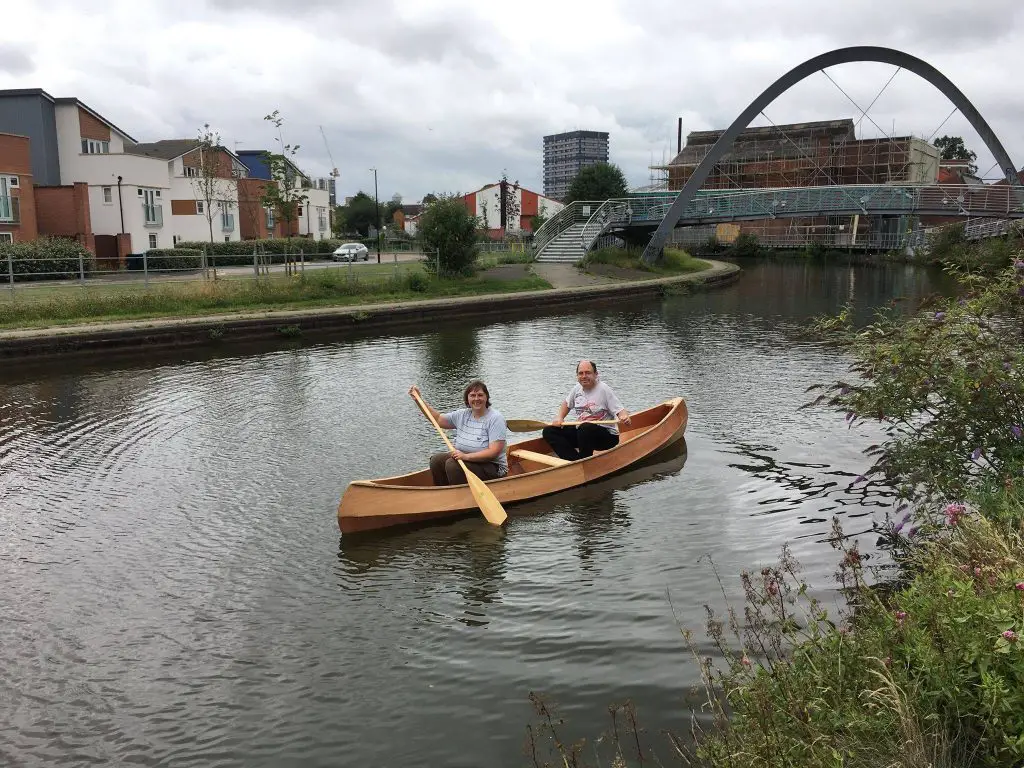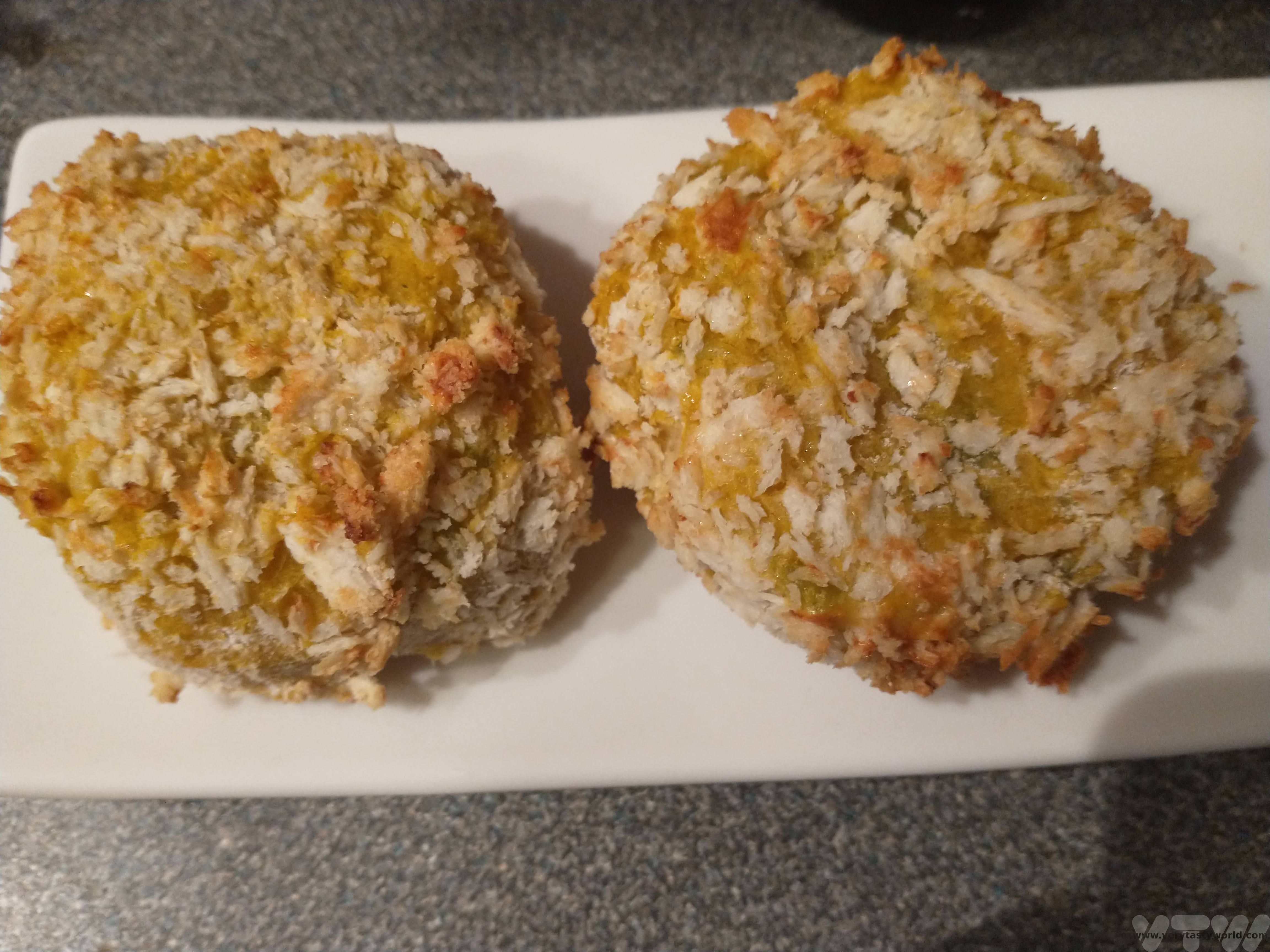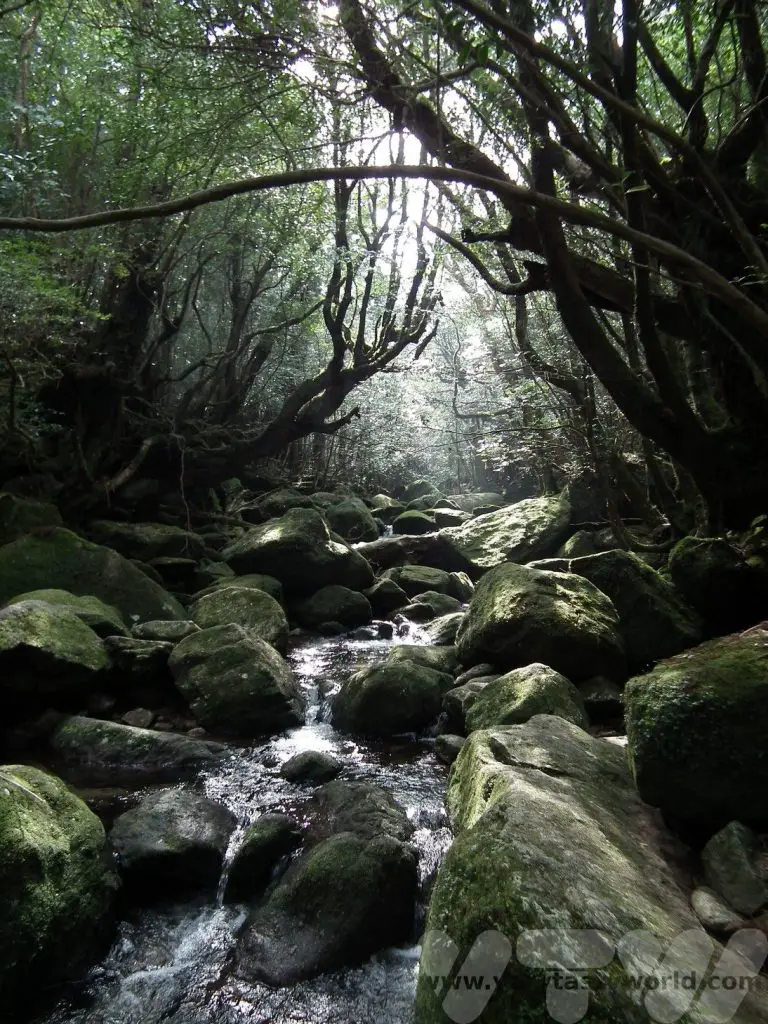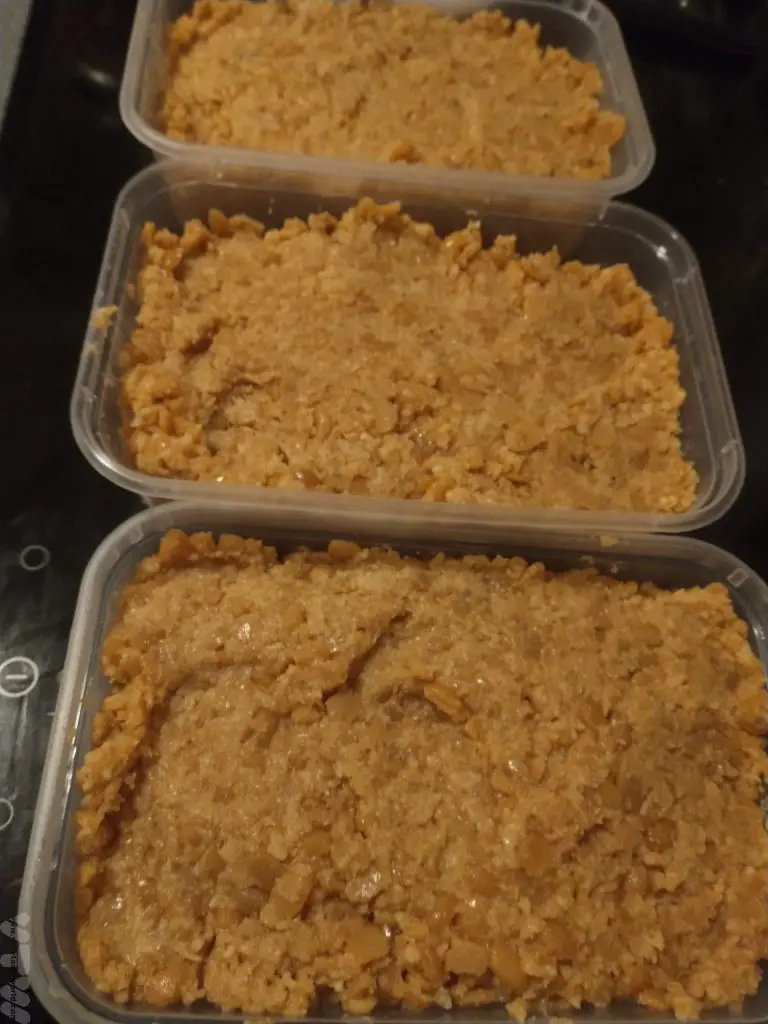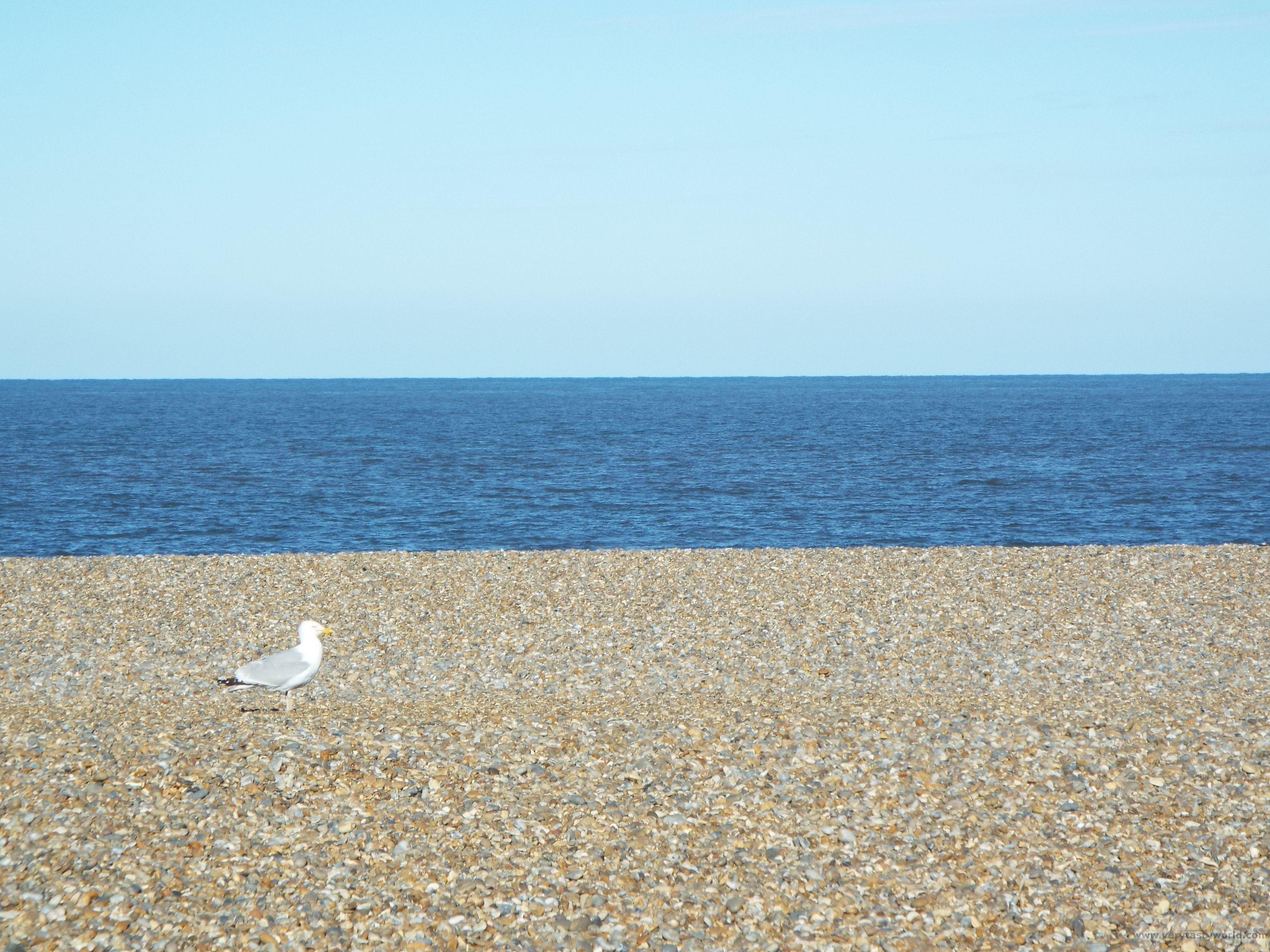Avebury Stone Circle vs Stonehenge
Wiltshire in southern England can claim some spectacular Neolithic sites. Stonehenge is arguably the most famous prehistoric site in the world, but Avebury’s Stone Circle, just 30km away, is the biggest stone circle in the world. Avebury is less famous than its counterpart to the south but which of these monuments is better to visit, especially if you are short on time? Avebury Stone Circle vs Stonehenge? There’s only one way to find out…
Please note that this post contains affiliate links. If you click through and decide to make a purchase we will earn a small commission, at no extra cost to you, which will help towards the costs of running this site.
Introduction to Stonehenge
“Stonehenge! Where the demons dwell. Where the Banshees live and they do live well!” – Spinal Tap
Stonehenge is Britain’s most famous prehistoric site. Construction of this famous monument is believed to have started around 5000 years ago during the Neolithic period.

It is thought that the stones as we know them were established in around 2500 BCE. There are two types of stone used at Stonehenge – sarsens and bluestones. The sarsens are the largest stones, established in two concentric arrangements – the outer circle and inner arc. The bluestones were set up between them. It is believed that the arrangement was changed over the centuries.
The stones were brought to the site from two different locations – the sarsens from Marlborough Downs, around 25km away, and the bluestones from over 250km away, from the Preseli Hills in Wales! The construction is surprisingly sophisticated with interlocking joints used to ensure stability of the monument.
The purpose of Stonehenge is not entirely clear. The stones’ layout is definitely designed to mark the changing of the seasons. It is thought that midwinter, rather than midsummer, was more important for the people who built Stonehenge – cold, dark midwinter marks the shortest day of the year. Thereafter the days would become longer with increasing light, warmth and the prospect of planting crops in the springtime.
The monument aligns with the midwinter sun as you approach Stonehenge from the avenue. It is uncertain as to whether the ancient people also marked the movement of the moon at Stonehenge. The moon has a more frequent cycle than the sun, so is a good measure of time.
The stones have been restored over the years. In 1918 a number of leaning stones were straightened and fallen stones re-erected. Some were also set in concrete. There have been some major conservation projects over the years and work continues to to preserve the stones to this day.
Visiting Stonehenge
When we were children, our parents could drive to Stonehenge, stop the car on the road and then you could walk right up to the stones, and even climb all over them. Not so, these days. Stonehenge receives over one million visitors every year.
The monument now has a visitor centre with information about the site and its construction. You can just show up and buy tickets but you may have to wait to get in if the site is busy. You can buy tickets in advance for a timed entry and there is a discount available if you book online.
Once you have arrived you can spend as long as you like there. Parking is free if you have pre-booked or buy a ticket. You can visit for free if you are a member of English Heritage. If you are an overseas visitor you can buy a pass which will get you into over 100 sites in the UK, including Stonehenge. (This pass represents good value if you plan to see at least 2-3 historic attractions on your visit to the UK.)
The monument itself is located around 2 km from the visitor centre so you can walk or catch a shuttle bus to the viewing area. If you’re walking it takes around 25-40 minutes. Dogs are not allowed to visit but there is an exemption for assistance dogs.
The site can get very busy at weekends and bank holidays, as well as during the school holidays.
The Stonehenge VIP tour
It is still possible to walk around the stones. You have to arrive at the visitor centre outside normal visiting hours, either early in the morning or late in the evening. And, of course, you will pay a premium. These visits are extremely popular, tickets are limited and book up very early, so if you want to walk within the stones, plan ahead!

It does cost a lot but is the only way to get near to the stones these days, unless you are planning to attend – with thousands of other people – at the summer solstice. If taking the VIP option, you need to turn up at the bus stop around 10-15 minutes before your allocated time slot. The bus then takes a small group of people to the stones.
You are allowed to wander around them for around 45 minutes but are not allowed to touch the stones. A guide will point out various features. If you’re lucky it may be possible to time the visit for sunrise or sunset.

Visiting Stonehenge For Free
It is possible to see Stonehenge without pre-booking or paying. You can drive past the visitor centre and continue into Larkhill where you can park.
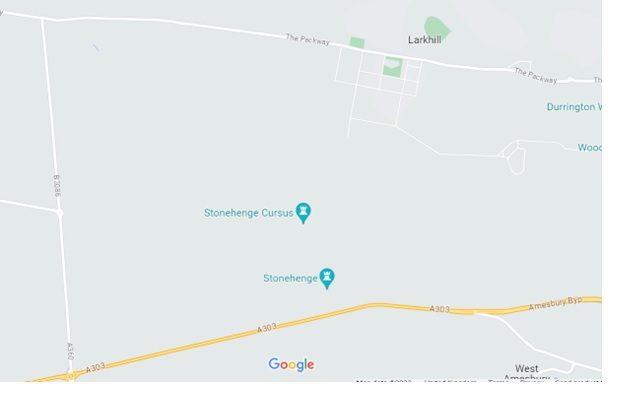
Then walk along Willoughby Road to reach the public footpath which will take you across the fields that lead to Stonehenge.
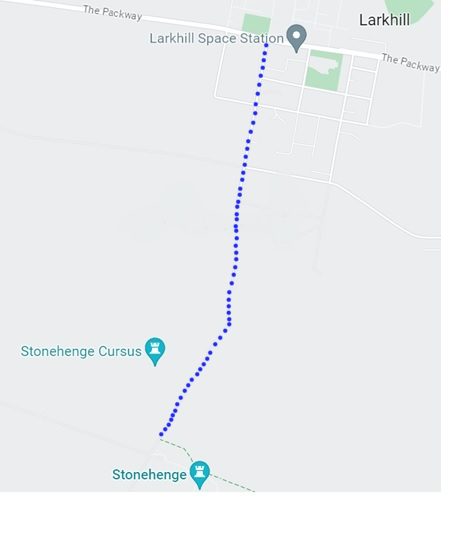
You won’t be able to get amongst the stones (most visitors don’t anyway unless they’ve paid for the VIP experience) but you should get a good view.
An alternative, and longer, route is walking from Woodhenge (see below).
You can also visit Stonehenge for free for the summer solstice on 20th to 21st June each year. It is likely to be very busy and there are terms and conditions for entry to the site.
Getting to Stonehenge
Driving is the most efficient way to reach Stonehenge, either driving to the visitor centre or Larkhill. If it’s not possible to drive, there are plenty of coach tours that will offer a day trip from a number of UK cities.
Other Attractions Near Stonehenge
Woodhenge is around 3km (as the crow flies) from Stonehenge and similarly dates from about 2500 BCE. It comprises concentric posts in six oval rings. The structure was around 40m long and 30m wide and thought to be a ceremonial site.
Originally made from wood, the timber has long gone, rotted to obscurity, but after the site was discovered, concrete pillars were inserted into the ground to indicate where the posts would have been located.
Parking is free. You can walk to Stonehenge from Woodhenge via a country path or along the roads. (Another way to visit Stonehenge for free.)
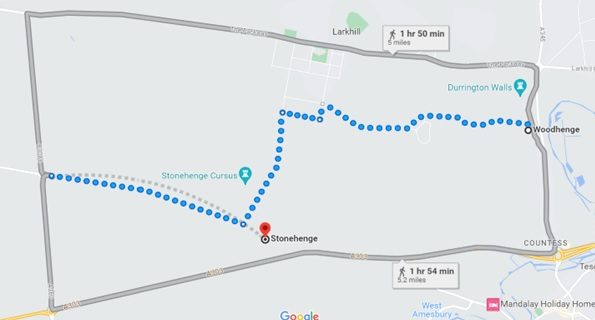
Introduction to Avebury
“And you, my love, won’t you take my hand? We’ll go back in time, to that mystic land.” – Spinal Tap
Avebury is located just 30 km north of Stonehenge (as the crow flies). It is less well-known but is actually the world’s largest stone circle and is even older than Stonehenge. It is thought that construction started in around 2850 BCE.
The main henge comprises an enormous circular bank and ditch which encloses a large circle of around 100 stones which is 1.3km in circumference. Two smaller stone circles are contained within this henge. There are also stone avenues leading to the henge, suggesting that this was probably a ceremonial site.
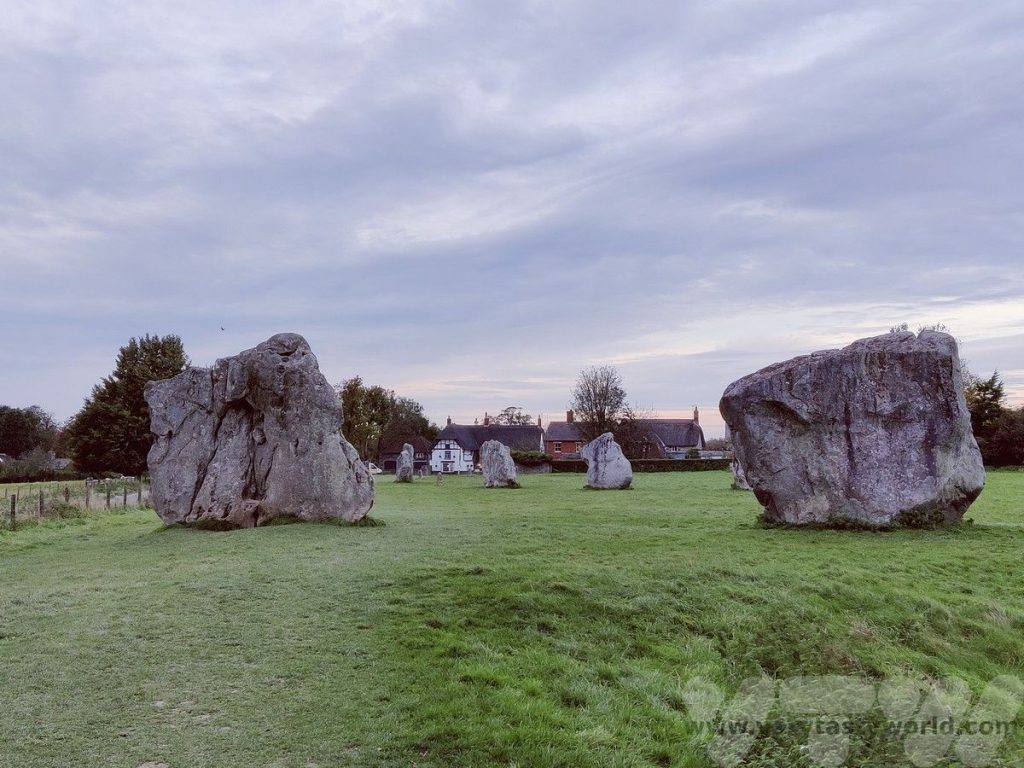
Key Features of The Avebury Henge
As you drive through Avebury village it is impossible to miss the enormous stones. The henge is huge and you can walk through the fields to see all the stones within the boundary of the site, defined by the enormous banks and ditches.
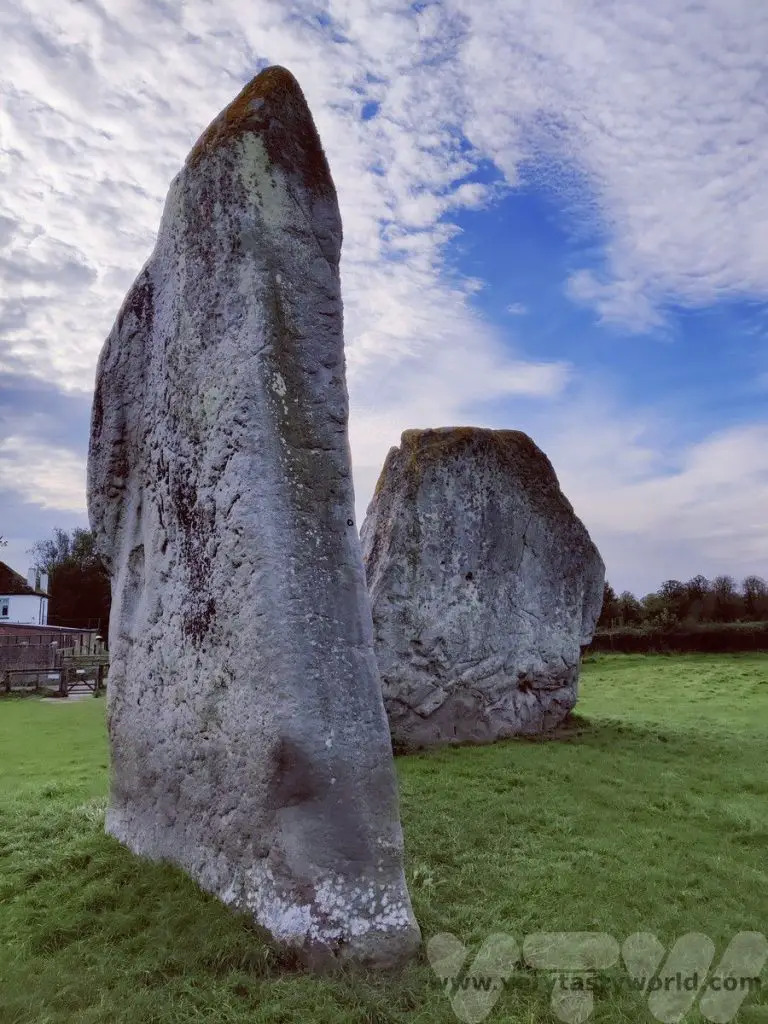
You will need to cross a few roads to reach all the stones. (Take care, some of the roads are on bends, so it’s not always easy to see oncoming traffic.)
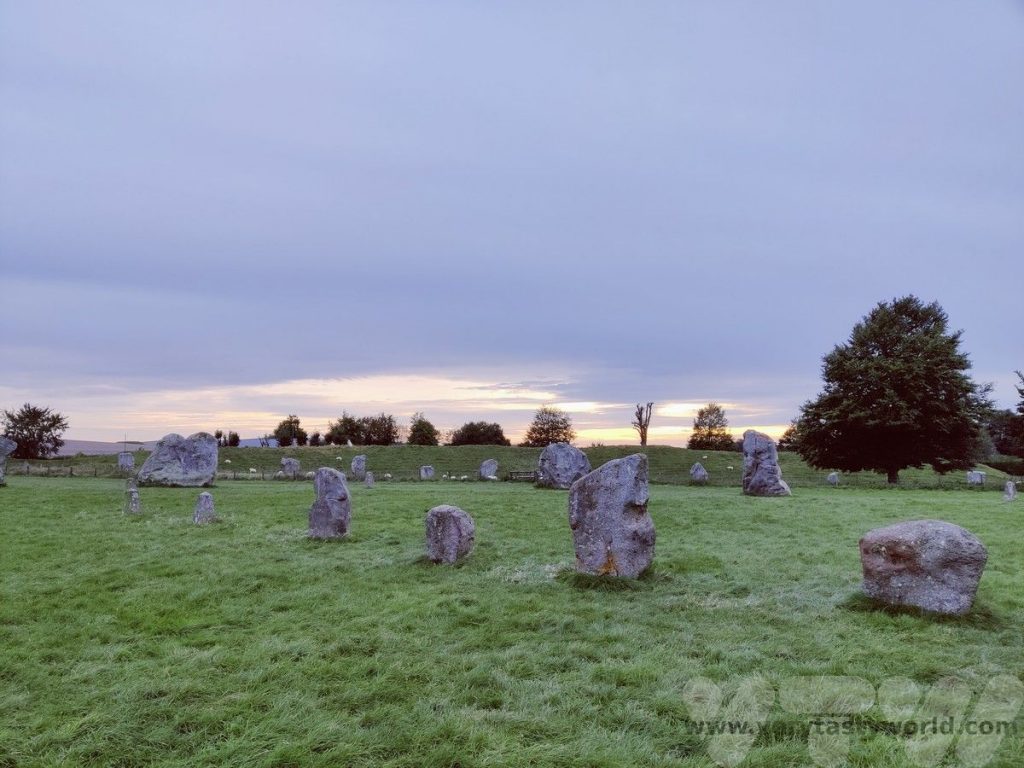
Just to the south of Avebury is West Kennet Avenue – two rows of standing stones leading to the Sanctuary. Originally comprising over 100 stones, set in a corridor formation, many of the stones were lost over the years.
The stones are very large, but not as big as the ones at the henge. Some are long and thin, others are more triangular/square in shape. Where stones have been lost, there are markers in the form of concrete pillars that show where the original stones would have stood.
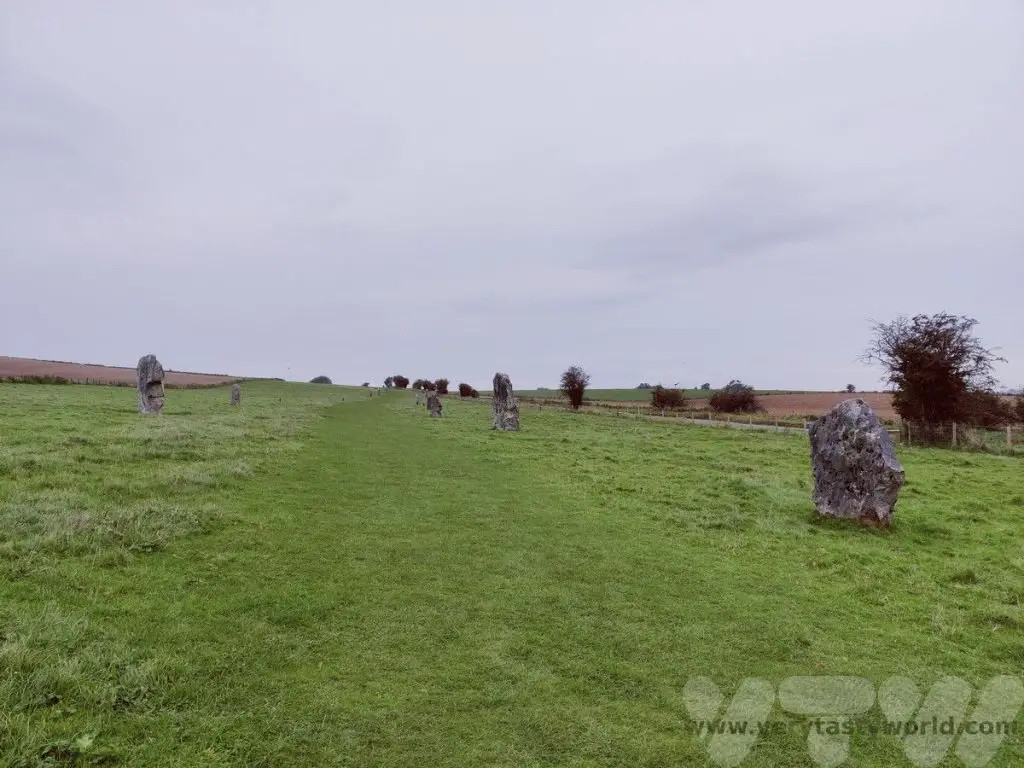
Visiting Avebury
Again, it is easiest to drive to Avebury if you can. There is a car park, operated by the National Trust, which is located a few hundred metres from the main site. It has a charge but is free to members of the National Trust.
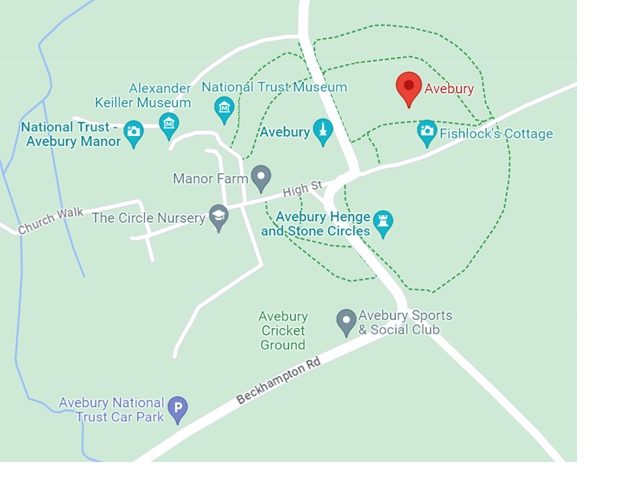
If you aren’t able to drive, you can book a coach tour to Avebury (which often incorporates Stonehenge as well).
The site itself is free to visit and you can walk around the stones.
We recommend bringing walking shoes or boots as the site can get a bit muddy and there are flocks of sheep who share the stones with the visitors – and a fair amount of sheep poo in the fields!
Visiting Avebury For Free (i.e. avoiding parking charges)
There is a car lay-by on the B4003 next to West Kennet Avenue. If you get there early enough (and you will need to as it’s not a large lay-by) or are lucky enough to arrive when someone is leaving, you may be able to park there to walk up the West Kennet Avenue and into Avebury itself.
There is also a small track near Beckhampton close to the Adam and Eve stones where you can park up, but you would have to walk along some of the road to reach Avebury and it’s a fast road.
Alternatively, if you are staying in the area, your accommodation should be able to let you park with them, even if you arrive earlier than the check-in time. Just check beforehand.
Further Neolithic Places to Visit Around Avebury
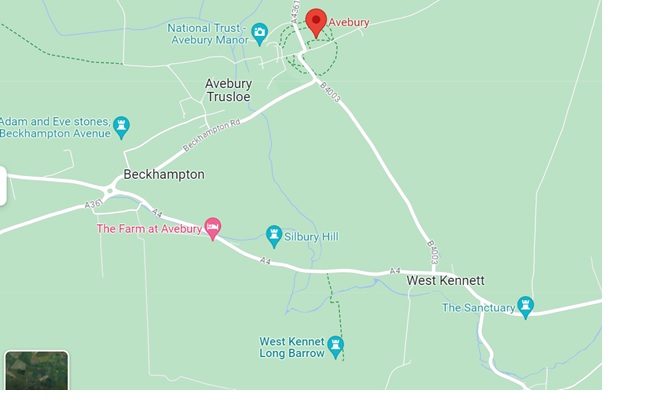
Silbury Hill
This is Europe’s largest pre-historic man-made earth mound, rising to 30 m in a very satisfactory circular conical shape. Although it is a lush green, grassy hill these days, it was originally kept free of grass, the stark, gleaming white of the underlying chalk standing out against the countryside. It would have been seen for miles around and must have been quite the sight for Neolithic visitors. There is a free car park but you are not allowed to climb the hill these days, the only restriction in the area.
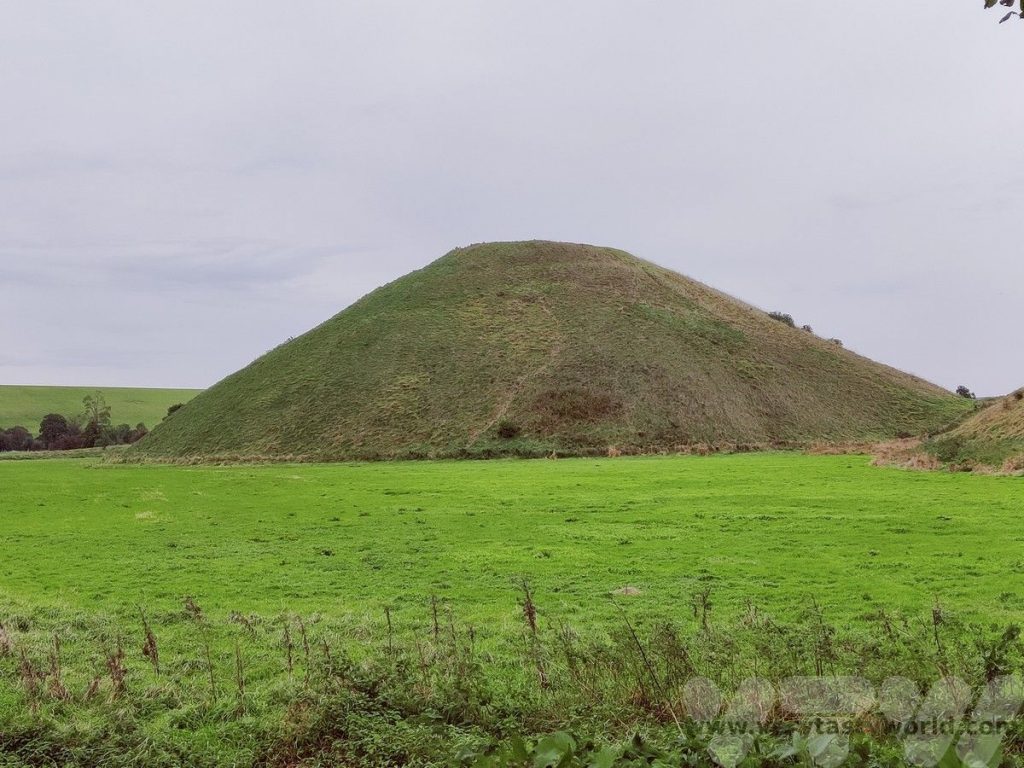
West Kennet Long Barrow
Built in 3650 BCE this barrow was constructed as a chambered tomb. When it was excavated in 1859 nearly 50 people were discovered to have been buried there, along with some of their artefacts. The tomb was sealed in around 2000 BCE and sarsen boulders were used to block its entrance.
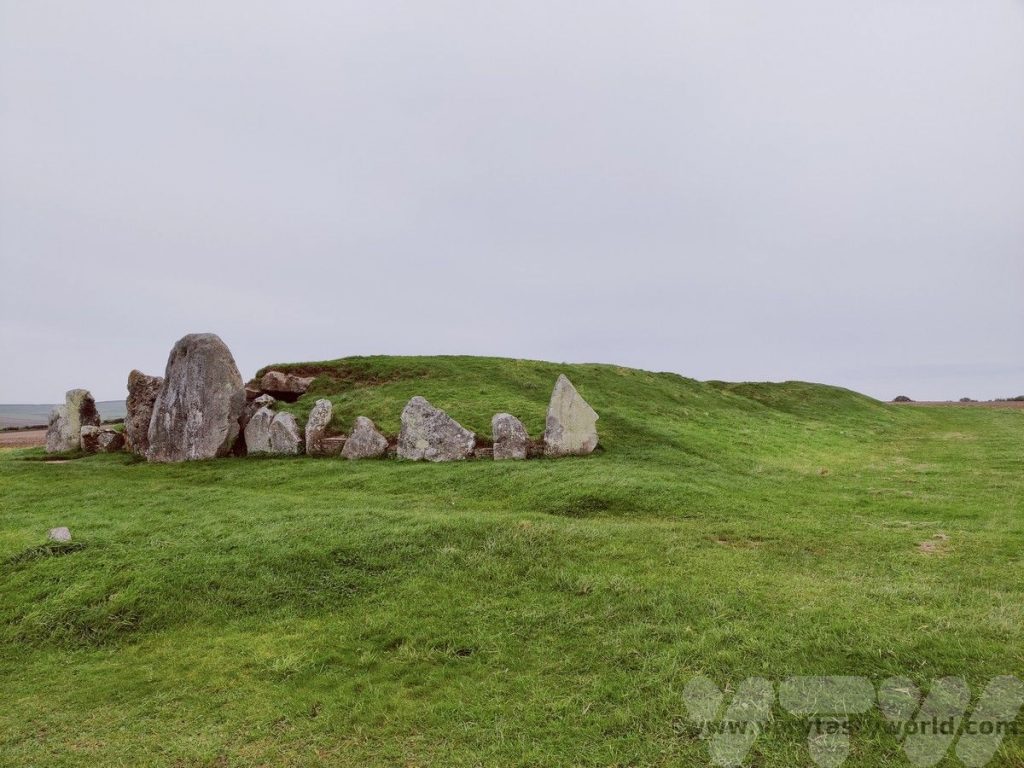
There is a car lay-by on the A4 near the footpath to the barrow where you can park. Walk up the hill across the farmland. Like so many of the Avebury sites, you can climb onto the barrow and venture inside.
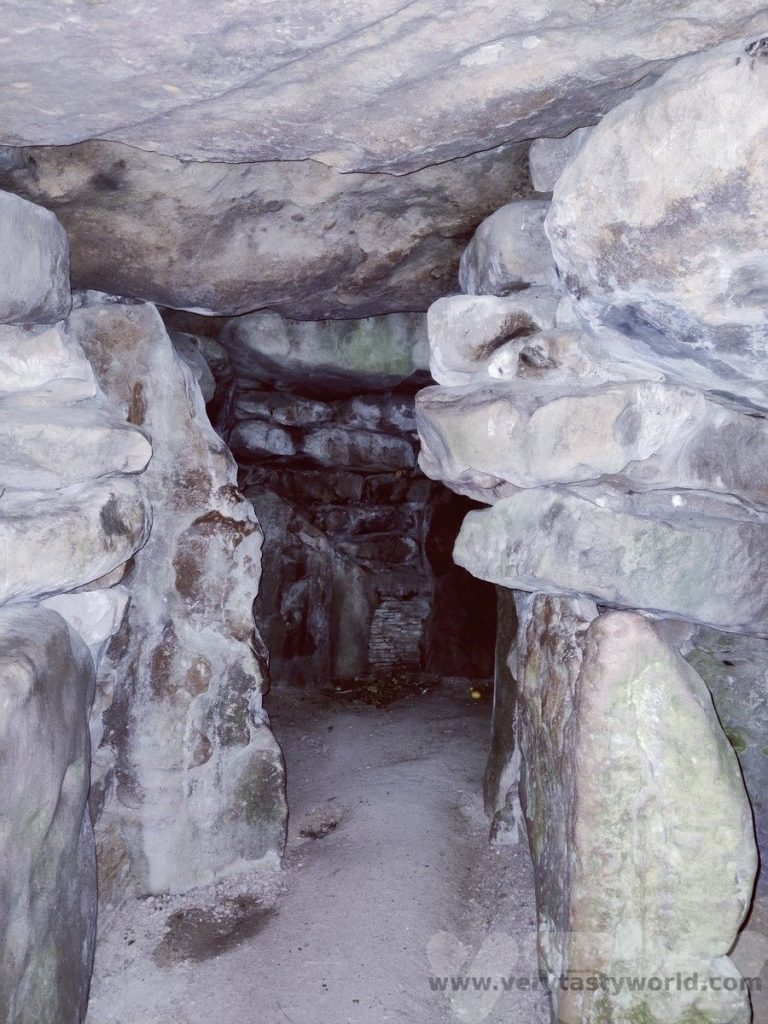
The Sanctuary
A temple that was constructed from both standing stones and wooden posts sited in concentric rings this was probably a ceremonial temple and is thought to have been built in around 2500BCE. It can be found at the end of the West Kennet Avenue, on Overton Hill, which suggests that it was linked to the henge at Avebury.
Adam and Eve Stones
Located near Beckhampton, just turn off the main road before the roundabout (coming from Avebury) and at the end of the track are two standing stones. It is thought that Eve, the smaller stone, formed part of the Beckhampton route into Avebury.
Other (Non-Neolithic) Attractions in Avebury
Avebury Manor
Dating from the 16th century this manor house was refurbished in 2011 as part of a BBC documentary. Each room has been decorated in the style from a different era – the living room is from 1930, the kitchen from the turn of last century. There are Tudor bedrooms and a Queen Anne room. One of the nice things about the manor is that you are encouraged to touch the objects (obviously treating them with respect) so it’s quite interactive. It also has a pleasant garden.

Alexander Keiller Museum
Keiller was an archaeologist who, having inherited a marmalade business, used his wealth to buy land around Avebury and conducted excavations at the site. A pioneering aerial photographer, he used his skills to understand the archeology of the area from the skies.
He first excavated at Avebury in 1937, clearing undergrowth and discovering buried stones (which naughty farmers had buried centuries ago). Many of the buried stones were recovered into their original holes and where there were missing stones, Keiller placed concrete markers to show where the stones would have been located.
He sold the land to the National Trust (for a nominal value, representing the cost of the farmland) in 1943, hence helping preserve Avebury as an important archeological site. This small museum documents some of the artefacts he found in the area.
There is a fee to enter the manor and museum but National Trust members can visit for free, as can English Heritage Overseas Visitors with the pass.
Avebury Stone Circle vs Stonehenge – Which Is Better?
So you only have time to visit one of the attractions, which do you choose? In our opinion, Avebury is the hands-down winner. Here’s why:
Avebury is free to visit.
You can arrive at any time. Avebury receives fewer visitors than Stonehenge (around 250,000 visitors each year) but is a popular attraction for those in the know, so it can get busy at certain times of the year. That said, it is much bigger and spread out over a wider area so there is more space for everyone to enjoy their visit.
You can walk around the stones and even touch them.
There are lots of other interesting megalithic features at Avebury and some fantastic walks in the lovely English countryside to see them.
There is a pub in the village, amidst the stone circle!
You can stay overnight in Avebury village or close by. This means that you can enjoy the stones in the evening, after the day-trippers have gone home, and earlier in the morning, before the next bunch arrive.
We stayed at the Dorwyn Manor, less than a kilometre’s walk away. It was a great choice, a lovely bed and breakfast hotel with excellent brekkie and an honesty bar (help yourself to some drinks and pay the following morning). We were able to park in their spacious car park as soon as we arrived. Pub grub and local beers are available at the Red Lion pub in the village centre – reputedly one of the most haunted pubs in Britain!
Both sites are undoubtedly of huge historical importance and both are fascinating to visit. But whereas Stonehenge is an icon – precious and protected and to be admired from afar, Avebury is intimate and inviting and leaves you wanting more.
Stonehenge is a world-famous destination and is great to have ticked off the list but we could go back to explore Avebury time and time again. And indeed we have!

Related Posts You May Enjoy

- Things To Do In Rovaniemi In Winter
- Avebury Stone Circle vs Stonehenge
- Five days in Copenhagen
- Is Sarajevo Worth Visiting?
- A Svalbard Holiday – Land of the Midday Moon
- Afternoon Tea in Coventry

- Things To Do In Rovaniemi In Winter
- Avebury Stone Circle vs Stonehenge
- Five days in Copenhagen
- Is Sarajevo Worth Visiting?
- A Svalbard Holiday – Land of the Midday Moon
- Afternoon Tea in Coventry

- Things To Do In Rovaniemi In Winter
- Avebury Stone Circle vs Stonehenge
- Five days in Copenhagen
- Is Sarajevo Worth Visiting?
- A Svalbard Holiday – Land of the Midday Moon
- Afternoon Tea in Coventry

Afternoon Tea in Coventry
Everything Stops for Tea
Afternoon tea is a very British tradition. The British are, of course, well known for their love of tea.
Tea to the English is really a picnic indoors.
-Alice Walker
Afternoon tea originated in the early 19th Century. It was a time when tea drinking was becoming extremely popular amongst all classes but this was also a time when people tended only to have two meals a day: breakfast and supper. Supper was usually taken around 8pm in the evening which meant that there was an awfully long gap between meals.
Anna Russell, Duchess of Bedford and friend of Queen Victoria, invented the afternoon tea. She had decided that the gap between breakfast and supper was just too long (who can help but agree?) and she would start feeling peckish mid-afternoon. She solved this problem in around 1840 by indulging in a cup of tea and a snack at around 4pm. The tea was generally accompanied by bread and butter and some cake. She invited her friends to join her and soon enough afternoon tea became highly popular amongst high society.
The elements comprising afternoon tea evolved over the years. Fortunately sandwiches had already been invented by the Earl of Sandwich, who had discovered the joys of putting something delicious between two slices of bread in 1762, so afternoon tea could accommodate this as a menu item as well.
Scone? Or Scone?
Scones are also considered to be an essential element of afternoon tea these days. These are traditionally sweet scones, eaten with jam and clotted cream. The scones are presented whole: they should be cut in half and the jam/cream or cream/jam combination applied copiously. Never reveal whether you put the jam or the cream onto the scone first to anyone from the West Country. Devon and Cornish folk have very different ideas about the order in which the scone should be adorned. We politely suggest that they taste wonderful either way.

As well as disputes about how to eat scones the English also disagree on how to pronounce the word – is it scone to rhyme with ‘gone’ or scone to rhyme with ‘stone’? We’re originally from the south of England so both use the former but have regular arguments with friends about the true pronunciation.

How To Enjoy Traditional Afternoon Tea
The quintessential afternoon tea comprises a selection of sandwiches, a couple of scones served with clotted cream and jam and a variety of miniature pastries, cakes or sweet treats. Served with a cup of tea. This might simply be an ordinary cuppa but it is more likely that you would be offered some speciality teas or herbal infusions. Coffee and hot chocolate are usually available for non-tea-drinkers. The more indulgent modern afternoon teas may also offer a tall glass of fizz; Champagne (preferably) or Prosecco to accompany the treats.

Etiquette suggests that you start with the savouries on the bottom tier. Scones should be eaten next, then finish with the sweet treats on the top tier.
This particular tea had four pastries each, including a fruity pannacotta and layered cake.
Almost a meal in itself, afternoon tea is refined and decadent.
Afternoon Tea in Coventry – Coombe Abbey Country Park
Coombe Abbey and Country Park is located a few kilometres outside Coventry city centre and is a delightful place to not only enjoy afternoon tea but also to spend time in the extensive 500 acre park, woodlands and gardens.

It’s possible to drive to Coombe Abbey. It takes around 15 minutes from Coventry city centre and parking fees are payable. It is a very popular place to visit at weekends and bank holidays, so sometimes the car park can be full. Alternatively you can catch the bus from Coventry’s central Pool Meadow bus station. The No 53 bus will get you there in about 40 minutes.
Coombe Abbey was originally a 12th-century Cistercian abbey that has now been converted into a hotel.
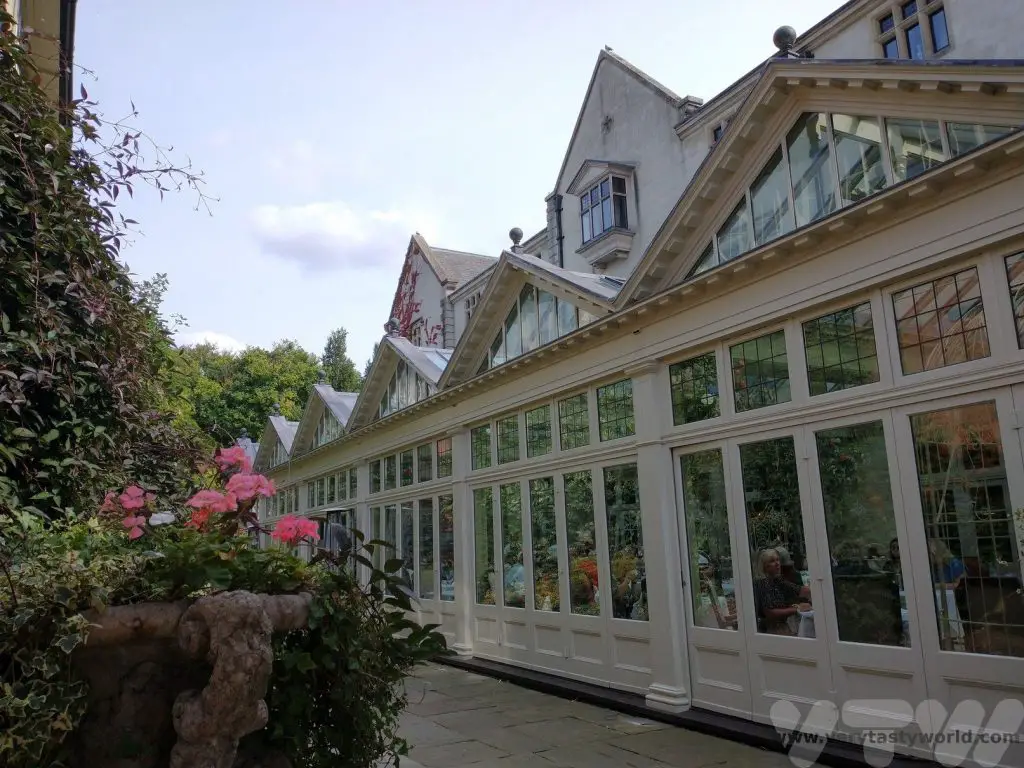
Afternoon tea is held in a lovely garden room, a light and airy space.
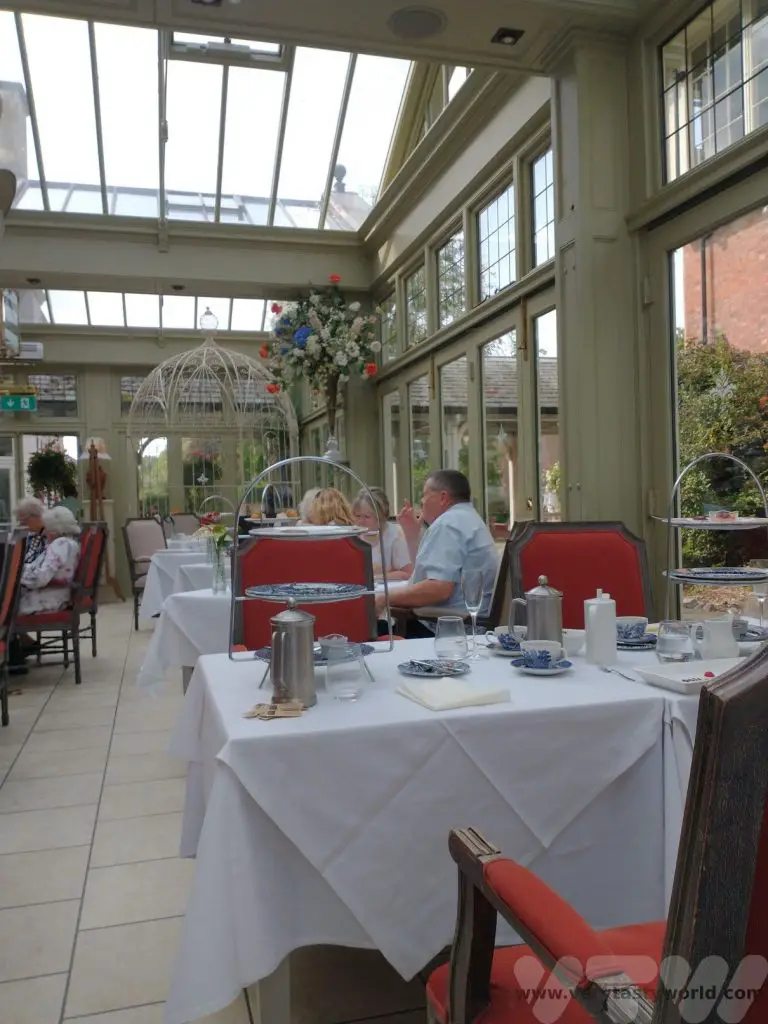
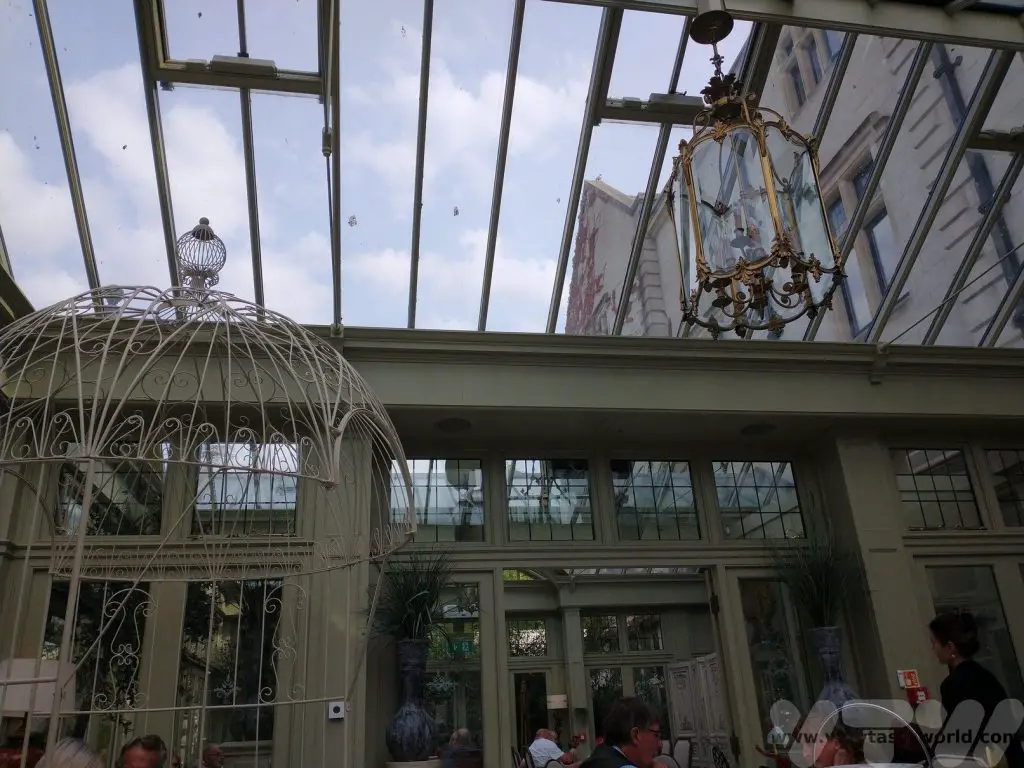
There are a variety of options available from traditional afternoon tea to savoury offerings. There is a wide variety of teas on offer – from great quality black tea to some more unusual options such as gin and tonic tea. If you’re feeling decadent, a glass of bubbly is also available.
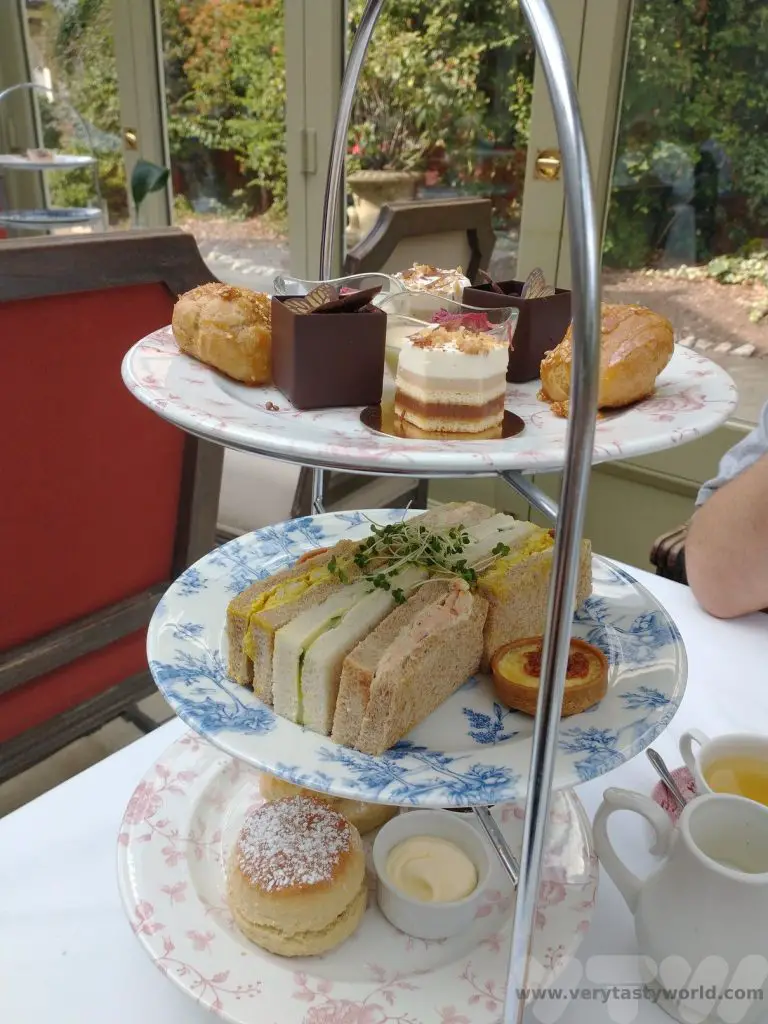
The petit fours are beautifully made.
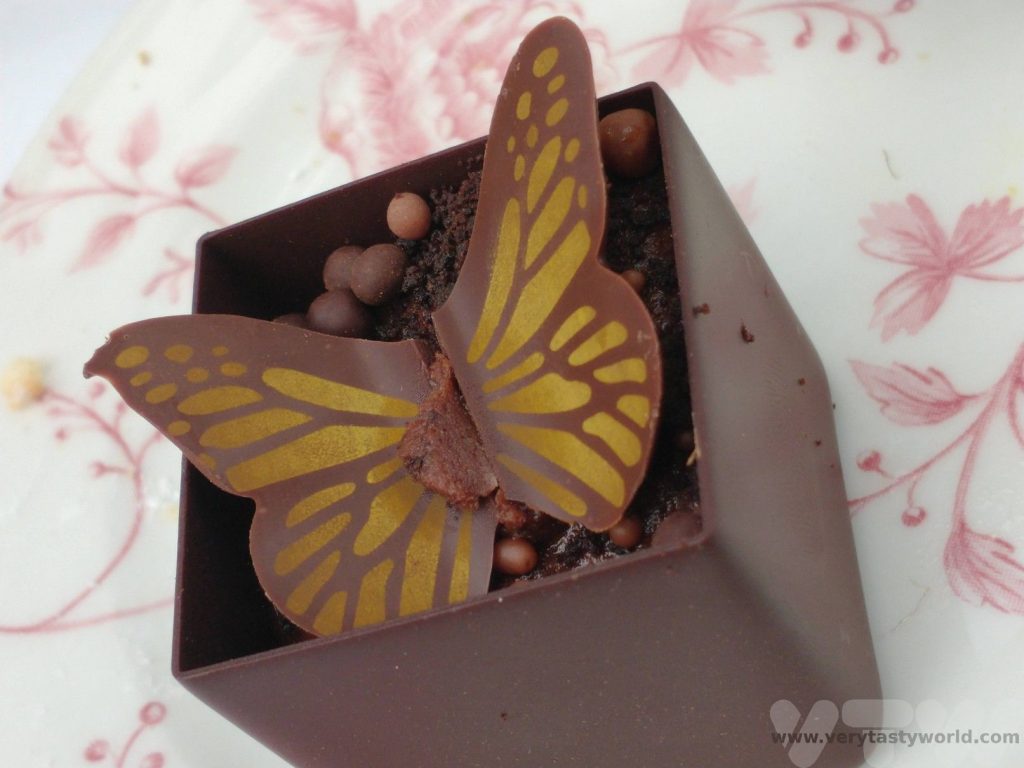
Prices range from £20 to £47 (July 2023) depending on the decadence of your choice of tea and whether you wish to indulge in fizz. The prices also vary depending on whether you are visiting during the week or at the weekend (weekend prices are higher). Afternoon teas at Coombe Abbey are very popular so booking is essential.
Other Things to Do In The Area
The grounds of the country park are delightful for walking in. There are several lakes and an extensive woodland to explore.
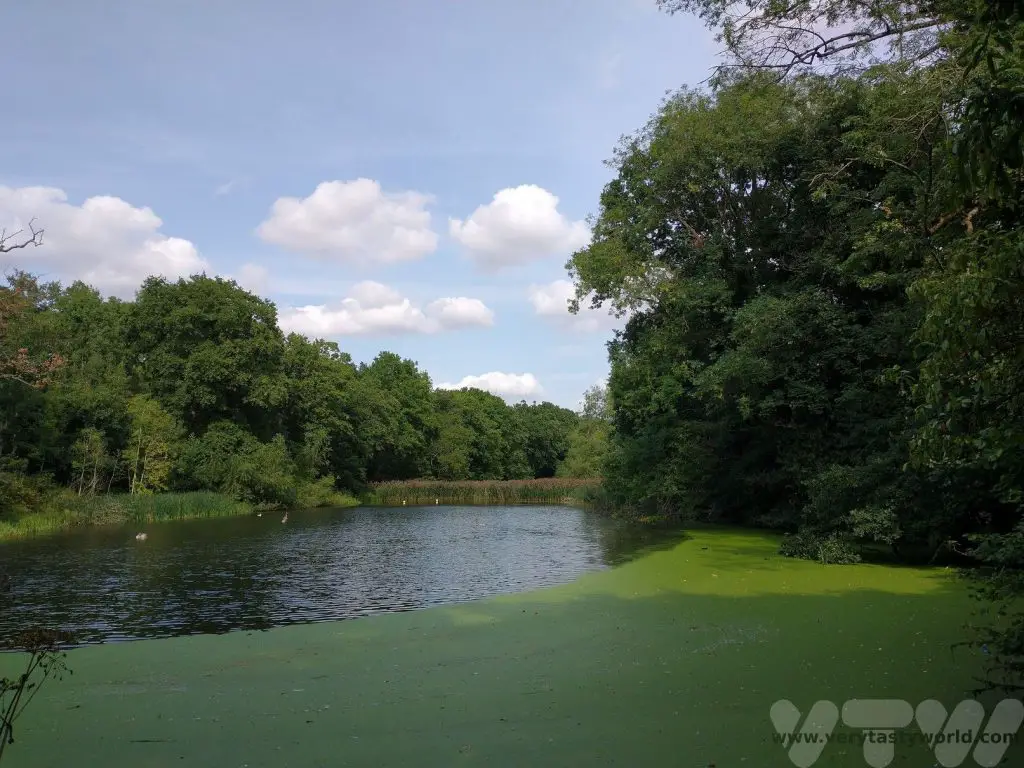
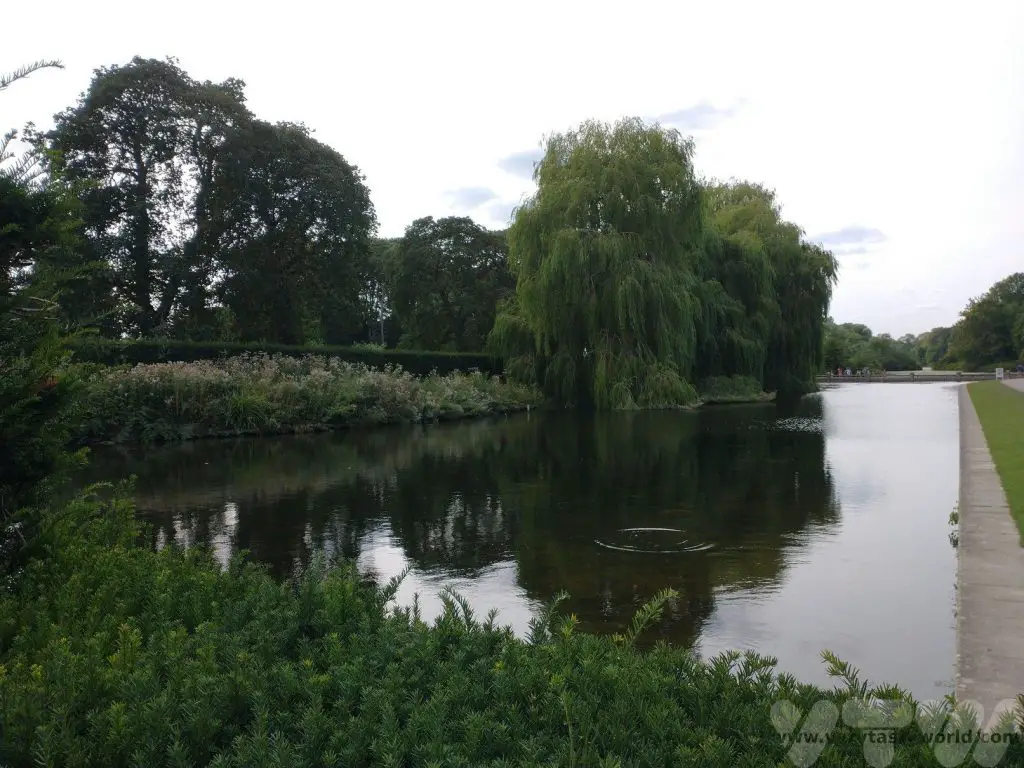
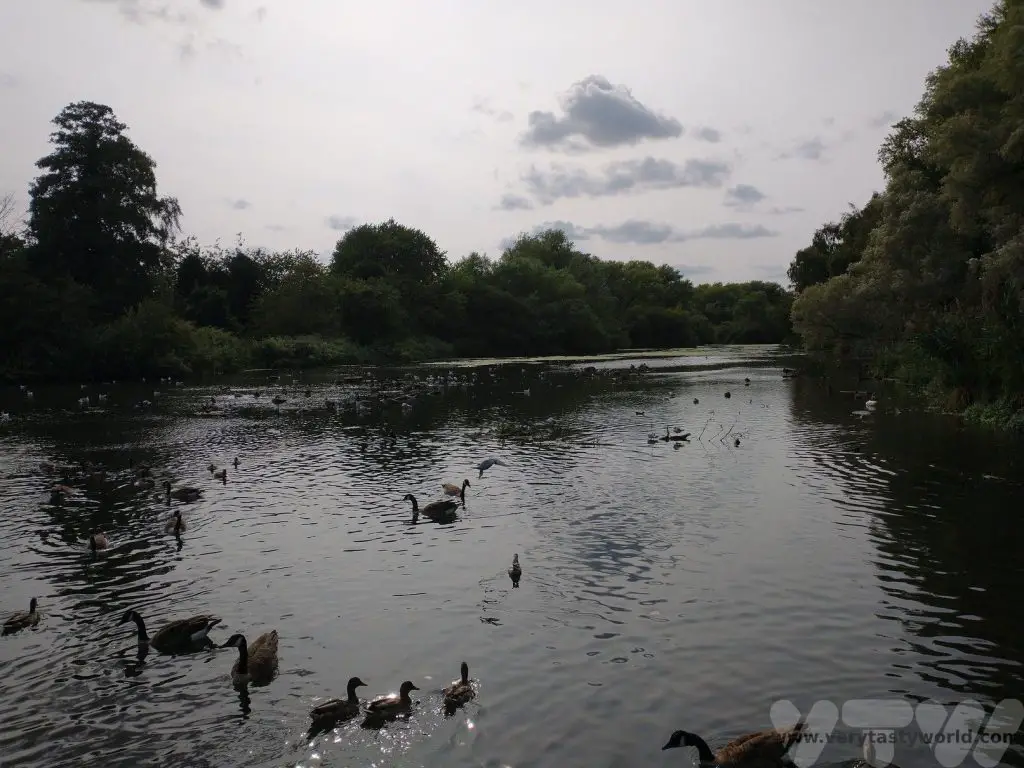
If you are feeling adventurous there is also a Go Ape facility where you can exercise your inner child and go climbing in the treetops and enjoy the exhilaration of zip wires and a tarzan swing! (Probably best to enjoy before taking afternoon tea!)
And if you’re still feeling hungry, Coombe Abbey offers mediaeval banquets in the evenings – great food and entertainment guaranteed.
Afternoon Tea in Coventry – Tales of Tea at St Mary’s Guildhall
Recently refurbished, St Mary’s Guildhall is one of the most important surviving guildhalls in the country, dating back to the 1340s.
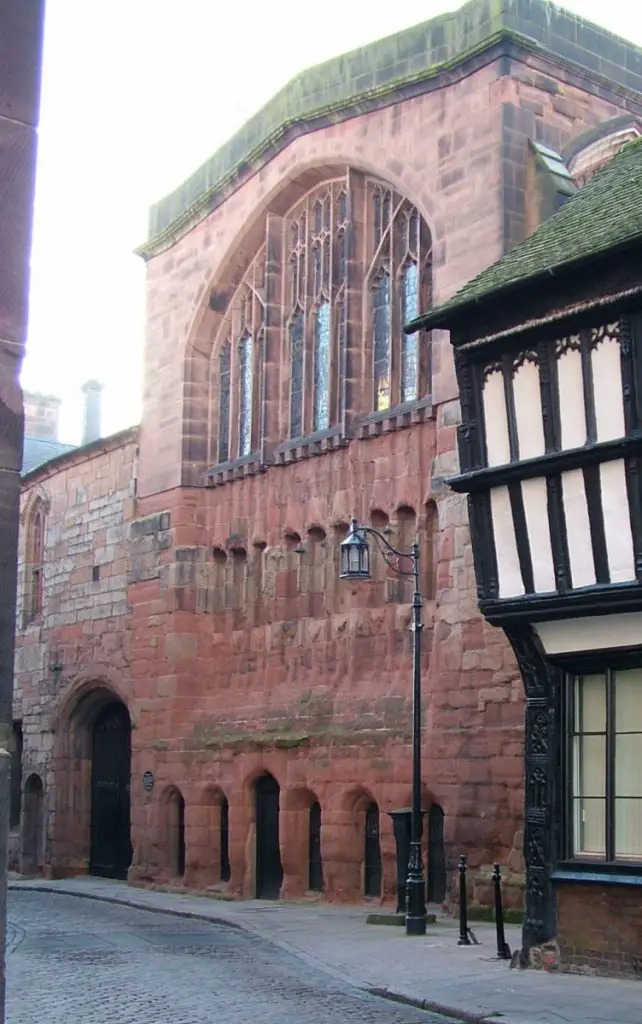
Afternoon tea at Tales of Tea is served daily in St Mary’s undercroft, a delightful and historic setting.
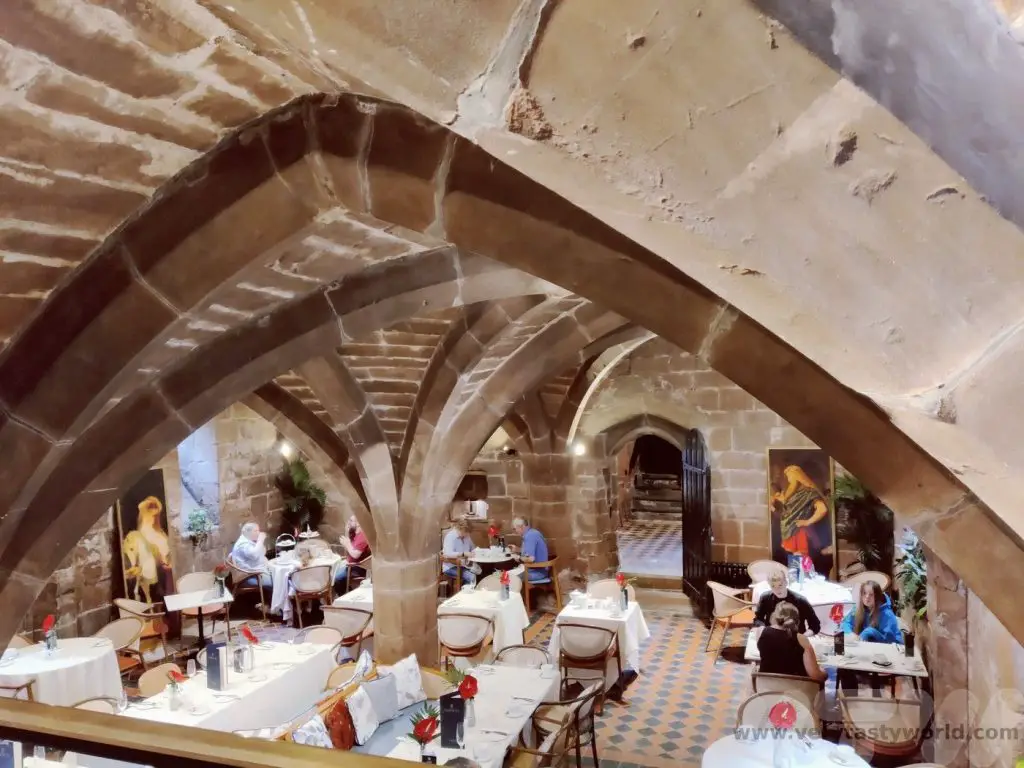
On this occasion we enjoyed a savoury tea. Although afternoon tea is delightful we do sometimes find that by the time you have eaten the scones and the first of the petit fours there is a bit of a sugar overload.

The menu does vary regularly but we enjoyed sausage rolls, pork pies, haddock croquettes, mini quiches and cheese scones amongst other savoury delights
And just a little sweetness with an edible flowerpot filled with mousse and dark chocolate ‘soil’.
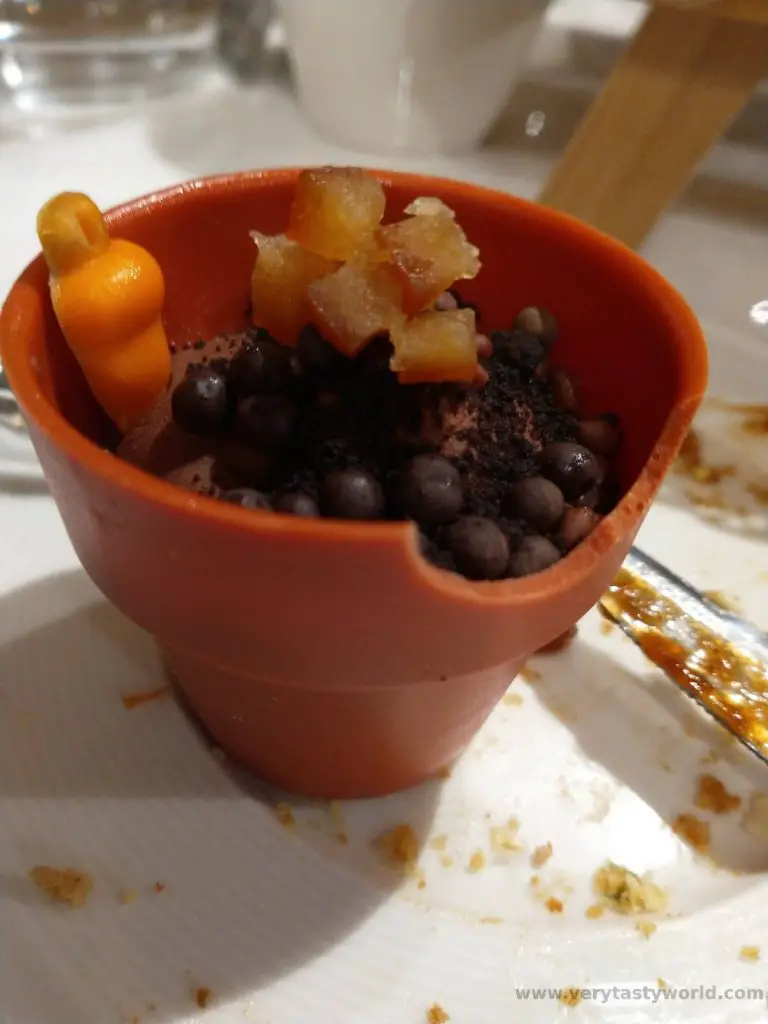
Tales of Tea is very popular so we recommend making a booking. Prices range from £25-£30 depending on whether you want a sweet or savoury tea. (July 2023) The undercroft becomes a fine dining restaurant in the evening.
Other Things to Do In The Area
St Mary’s Guildhall itself is definitely worth visiting so make sure you pop across the atrium from the undercroft.
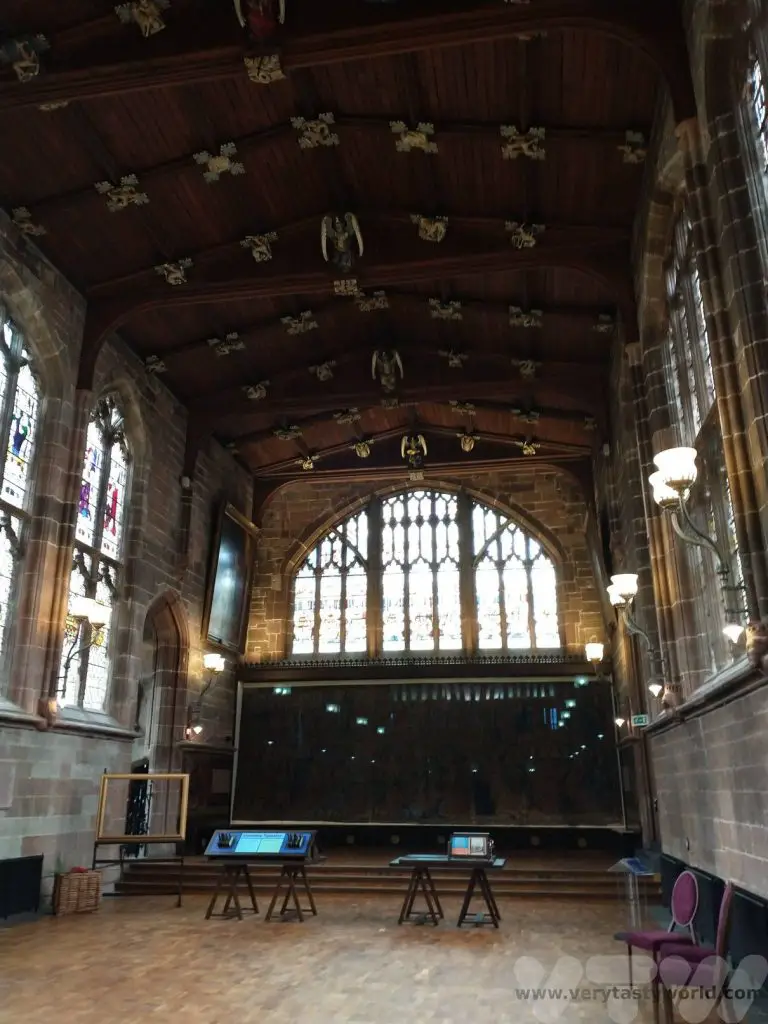
It boasts the England’s oldest mediaeval tapestry, a remarkable work that was woven in its original place – it is over 500 years old.

A recent refurbishment has revealed a mediaeval kitchen now restored to its former glory.
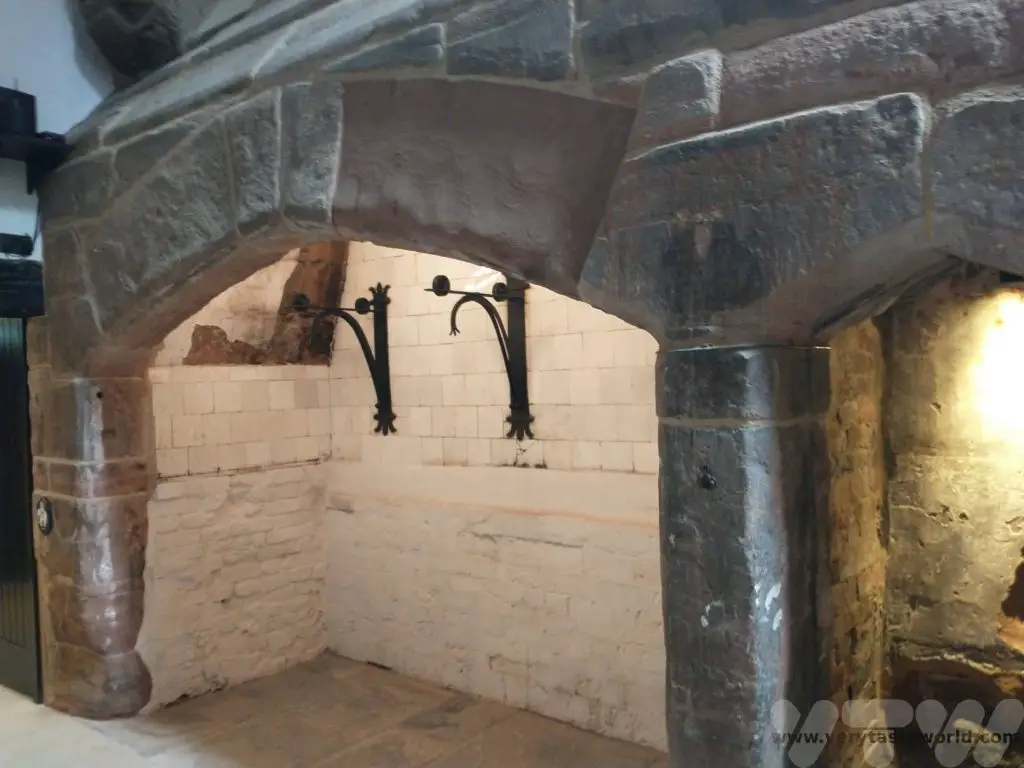
The Guildhall is located next to the ruins of Coventry’s cathedral which itself has a fascinating history. St Michael’s cathedral was constructed in the 15th Century but destroyed in 1941 during the Coventry Blitz in World War 2.

A new cathedral was built alongside the ruins of the old. Both are very much living spaces – both for worship as well as art, music and cultural events that are held throughout the year.

The Herbert Museum and Art Gallery is a 2 minute walk away. It hosts multiple free art exhibitions several times a year and has a permanent exhibition space on the ground floor showcasing Coventry’s history.
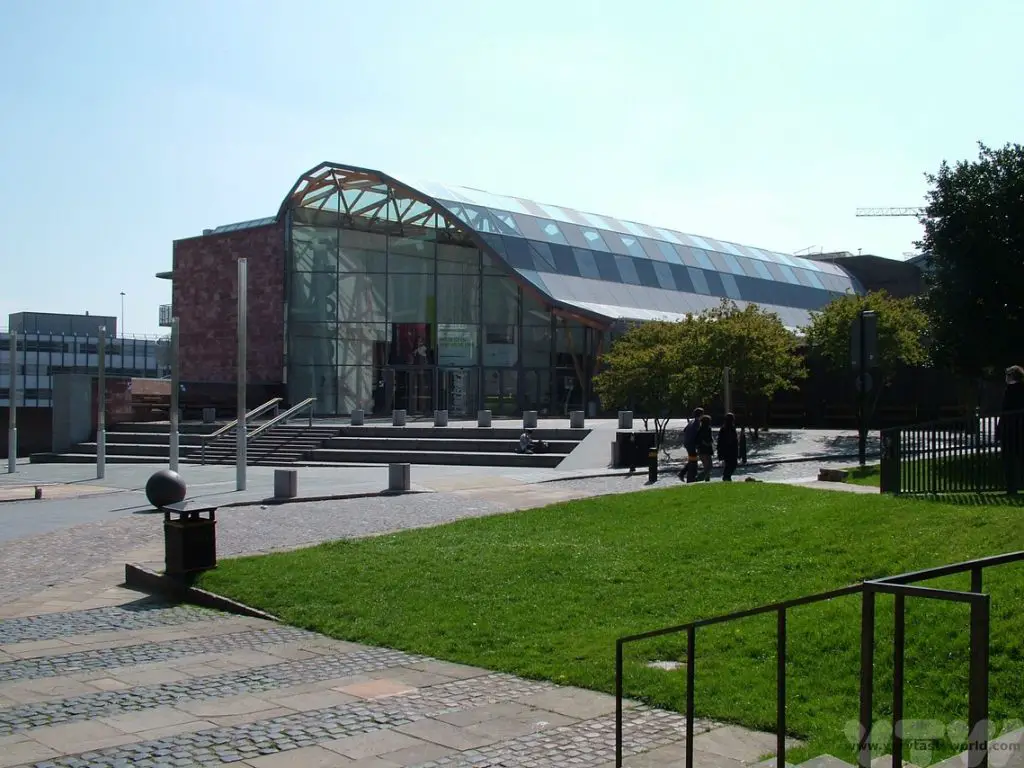
Afternoon Tea in Coventry – Telegraph Hotel
Founded in 1891 as The Midland Daily Telegraph, but with a name change in 1941, The Coventry Evening Telegraph was the city’s first daily newspaper. In times gone by it was a tabloid paper located in a large building in the city centre which housed enormous printing presses. But times have changed and the printing presses are no longer needed, so staff have relocated to the Canal Basin in Coventry. The site was opened up to the public in 2017 and temporarily hosted local art exhibitions.
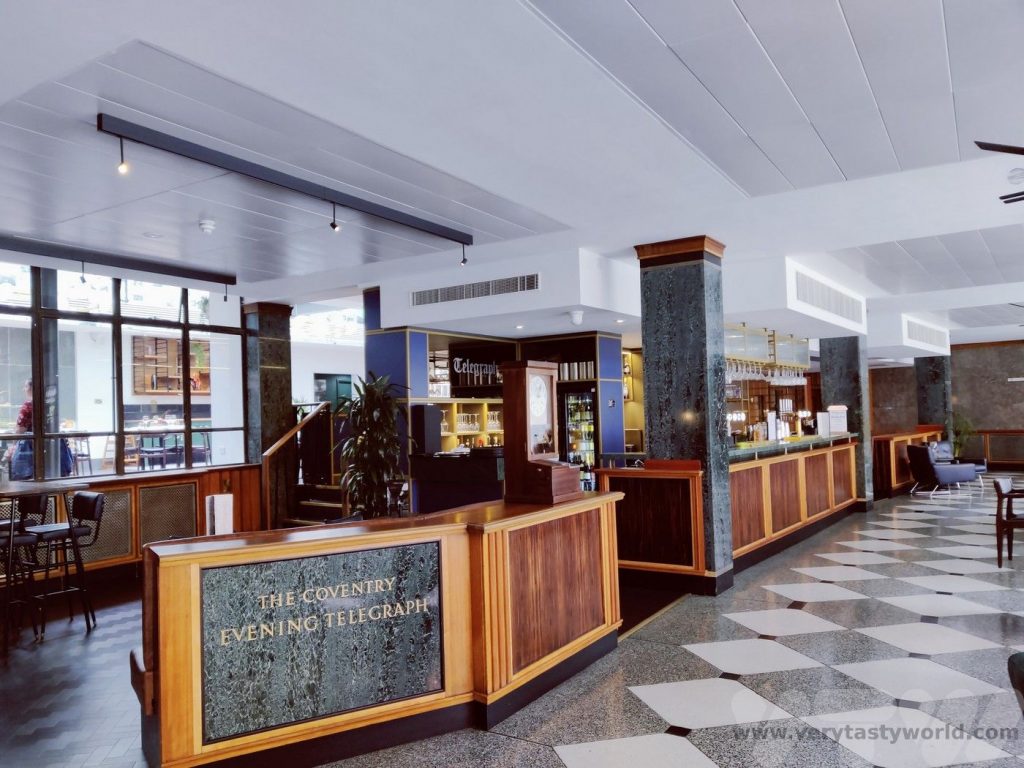
The building has now been converted into a hotel but the decor very much reflects its heritage. Afternoon tea is available. Currently on offer, afternoon tea for two people, with a glass of fizz costs £39.50 (July 2023).
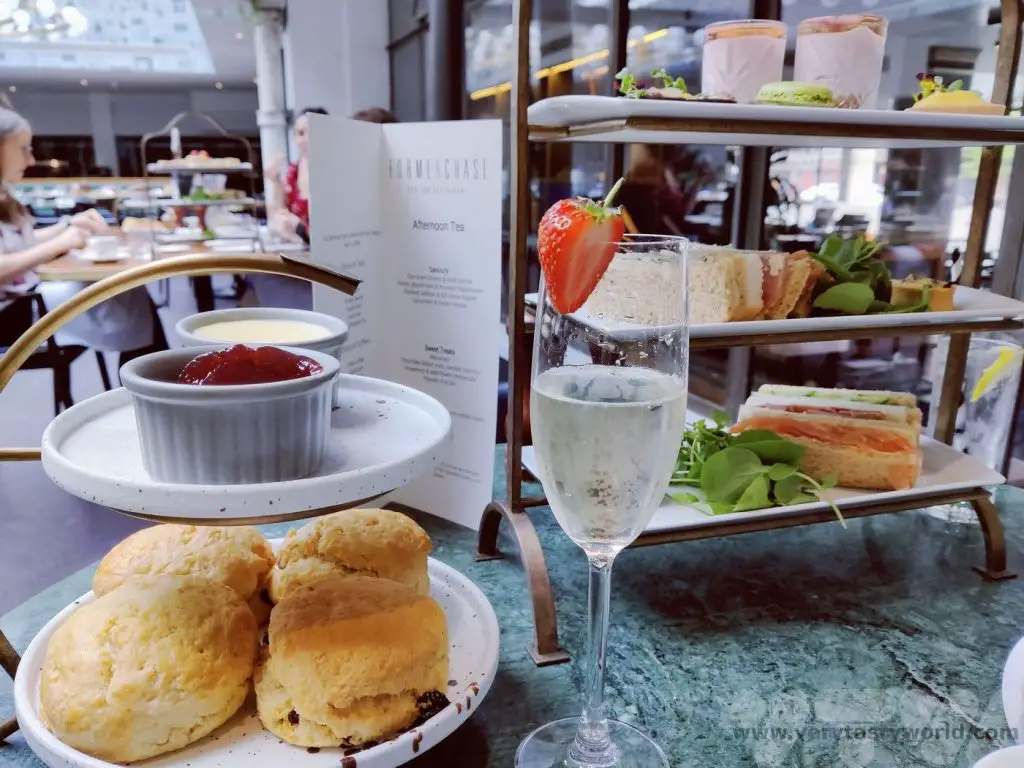

The afternoon tea is more traditional but generous and delicious. The sweet treats included pistachio macarons, chocolate delice with yuzu gel, passion fruit tarts and a strawberry and elderflower cheesecake. The tea was so filling we had to ask for a box to take some scones home with us.
Other Things To Do In The Area
Coventry Transport Museum is around a two minute walk away. It’s a great museum to visit, even if you’re not particularly interested in cars. Coventry was once the city of motor manufacturing and the museum houses a huge number of vehicles from some of the earliest vehicles to land-speed-record breakers.


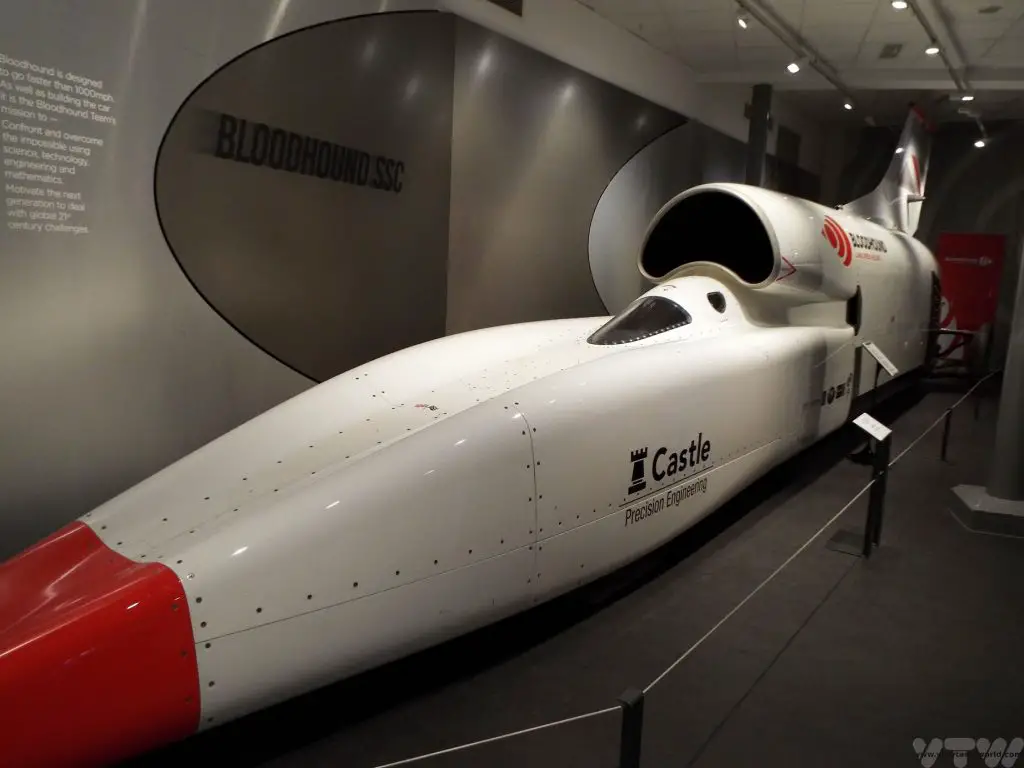
Related Posts You May Enjoy

RECIPE: Vegan Wild Garlic Pesto
Every spring we make the most of foraging for greens in the English countryside. Wild garlic is our absolute favourite and we have a fabulous recipe for wild garlic pesto. But pesto uses cheese! So we also have a recipe for vegan wild garlic pesto.
In the UK you can forage wild garlic for free as long as you just take the leaves, stems and flowers. All these parts are edible. We make it a rule never to take more food than we need as it’s nice to leave some for other people and also ensure that the plant will appear next year. We try to pick one leaf from each stem so as not to disturb the plant too much.
Foraging for Wild Garlic
Wild garlic is pretty easy to recognise and has a very definite garlicky smell. Pick a leaf and crush it in your hand – it has a wonderful scent.
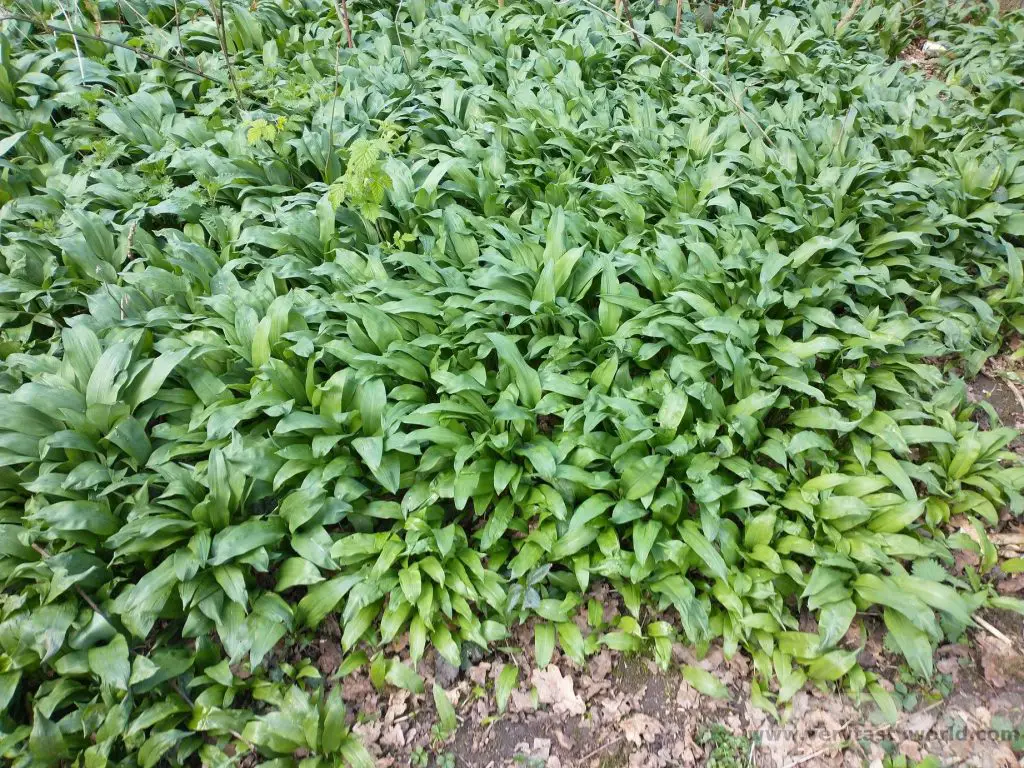
A little later into the season lovely white flowers appear. These have a very mild garlic flavour – we use them to garnish dishes.
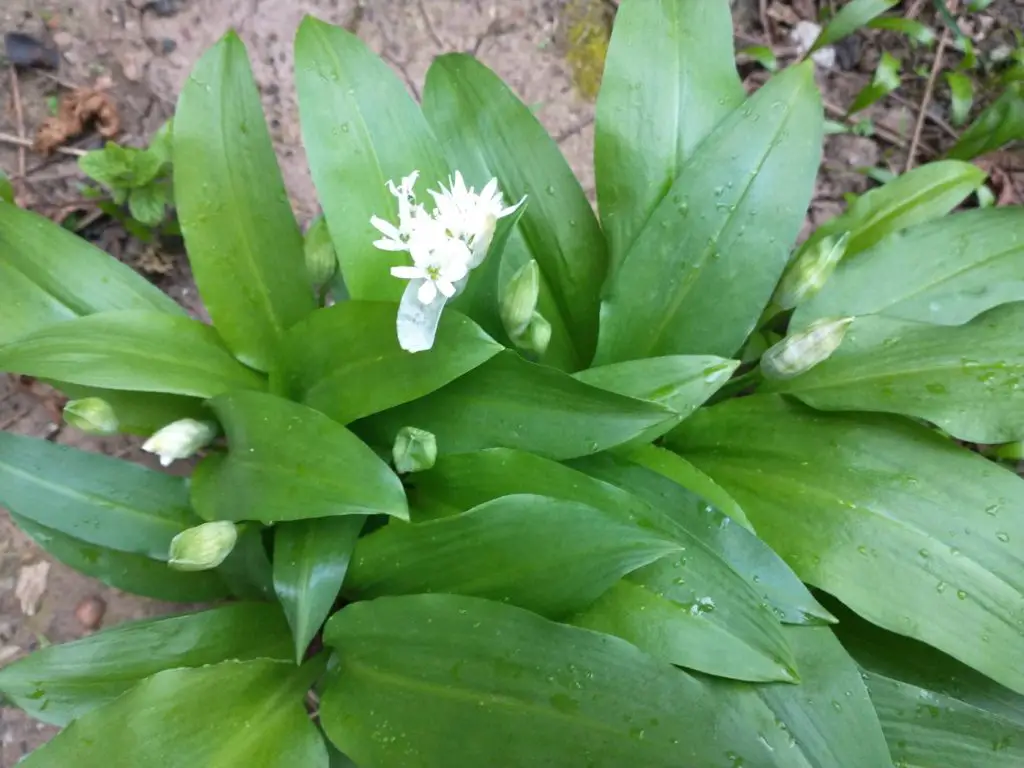
As with any foraging, you have to be 100% certain of what you are picking. Poisonous plants can grow near wild garlic. Arum maculatum, also known as Lords and Ladies, is very toxic. Apparently even putting the leaves into your mouth will result in an immediate burning sensation. It can grows worryingly close to the wild garlic. When it’s more mature it develops shiny arrow-head shaped leaves but when young, looks very similar to wild garlic.
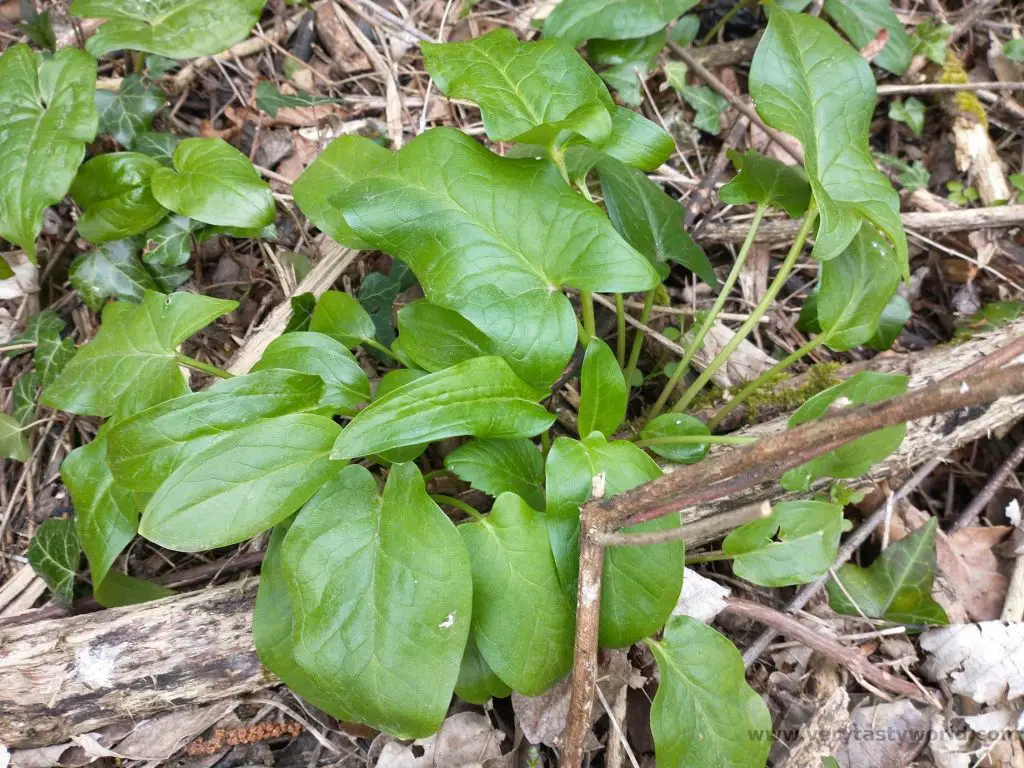
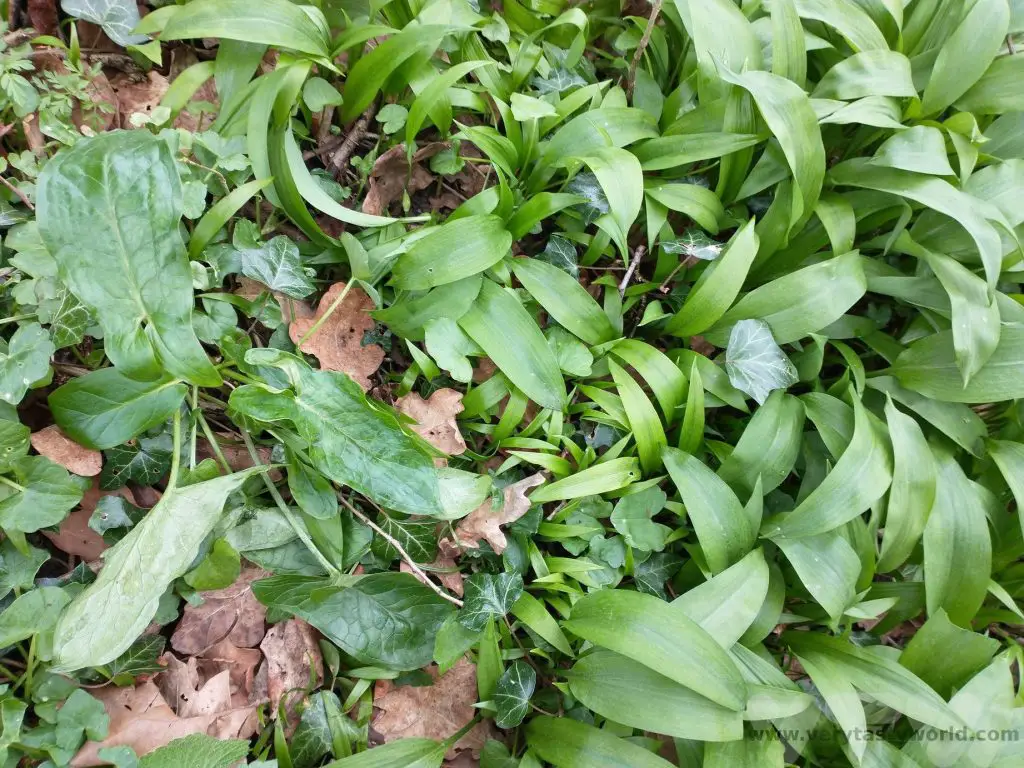
Bluebells, or their white-flowered counterparts, which can also easily be confused with wild garlic’s white flowers, can also grow nearby. Bluebells are extremely pretty but also poisonous.
If you are the slightest bit uncertain, DON’T eat it!
Vegan Wild Garlic Pesto Recipe
Just like our standard recipe our vegan wild garlic pesto isn’t precise. We use cashew nuts but you can also use pine nuts (and weep at the expense) or pistachios. You can use a blender to mix everything together but if you’re feeling hardcore you can use a pestle and mortar.
We use nutritional yeast as a substitute for the cheese. It’s a brilliant product that is really good for you – a great source of protein, fibre, vitamins and minerals. More importantly it has a cheesy flavour, perfect for adding that umami element to the pesto amidst the creamy cashew and heavenly garlicky scent.

Ingredients
Bunch of wild garlic leaves (around 150g)
Handful of cashew nuts (around 150g)
Generous sprinkle of nutritional yeast flakes (we recommend couple of tablespoons if you’re measuring)
Slosh of extra virgin olive oil
Squeeze of lemon
Pinch of salt
Method
Roughly chop the wild garlic leaves and place into a blender. Throw in the nuts and nutritional yeast flakes. We recommend adding the leaves first – to the bottom of the blender – so that the weight of the nuts helps with the grinding process.
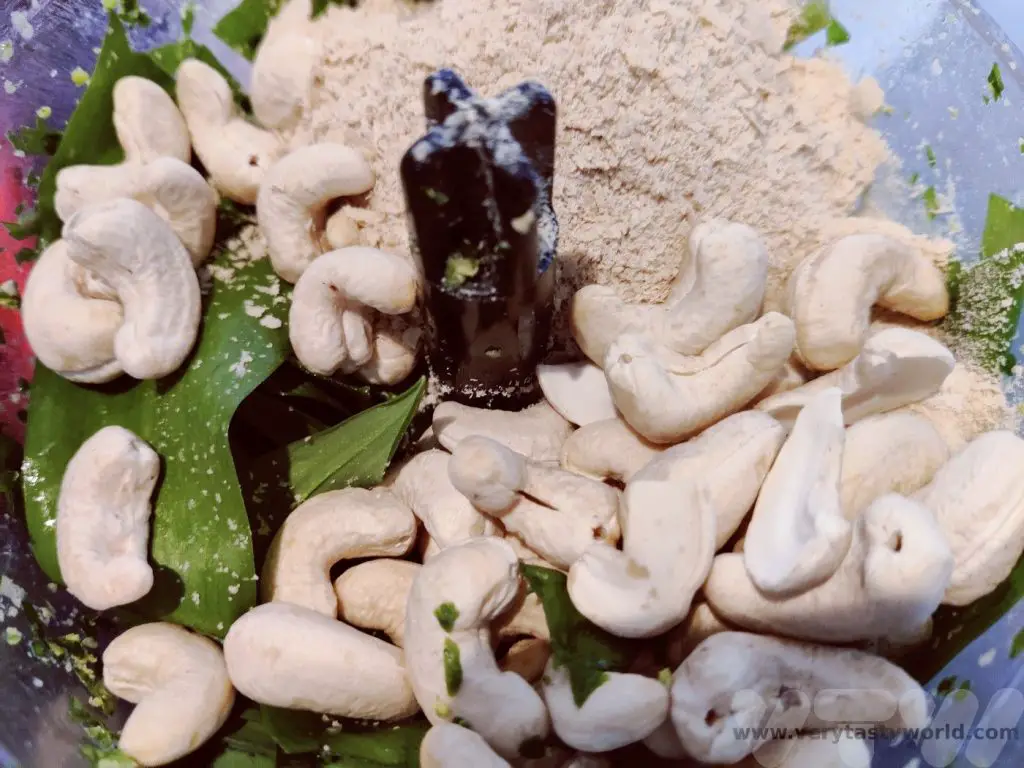
To take advantage of the season we make industrial quantities and freeze it, so we can enjoy the scented flavour of spring throughout the year. We don’t add the oil, lemon and salt before seasoning but stir it in after it has defrosted.
Blend together until you get the texture you like – smooth or nutty – both work well.
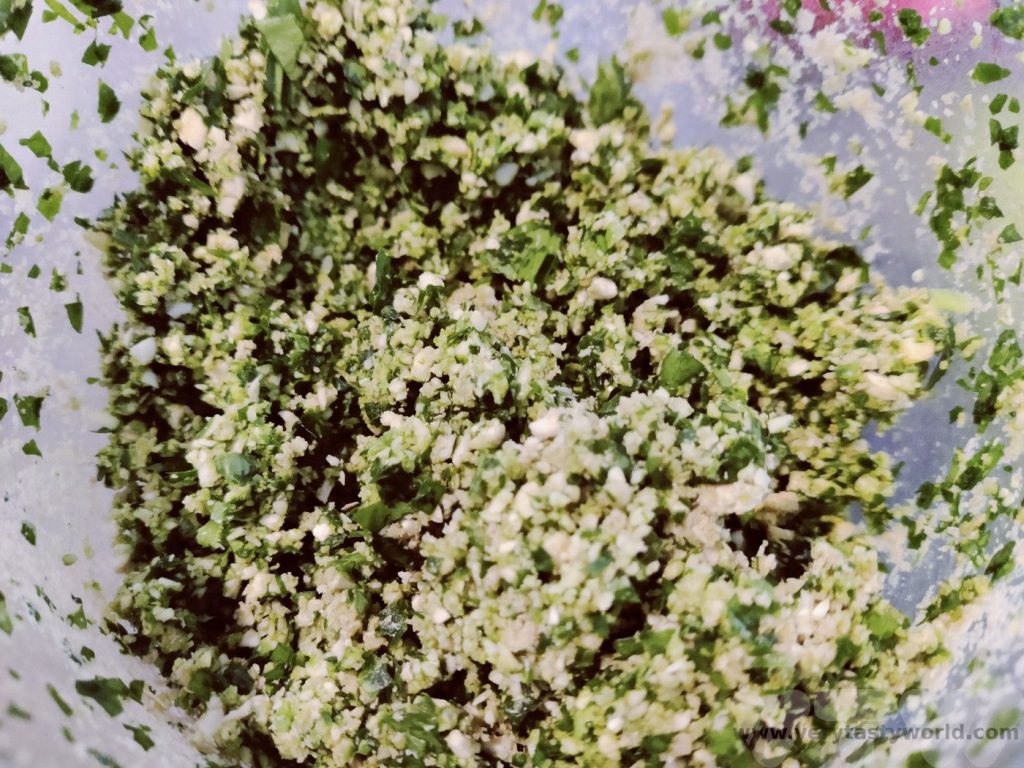
If you want to freeze the pesto, decant it into containers and put it into the freezer. It will freeze well and will last many months.
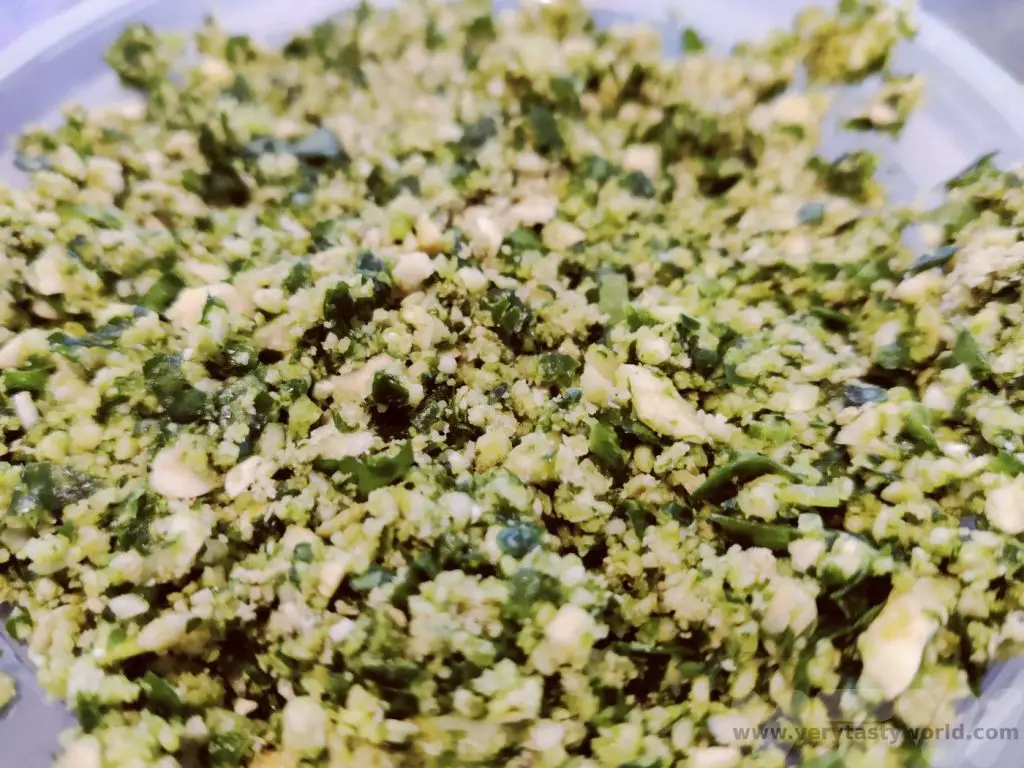
If you want to eat the pesto straight away (or store it in the fridge for a couple of days) add the oil, lemon juice and salt.
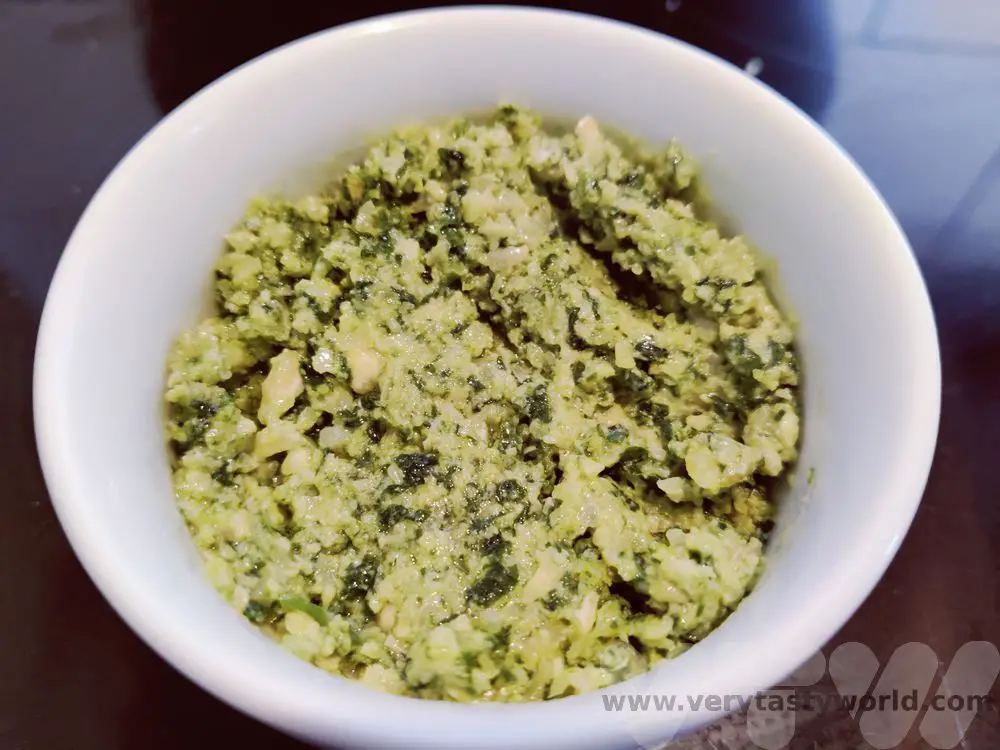
The great thing about this recipe is that is so easily adaptable – you can mix and match ingredients. It’s the underlying gentle garlicky flavour that the wild garlic leaves produce that make this such a brilliant pesto. We’ll be foraging and freezing for as long as the season lasts.
Related Posts You May Enjoy

- RECIPE Oyakodon Donburi
- Zero Waste Recipes Before Your Holiday
- RECIPE: Vegetable Biryani Tamil Nadu Style
- RECIPE: Vegan Wild Garlic Pesto
- Recipe: Venetian Pasta Sauce
- RECIPE: Biryani Raita Recipe
- RECIPE: How to Make Costa Rica’s Gallo Pinto
- Recipe: Japanese Simmered Pork Belly – Buta no Kakuni
- RECIPE: How to Make Umeboshi
A Northern Ireland Road Trip
Northern Ireland is blessed with vibrant cities, beautiful countryside and a stunning coastline. We visited this lovely country as part of a road trip around much of the island of Ireland. We flew into Belfast airport and hired a car which gave us maximum flexibility to explore. Here’s a Northern Ireland road trip itinerary for spending two to three days in this lovely country. It can be extended or compressed, depending on how much time you have and how long you wish to spend at some of the attractions.
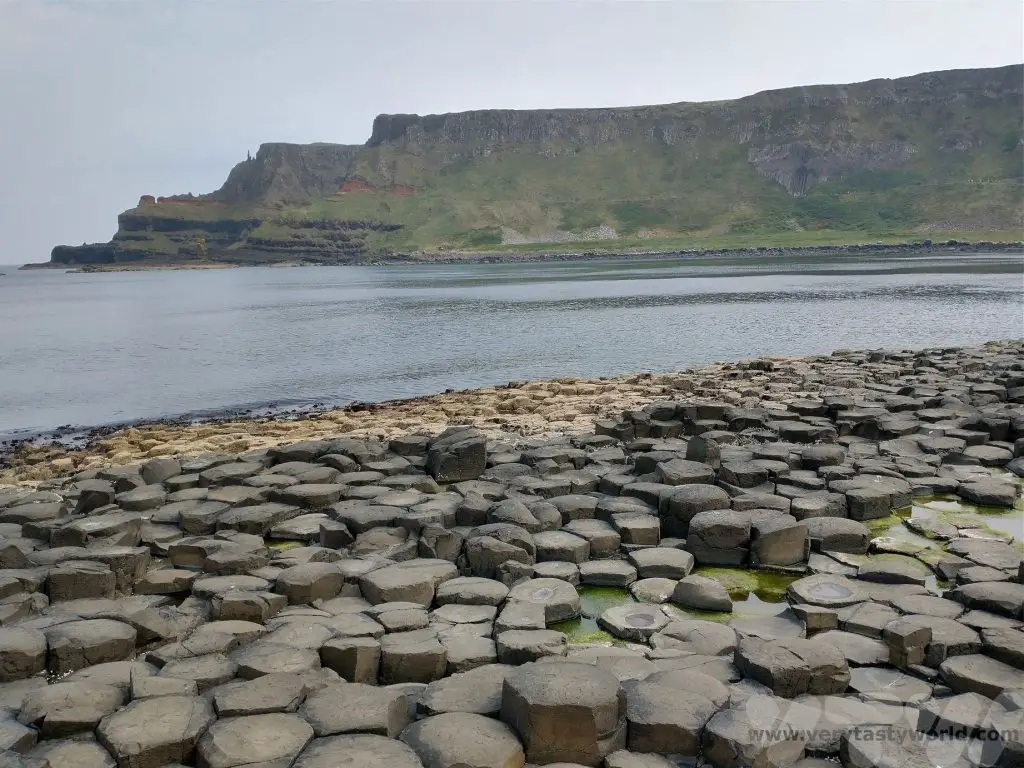
Belfast
Belfast is the capital city of Northern Ireland and is probably one of the liveliest places we’ve visited. The city’s name derives from Béal Feirste which means ‘mouth of the sandbar’. Although there have been settlements in the area since Neolithic times, Belfast town was established in the 17th century by Sir Arthur Chichester. It grew rapidly over the years as a trading centre and industrial hub. Most of Ireland seceded from British rule in 1921 to form the Irish Free State but six counties in the north of the island remained part of the UK and Belfast become the capital city of these.
Arriving in Belfast
We flew into Belfast airport, picked up our car and drove the short journey into the city. We arrived at at 4 pm on a Saturday evening, and the place was already throbbing – bars were full, and everyone was dressed up and ready to go out. A walk through the city was interspersed by raucous mobile bars filled by revellers and fuelled by boozy pedal power.

The following day we spent some time in the city. Belfast is a great place to explore on foot and has a number of impressive buildings:
The City Hall in Donegall Square council building is the civic building of Belfast City Council.

Belfast Cathedral, the Cathedral Church of St Anne, dates from 1899. In the background of the picture below you can see a very thin spire. It’s so slim it looks like a spike. It’s called the Spire of Hope and was designed to be extremely lightweight because the cathedral is suffering from subsidence into the silty mud it was built upon. Hence, with no chance of it having a full spire or bell tower, this elegant, svelte and minimalist spire was installed in 2007.

The Albert Memorial Clock Tower was built in 1869. It was designed by WJ Barre who won a competition to design a memorial to Queen Victoria’s late husband, Albert the prince consort.
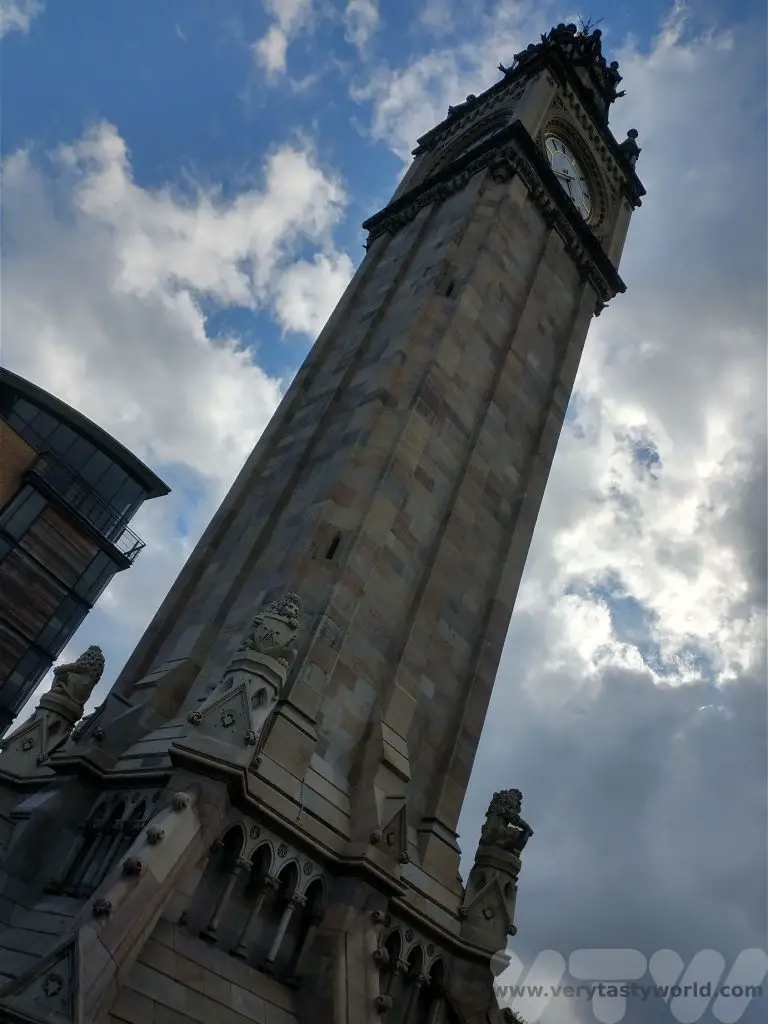
Belfast also has an impressive street art scene.


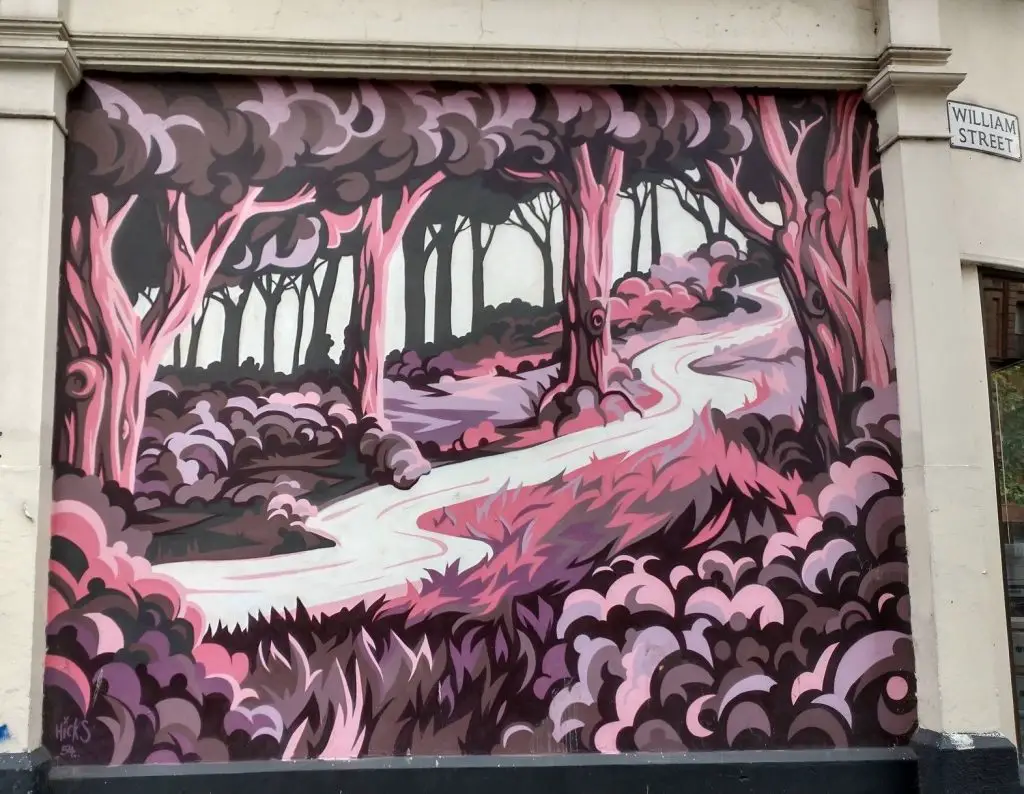

Things to Do in Belfast
The Titanic Experience is Belfast’s most popular tourist attraction. It’s worth setting aside a few hours to spend in this area.

Housed in a gargantuan building located in the Titanic Quarter on the site of the former Harland & Wolff shipyard, visitors can embark on an extensive and highly interactive tour which shows the history of possibly the world’s most famous ship.
The tour depicts the story of the ship from its conception to the discovery of the wreck in its watery grave. It sets the narrative in the social context of Belfast’s history, notably its industries and particularly its shipyards. It also shows the construction process and includes a gentle theme park style ride through a mock-up of the shipyard.
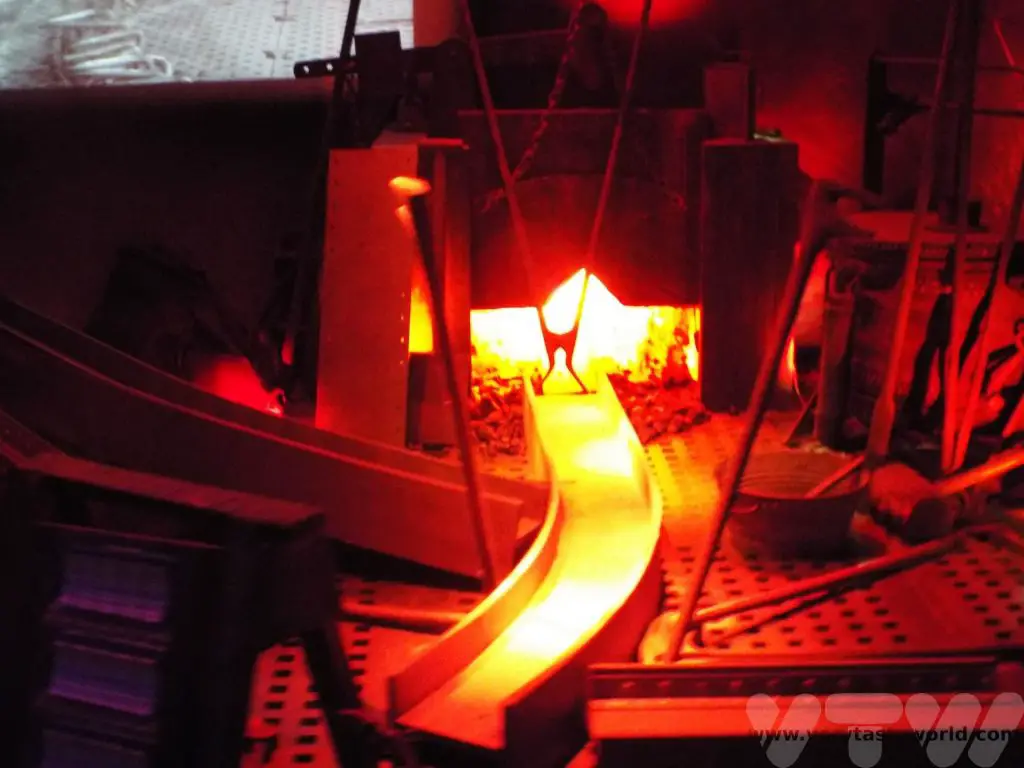
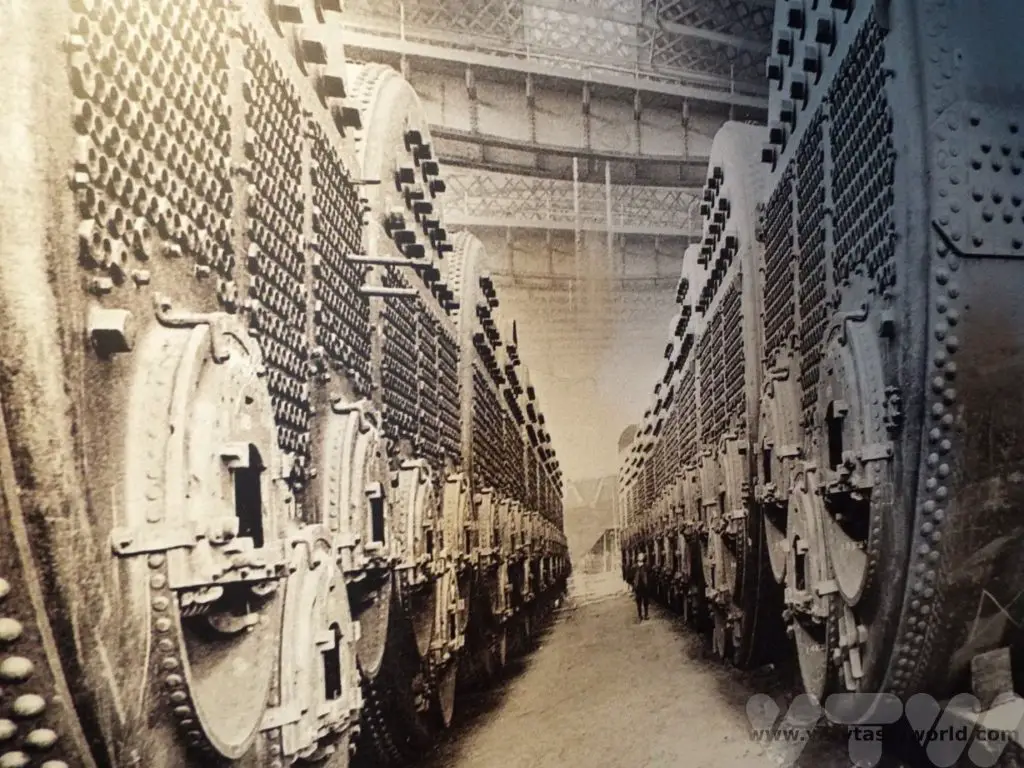
There are detailed displays showing how the ship was fitted out. It was interesting to learn about the facilities that were available for the different classes of passenger.
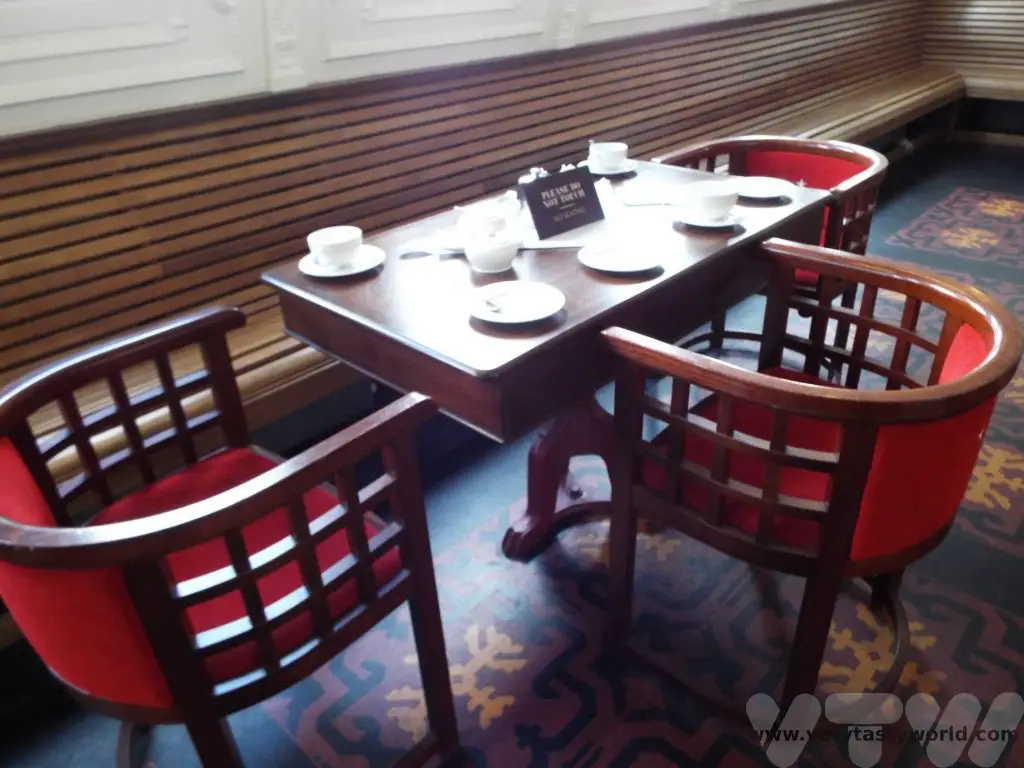
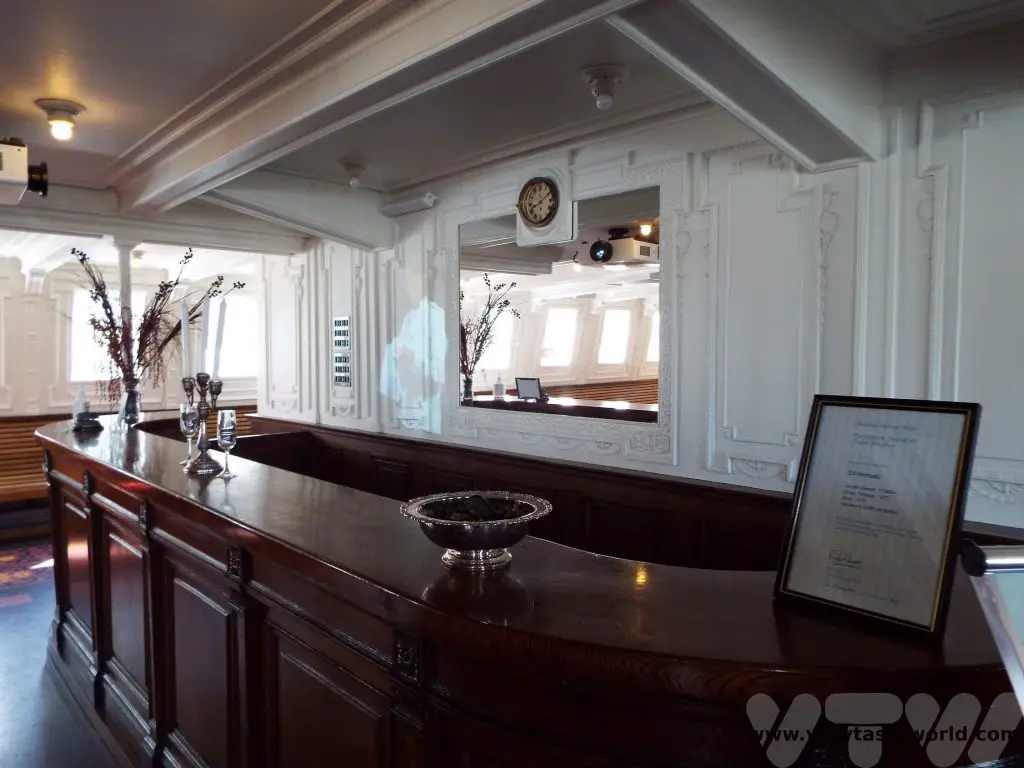
It provides information about the launch and the Titanic’s disastrous maiden voyage as well as the search for the elusive wreck, which was discovered many decades later, and the depiction of the disaster in the media and on film.
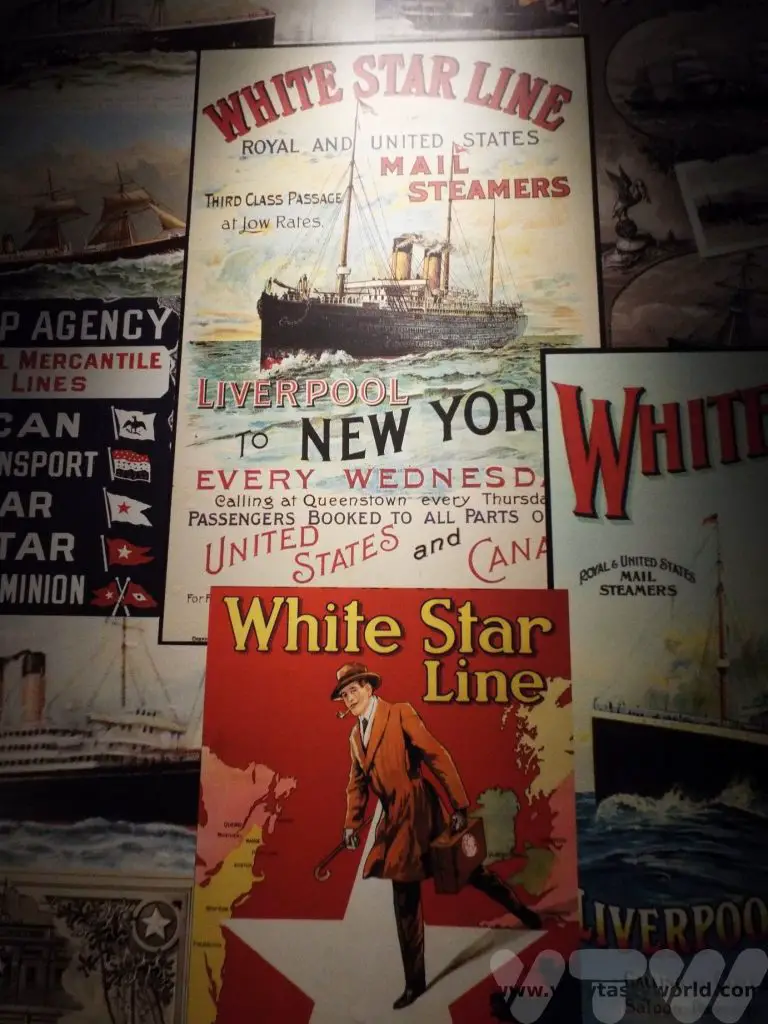

Included in our ticket price was a visit to the SS Nomadic which is located in a dry dock outside the main building. This was another White Star Line ship (the last surviving in the world), built at the same time as the Titanic but exactly one quarter of the size.
She was the tender ship which transferred passengers from the docks in Cherbourg to the Titanic. Because of its size the Titanic itself was moored in deep water away from the shore.
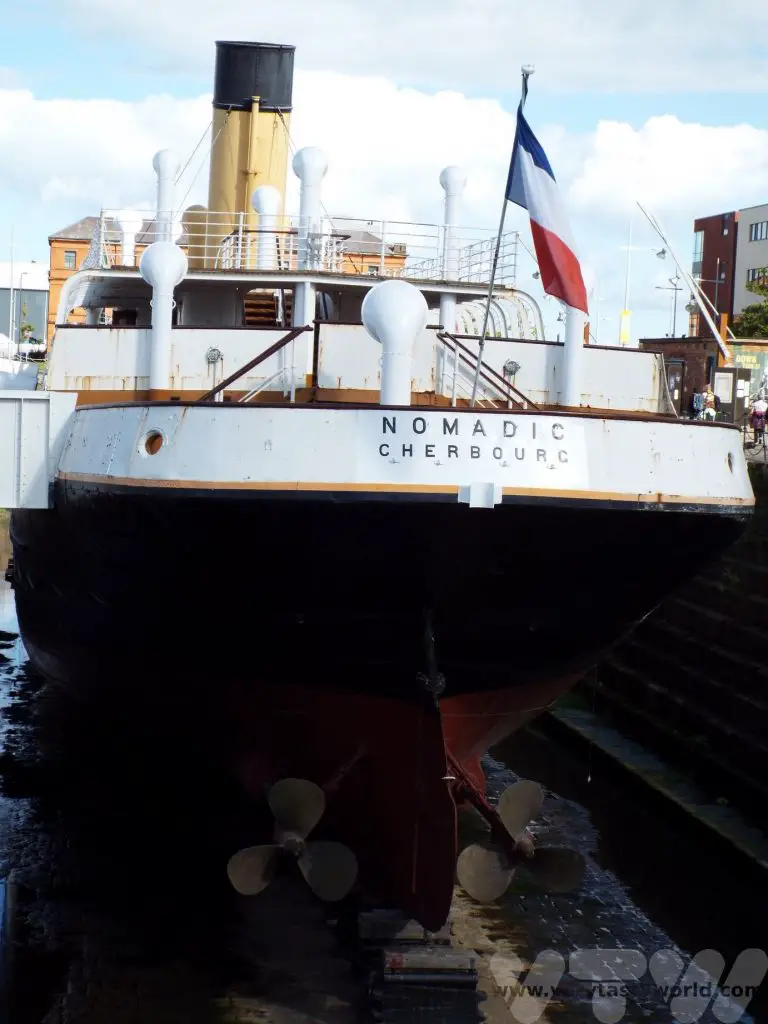
Since our visit, the Titanic Experience has been revamped and the reimagined experience, with an emphasis on telling the story of many of the people involved with the Titanic, launched in March 2023.
While you’re in the area, the Maritime Mile on the waterfront has a lot to discover, from historic attractions showcasing the area’s maritime history, art installations and a bunch of restaurants and shops.
Other Belfast attractions include the Crumlin Road Gaol, a prison that was operational between 1845 and 1996. It has been renovated and is now open to visitors.
Ulster Museum offers an extensive collection of artefacts, covering history, science and the natural world, as well as an art gallery.
Game of Thrones
With so many beautiful locations, it’s easy to see why this country has a thriving film and television industry. Northern Ireland offered one of the primary settings for the filming of the popular TV series Game of Thrones. Producers HBO hired Titanic Studios, a building located just behind the Titanic Experience, for much of the filming and they also used exterior locations dotted all over Northern Ireland.
If you are looking to see all the Game of Thrones locations there are several tours available in Belfast or, if you are driving yourself, you will spot loads of brown tourist signs on the roads indicating where to visit. Just south of Belfast is the Game of Thrones studio tour for fans of the show.
The Titanic Quarter has some Game of Thrones stained glass windows located along the waterfront as a tribute to the series.


Driving To The Antrim Coast
We decided to spend a day on our Northern Ireland road trip driving from Belfast to Derry visiting many attractions along with way.
We headed out from Belfast to the Antrim coast, taking a quick detour to the Dark Hedges. This is an avenue of gnarled and twisted beech trees which were planted in the 18th century, one of many locations made famous by Game of Thrones. The trees are located on the Bregagh Road, Stranocum – follow the brown road signs to a car park which is very close by.
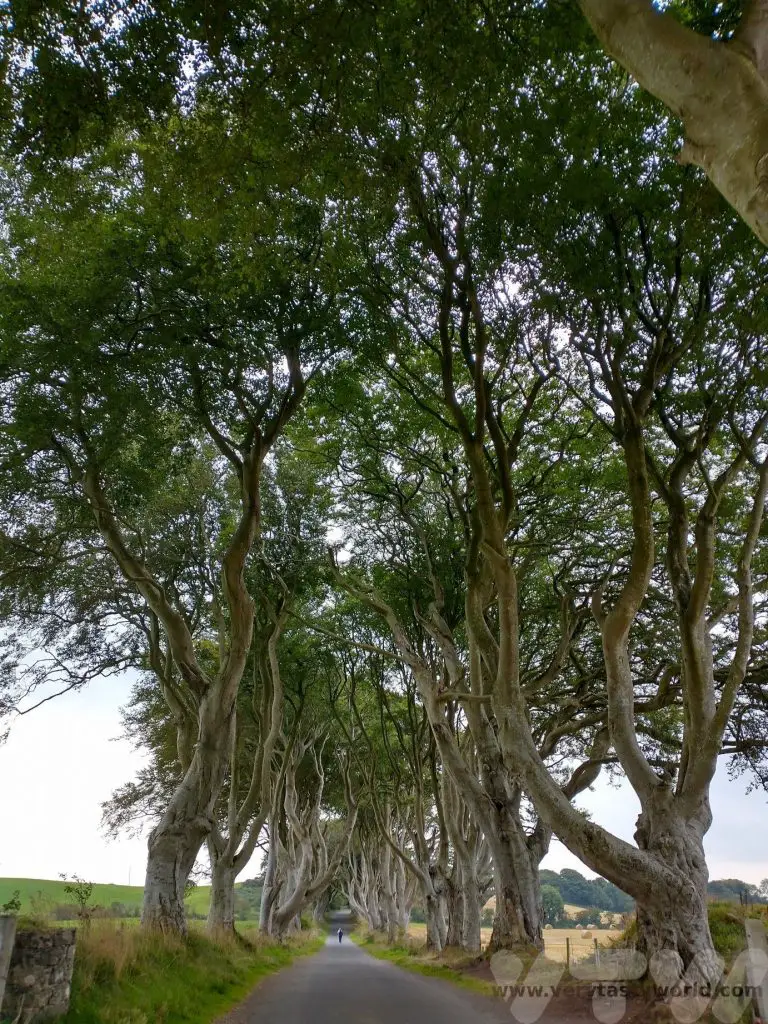
The Antrim Coastline is a place of great beauty and it’s a pleasure to drive along it. There are two locations that are unmissable.
Carrick-A-Rede Rope Bridge
The Carrick-A-Rede rope bridge was originally constructed by salmon fishermen over 350 years ago, it links the mainland with the teeny island of Carrickarede. The bridge has been rebuilt several times over the years. The current bridge is 20 metres across and is at a height of 30m above the sea.
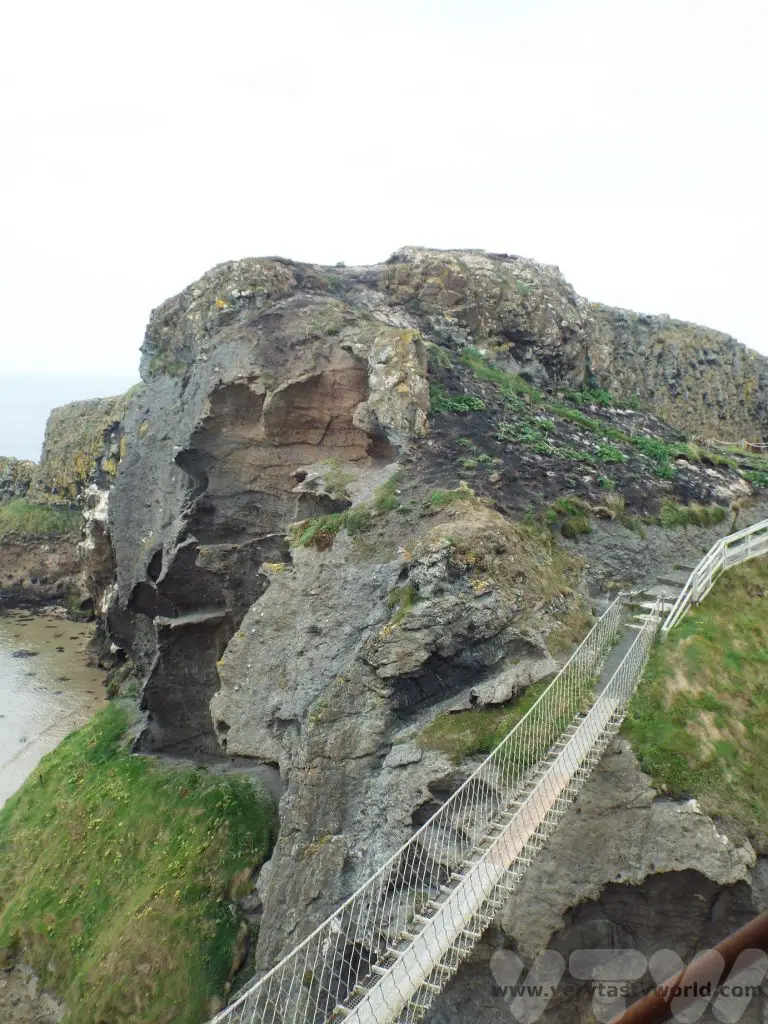
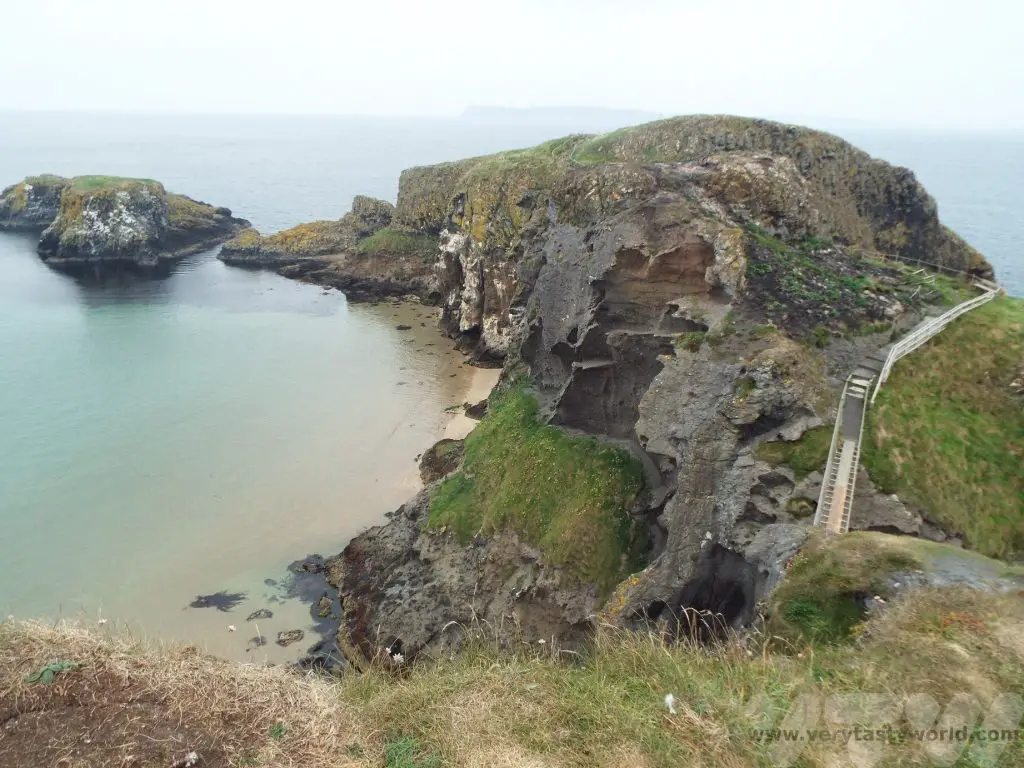
The car park is located on the North Antrim Coastal Path, just under a kilometre from Ballintoy village. Visitors need to prebook in order to cross the bridge. There is a car park (a fee applies) and the island is located along a coastal path – just follow the signs.
Sometimes the bridge is closed so it’s worth checking the National Trust website before visiting. Even if you can’t use the bridge it’s a stunningly beautiful walk along the coastline.
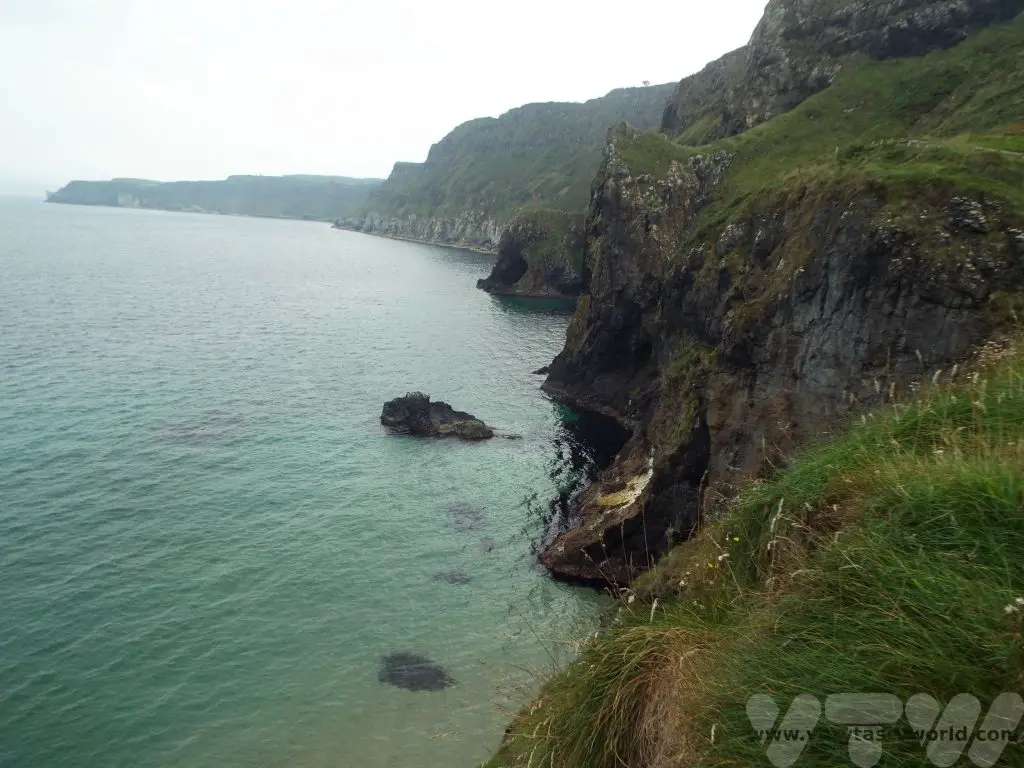
Giant’s Causeway
Around 11km along the coast from Carrick-A-Rede, the Giant’s Causeway was one of the attractions we had most wanted to visit on our trip. Mitch’s Geography A-level is entirely to blame, as it has been for all sorts of geographical attractions that we’ve visited over the years, from glaciers to oxbow lakes. Northern Ireland’s only UNESCO heritage site, the Giant’s Causeway is a wonder of nature.

It comprises some 40,000 basalt columns, largely in hexagonal shapes, that all interlock. They formed over 60 million years ago following volcanic eruptions which forced the layers of molten basalt to develop and then solidify on the chalk beds. As the lava cooled it contracted to form the columns, the relatively even rate of cooling determining that the liquid basalt settled into the characteristic shapes. But the cooling wasn’t totally uniform, so while most of the columns on the causeway are hexagonal, there are a few with more sides.
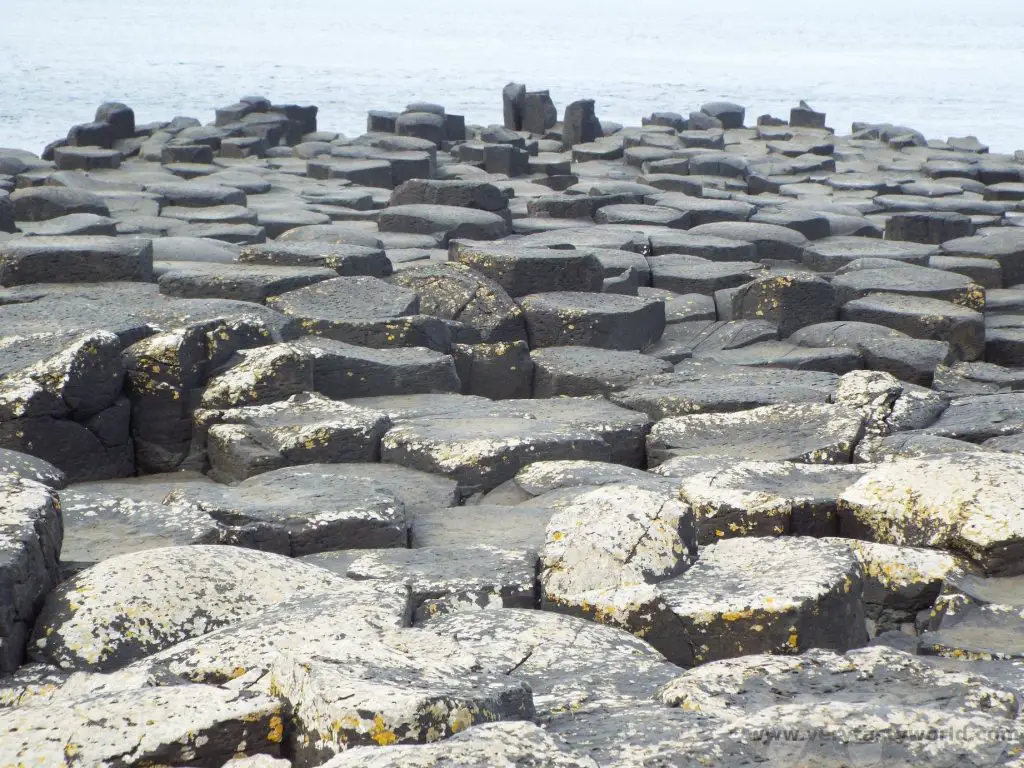
The causeway really is marvellous and, unsurprisingly, this is the most Instagrammed spot in Ireland. It’s possible to walk on the basalt columns themselves and there are a number of short hikes in the area that will take you to and from the visitor’s centre. Make sure you wear suitable walking shoes, the causeway can get slippery.
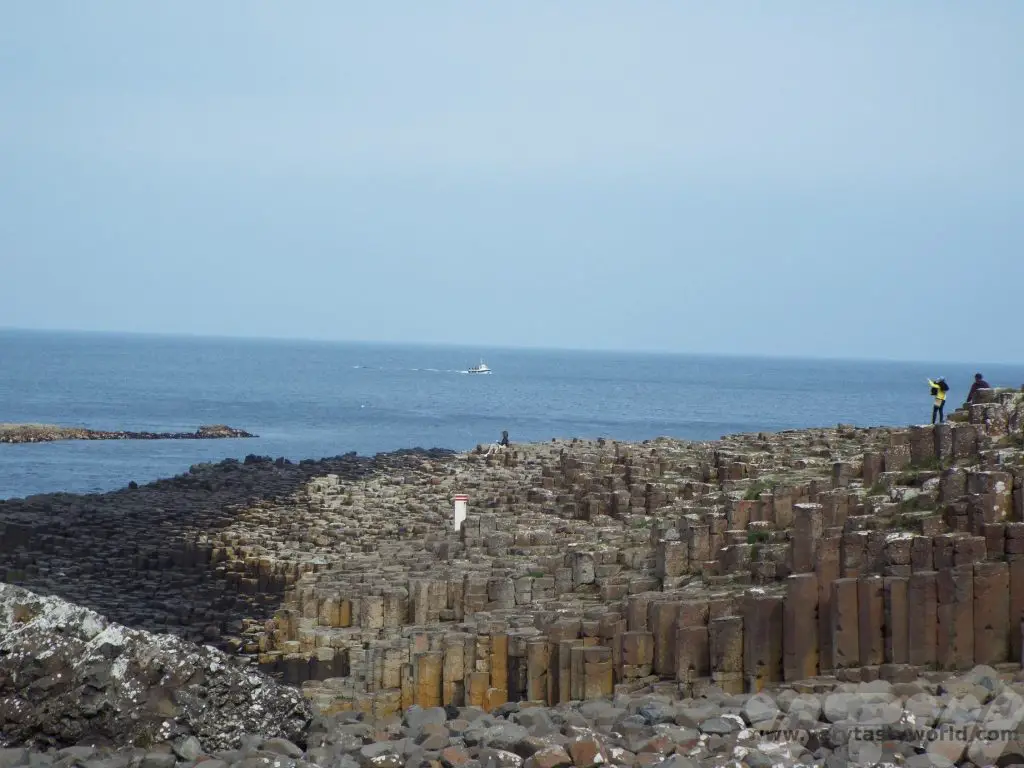
But alongside the geological wonder lies a legend. The giant of the eponymous causeway is Finn Macool who built it in order to take on rival giant Benandonner from Scotland. But Macool later learned that Benandonner was a much larger giant and would have presented a real challenge in a battle. So Finn’s wife had a very clever idea.
When they heard about the imminent visit from his rival she wrapped Finn up in baby clothes and placed him in a giant cradle. Benandonner arrived and was informed that Finn was not at home. And he was so shocked at the size of a ‘baby’ giant, he figured that the adult Macool must be enormous so he fled Ireland, destroying the causeway behind him to ensure that Finn wouldn’t follow.
Further Finn Legends
Finn was also the giant reputed to have scooped out a large portion of soil in Northern Ireland to chuck at his Scottish rival. Unfortunately he missed and it ended up in the sea, forming either the Isle of Man or Ailsa Craig. The scooped out hole in the earth became Lough Neagh.
There are all sorts of other legends about the various rock formations in the area. Finn’s giant camel, which was apparently his only form of transport when he wanted to cover long distances, can be seen on the approach to the causeway. Sadly it was turned to stone. There is most definitely a camel-shaped rock in the picture below.
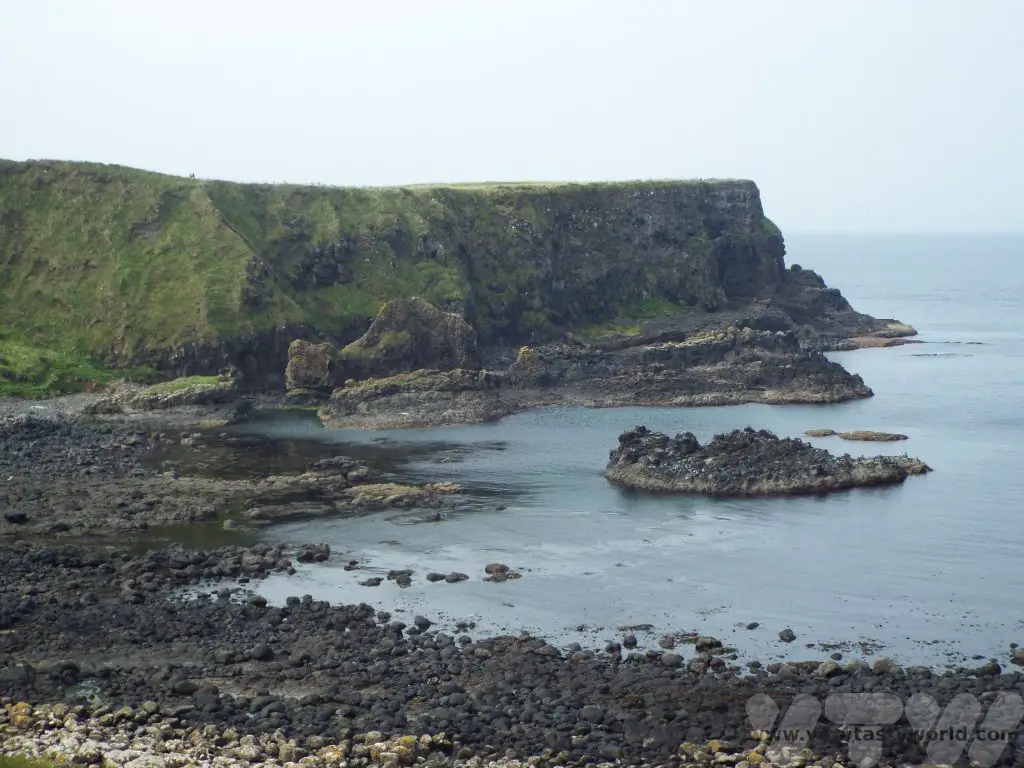
And apparently he used to play the organ – there are organ pipes on the headland overlooking the causeway, which are also basalt stacks.
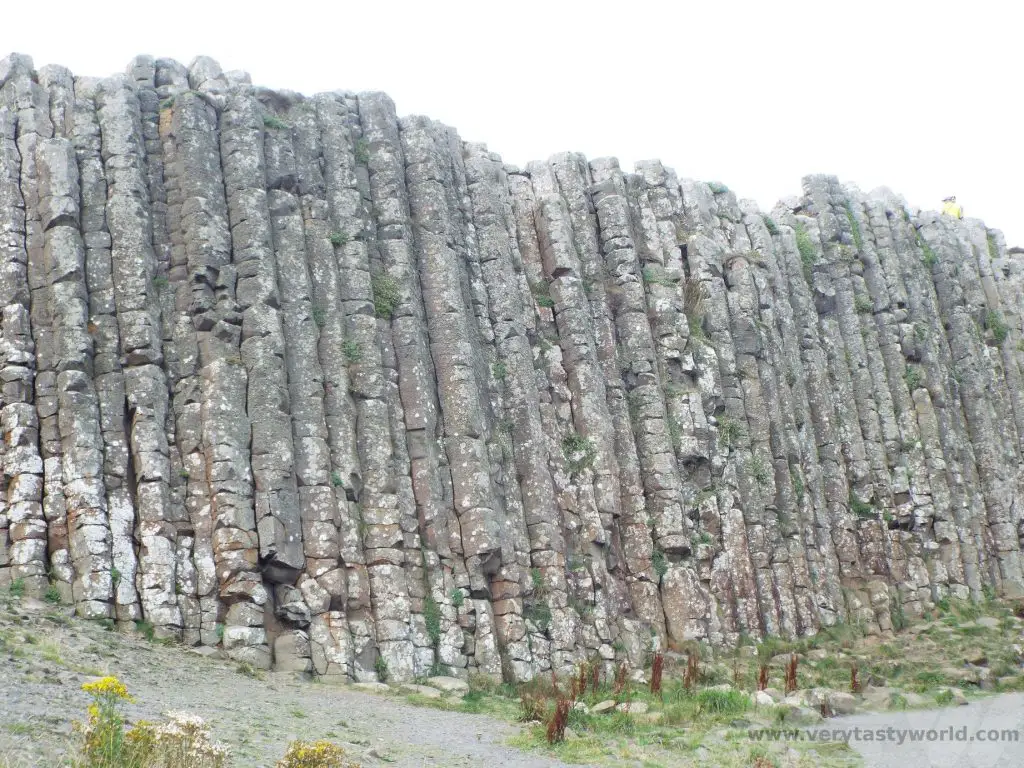
The Giant’s Causeway is a National Trust site, so members can visit and park for free. It’s advisable to pre-book tickets online, especially if you want a space at the local car park if travelling by car. The visitor’s centre has lots of information about the site and runs free guided walks for visitors – you are provided with a headset, because it can get very windy, and this ensures you can hear the commentary. We recommend a tour as the guides provide loads of geological information as well as stories of the giant’s legends.
Bushmill’s Distillery
Moving inland, Bushmill’s is Northern Ireland’s best known whiskey distillery and the oldest working distillery in the world. It dates from 1608 when King James granted a licence and is named for all the mills located on the nearby River Bush. It offers distillery tours and tastings.
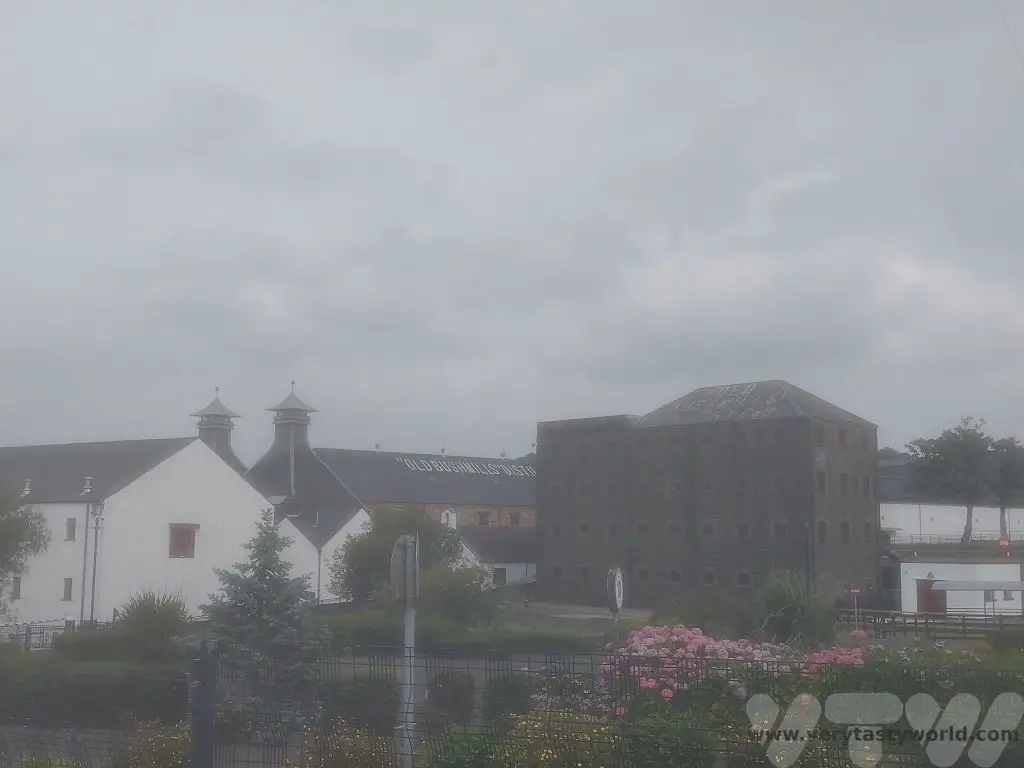
Old-Fashioned Seaside
If you’re looking for a bit of beach time, head back to the coast and then travel west to Portstewart or Portrush which are both popular locations. Portrush offers amusement parks and arcades whereas Portstewart enjoys a long beach with promenade. Portstewart also boasts Morelli’s ice cream parlour, established in 1927, which has a fantastic reputation for really good ice cream.
Derry
Continuing in a westerly direction we arrived at Derry – also known as Londonderry. It is the second largest city in Northern Ireland.
This is the only city in Ireland to have retained its original walls and is considered to be amongst the best walled cities in Europe. Walking the city walls is an essential activity in Derry.
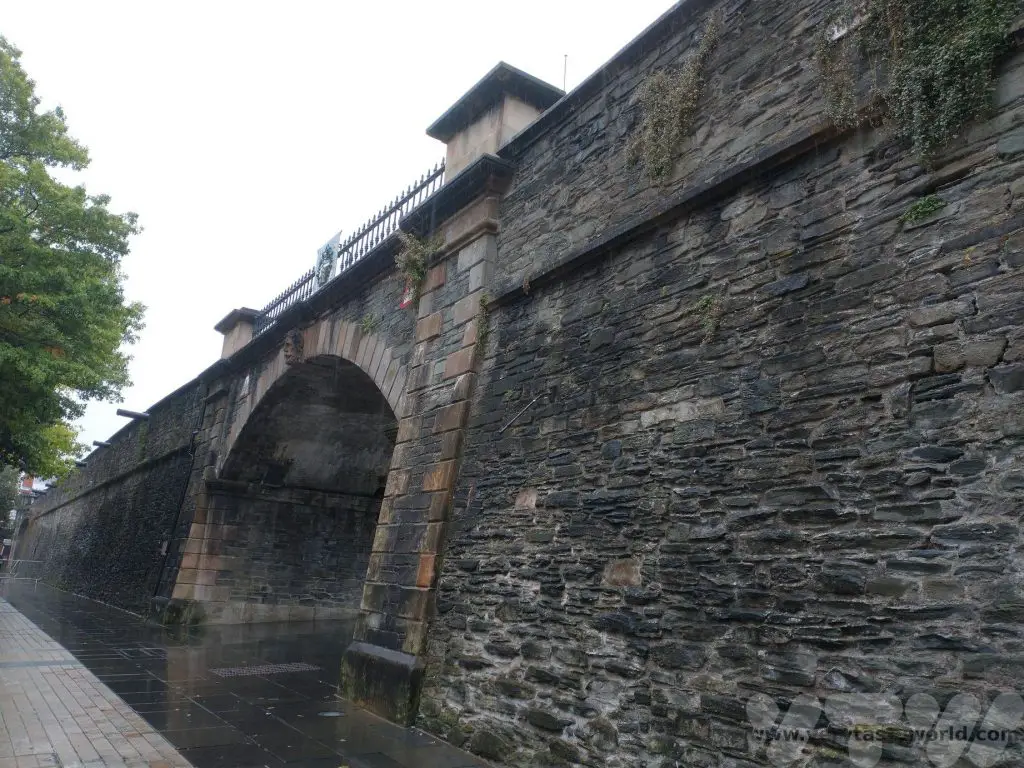
The walls were built in the 17th century by the Irish Society in order to protect the city from English and Scottish settlers. The Siege of Derry started in 1689 when apprentices locked the gates against invading forces loyal to James II. Eventually, the king himself arrived to demand a surrender but the citizens refused. The siege lasted several months and the walls were never breached – ships on the river Foyle eventually managed to get supplies to the hungry but stubborn Derry folk.
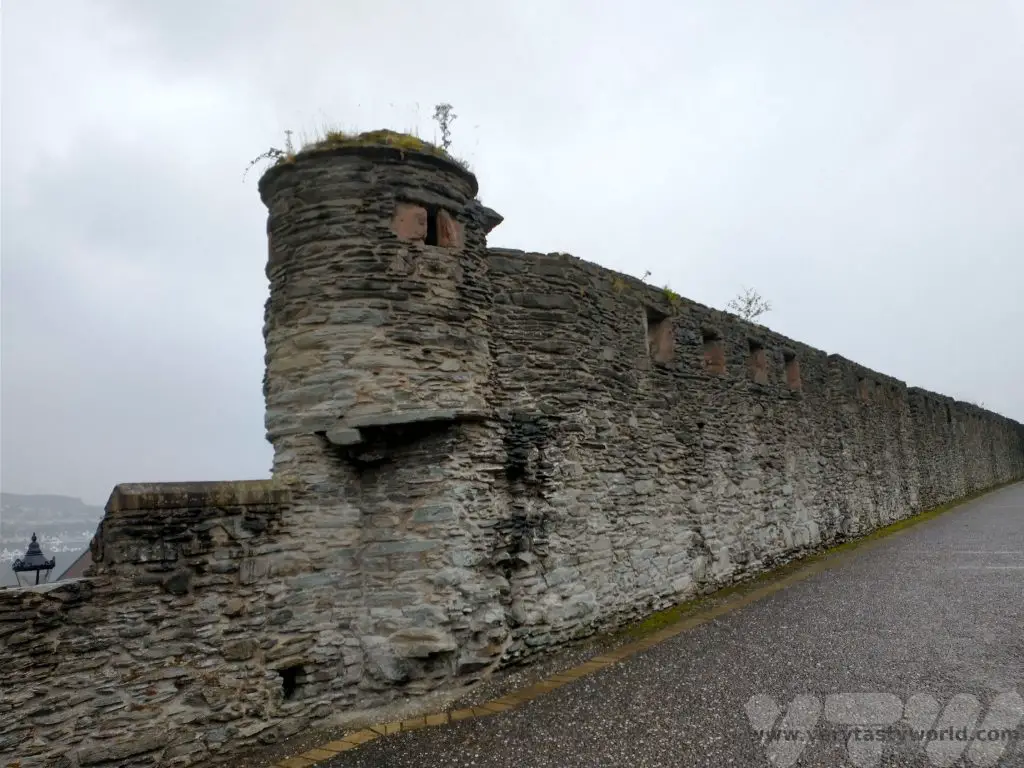
The city walls are around 1.5km in length and take around 20-30 mins to walk around. There are seven gates: Shipquay Gate, Butcher Gate, Bishop’s Gate and Ferryquay Gate are the four original gates, with New Gate, Castle Gate and Magazine Gate being added later. Many defensive cannon can still be seen.
St Columb’s cathedral is is dedicated to Saint Columba who was an Irish monk who set up a Christian settlement to the area and then brought Christianity to Scotland after being exiled from Ireland. Construction on the cathedral started in 1628 and it is the first cathedral to have been built following the Reformation in the UK.
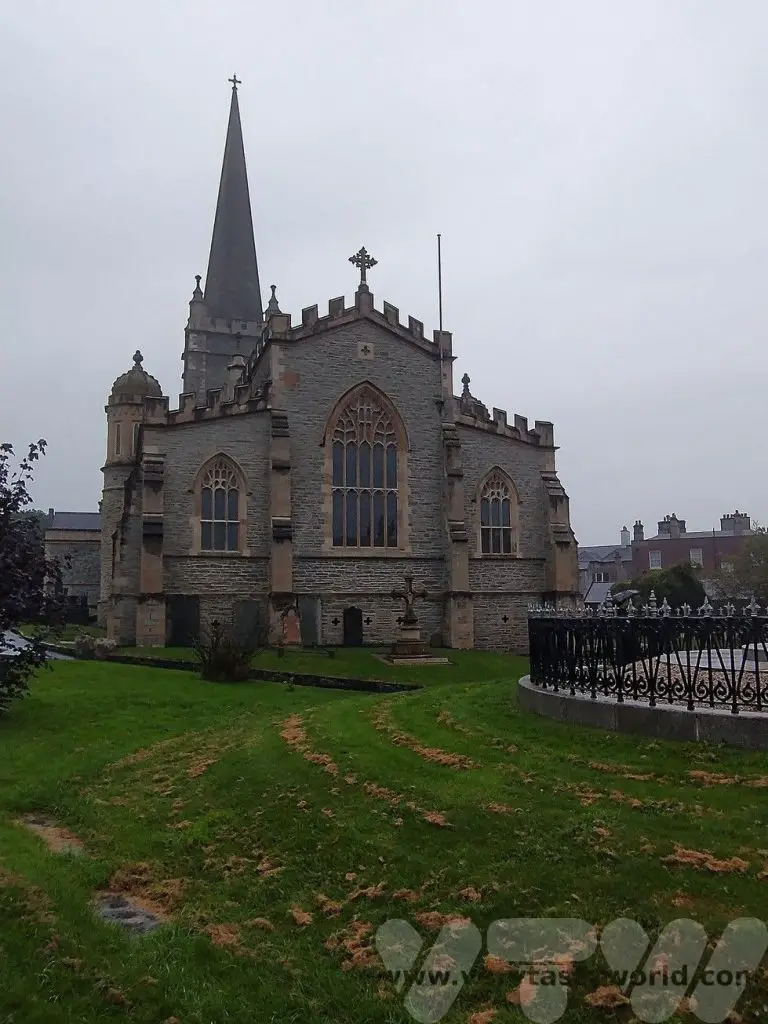
Derry’s beautiful Guildhall is where the city council meet. Completed in 1890 the design of the distinctive clock tower was influenced by the Elizabeth Tower in London, more commonly known as Big Ben (which is actually the bell of the great clock).

Derry has a history of sectarian tension and is the place where the conflict known as the Troubles began. The Battle of the Bogside took place in 1969 and this area was also the location of the Bloody Sunday incident in 1972. The Museum of Free Derry is dedicated to the struggle for civil rights in the region in the context of the creation of Free Derry in the 1960s and 1970s.
The street art has a political edge.



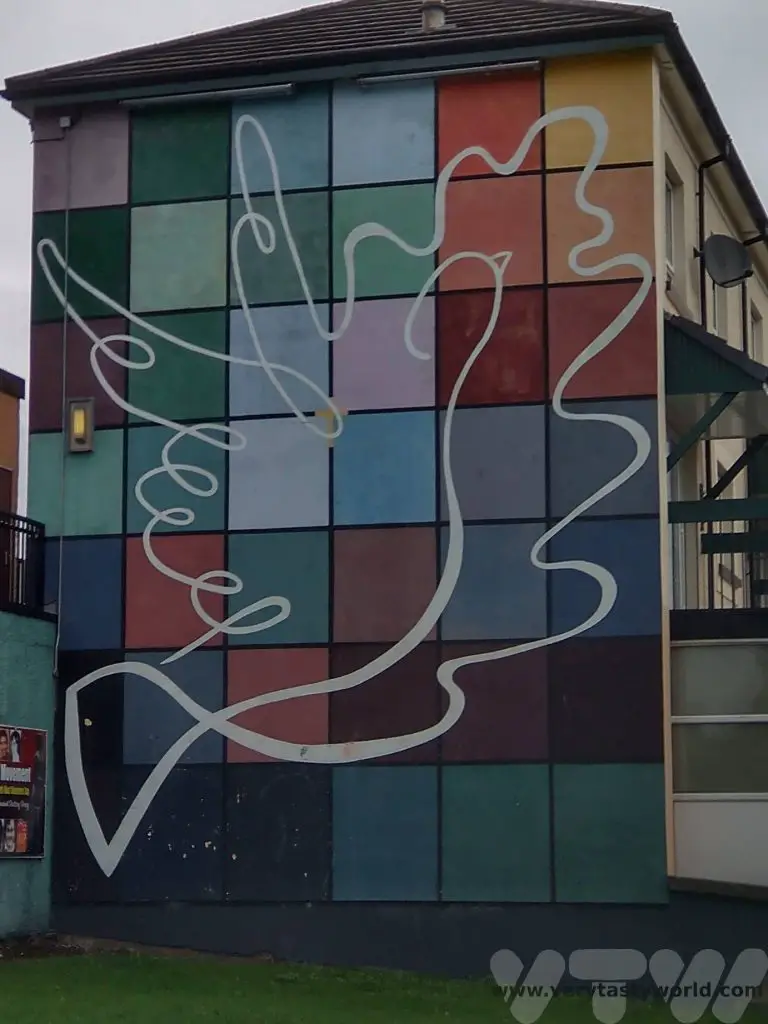
Free Derry corner is a landmark in the Bogside area where nationalists declared an autonomous area in the 1960s and 70s. Originally graffiti on the gable wall of a terraced house, the houses were demolished in later years but the wall remains.

The Good Friday Agreement in 1998 ended a significant amount of the violence associated with the Troubles. It acknowledged that that the majority of the people of Northern Ireland wished to remain a part of the United Kingdom and that a substantial section of the people of Northern Ireland, and the majority of the people of the island of Ireland, wished to bring about a united Ireland.
The Derry Peace Bridge was opened in 2011. It’s a bicycle and footbridge which crosses the River Foyle and links the Waterside area, which is mainly unionist, with Cityside, which is largely nationalist.

Browns in Town
A recommendation for foodies is Browns in Town, a sister restaurant to the fine dining establishment Browns Bonds Hill, a Michelin-starred restaurant with an excellent reputation. Located on Strand Rd, Browns in Town offers modern Irish cuisine – fine dining at exceptional prices. We enjoyed pan seared scallops with smoked beef, celeriac and a red wine jus, a pork wellington with jus, and pressed beef, served with a side order of champ – an Irish dish comprising creamy mashed potato with spring onion (and lashings of delicious butter).
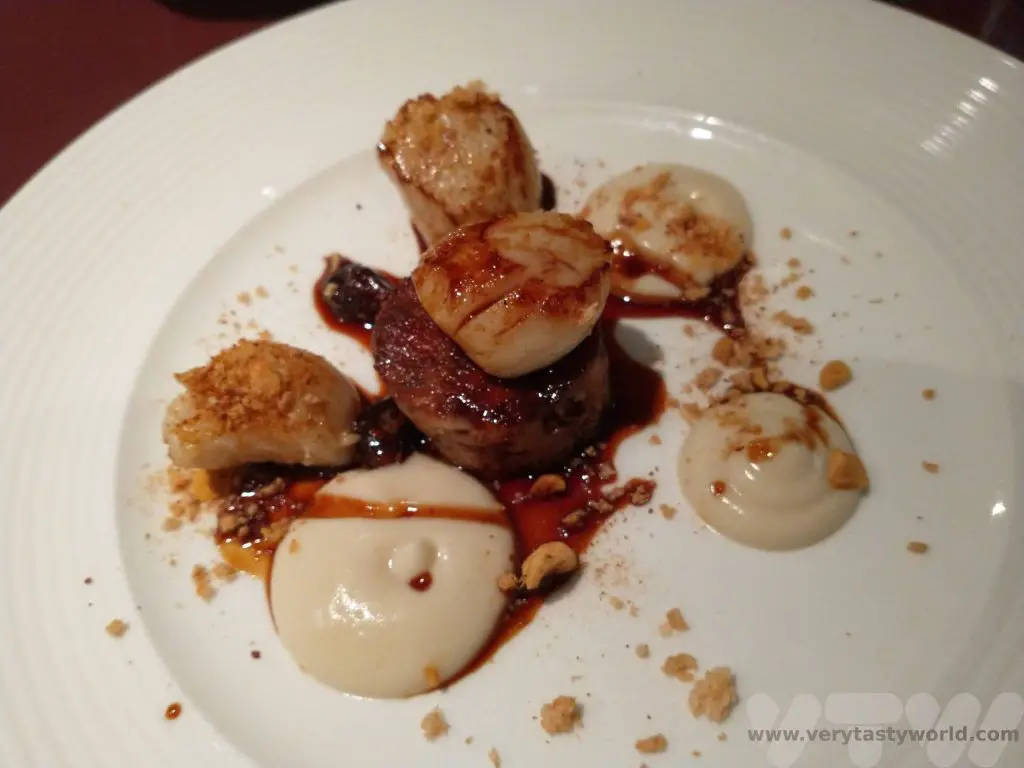



We visited Northern Ireland as part of a longer road trip where we also followed much of the Wild Atlantic Way in the Republic of Ireland. We can highly recommend this beautiful area with its very friendly people as a great place to enjoy a few days.
Belfast is just a couple of hours’ drive from Dublin. This blog post by faheyjamestravel has a list of things you can do there.

Things To Do In Oban, Scotland
Oban is a town in Argyll and Bute located around a pretty bay on the west coast of Scotland. It’s a popular place to visit and also has a ferry port from which it’s possible to travel to some of the western islands and as such is often considered the gateway to the Hebridean islands. But there are plenty of things to do in Oban itself and the surrounding area.
A Towering Folly
McCaig’s Tower is the town’s most prominent landmark, set on a hill looking over the bay. It was funded by John Stuart McCaig in 1897, a local banker who wanted to ensure employment for local builders and stonemasons as well as to leave a monument dedicated to his family. But he died before his plans fully came to fruition and, although he left a legacy for its completion, his family contested this and work stopped.

McCaig had apparently wanted a grand design based on the Colosseum in Rome, which would have been impressive, but it was not to be. It is a folly, but is nice to climb the hill and walk around the tower to have a look at the design and also to get a panoramic view of Oban below.


Visit Oban Distillery
Oban has one of the smaller whisky distilleries in Scotland. In fact the town developed around the distillery which was established in 1794. Hence it’s very conveniently located right in the centre of Oban. Because of its location the distillery didn’t really have the opportunity to expand so it remains small but perfectly formed. Also, because it’s town-based, there are no issues with someone having to drive to the distillery if you want to indulge in a tasting and are staying locally.

Of course they offer tasting tours. It’s definitely worth making a booking. You can tour the distillery itself or enjoy a tutored tasting. On arrival you are shown to a table and presented with some samples in little glasses and a tasting card.

It was really useful to have some guidance as to how to taste whisky. The advice was to sip and don’t sniff the whisky on the first taste. Definitely don’t quaff the shot or you will just get a burn at the back of the throat. Sipping again, your mouth is now used to the whisky, so let the whisky lie on your tongue for 15-20 secs to let the saliva glands release saliva and savour the flavour. You don’t expect to get a peaty whisky in Oban, the water is sourced from a local loch, about three miles away.
When whisky is first distilled it is a clear liquid. Its colour and flavour derives from the barrels it is stored in and the length of time the whisky is aged. There are some interesting techniques – the whisky can be aged in bourbon or sherry barrels but the casks can only be used a certain number of times (around five). Some barrels are charred inside, then the burned timber is scraped away to expose new timber and this offers a new flavour. Some whiskies are tripled matured in three casks. We tried the 14 year old whisky, which had a light, citrusy flavour; the 14 year old (charred barrel); the Distiller’s Edition which had been aged in a bourbon and then a sherry cask, which had a sweeter, more caramel roundness; and the triple matured Little Bay, which had a great complexity of flavour.
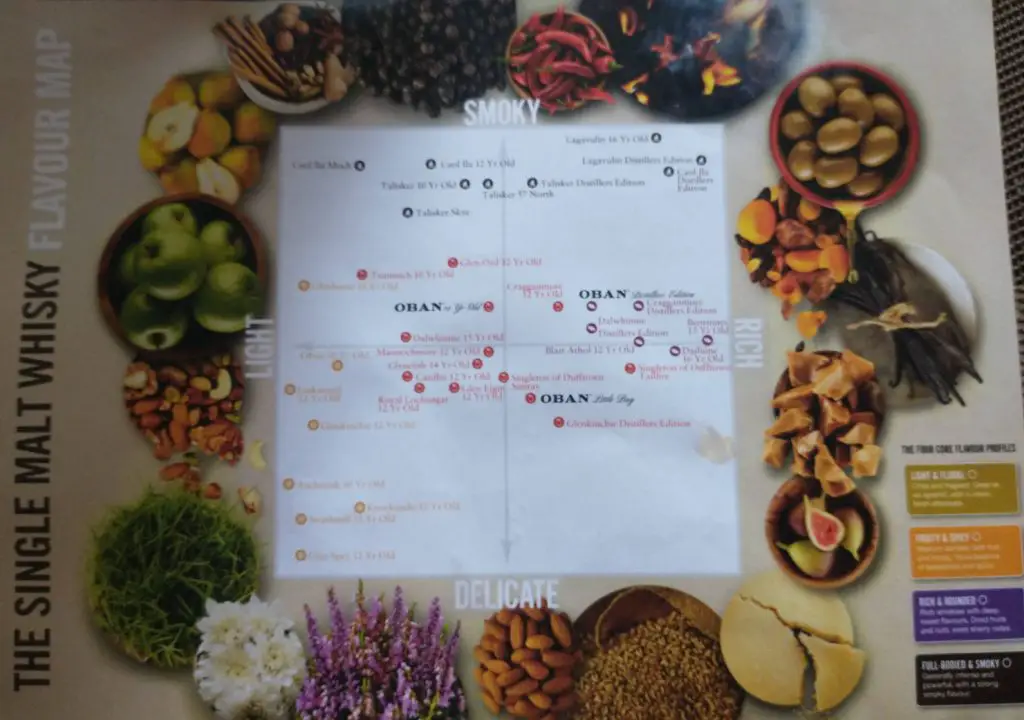
Of course, there are lots of bottles of whisky available to buy. We were quite taken with their Game of Thrones special edition.
Things to Do Around Oban – Day Trips
We recommend using a car to get around Scotland if you can – the driving is generally easy, the routes are guaranteed to look beautiful and it gave us flexibility to explore the wider area. However, there are public transport options if that is preferable.
Easdale Slate Island
Easdale is a tiny island located around 25 km from Oban. It’s easy to reach but first you have to cross the Bridge Over The Atlantic – possibly the cutest bridge in Scotland. Clachan Bridge joins Seil Island to the Scottish mainland so it really does cross the Atlantic – sort of! It’s a darling humpbacked bridge, built in 1792. It’s on a single track road, so take care when crossing.
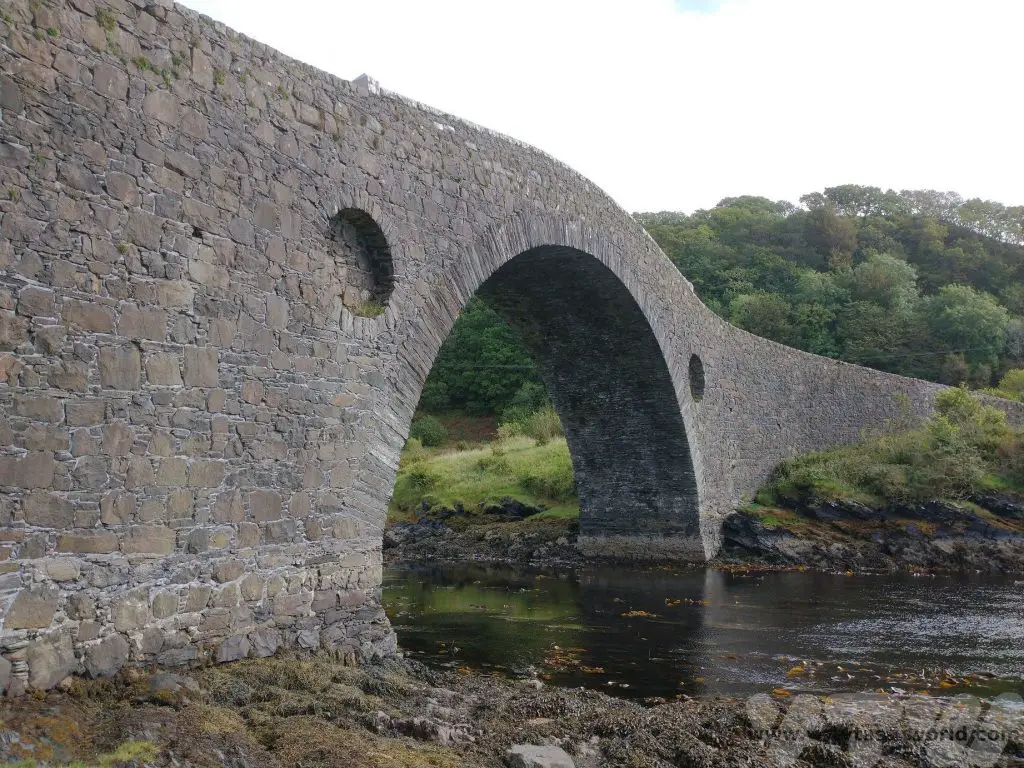
From there head to Ellenabeich, which has a large car park and the ferry port for the three minute journey across the sea to the island. It costs just a few pounds to make the crossing.

On arrival at Easdale you discover that there are no cars but it is the most delightful place to go walking. There is a café/reastaurant and a folk museum.
Easdale was once the focal point of the Scottish slate industry. As such it has a number of slate quarries, many of which are now flooded. Despite the industry, the island is really beautiful. Skimming Quarry holds a national stone skipping competition every September.
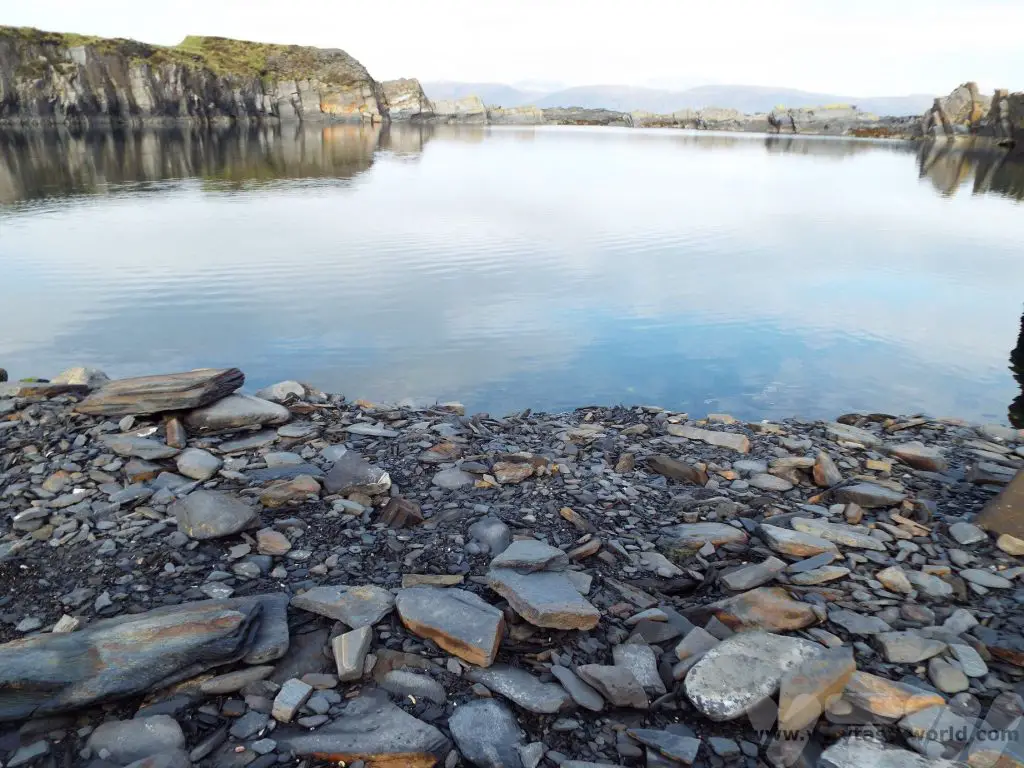
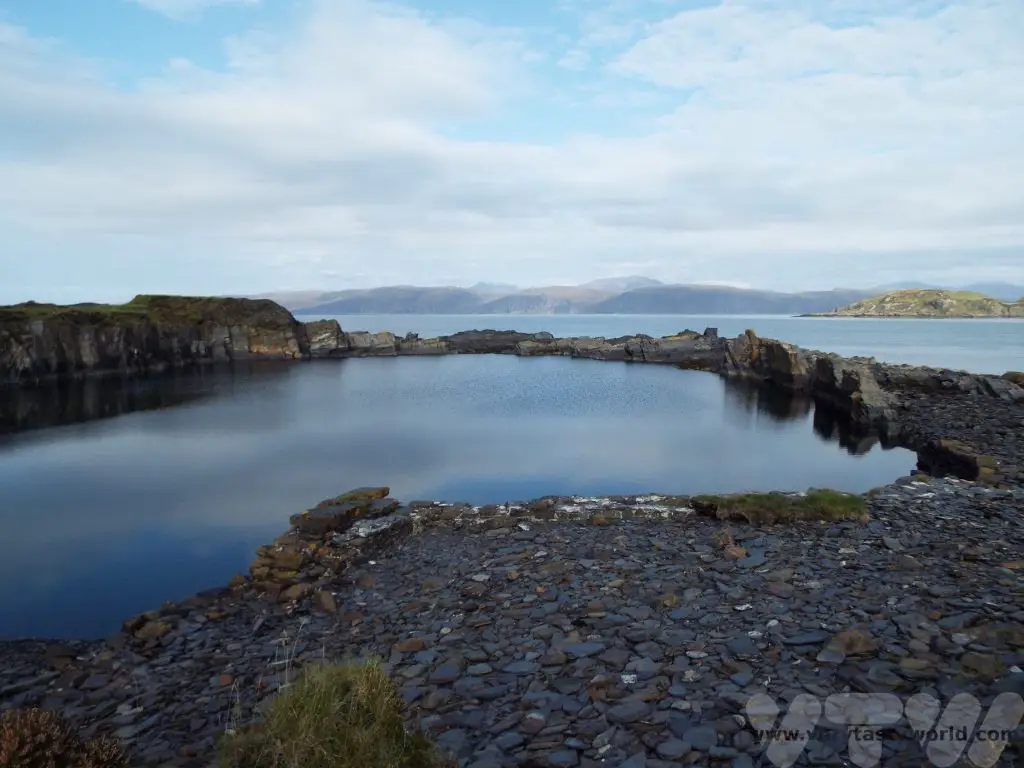


It’s very easy to walk all the way around the island and sometimes you get lucky with perfect weather.
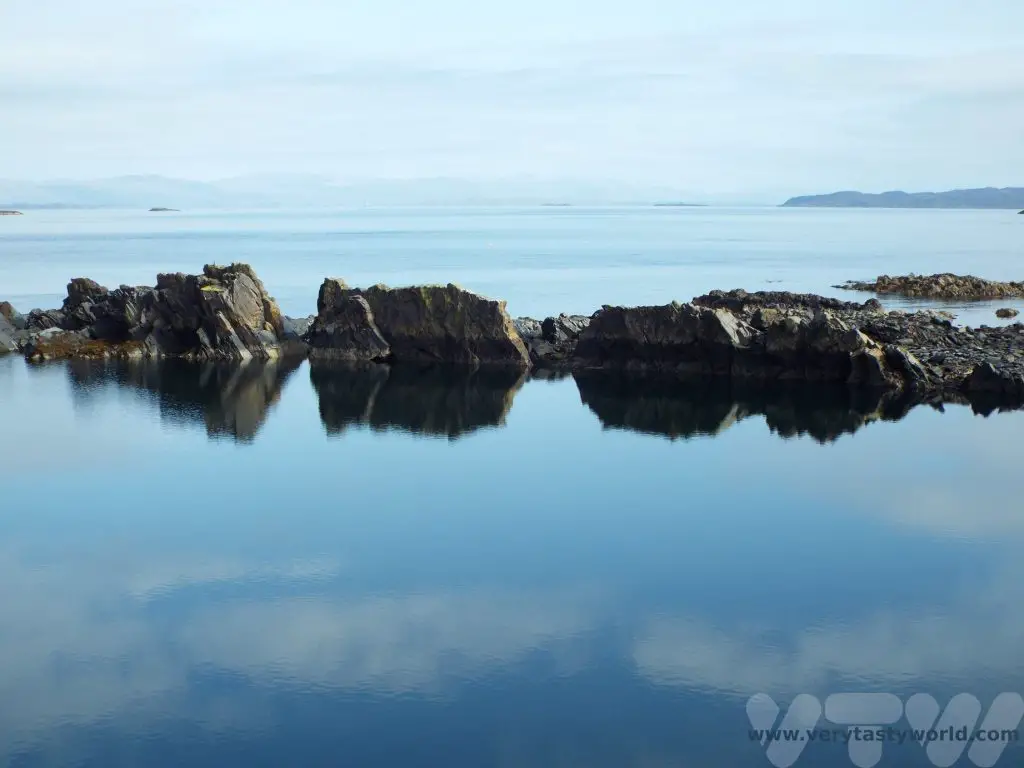
Kilmarten Glen and the Standing Stones
Driving further south towards Kilmarten it’s possible to explore some of Scotland’s prehistoric monuments, including cairns and standing stones.
Stopping in Kilmarten itself there is a museum which gives a history of the area, and the church next door, which has a collection of early grave slabs.
Further down the road there is a car park and, after crossing the road into the field, it’s possible to see Nether Largie Stones. The stones, believed to have been erected 3200 years ago, align with the midwinter sunrise and the autumn and winter equinoxes.
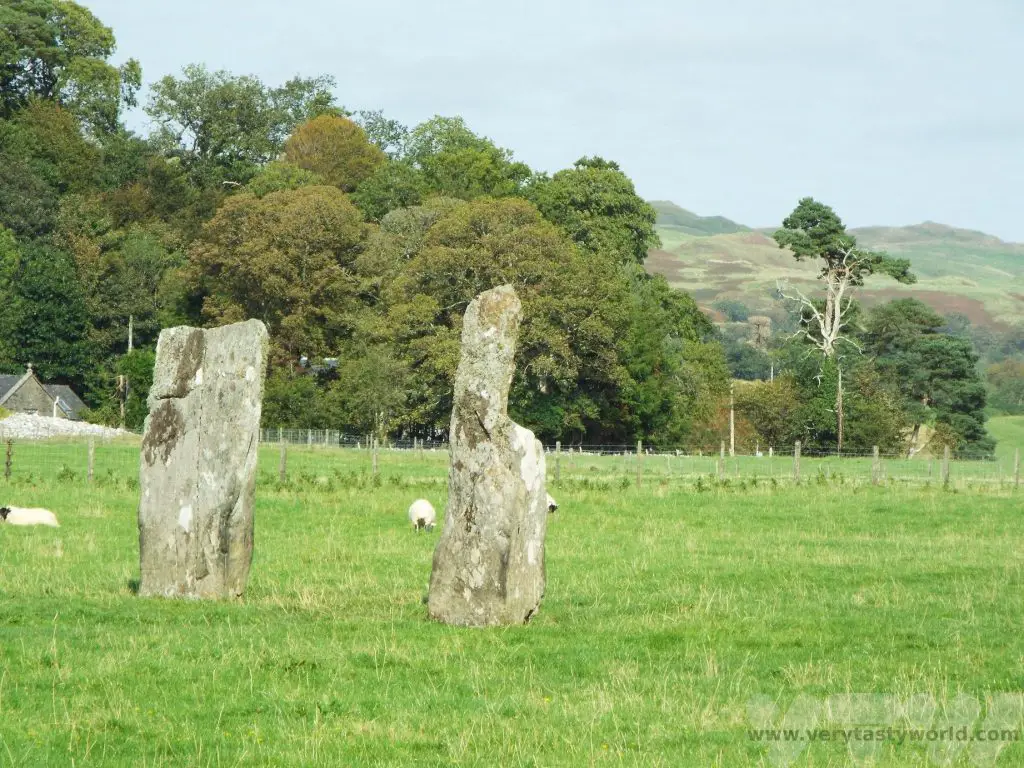
Temple Wood is a stone circle which has a cairn in its centre. It was originally a wood circle, dating from about 5000 years ago but the wood was later replaced with stones. Cremated remains, dating from around 3300 years ago, were found inside the centre of the circle.
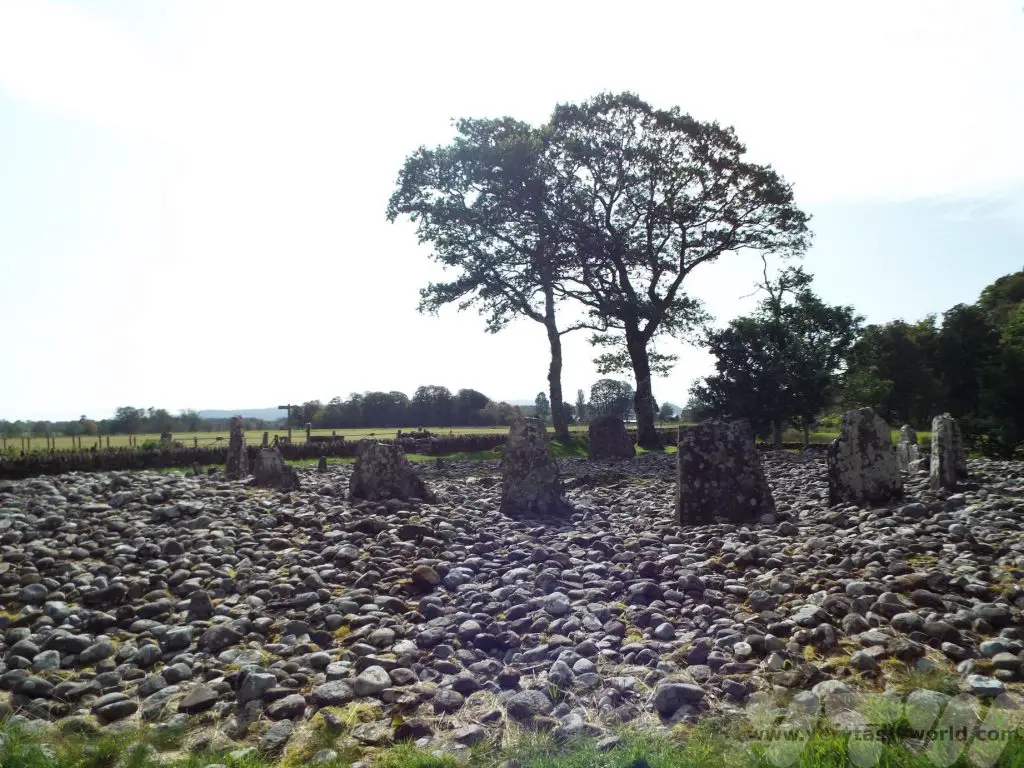
Another short walk just down the lane takes you to the Nether Largie South cairn, a Neolithic chamber tomb. It is thought that it was constructed around 5600-5500 years ago. It’s believed that it was used for burials in the early Bronze Age as well.
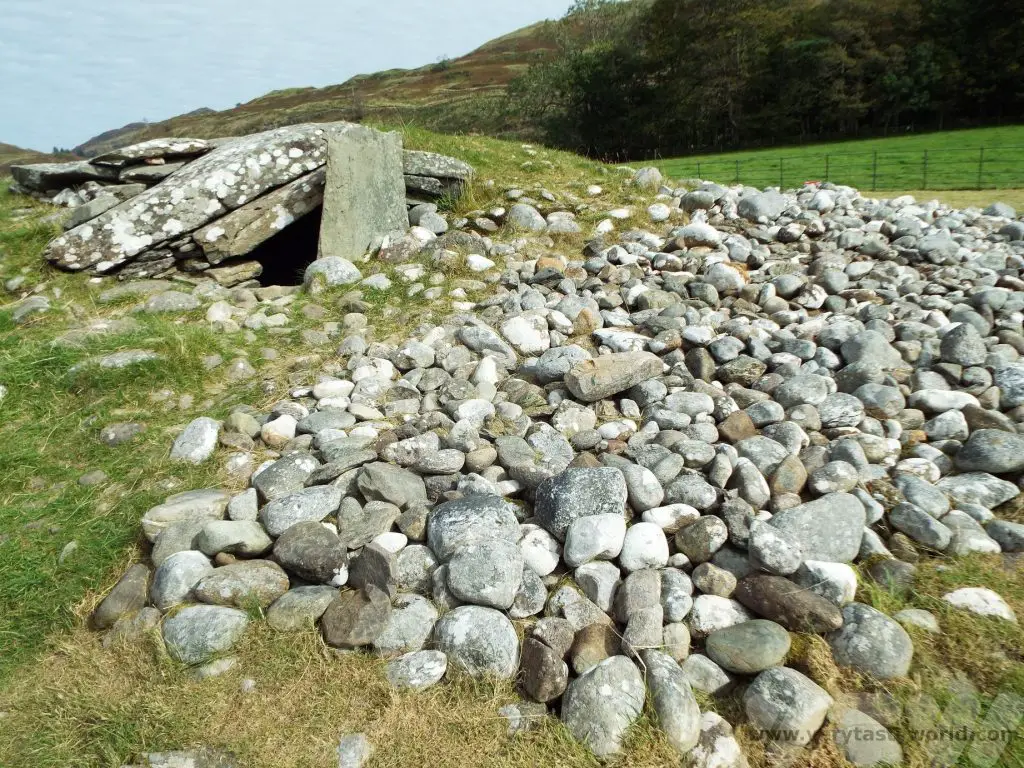
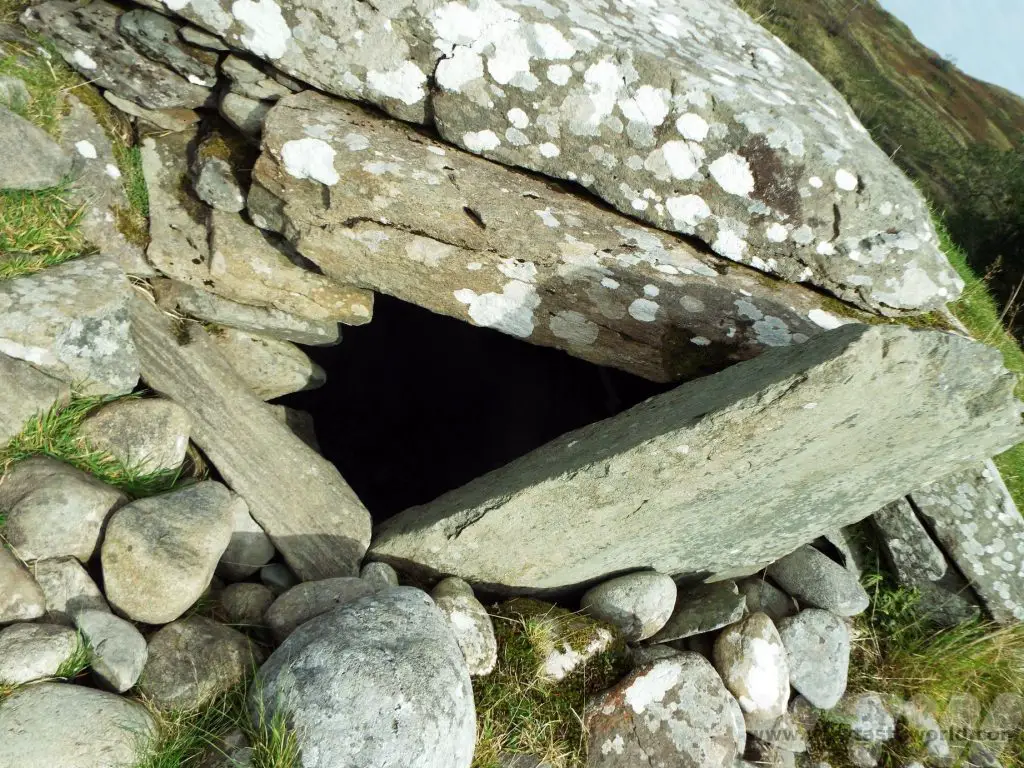
Seafood and Eat It!
On our return to Oban we discovered plentiful restaurants, many of which offer seafood. Blessed with a long and beautiful coastline, Scotland’s seafood is fantastic! If you want the very best, which is also incredibly good value for money, there is only one place to go: Oban Seafood Shack, also known as The Green Shack, located by the harbour on the railway pier.
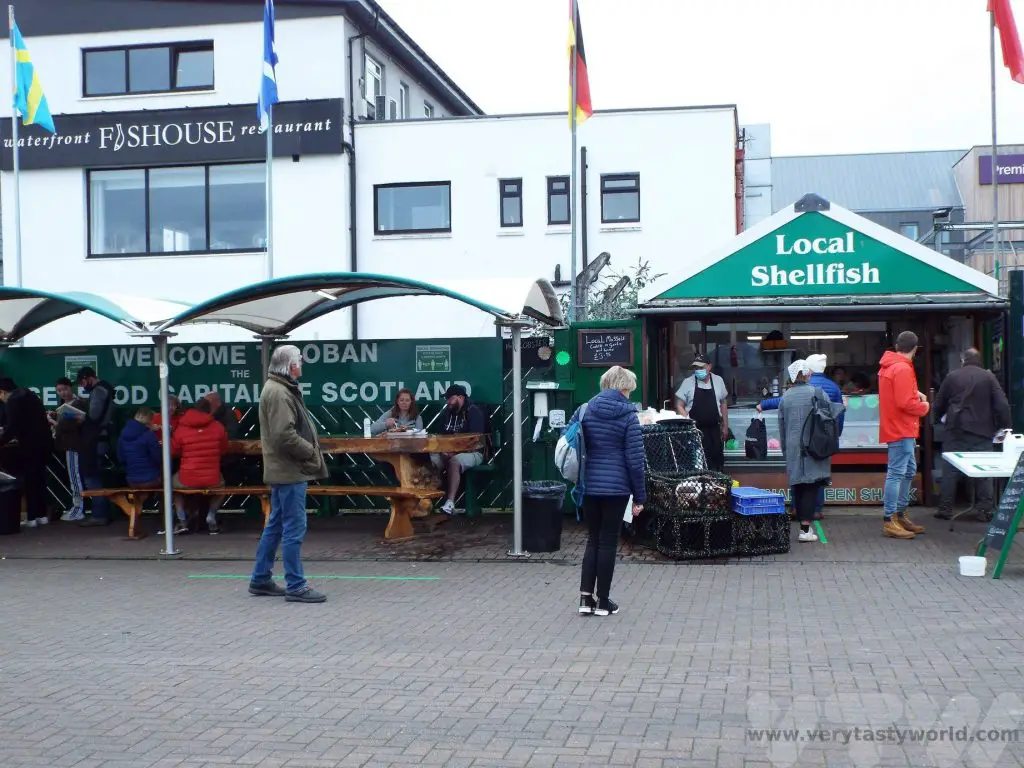
It’s so good, there will almost certainly be a long queue, but it’s emphatically worth the wait as you can order a huge variety of fresh seafood. It is literally a shack – a tiny hut – where you place your order. There’s not much seating, just a small covered area next to the shack and some tables for standing. It’s not the place for an intimate dinner but who cares when the food is this good? We ordered the seafood platter which was just divine: lobster, crab claw, langoustine, mussels, prawns, scallop in butter sauce, hot smoked salmon, pickled herring, crab sticks, squid rings. It was served with simple bread and butter, Marie Rose and sweet chilli sauce.
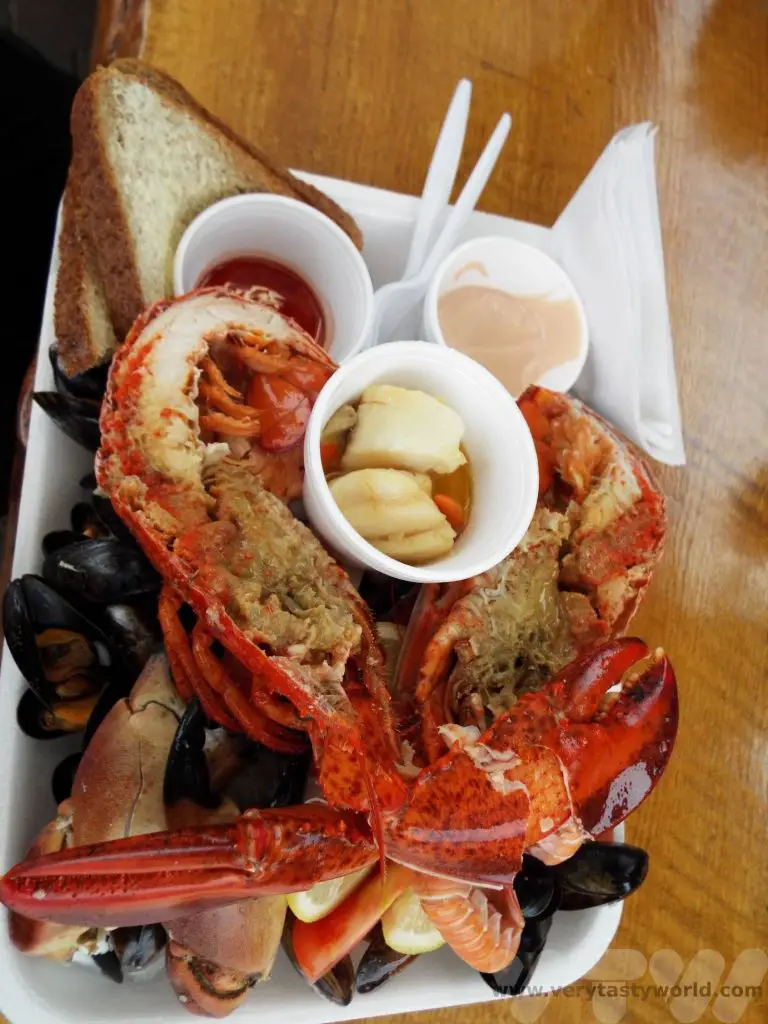
There was so much we needed a platter for the debris. We ate standing up, using our fingers (they have a wash station), although forks were provided to pick crab and lobster meat.
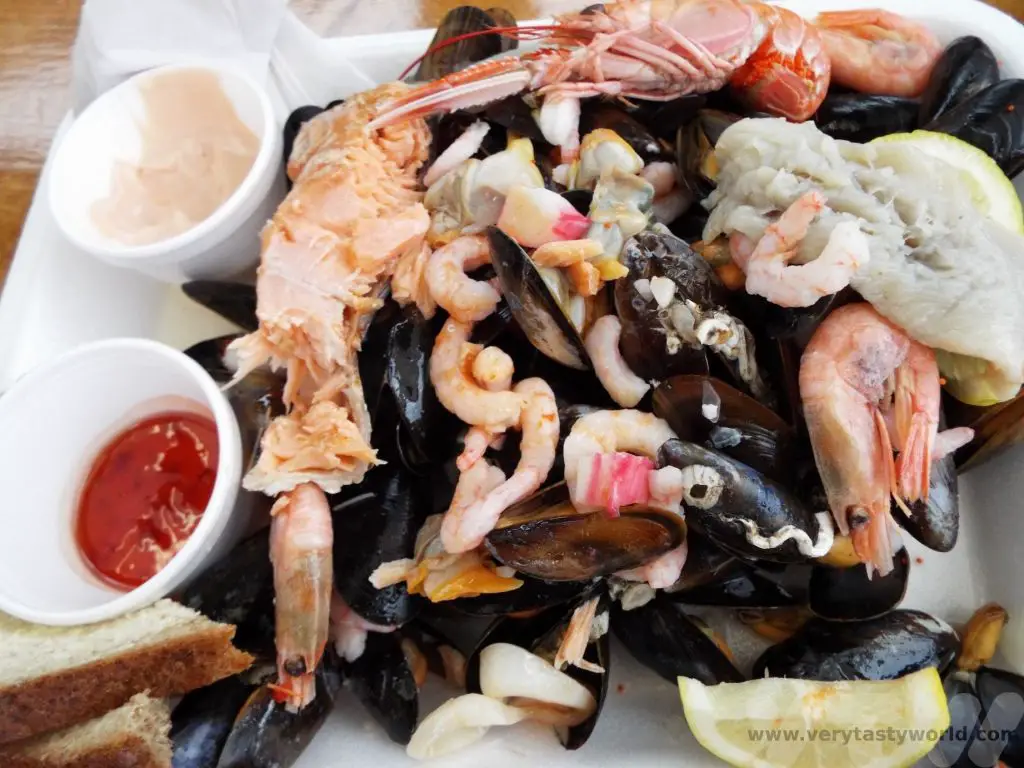
The seafood shack offered food as it should be – fresh ingredients, perfectly cooked, friendly service, no pretension whatsoever. Perfect. (It’s worth noting that at the time of our visit they only accepted cash as payment.)
The following day we skipped breakfast at the hotel in favour popping down to the shack to pick up some prawn and crab sandwiches. Absolutely delish! It set us up for the day to continue our journey through Scotland and onto the Isle of Skye.

Other Attractions in the Area
If you like castles, there are a couple close by: Dunollie Castle is located about 1.5km north of Oban. You can visit the castle, a museum and the grounds. There’s also Dunstaffnage Castle & Chapel, one of the oldest stone castles in Scotland which stands on an enormous rock overlooking the Firth of Lorn.
Oban is also gateway to some of Scotland’s marvellous Hebridean islands via the ferry port. It is possible to enjoy trips to Mull, Lismore, Coll, Kerrera and Barra, some either as day trips or to continue your journey through Scotland. Check the Calmac website for information and timetables.
Related Posts You May Enjoy

RECIPE: How to Make Umeboshi
A typical Japanese breakfast will comprise of a bowl of rice, some grilled fish and pickles accompanied by a bowl of miso soup. What a lovely way to start the day. And at the Japanese breakfast table you will often come across a bowl of pink, wrinkly fruit, roughly the size of an apricot.
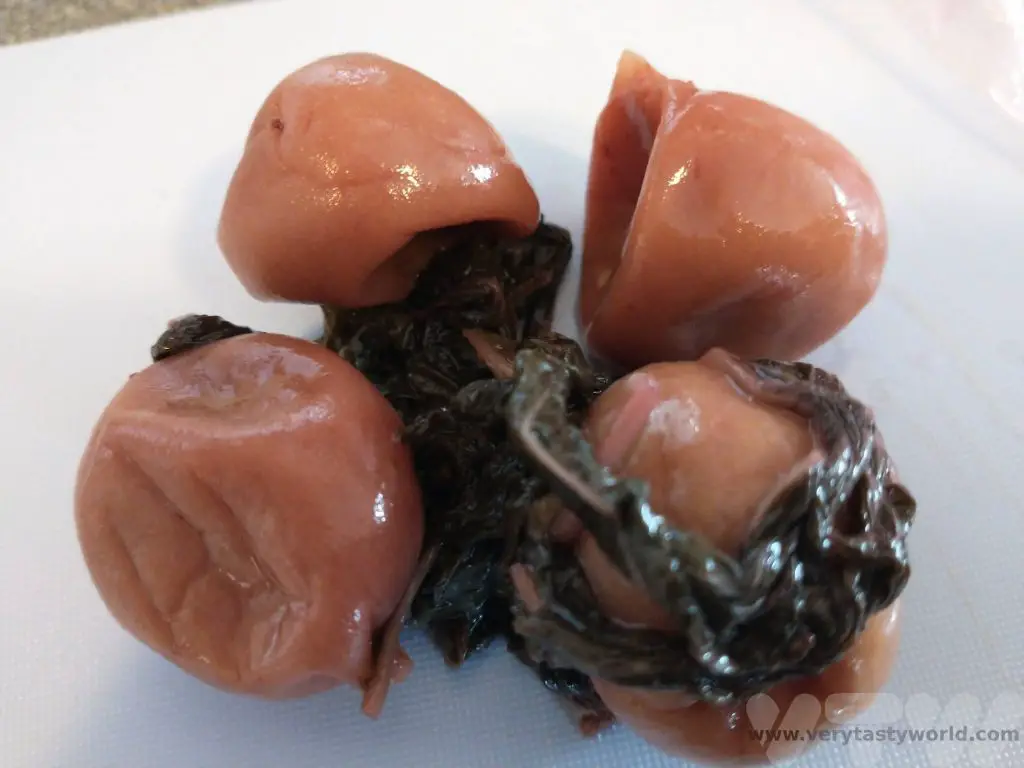
These are umeboshi, incredibly sour and salty ume fruit, which are like small plums or apricots, and are absolutely guaranteed to wake you up. They are also reputed to be a hangover cure, especially good if you are a salaryman who has had a late night out in the city. Or tourists who have had a late night in the city which involved chatting with all sorts of very interesting people in random bars and drinking quite a lot of booze.
Beware the stone, especially if you have a hangover.
Umeboshi are tsukemono, literally “pickled things” which brined and therefore fermented, so they will last for ages. Some will even last decades. If they turn black, they should be chucked. We always bring some back from our trips to Japan and rationed them so had some in our fridge for about 5 years – they were still pink and wrinkly and utterly delicious. Most Japanese meals have tsukemono as an accompaniment but umeboshi are most often eaten at breakfast. They are also used in onigiri (rice balls) as a flavouring and can be converted into a paste to add plentiful salty/fruity flavour to a variety of dishes.
Some Japanese households make their own umeboshi. If you are lucky enough to be offered these, don’t be polite. Well, do be polite because that would be the right thing to do, but don’t hesitate to take your host up on their offer. Home-made umeboshi are absolutely delicious. The pink colour derives from red shiso – also known as perilla – which is a herb added during the pickling process. Shiso is a very common herb used a lot in Japanese cuisine. Green shiso is often the herb that garnishes a sushi platter.
It is possible to make sort-of-umeboshi in western countries. The ume fruit is not usually available, but you can have a bash using plums and salt.
We treated ourselves to a Japanese pickle press a while ago but it should be possible to make umeboshi using a wide-mouthed jar, just as long as you have something heavy that will fit inside the jar to weigh the plums down and a utensil that can extract them (tongs should be fine) as you will need to take them in and out of the jar after the fermentation.


We use plums from our allotment. They have the delightful name Warwickshire Droopers. The great thing is that we can assess how ripe our plums are and pick them. This year the plum tree has been very generous. If you don’t have a plum tree your local market or greengrocer may well have a variety of plums for you to choose from.
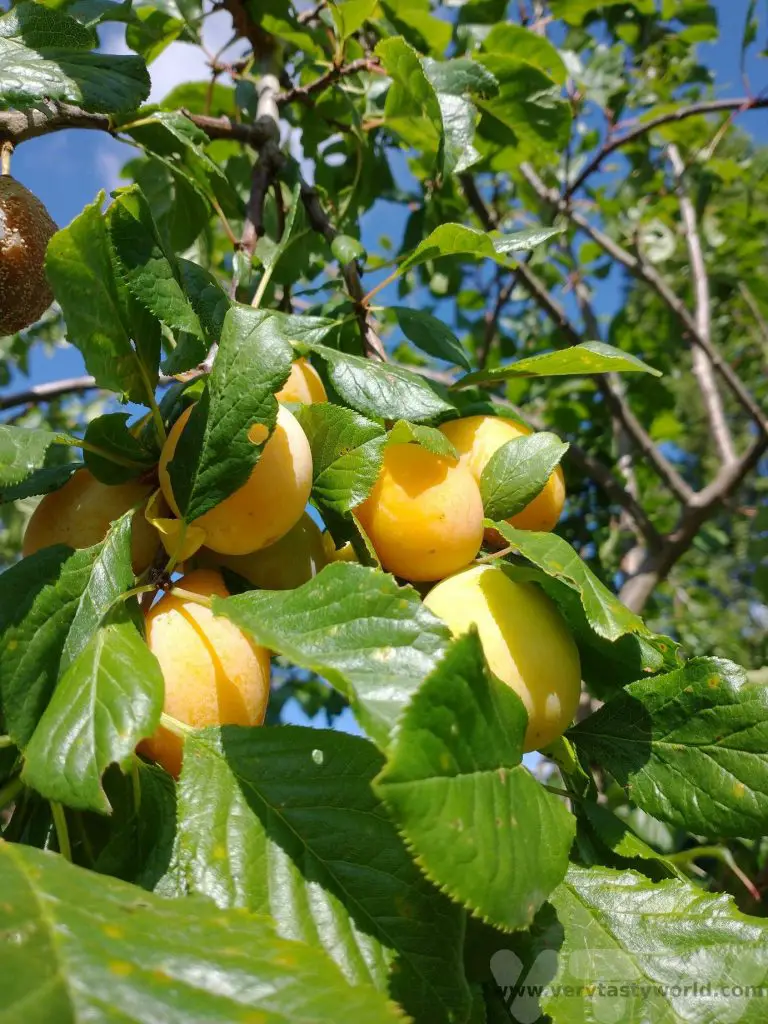
You want the plums to be ripe but not over-ripe, they need to have a degree of firmness.
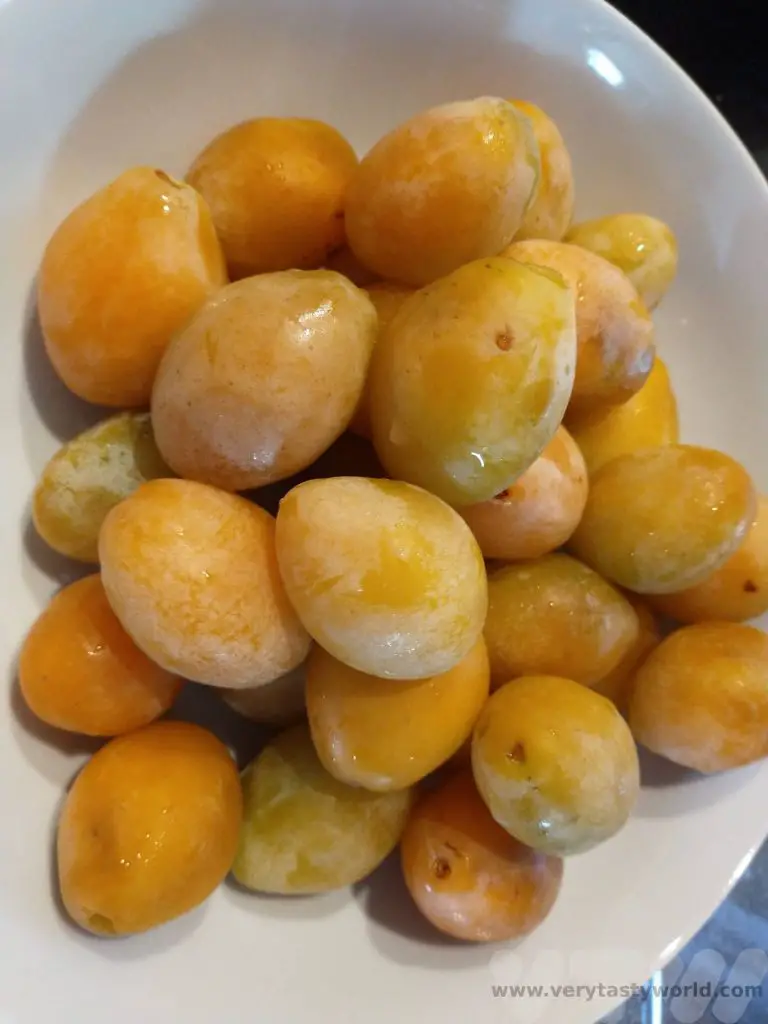
How to Make Umeboshi
Ingredients
Plums – enough to fill your container but leaving enough space to add a weight. If using a press, make sure the press can close and provide enough pressure.
Salt – 8% of the weight of the plums. Try not to use table salt, as this contains anti-caking agents. We prefer Himalayan pink salt but any pure salt will be fine.
2 red shiso leaves (optional)
Method
Wash your plums and pat them dry. Weigh the plums.
Measure out your salt – the total should be around 8% of the plum weight. This is a lot of salt but most of it will leach into the juice during the pressing process.
Massage the salt into the plums

Place in the press. Add the shiso/perilla leaves if you are using them.
Attach the lid and screw the pressure plate down as far as it will go. If you are using a jar, put a clean weight (you can put a weight inside a plastic bag) that puts pressure on the plums.
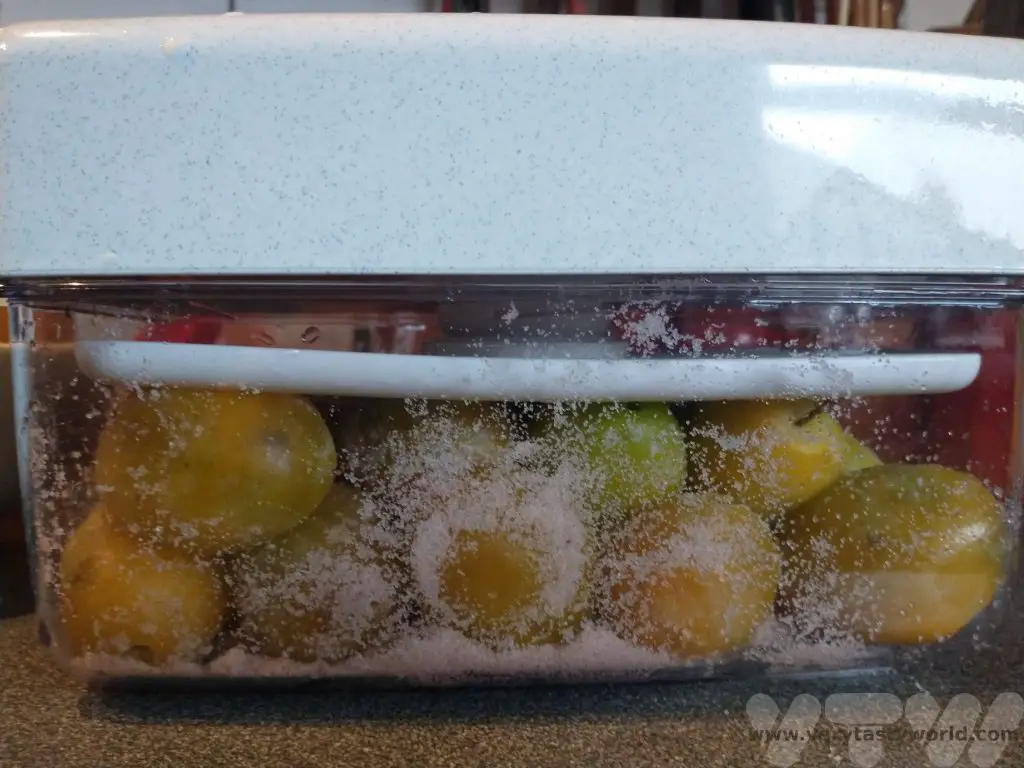
This ferment doesn’t use a brine. The pressure of the weight will release juice from the plums.
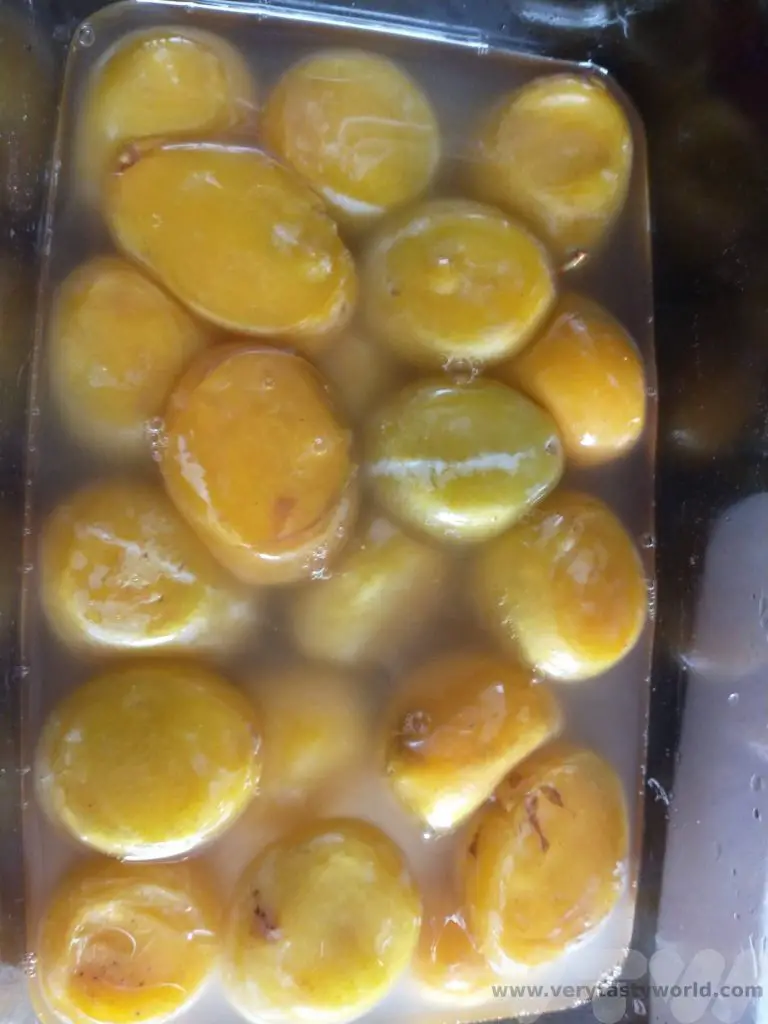
Leave in a cool, dark place for 2-3 weeks. Check the plums occasionally. You will start to see juice appearing in the bottom of the press.
(As with all ferments, if you ever see any mould on the fruit you should throw it away as the spores could cause illness if you consume the plums. It is unlikely that mould will develop with an 8% salt mix as that is lot of salt.)
The next step requires a bit of luck with the weather. Ideally you want a warm, sunny day. In fact, you need three warm, sunny days.
On your sunny day, remove all the plums and place them on a mat, or some kitchen paper, in the sunshine to dry. Place them back in the juicy brine at the end of the day.
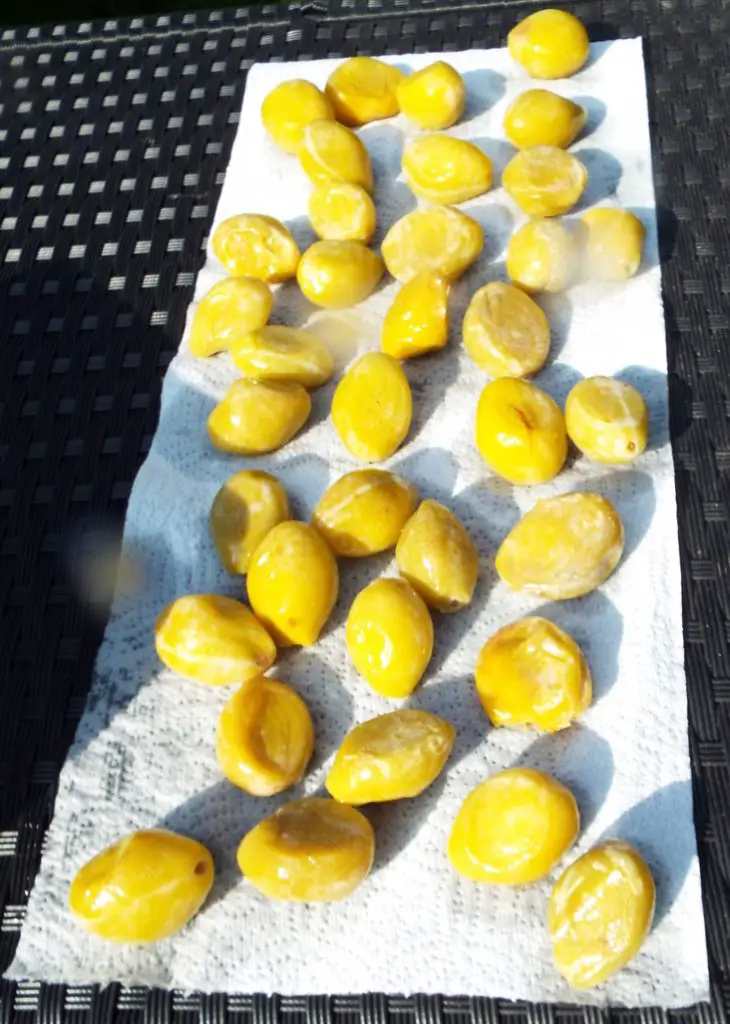
Repeat for a further two days. They don’t need to be consecutive days but it would be helpful if you can dry the plums over the course of a week.
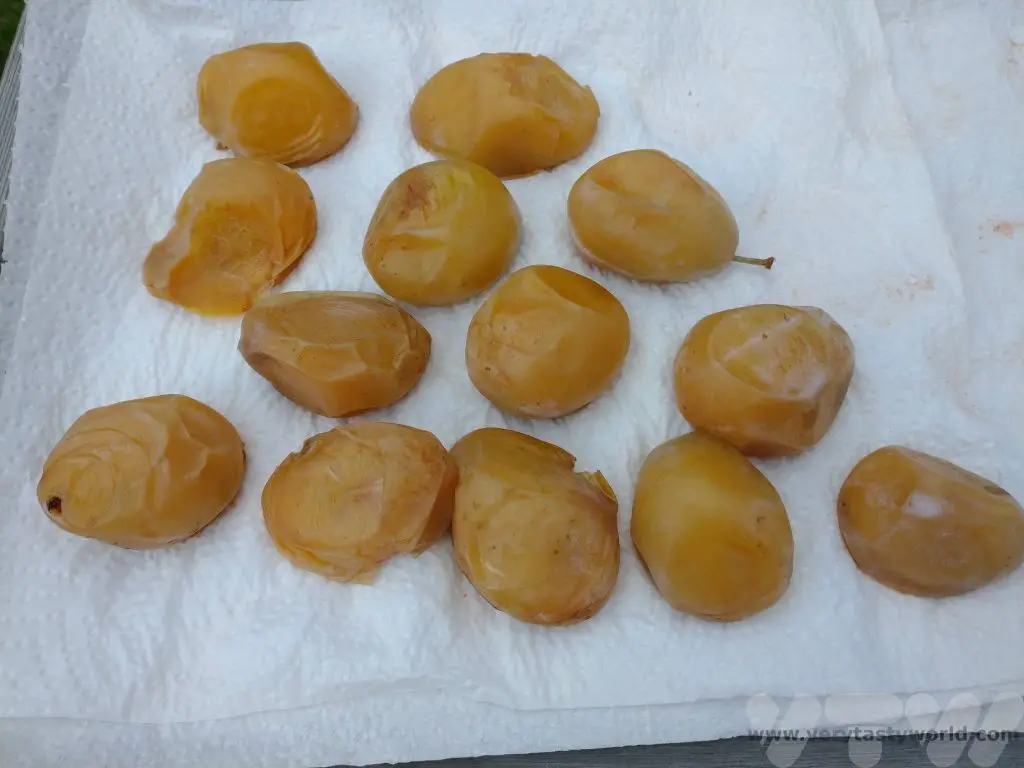
After the third day, you can place the plums in a jar or a plastic container, or even a plastic bag. They will last for months and months. That’s if you don’t scoff them…or have too many hangovers to cure!
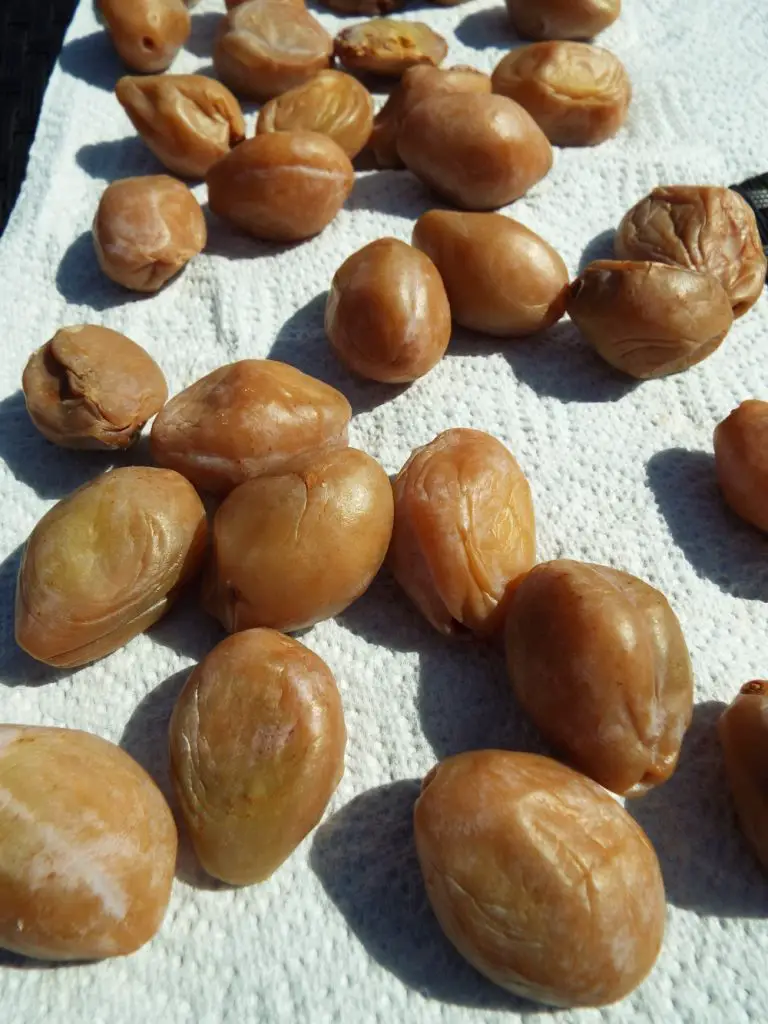
Save the Brine!
We hate food waste so we have devised a way to re-use the salty plum juice brine.
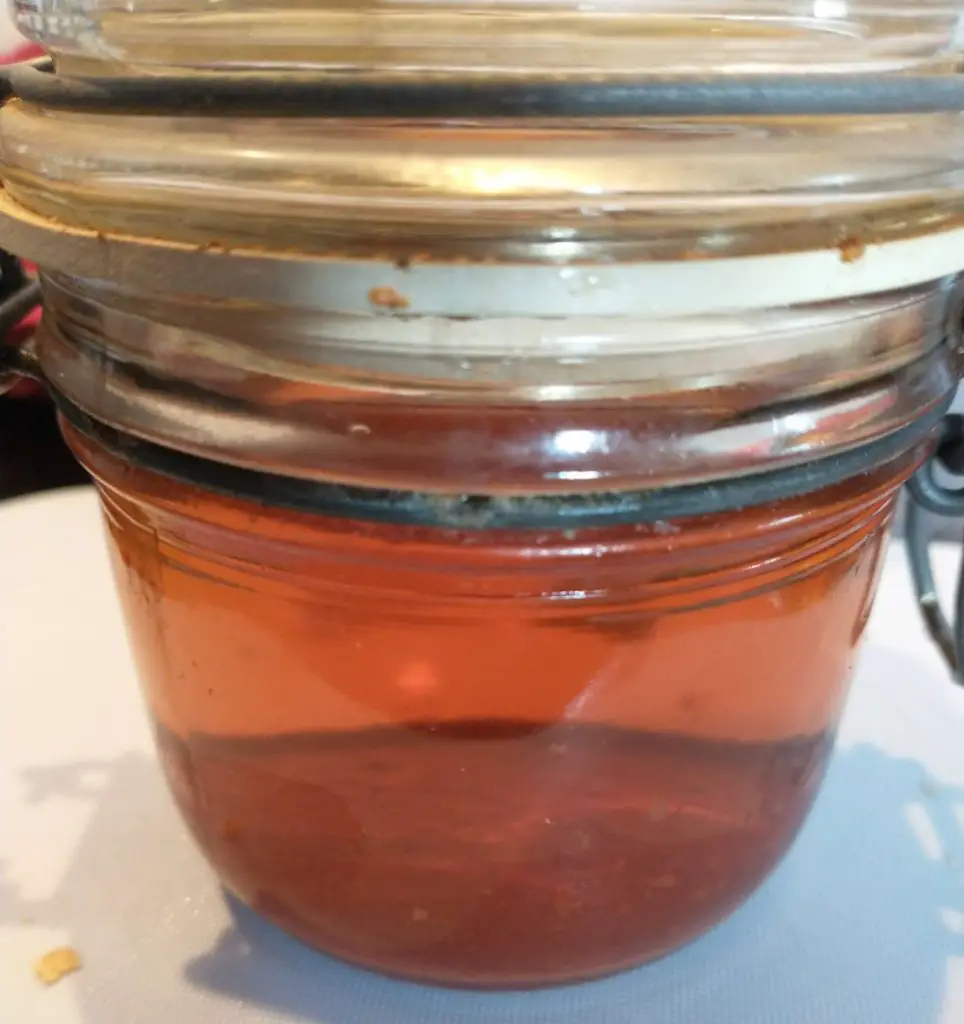
We use it to pickle ginger.
Peel the ginger and cut into matchsticks.
Place them in a jar and cover them with the brine. After a couple of weeks they will be deliciously sour and salty. We use them to add some zing to rice and noodle dishes or as a garnish.
Actually, we have been known to open the jar and sneak a matchstick or two for a quick snack.
Related Posts You May Enjoy

- RECIPE Oyakodon Donburi
- Zero Waste Recipes Before Your Holiday
- RECIPE: Vegetable Biryani Tamil Nadu Style
- RECIPE: Vegan Wild Garlic Pesto
- Recipe: Venetian Pasta Sauce
- RECIPE: Biryani Raita Recipe
- RECIPE: How to Make Costa Rica’s Gallo Pinto
- Recipe: Japanese Simmered Pork Belly – Buta no Kakuni
- RECIPE: How to Make Umeboshi
Visit Guernsey – Art and Literature Activities
The channel island of Guernsey is the second largest in the tiny archipelago in the English Channel and the largest in the Bailiwick of Guernsey (which also includes the islands of Alderney, Sark, Herm and Jethou). It’s a fabulous place to visit, is easily accessible from the UK and has a fascinating history. If you visit Guernsey there are loads of things to do, especially if you like outdoor activities. There are lots of beautiful walks along spectacular cliff paths, and the island is perfect for spending traditional seaside time on pristine beaches.
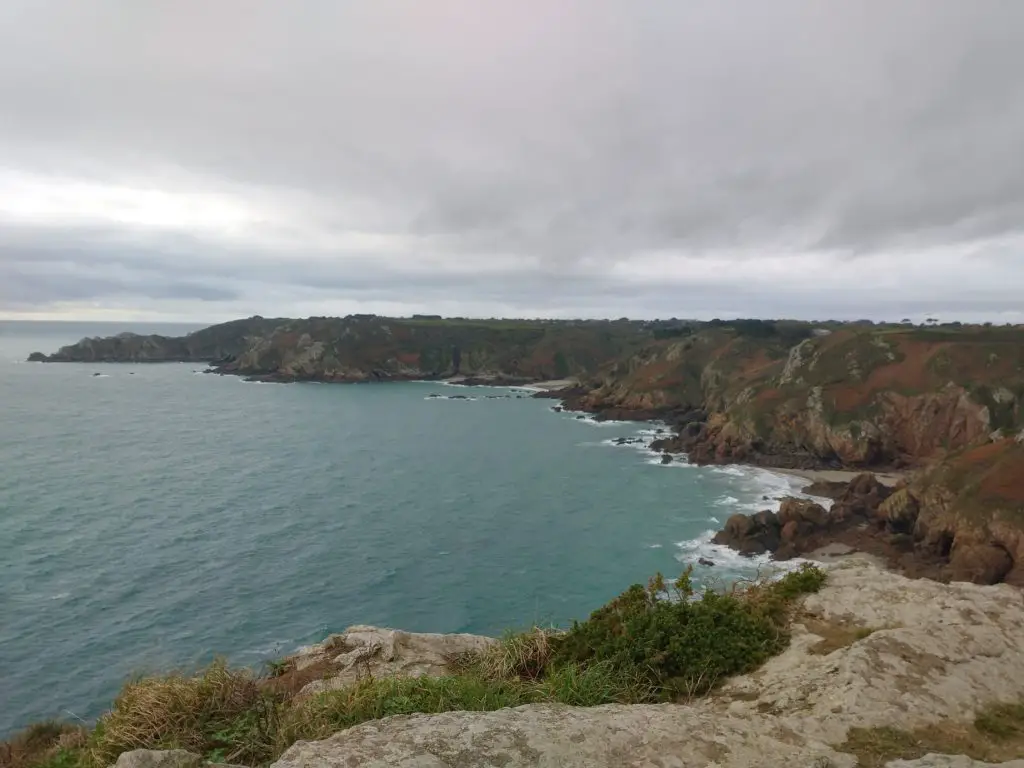
There are a bunch of museums and forts to visit and it’s definitely worth investigating day trips or short breaks to the other stunningly beautiful islands.
Guernsey also has a lot to offer if you’re interested in art and literature, and some of these activities are perfect if the weather isn’t on your side for a day at the beach.
Visit Guernsey – The Renoir Walk
The impressionist artist Pierre-Auguste Renoir visited Guernsey in 1883 and created some fifteen paintings during his stay. They were all based around the charming Moulin Huet. You can take a walk along Moulin Huet to view its beautiful bay where Art for Guernsey have cleverly set up some picture frames at five locations so that you can see the precise spot where he worked on his pictures. Each site also have a display showing a picture of the original painting so that you see how the landscape has changed over the years. Most of the frames are located close to the beach but there is one that is slightly further out and it’s a climb along the path to the cliff-top to capture the view across the bay.
There’s a small car park at the end of a narrow road and just along the path from there is a map showing where each of the frames is located.
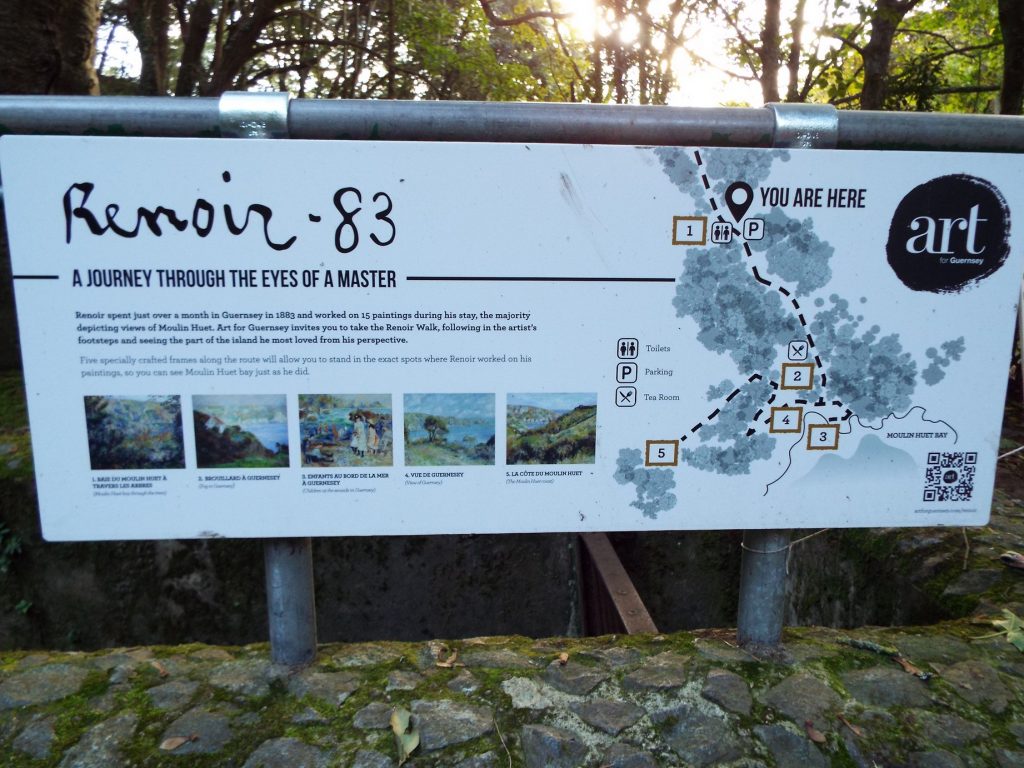
La cote du Moulin Huet.
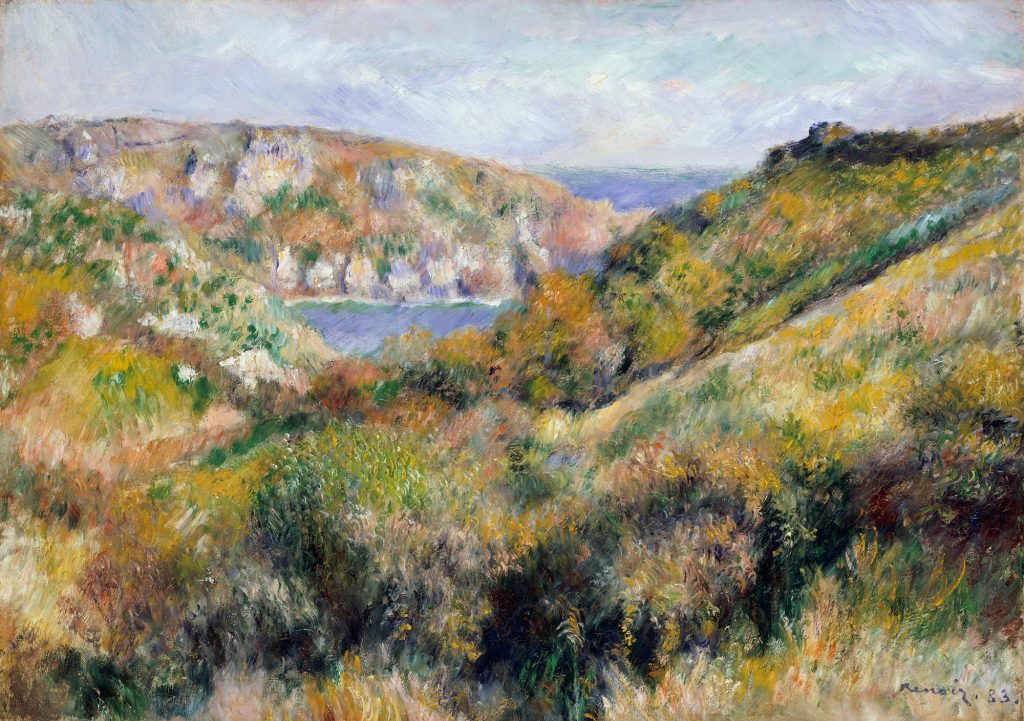
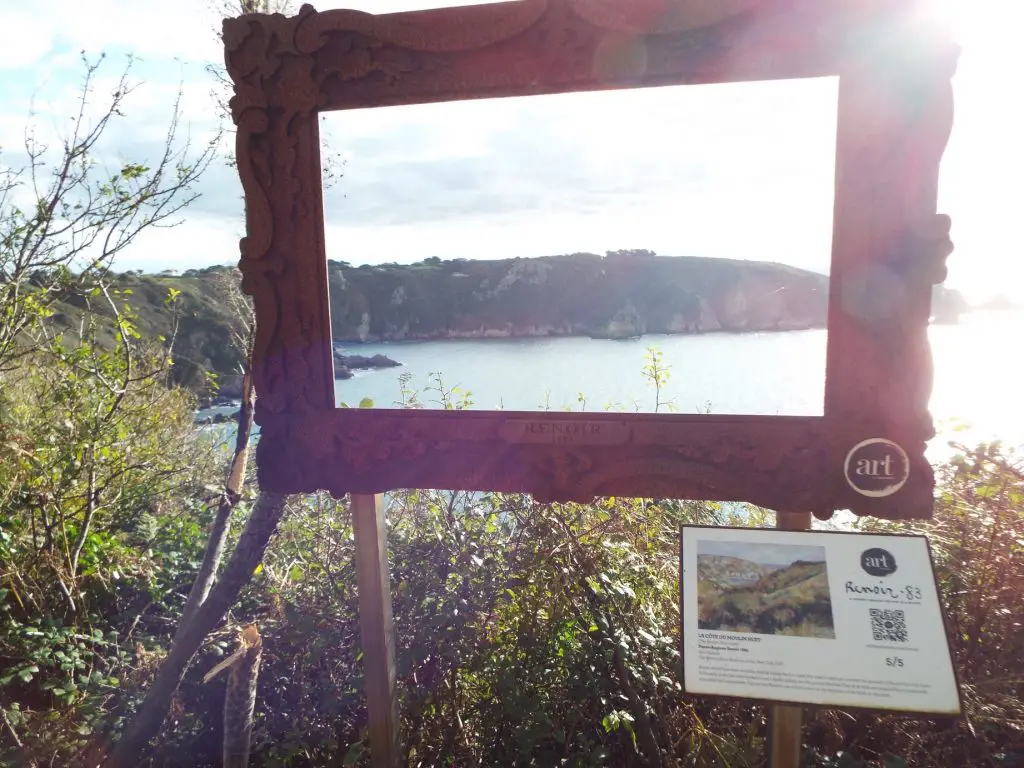
Our version of Enfants au bord de la mer à Guernsey should have been entitled Chien au bord de la mer à Guernsey as our shot was photobombed by a very friendly dog.
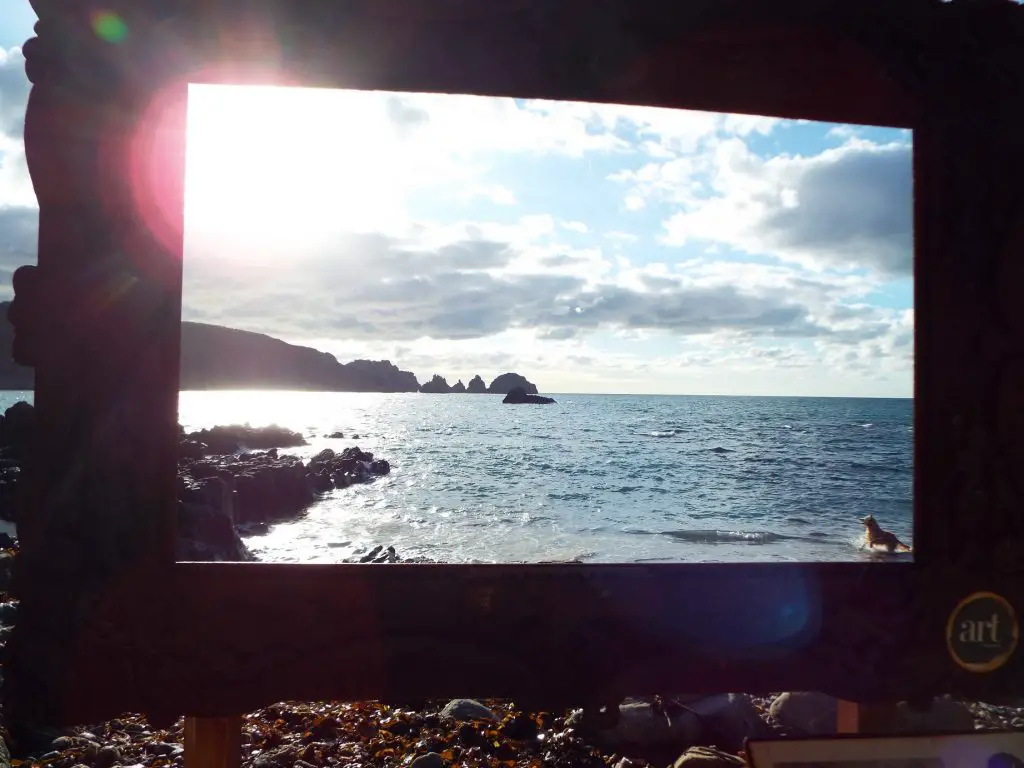
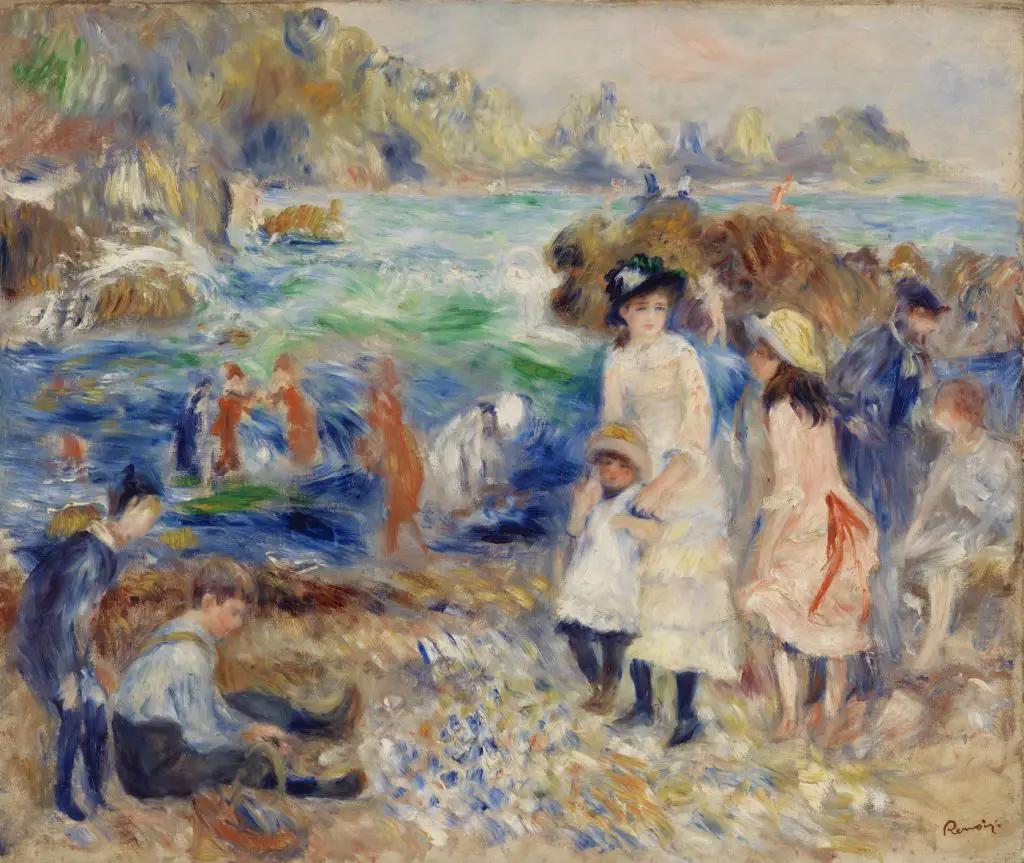
The foliage had changed over the years since Baie du Moulin Huet a travers les arbres was painted.
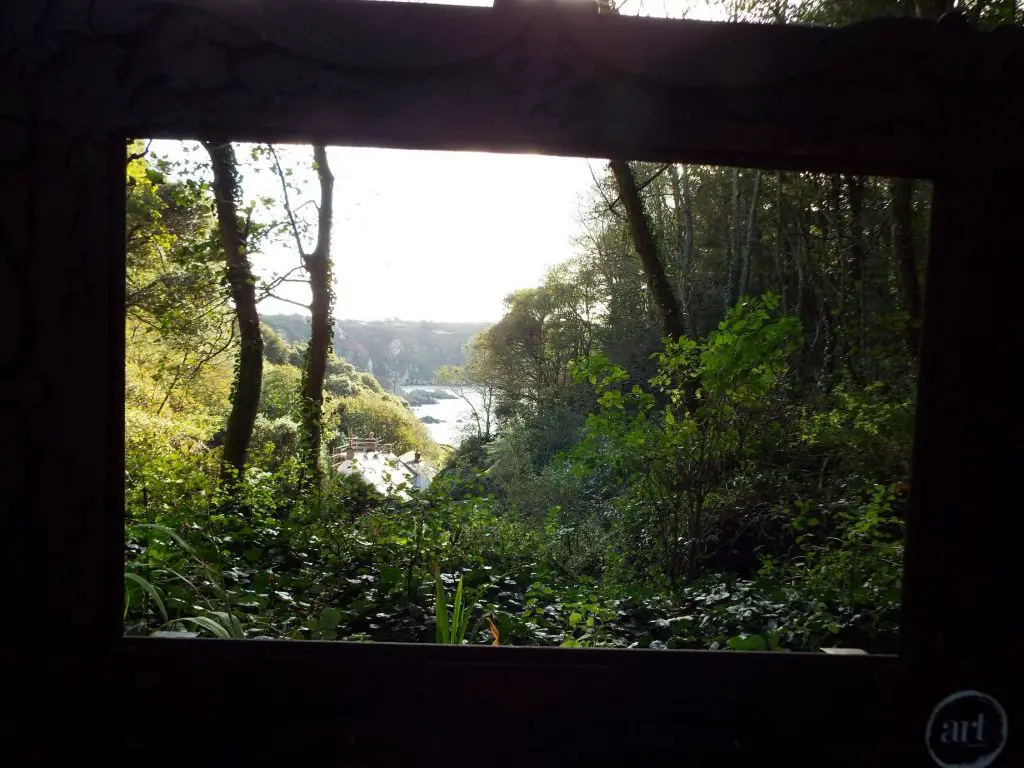
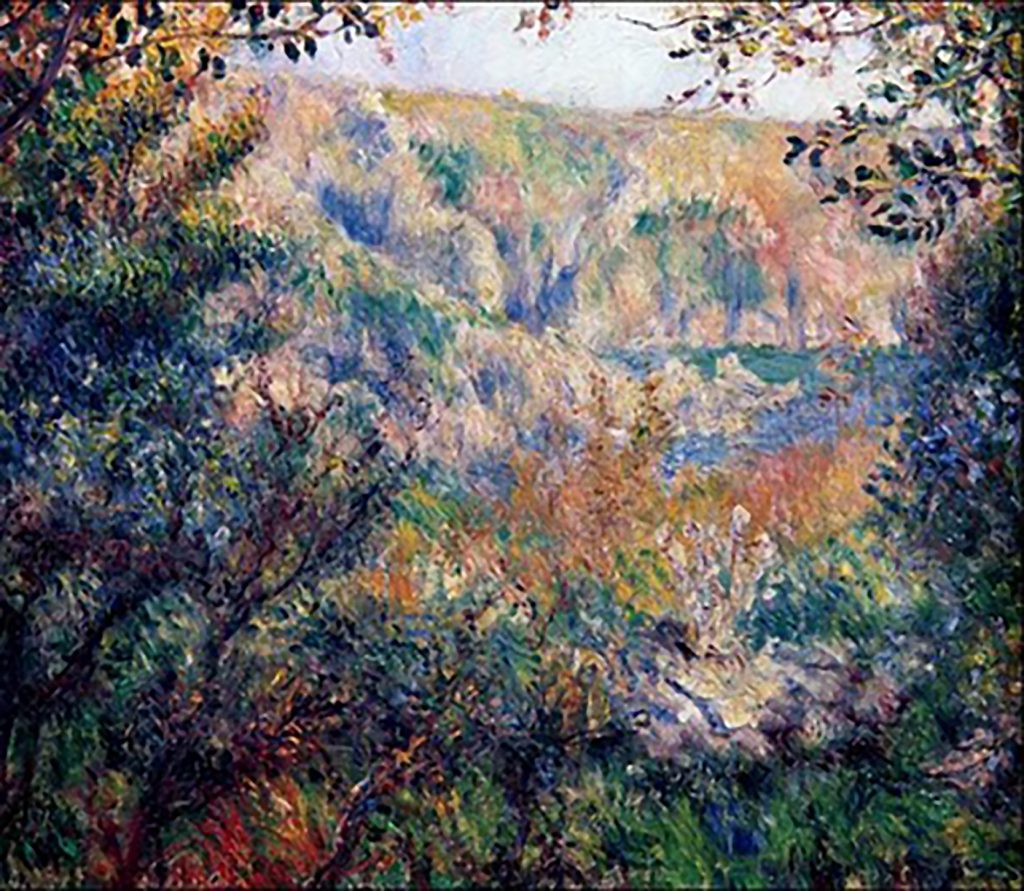
It’s a short climb and walk along the cliffs to see Vue de Guernsey.
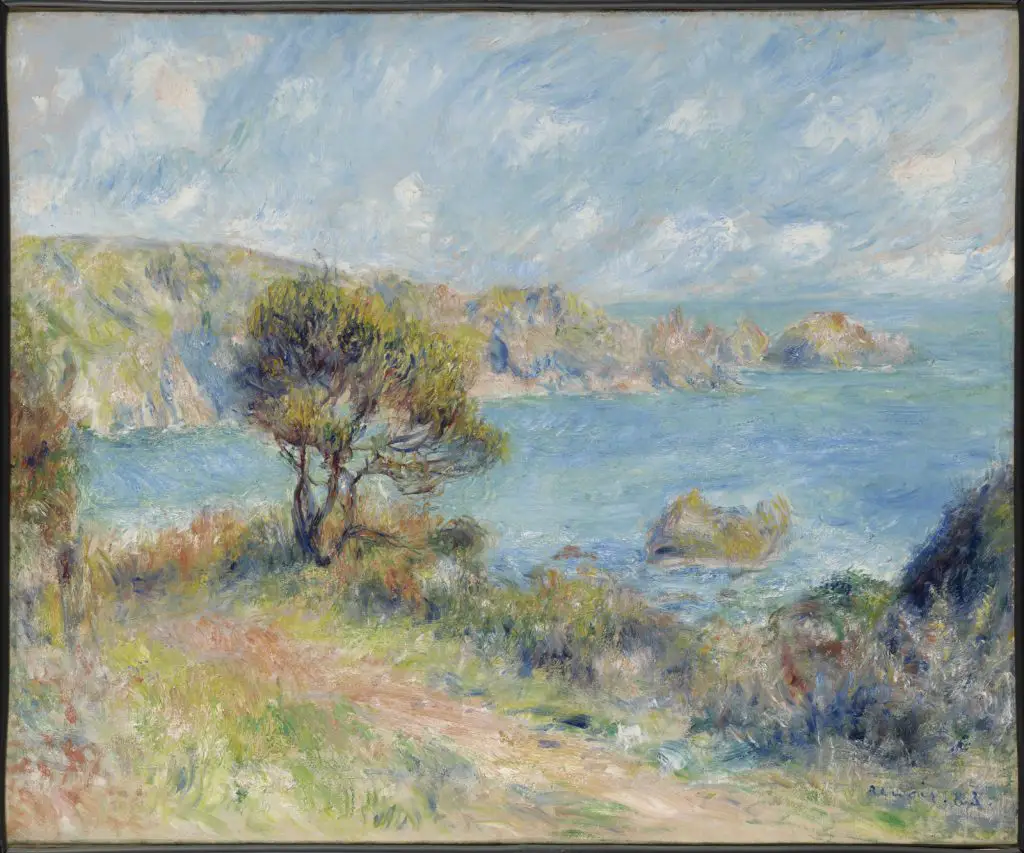
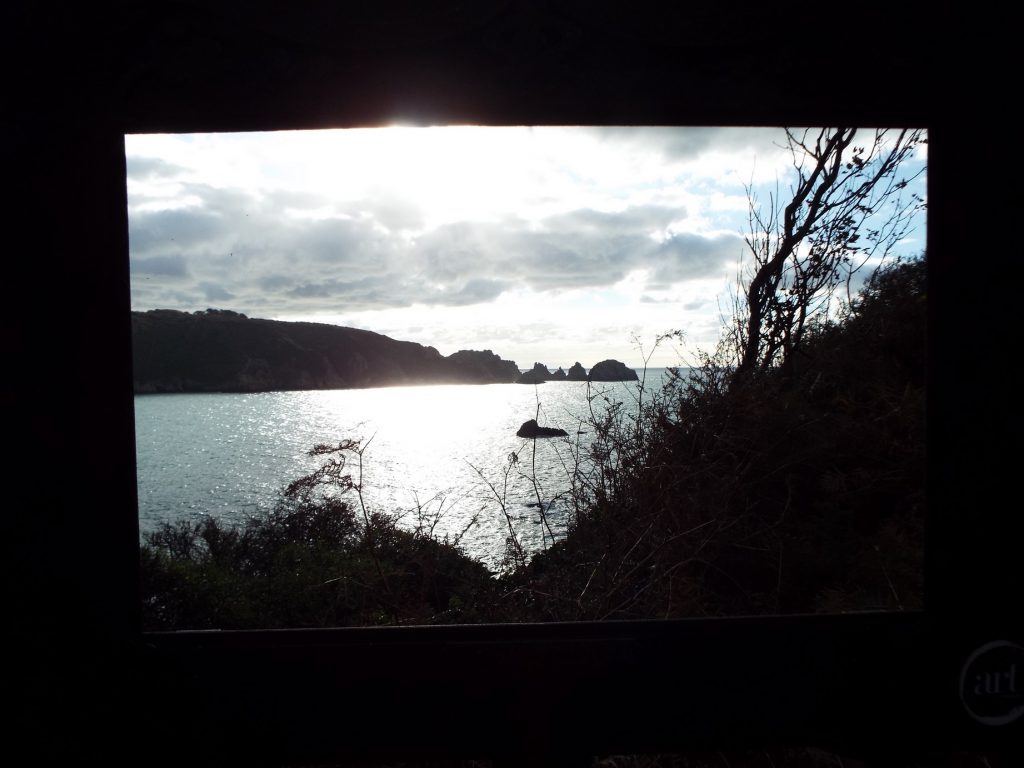
Victor Hugo’s Hauteville House
The French author Victor Hugo spent some 15 years on Guernsey from 1855 to 1870, when he decided to live in exile from his home country following Napoleon III’s coup d’etat in 1851 (Hugo lived in Belgium and Jersey before moving to Guernsey). He wrote extensively while on the island and many believe that his time there was his most productive period, indeed Les Miserables was published during his time on the island. He dedicated Les Travailleurs de la Mer to ‘the rock of hospitality and freedom.’
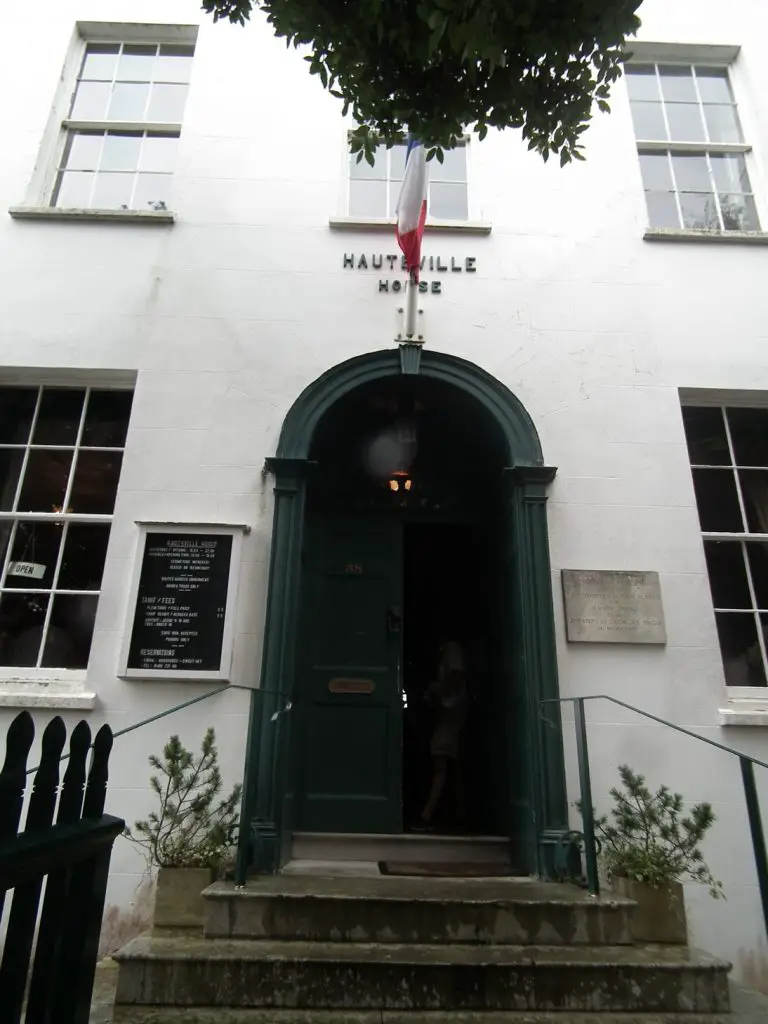
If you visit Guernsey you can tour his former residence, Hauteville House, in St Peter Port
Hauteville House offers a fascinating glimpse into his lifestyle because Hugo decorated the home himself.

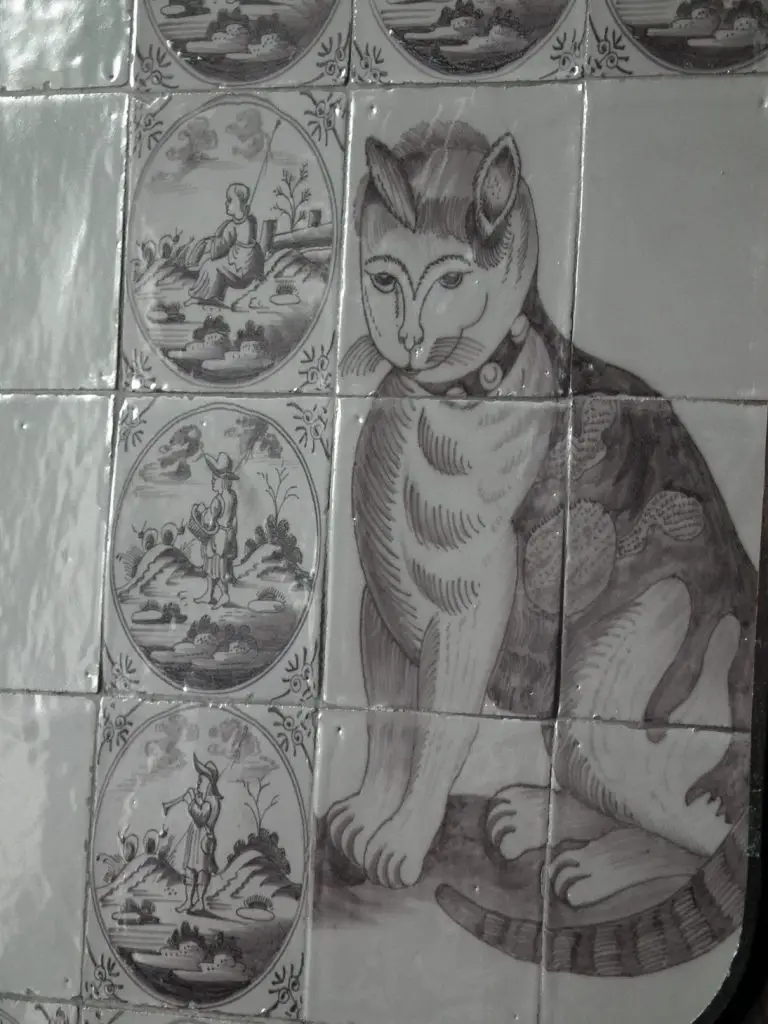
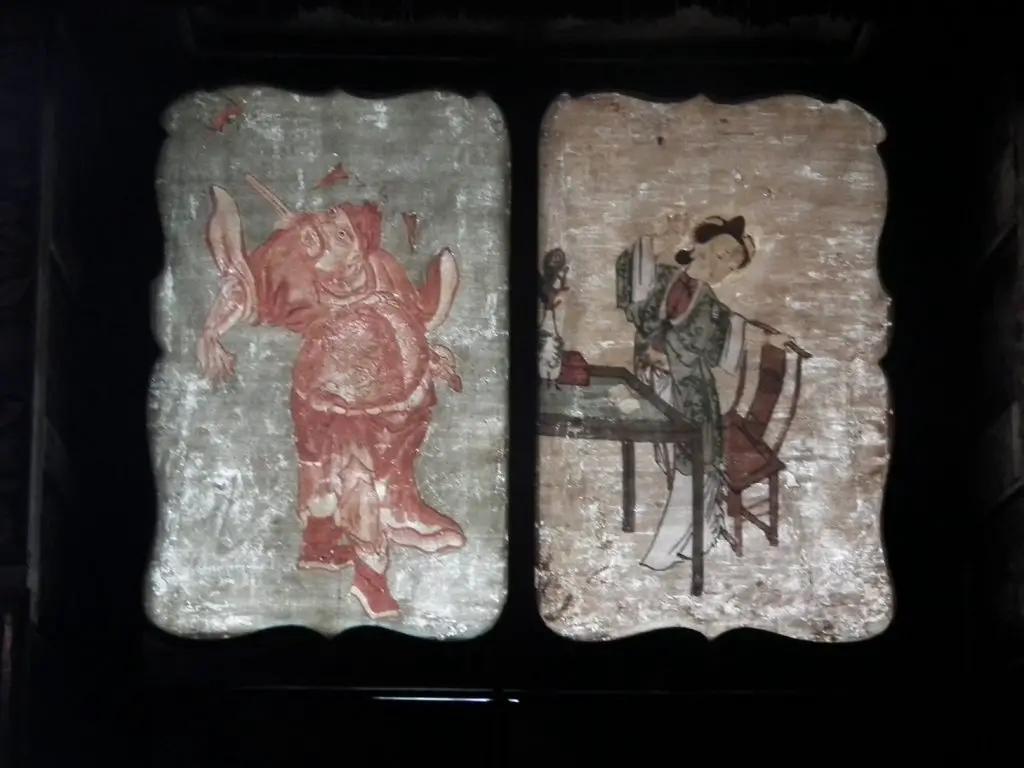

We were particularly taken with the dinner plates on the ceiling!
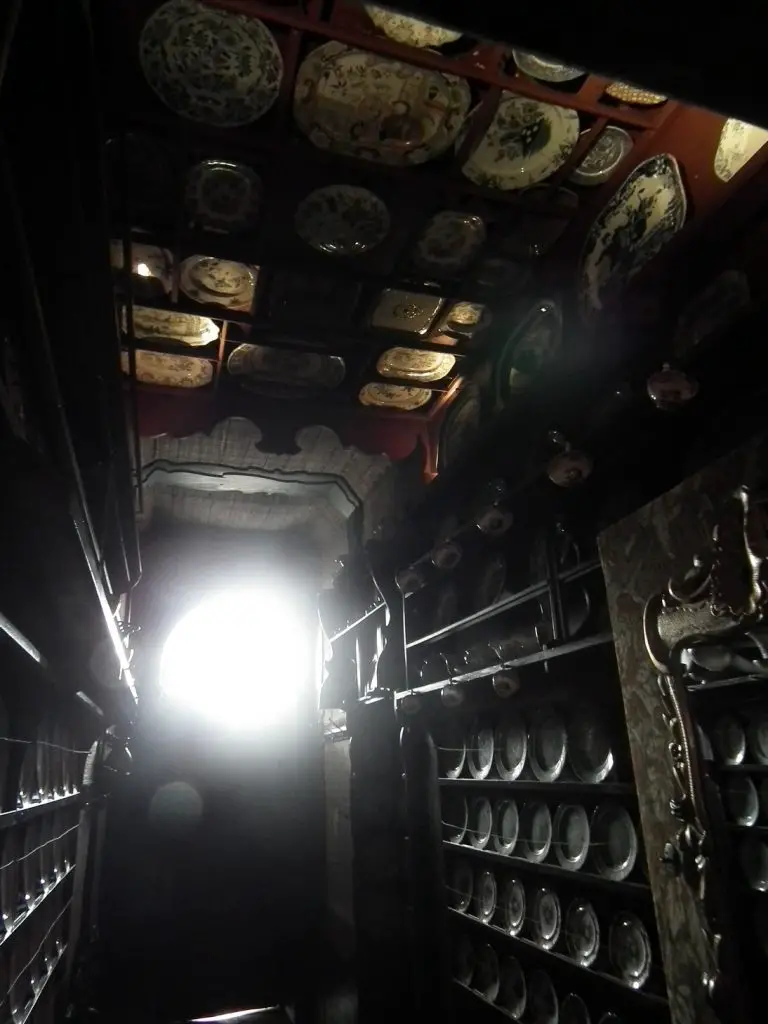
It is also possible to stroll around the garden of Hauteville House.
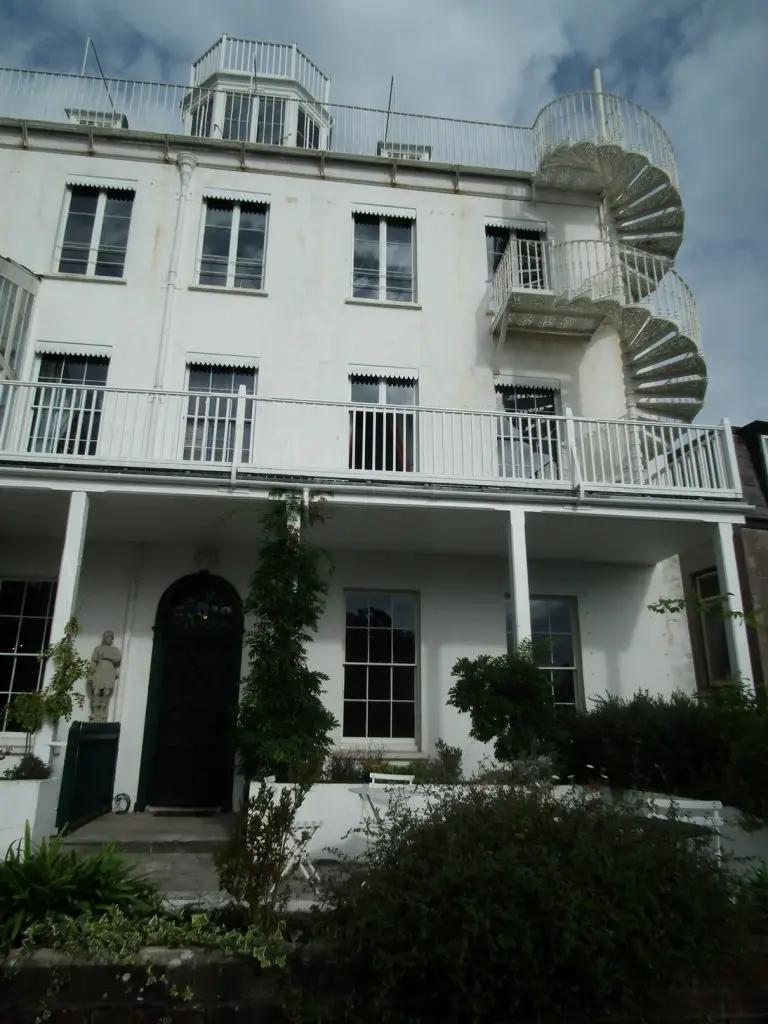
Guernsey Sculpture Park
Another artistic activity when you visit Guernsey is to walk around the sculpture park in the grounds of Sausmarez Manor. It’s located on Sausmarez Road in St Martin, a short bus ride away from St Peter Port.
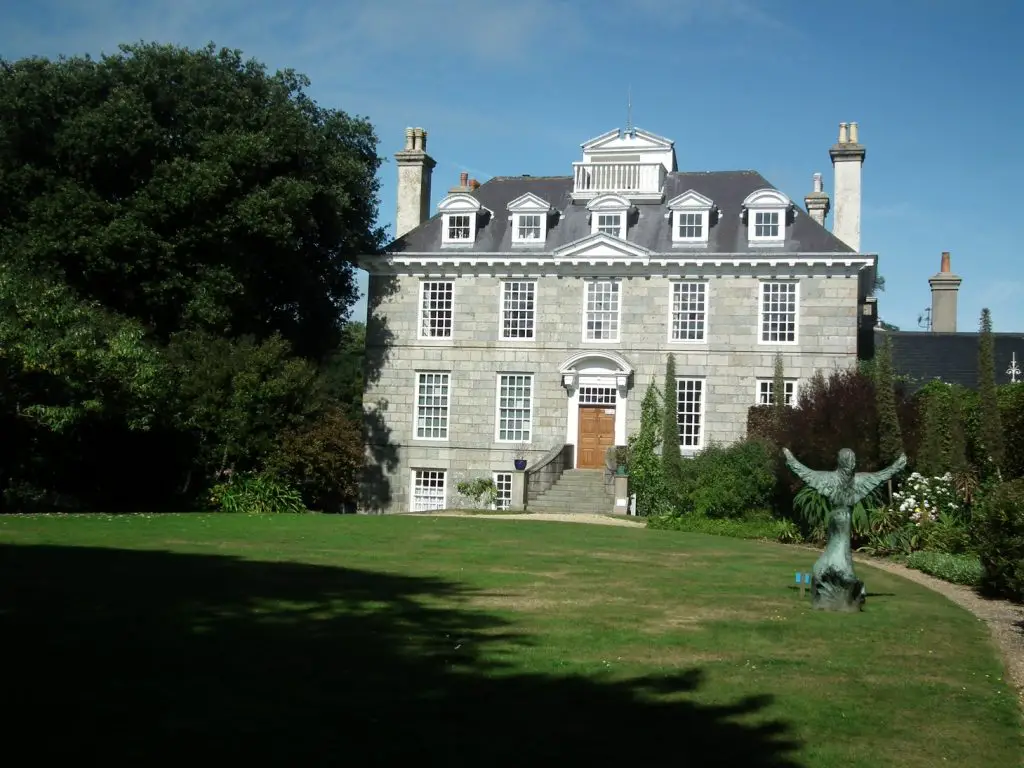
You can follow the ArtParks trail through a lovely woodland and view a couple of hundred sculptures from artists all over the world. You can even buy some of the sculptures if any take your fancy.
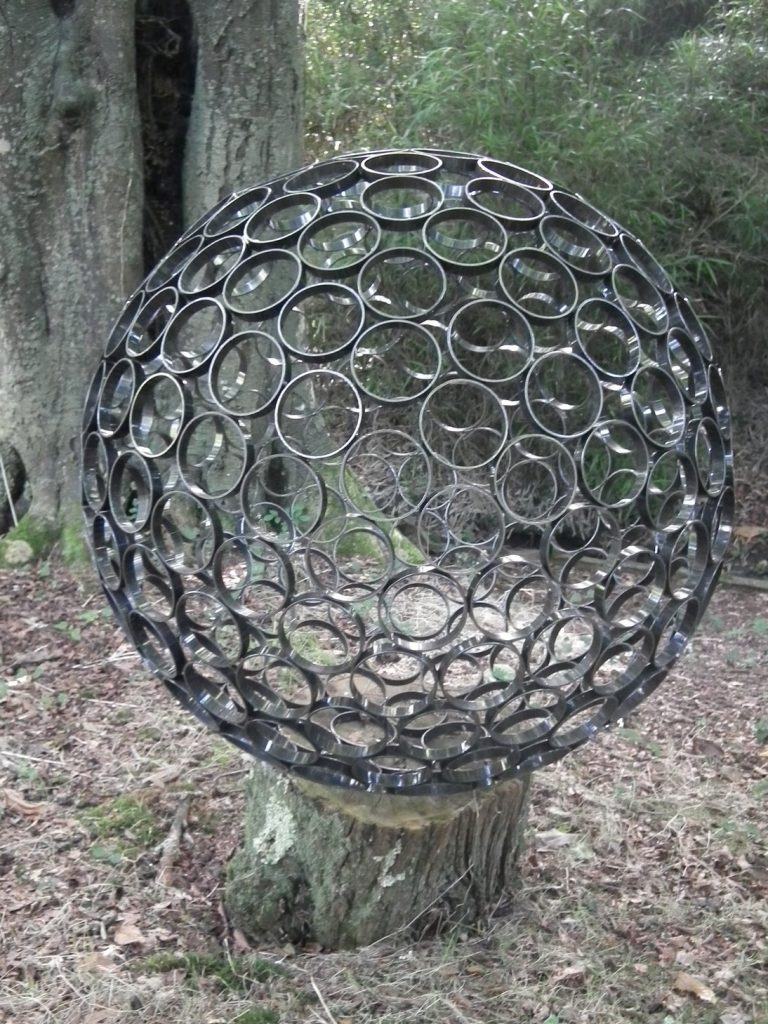
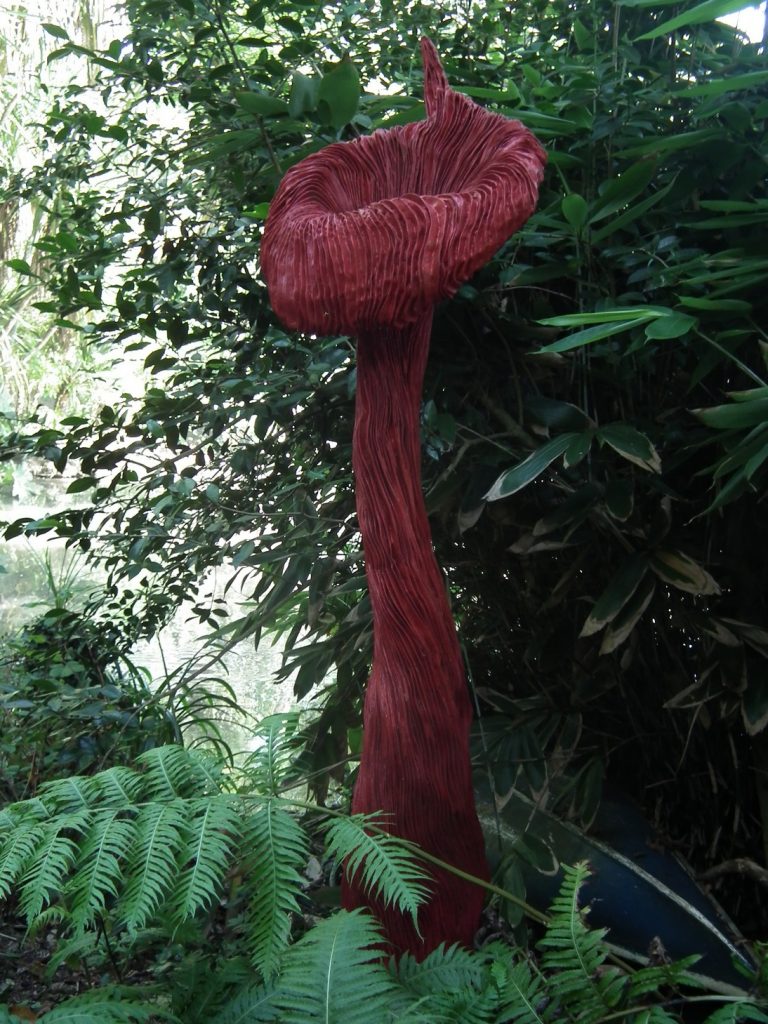
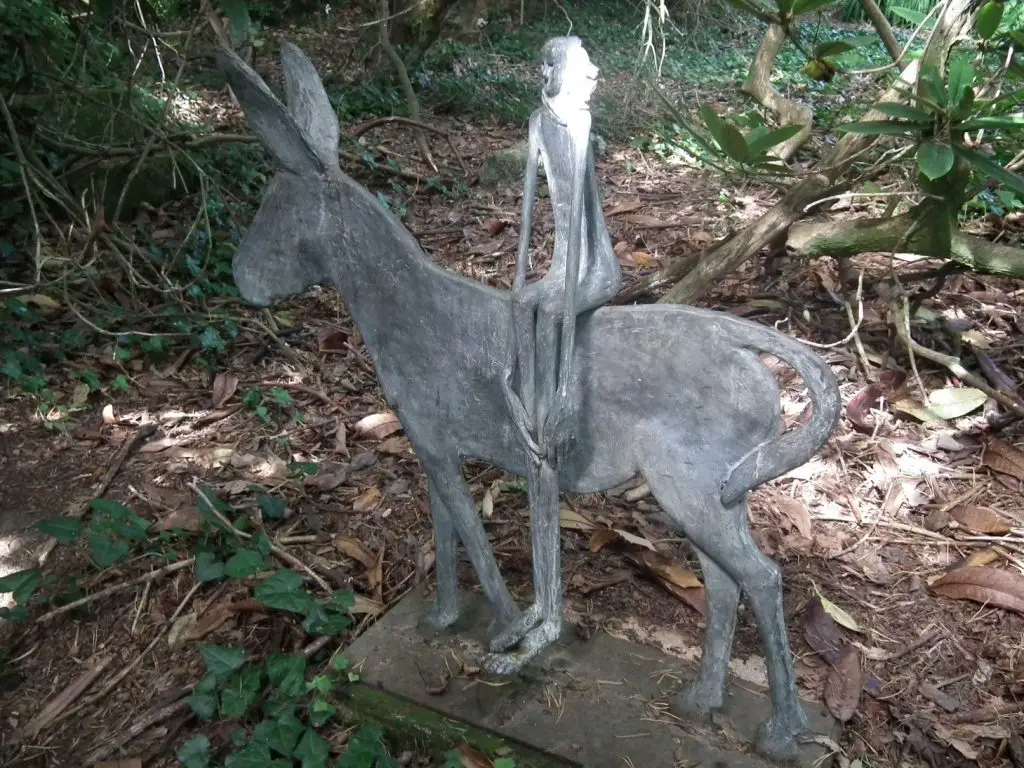
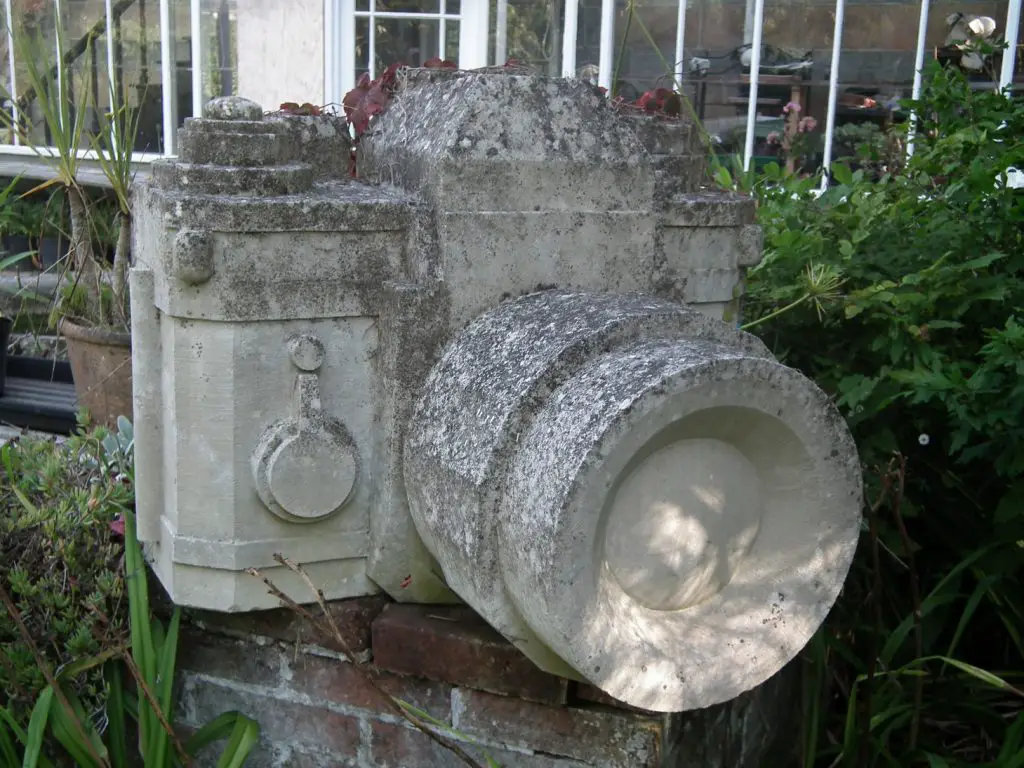
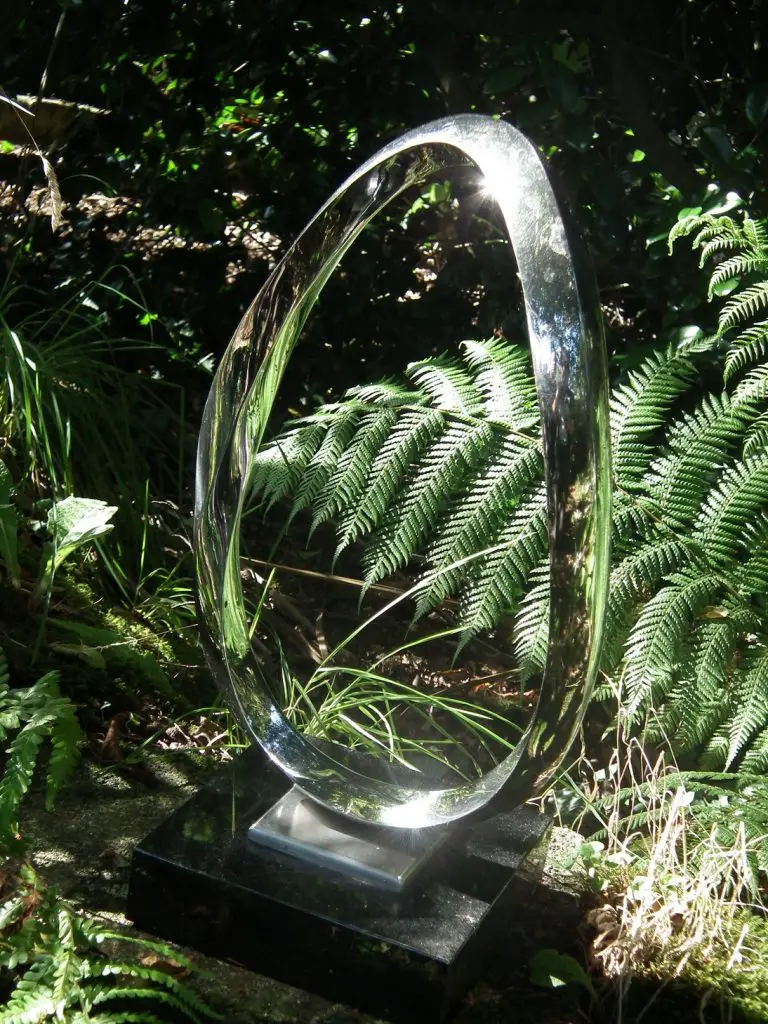
Visit Guernsey – The Candie Art Gallery
The Candie Art Gallery is small but perfectly formed. It has a statue of a striding Victor Hugo in the gardens.
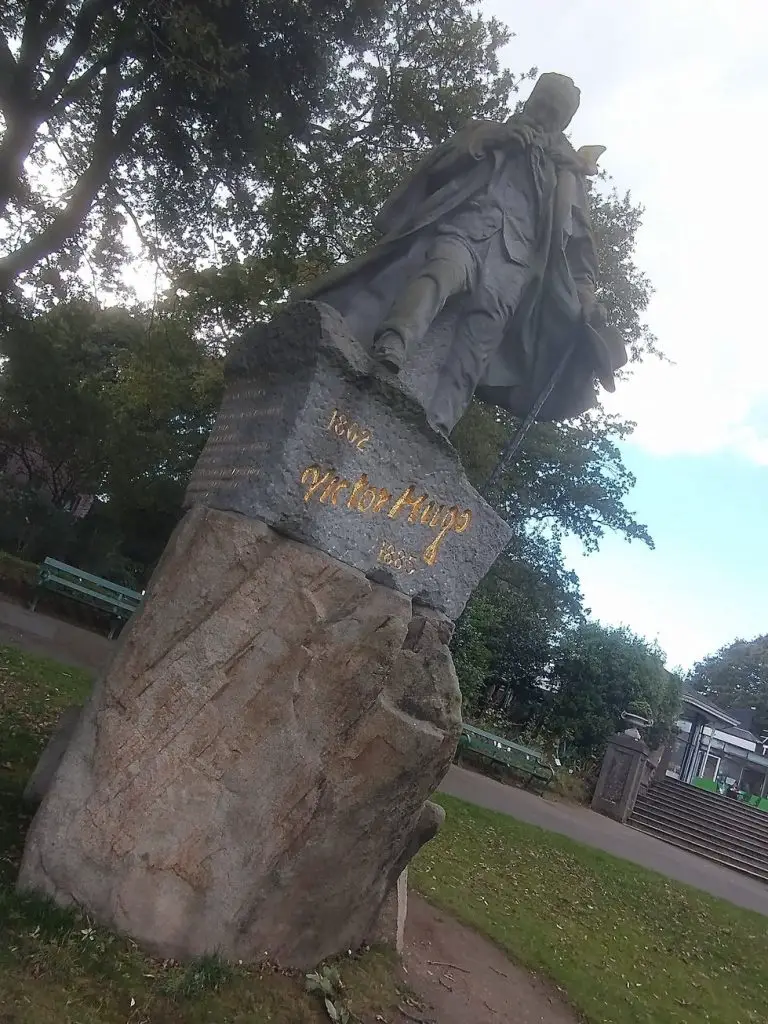
The gallery is part of a wider arts and museum complex, which also includes exhibitions on the island’s history and a highly interactive folklore exhibit which features a recreation of an early 19th century Guernsey cottage (complete with appropriately creepy mannequins) and stories of local legends. Some of the stories are fascinating.
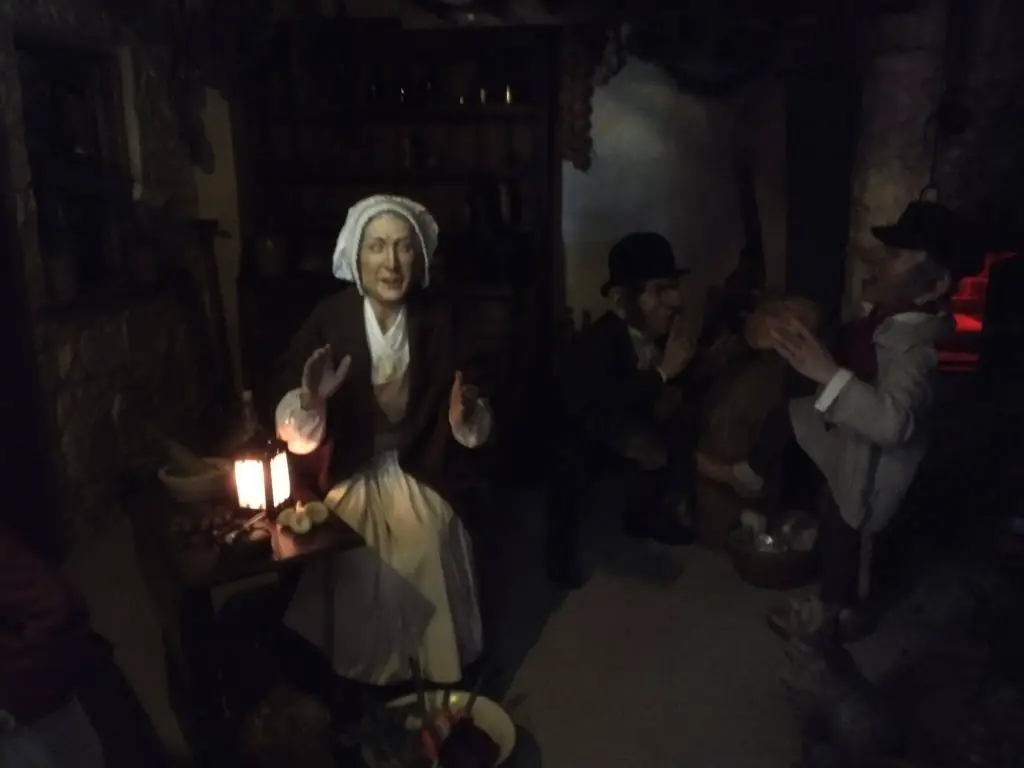
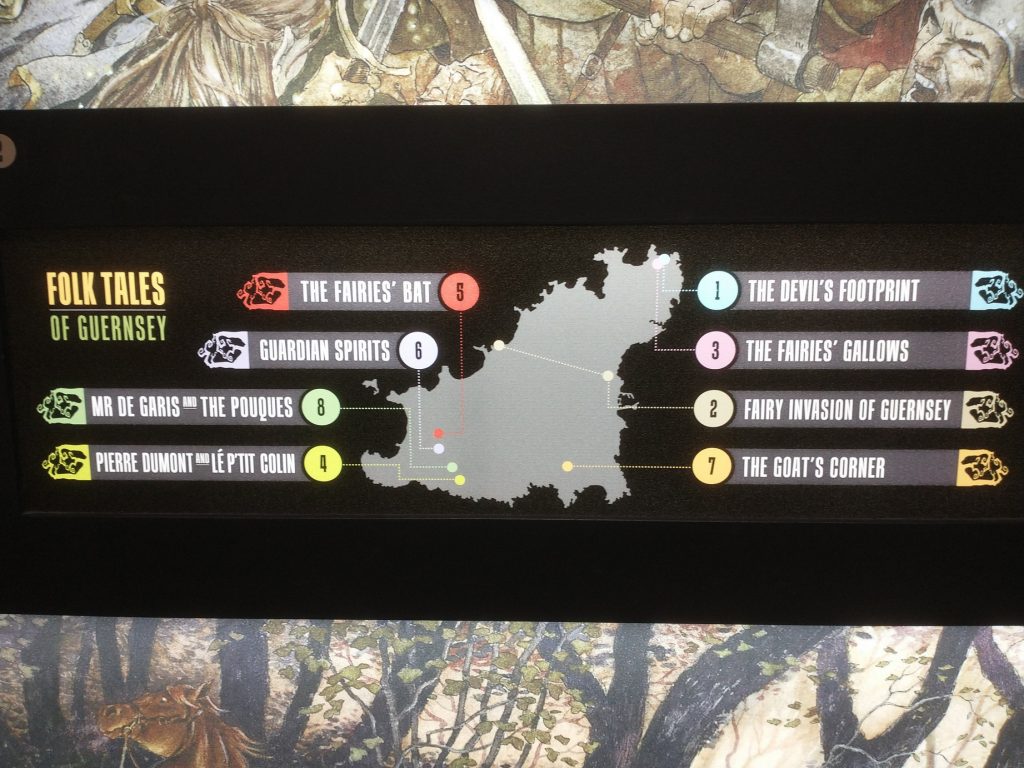
There is also a permanent exhibition art space.
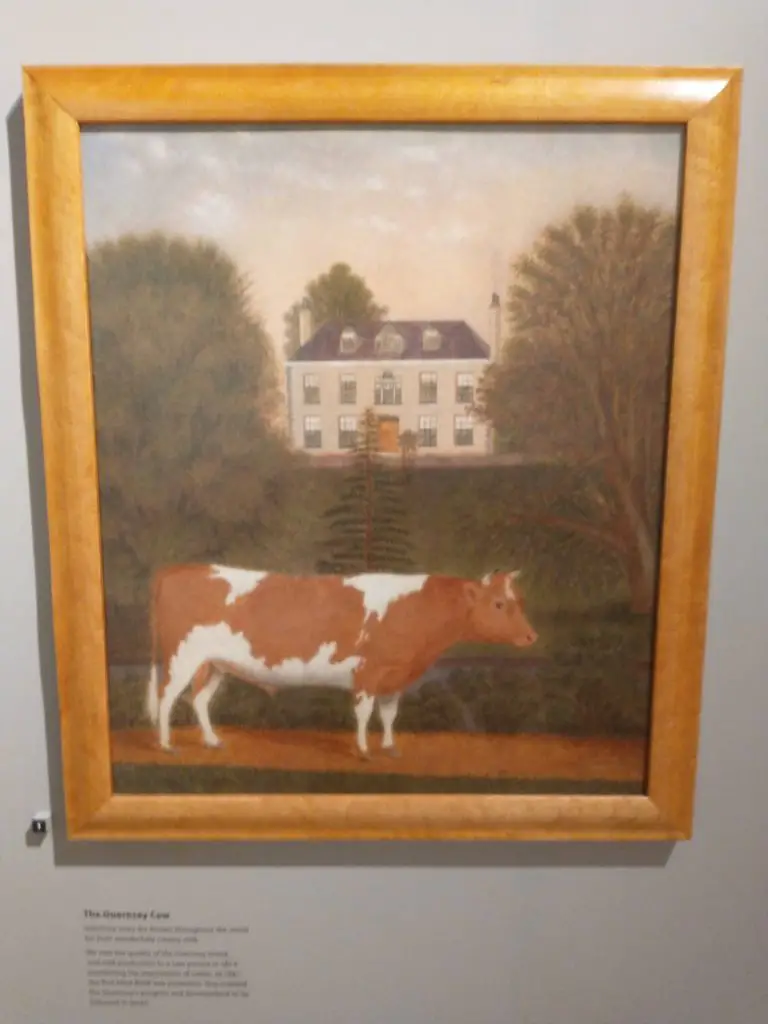

The teeny gallery presents a number of paintings depicting the Bailiwick in chronological order as you circle the exhibition space.
It also hosts some temporary exhibits and there were a couple of very famous names on display when we visited in 2018 – including a Damien Hirst and Yayoi Kusama.

Saumarez Park has a fascinating National Trust Folk & Costume Museum which features a number of exhibits from Guernsey’s history. And there are a number of art galleries on the island, including the Coach House Gallery in St Pierre du Bois as well as Iris And Dora in Ruettes Brayes, St Peter Port. St James The Less, a 200 year-old former church in College Street, St Peter Port, also has a variety of cultural events on offer, including visual art exhibitions and musical performances.
Potato Peel? In a Pie? Literary Guernsey
The Guernsey Literary and Potato Peel Pie Society is a 2008 bestselling novel that was adapted into a film directed by Mike Newell in 2018. It is a historic drama set during the occupation of the Channel Islands in World War 2. It is possible to go on a tour to see some of the locations mentioned in the book. And if you are interested in the history of the occupation there is the German Occupation Museum which is located close to the island’s airport.
Guernsey also has a Literary Festival, this year running from 11th May to 26th June. It offers plenty of events running throughout the duration of the festival, with lots of guest authors visiting the island to give talks, as well as a writing competition for students in the Bailiwick.
Visit Guernsey – The Art of Dining
Guernsey also has a fantastic food scene. While there are great restaurants all over the island, the pretty capital St Peter Port has a plethora of excellent eateries.
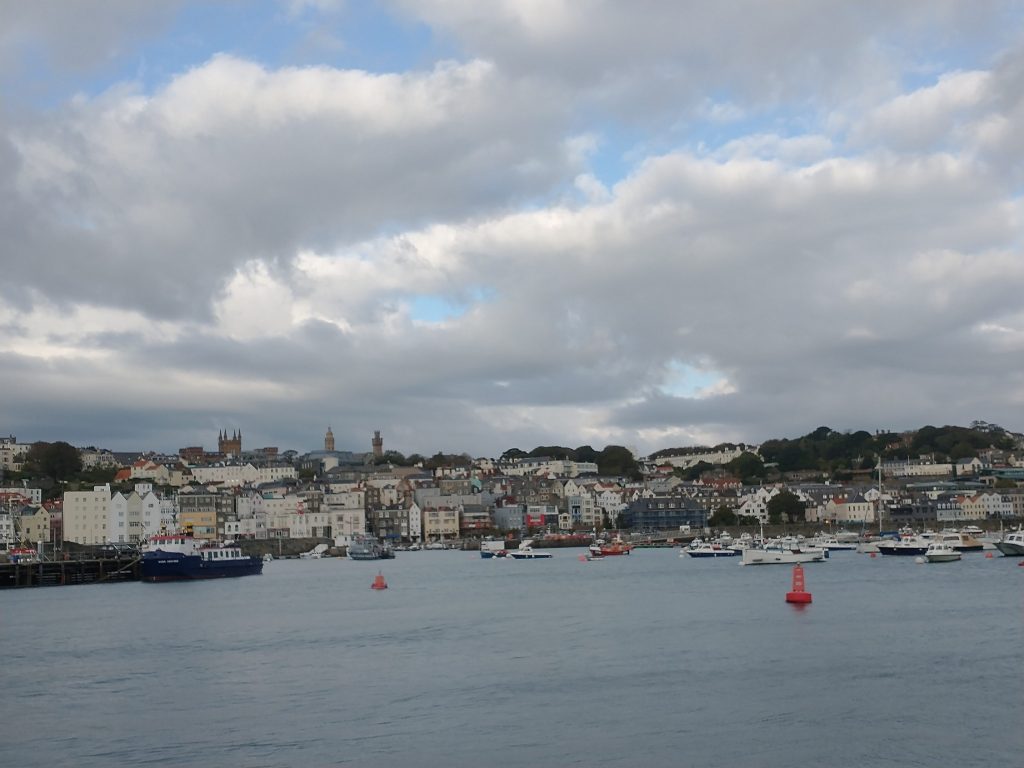
Every October the island has a Tennerfest whereby restaurants, hotels, pubs and cafés will put on a special fixed priced menu and offer people the chance to eat out for a much cheaper price than normal. Make sure you to get a reservation, though, the event is really popular and the best emporia will be fully booked. Being an island, the seafood is superb.

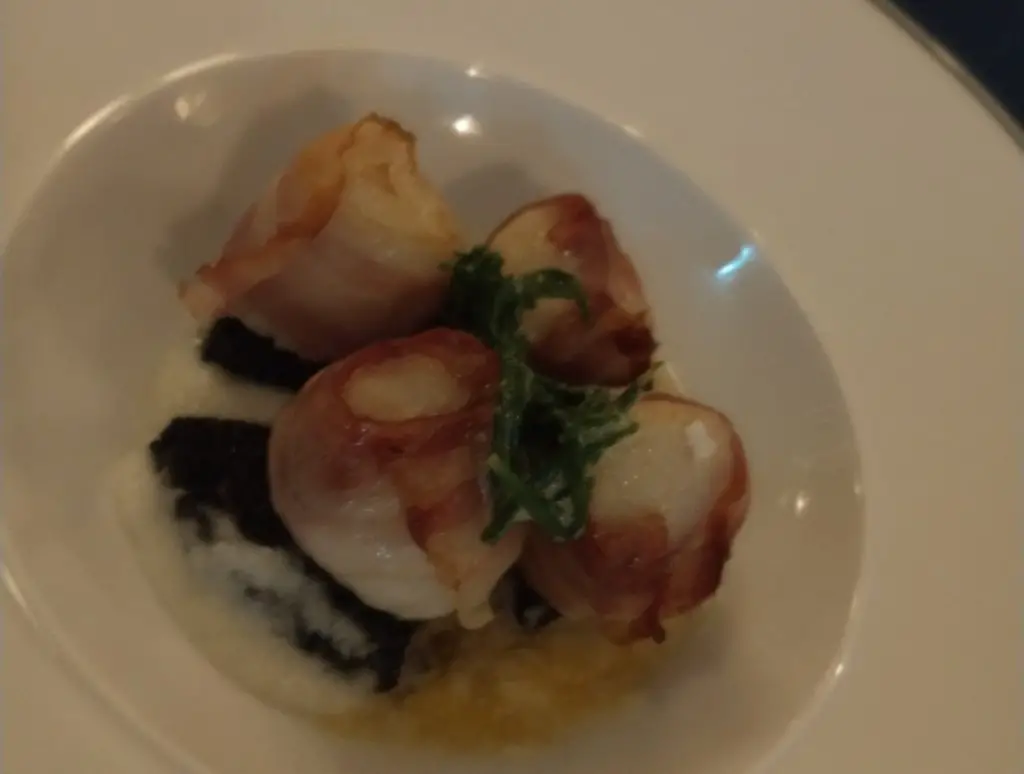
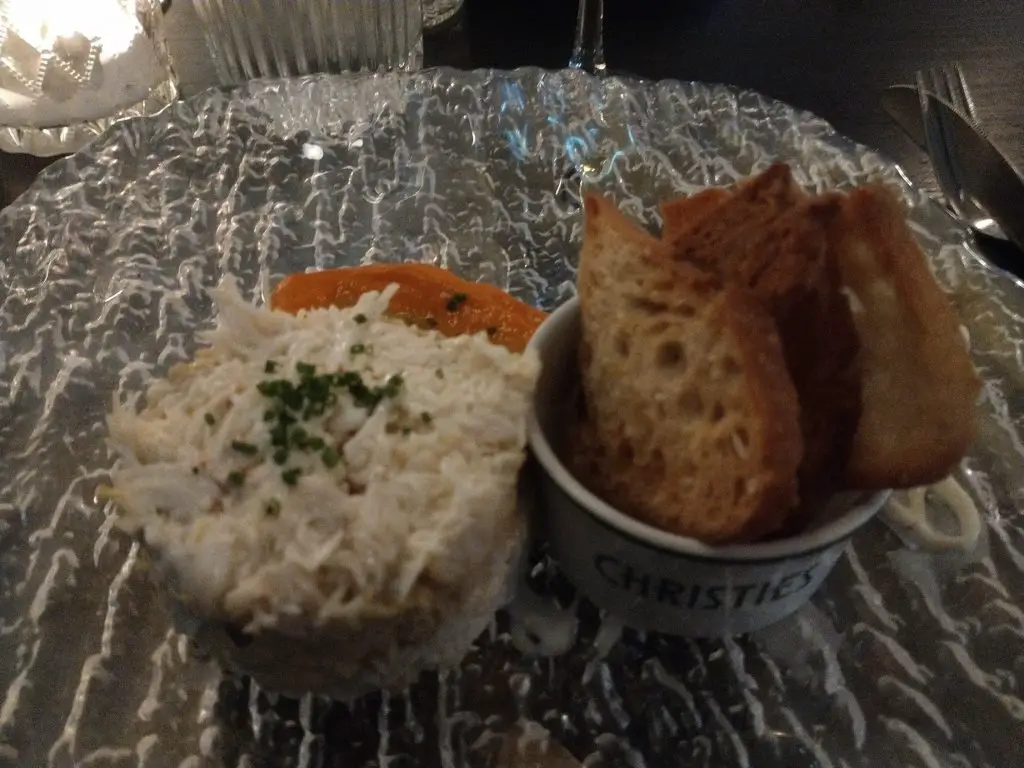
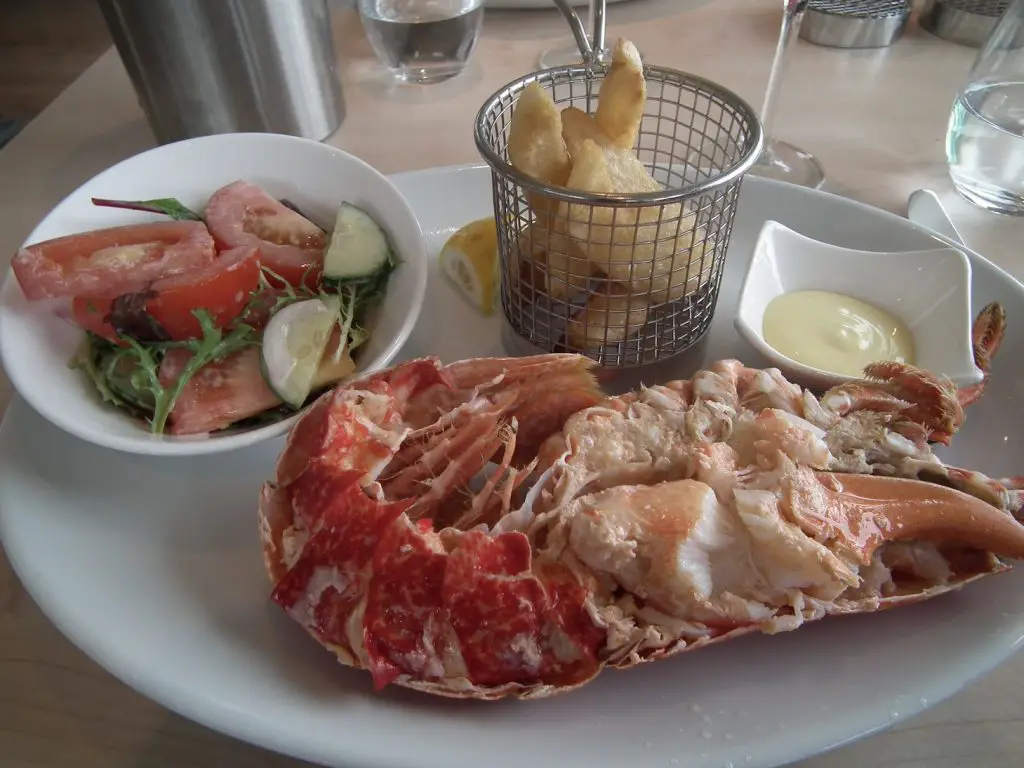
Related Posts You May Enjoy

RECIPE: How To Make Wild Garlic Pesto
Spring is a fantastic time of year for walking in the English countryside. The weather is often warmer and the blossom on the trees provides a wonderful backdrop. We even get a bit of sunshine sometimes! It’s also a great time for foraging for the spring greens that start growing – there’s nothing like picking free food whilst on a walk. At the moment, nettles, ground elder, three cornered leek, garlic mustard (aka Jack-by-the-hedge) are all flourishing and they can all be used to create and add flavour to delicious dishes. Wild garlic is our favourite and we have a fabulous recipe for wild garlic pesto.
There are some basic rules to foraging in the UK. You are allowed to pick flowers, fruit and leaves but you are not allowed to dig up roots (e.g. horseradish) unless you have the landowner’s permission. We never take more food than we need.
Wild garlic is an invasive plant and when it grows it spreads wildly, which is fantastic for a forager. It’s usually easy to recognise and has a very definite garlicky smell.

A few weeks after the leaves show through, delicate little white flowers will appear. These are edible too and have a very mild garlic flavour – they make a fantastic edible garnish. The buds can also be pickled and can be used as substitute for garlicky capers.

If you are foraging it is really important that you are 100% sure of what you are picking. Never eat anything if you are not certain about what it is. Many plants are poisonous and some can look very similar to edible species. Beware: there is a plant which looks very similar to wild garlic when it’s young and just peeping through the soil. Arum maculatum, also known as Lords and Ladies, is very toxic. Apparently even putting the leaves into your mouth will result in an immediate burning sensation. It sometimes grows worryingly close to the wild garlic. When it’s more mature it develops shiny arrow-head shaped leaves but when young, looks very similar to wild garlic.


Bluebells, or their white-flowered counterparts, which can also easily be confused with wild garlic’s white flowers, can also grow nearby. Bluebells are extremely pretty but also poisonous.
Whenever we gather wild garlic we go through a process of washing it thoroughly and checking each leaf when we get home.
Wild Garlic Pesto Recipe
This is a recipe that is not at all accurate – it’s one where you can fling the ingredients together and end up with something delicious. Our wild garlic recipe uses cashew nuts instead of pine nuts. They are a lot cheaper and add a lovely creaminess to the pesto.
Ingredients
Bunch of wild garlic leaves
Handful of cashew nuts
Chunk of Parmesan or Grana Padano cheese
Slosh of extra virgin olive oil
Squeeze of lemon
Pinch of salt
Method
Roughly chop the wild garlic leaves and place into a blender. Throw in the nuts. Roughly chop the cheese into chunks and add these. We recommend adding the leaves first – to the bottom of the blender – so that the weight of the nuts and cheese ensures they get chopped up more finely.
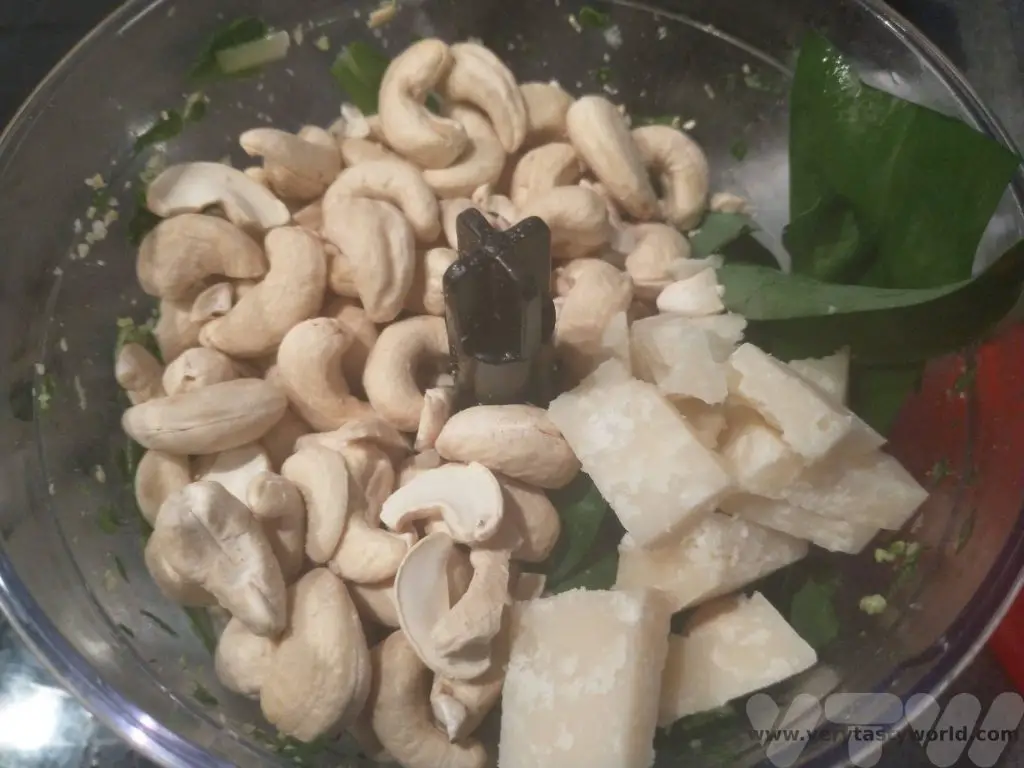
If you are planning to eat the pesto right away, add the oil, lemon juice and salt. The pesto freezes really well but if we are planning to freeze it we don’t add the oil or seasoning; instead we stir it in once it has defrosted.
Blend together until you get the texture you like – smooth or nutty – both work well.
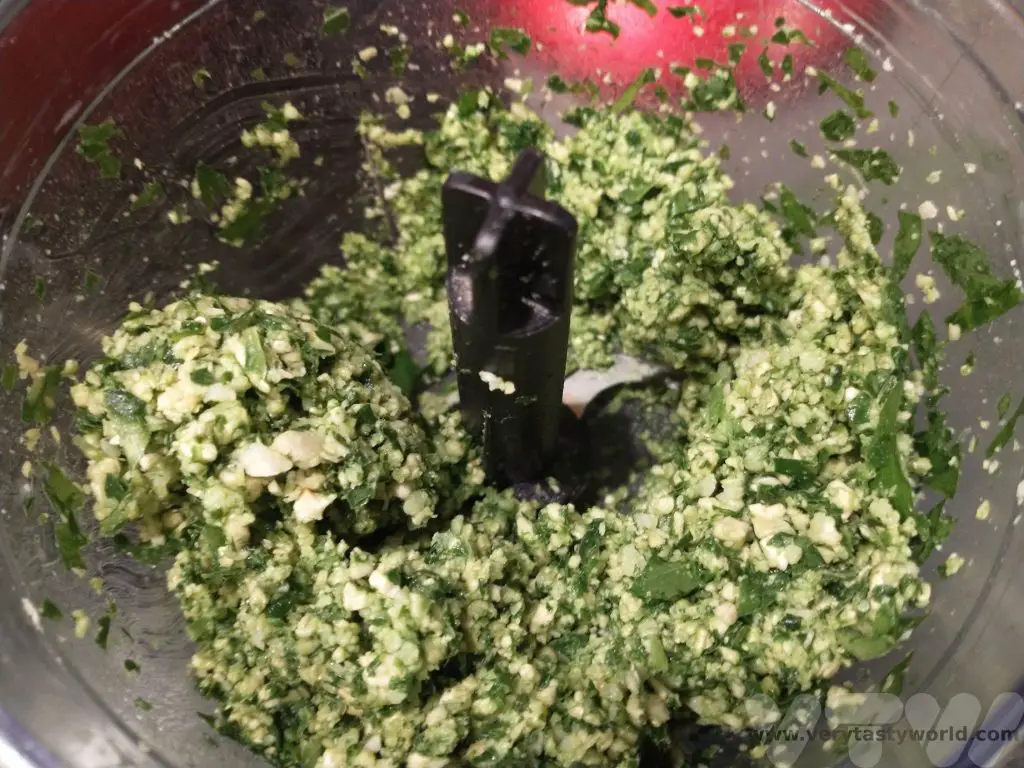
If you are planning to freeze the pesto, decant into containers and pop into the freezer. We recycle plastic takeaway containers as they provide the perfect portion for two people.
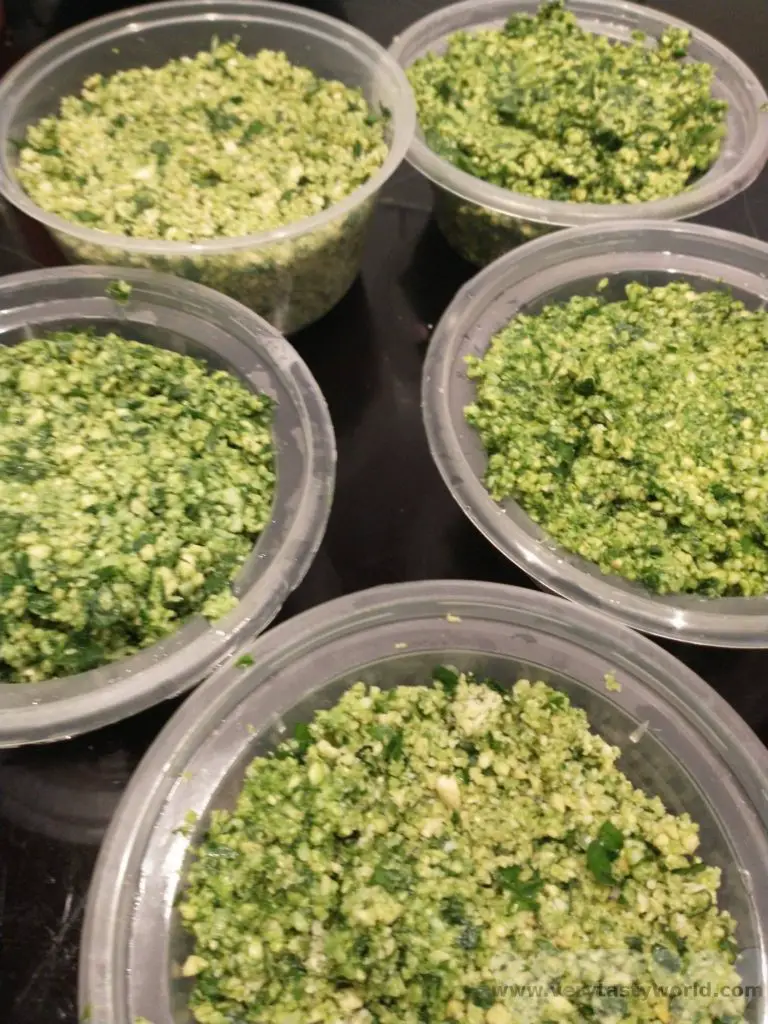
We’ve tried variations using pistachio nuts and nutritional yeast, which can replace the cheese in order to develop a vegan version. Pistachio are more nutty in texture and their flavour is more pronounced in the finished pesto.
The great thing about this recipe is that is so easily adaptable – mix and match ingredients. It’s the underlying gentle garlicky flavour that the wild garlic leaves produce that make this such a brilliant pesto. We’ll be foraging and freezing for as long as the season lasts.
Related Posts You May Enjoy

- RECIPE Oyakodon Donburi
- Zero Waste Recipes Before Your Holiday
- RECIPE: Vegetable Biryani Tamil Nadu Style
- RECIPE: Vegan Wild Garlic Pesto
- Recipe: Venetian Pasta Sauce
- RECIPE: Biryani Raita Recipe
- RECIPE: How to Make Costa Rica’s Gallo Pinto
- Recipe: Japanese Simmered Pork Belly – Buta no Kakuni
- RECIPE: How to Make Umeboshi
RECIPE: How to Make Stinging Nettle Hummus
If there’s one thing that can ruin a walk in the lovely English countryside it’s stinging nettles. If you brush past them with bare skin you can get a painful sting which usually isn’t harmful for most people but hurts for a while. But you can exact revenge on them by eating them! Nettles are not only edible, they are highly nutritious – they contain iron, calcium and magnesium, as well as vitamins A and B. They are great in soup, can be dehydrated to make crisps, can be used like spinach in a variety of dishes such as stir fries and stews, and can also be used in dips and sauces. The process of cooking with them renders them harmless by getting rid of the sting. One of our favourite things to make with them is stinging nettle hummus and we have a recipe.
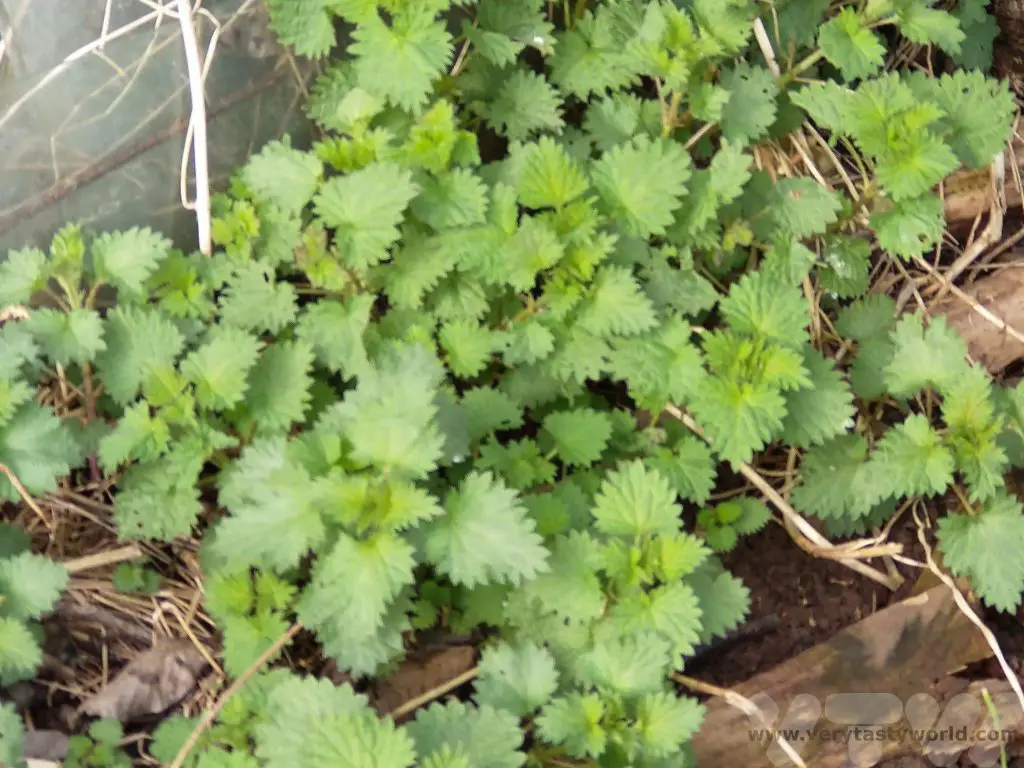
Despite them being found all over the British Isles nettles are not native plants, they were introduced by the Romans a couple of thousand years ago. Some stories suggest that they were used by Roman soldiers who would flog themselves with the nettle plants in order to use the stings to warm their skin in cold northern climes.
If you do get stung by a nettle there is a plant that you can use that helps soothe the pain. The standard view is that a dock leaf rubbed onto the sting will help. Actually it’s a plantain leaf (which used to be called dock in bygone times) which is more likely to help. Rubbing the sting with a dock leaf won’t harm but plantain will provide more relief.
It is the perfect time of year to go foraging for spring greens. We are already keeping an eye on our local patches of wild garlic, ground elder, mustard garlic, sorrel and three-cornered leek to see how they are growing, and also to plan lots of recipes for them. Stinging nettles are absolutely ready right now.
Preparing Stinging Nettles For Hummus
Go foraging for nettles. Try to find a patch where it’s unlikely that dogs may have been walking (just in case they have used that area for a toilet). Hardy foragers pick the nettles with their bare fingers but we use gloves to save ourselves from the stings. It’s best to pick in early spring to get the most tender leaves (the leaves will become quite tough as summer progresses). You need around half a carrier bag’s worth but you don’t need to be precise.
A word of warning – nettles are generally one of the easiest plants to identify but please be 100% sure that you have identified the correct plant. If you have the slightest doubt, don’t eat it. Plant identification apps aren’t always reliable either.
Wearing gloves, wash the nettles and have a look through them to see whether there are any leaves that should be discarded and look out for any insects to brush away. You can also make sure that no extraneous leaves from other plants. It’s quite common for grasses to end up in your bag as well.
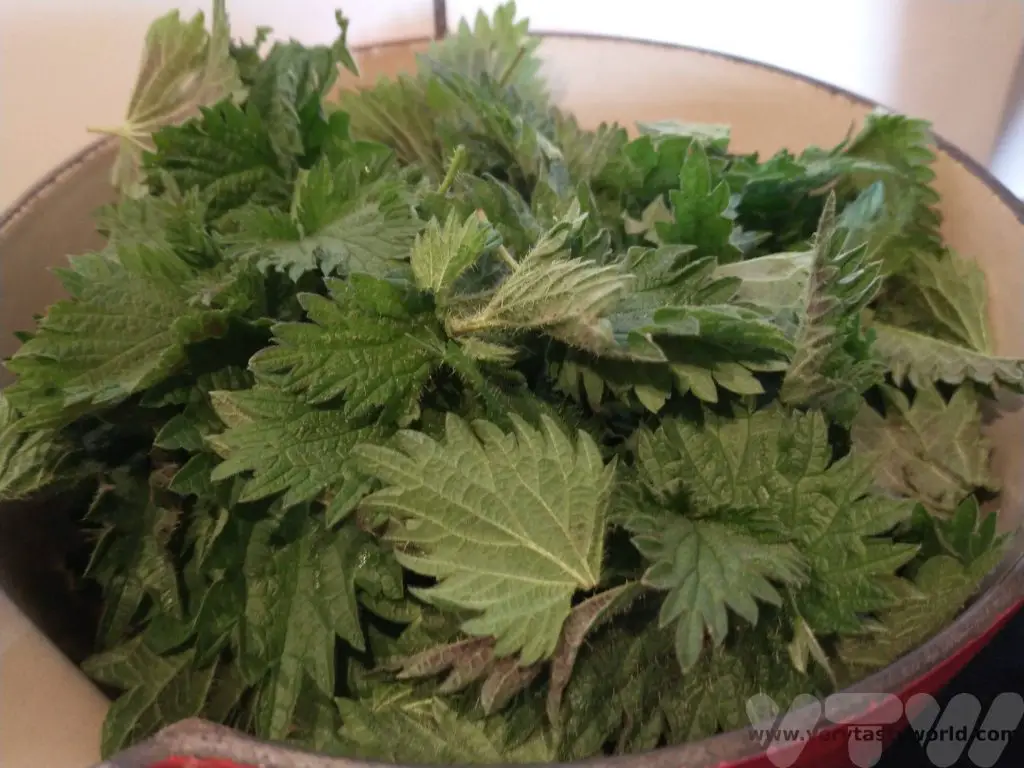
Place the nettles into a saucepan and pour boiling water over them to cover them. Stir for a minute or so. They will start wilting. This process gets rid of the sting and you can handle them with your bare hands from now on.
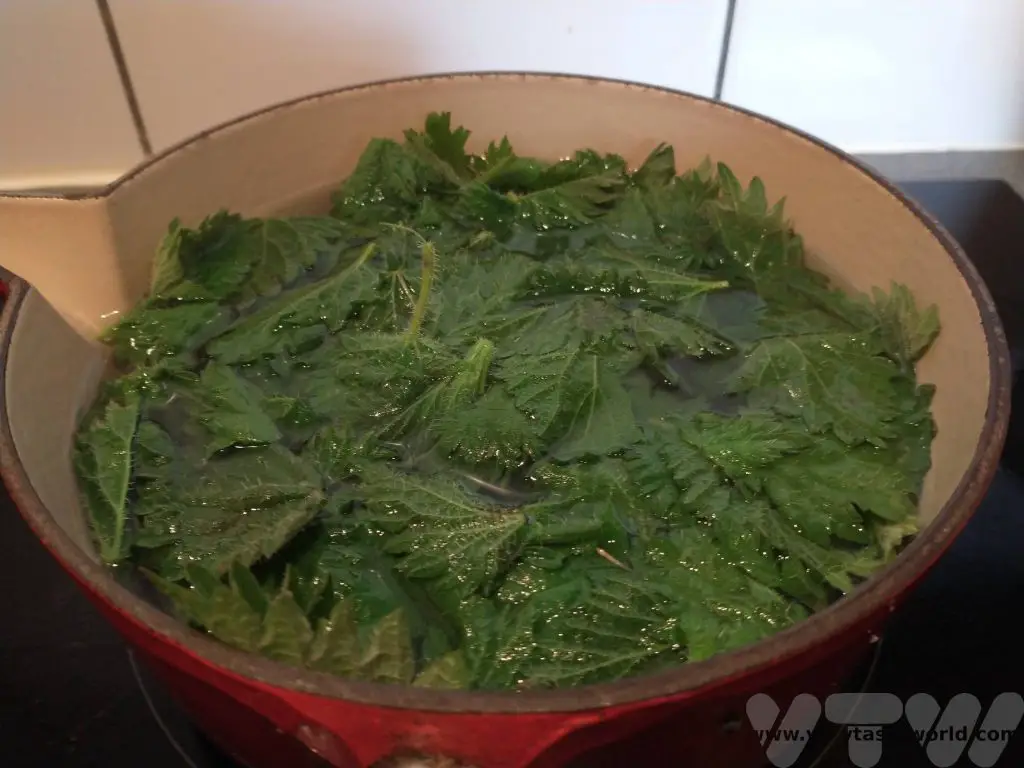
While they still have their lovely green colour, using a slotted spoon, transfer them into a bowl of cold water for a few minutes.
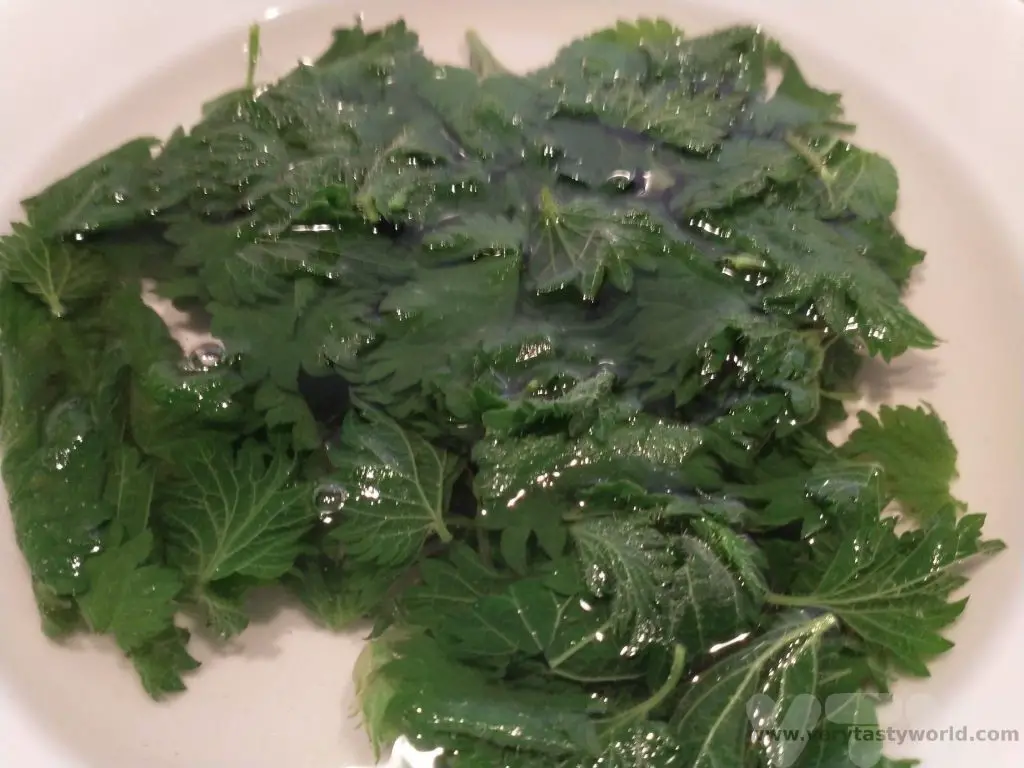
Keep the hot water from the saucepan and pour it into a mug – you can enjoy a nice cup of nettle tea, which has a mild, refreshing flavour and tastes a bit like green tea or coca tea. Then drain the nettles and let them dry naturally. They can then be used in our stinging nettle hummus recipe.

Stinging Nettle Hummus Recipe
Ingredients
Bowl of blanched stinging nettles
1 can of chickpeas, drained (if you’re keen to avoid food waste, you can keep the liquid, which is called aquafaba, which can be used to make vegan meringues)
1 large or 2 small cloves of garlic
Juice of 1 lemon
1 dsp peanut butter (you can substitute tahini, or omit completely if you can’t eat nuts)
Slosh of olive oil
Pinch of sea salt
Method
In a food processor or blender, combine the lemon juice, garlic and peanut butter. Give them a whizz.
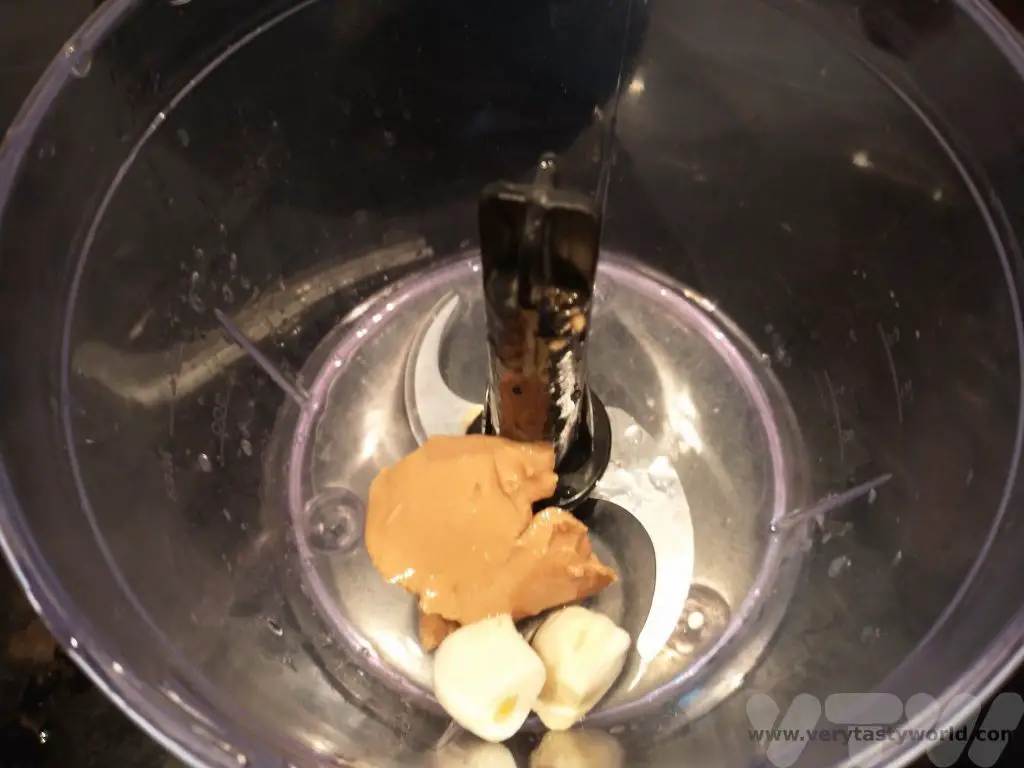
Add half the chickpeas and half the nettles with a slosh of oil and blend again.
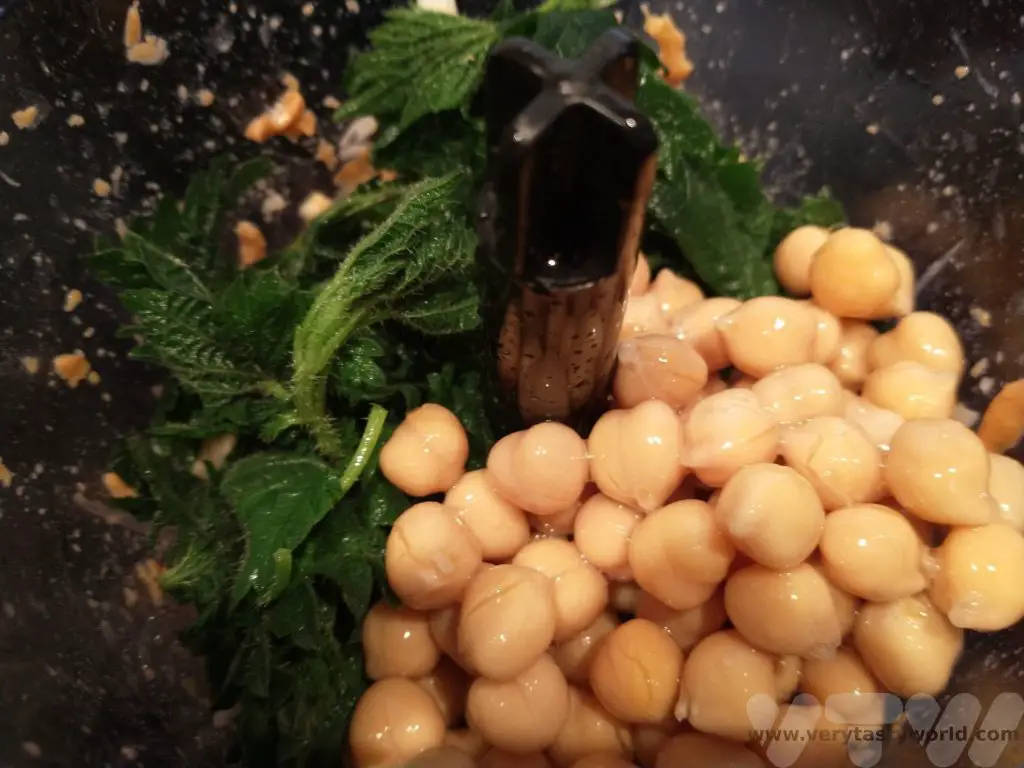
Scrape the sides of the bowl. Add the remaining nettles, chickpeas and a pinch of salt, and blend again.
Have a taste – does it need more lemon or salt? Add seasoning as necessary. We tend to like sour flavours so added the juice of an extra half lemon. You can decide how much you would like your blend depending on whether you prefer a smooth or chunkier texture.
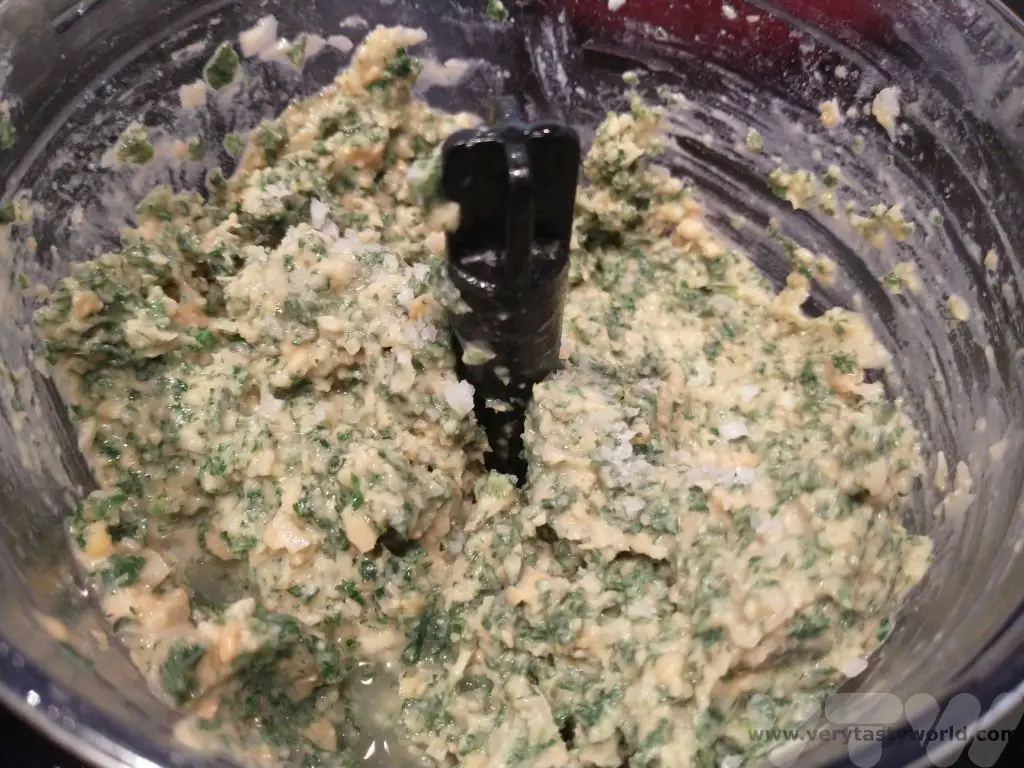
Decant into a bowl and serve with warm pitta bread.
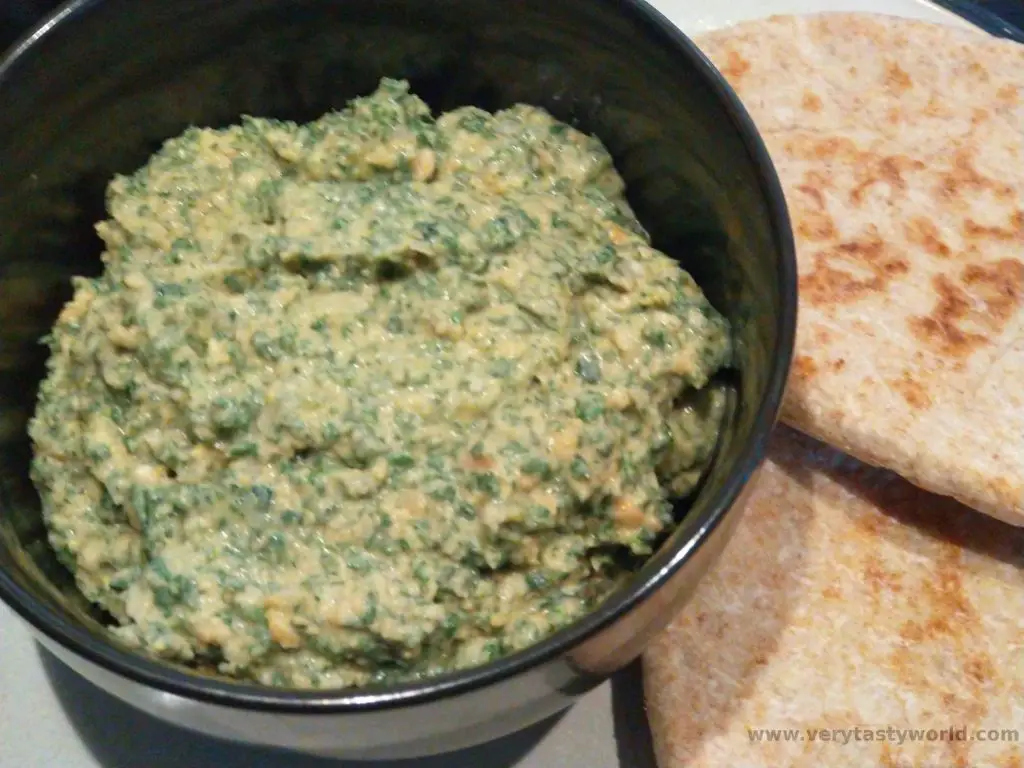
Related Posts You May Enjoy

- RECIPE Oyakodon Donburi
- Zero Waste Recipes Before Your Holiday
- RECIPE: Vegetable Biryani Tamil Nadu Style
- RECIPE: Vegan Wild Garlic Pesto
- Recipe: Venetian Pasta Sauce
- RECIPE: Biryani Raita Recipe
- RECIPE: How to Make Costa Rica’s Gallo Pinto
- Recipe: Japanese Simmered Pork Belly – Buta no Kakuni
- RECIPE: How to Make Umeboshi
Things to Do in Coventry
When you see travel guides to the UK Midlands they often mention the buzzing metropolis of Birmingham or the country towns of Warwickshire such as leafy Leamington Spa, historic Warwick with its castle, and Shakespeare’s Stratford-Upon-Avon. But the city of Coventry is often ignored, which is a shame because it has a lot of history. There are plenty of things to do in Coventry.
Sent To Coventry
Coventry has great transport connections and is easy to reach from all parts of the UK. It’s just an hour away from London on the train.
History of Coventry – From Capital of England to Ghost Town
Coventry has a long and rich history but little is known about its origins. It is thought that a settlement was established around a nunnery to St Osburga in Saxon times. The name is thought to have originated from the phrase ‘cofa tree’ although no one really know what a cofa is.
Coventry’s most famous legend is that of Lady Godiva who was the wife of the Leofric, Earl of Mercia, who had founded a Benedictine monastery in Coventry in 1043. Leofric was one of the most important people in the country and imposed crippling taxes on the citizens of Coventry. Lady Godiva took pity on them and asked her husband to reduce the burden but he refused… unless she agreed to ride through the city naked. Which she did. And, in gratitude, the people of Coventry averted their eyes… except for one person: the Peeping Tom.
There is a statue to Godiva in Broadgate and Peeping Tom can also be found in the vicinity if you look carefully.
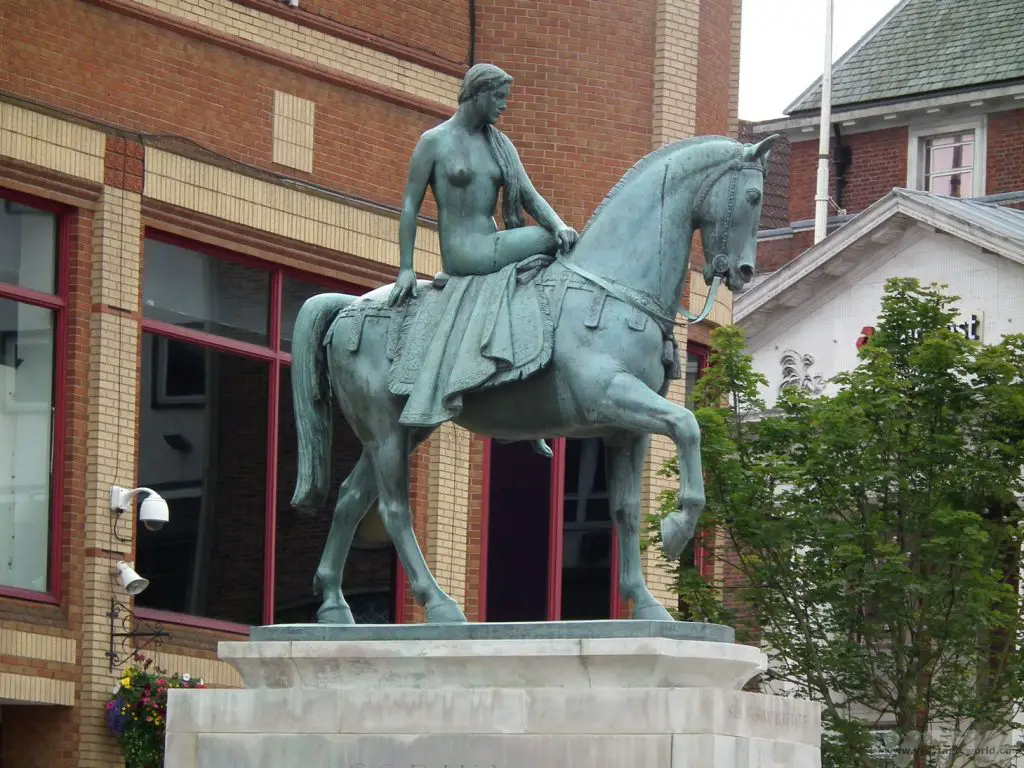
Coventry became an important trading location between 1150 and 1200 when merchants were allowed to visit the city and trade freely. The agricultural land surrounding the city was perfect for sheep grazing and wool production became an important industry. Textiles, weaving and dying in particular were very important and the Coventry’s blue coloured cloth (blue dye being a difficult colour to develop) was considered to be highly prized because of its ability to stay fast, coining the term ‘True Blue.’
Due to its importance as a centre of commerce a wall began to be constructed in the mid-14th century. Sandstone was quarried from the local district of Cheylesmore and a 3.5 km, 3.7m high wall was built around the city centre. It had twelve gatehouses located on the main routes into the city.
By the 15th century Coventry’s main churches had been constructed. St Michael’s Church, Holy Trinity and Greyfriars (Christ Church) all had magnificent spires which could be seen from miles away. The city actually became the capital of England, temporarily, on a few occasions. It was a wealthy city and considered to be hugely important by successive kings and queens of England.

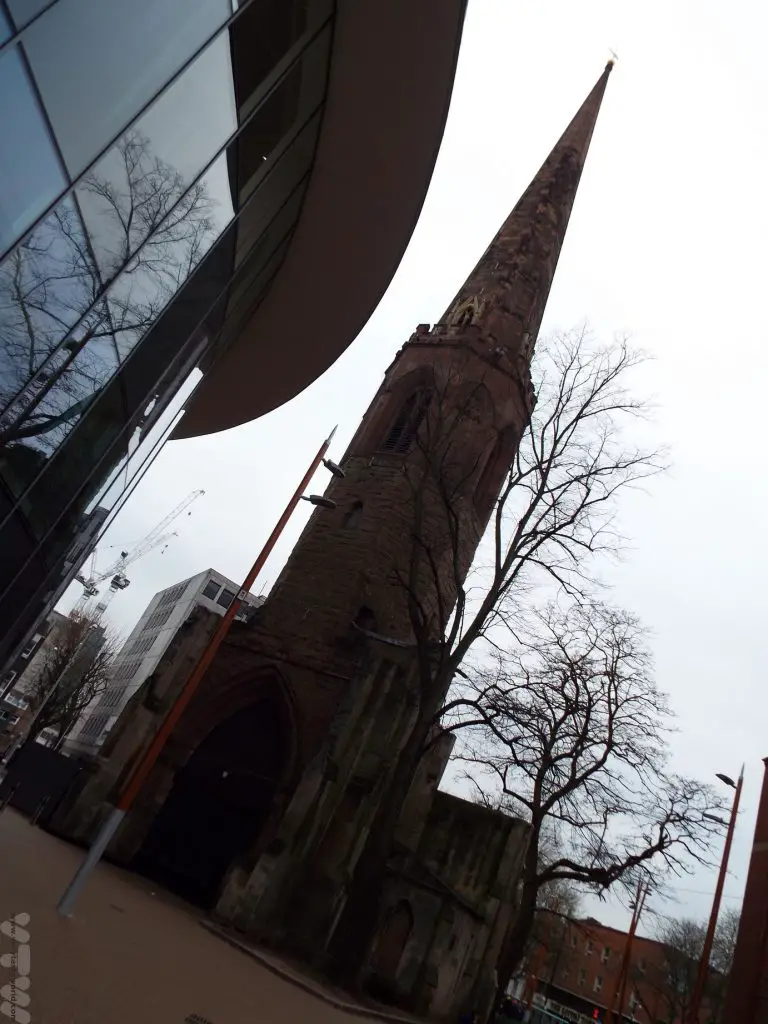

During the English Civil War, Coventry was a stronghold of Parliamentarians and was attacked by Royalists on several occasions but the king’s soldiers failed to conquer the city walls. The city was used as a prison for captured Royalists and those incarcerated were not just treated with disdain – they were ignored completely. It is thought that this is the origin of the term, ‘being sent to Coventry.’
As the industrial revolution started Coventry, with its central location, became an important city of industrialisation. It was renowned for manufacturing textiles and ribbons, watches (many of watchmakers lived in the Chapelfields area of the city), bicycles and cars. The first British series production motor car was made in Coventry, by Daimler, in 1897.
Despite the industrialisation, the city centre retained a lot of its mediaeval buildings. However, because of the industrialisation, the city was a target during World War 2. On the night of 14/15 November 1940 Hitler ordered a bombing raid on the city. Most of the city centre was destroyed, including the interior of St Michael’s cathedral, and over 500 people lost their lives. Coventry has since become a city of peace and reconciliation and has twinned with some 23 cities across the world, including Dresden and Volvograd (formerly Stalingrad), both cities which also suffered devastating attacks during World War 2.
Following the war the city was rebuilt and was designed to be a modern city – it included one of Europe’s first ever pedestrianised precincts. It has recently been refurbished.

The city thrived thanks to the car manufacturing industries during the 50s and 60s. Famous names include Jaguar, Standard-Triumph, Talbot, Peugot, and Alvis. London taxis – the iconic black cabs – were constructed in the city from the 1950s until 1994. However the industry – and consequently the city – suffered serious decline in the mid-1970s and 1980s due to industrial disputes and competition from other countries.
One by one the car factories closed down. In the early 1980s Coventry band The Specials wrote the song Ghost Town about the decline of the city. Bands such as The Specials, The Selecter and The Beat were part of the 2Tone movement which developed in Coventry and was defined by their members being multi-racial and a musical style that combined punk/new wave music with Jamaican ska.

These days, Coventry is a lively city. With two universities, it’s also a young city with a diverse population which has an average age of 33 years. It was also the 2021 UK City of Culture, the start of which was slightly delayed due to the pandemic.
Things to Do In Coventry – Places to Visit
Although much of mediaeval Coventry was destroyed it is possible to see some older buildings in the city. Mediaeval Spon Street is largely comprised of old buildings although not all of these were originally built on the site but were relocated from other parts of the city.
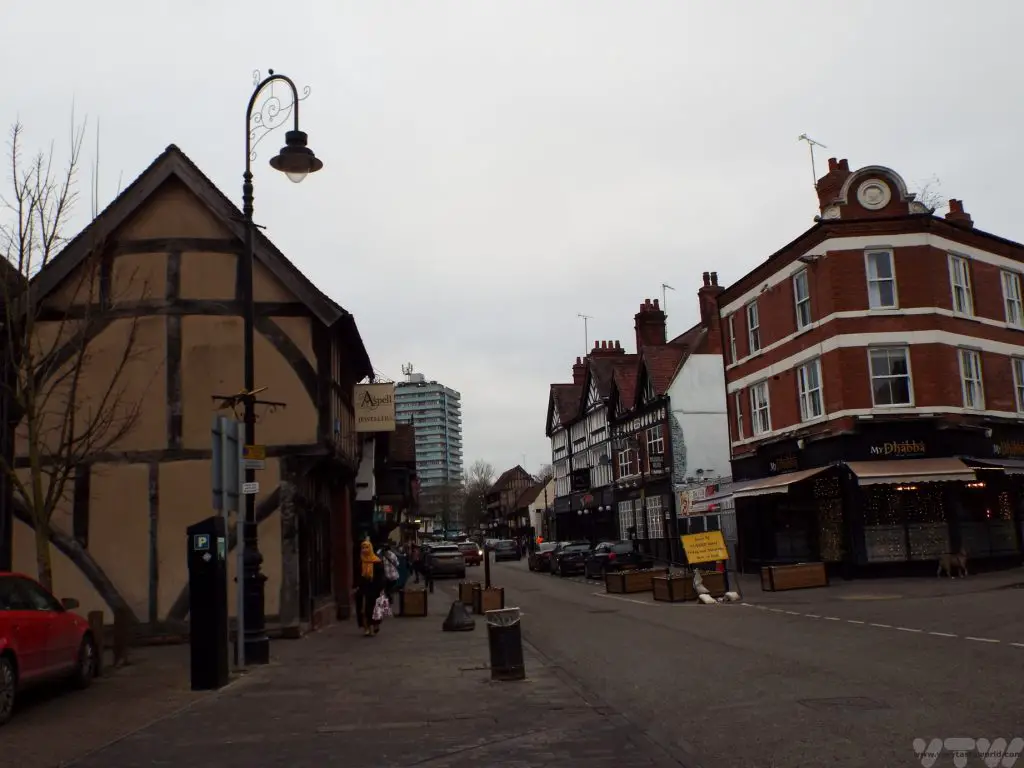
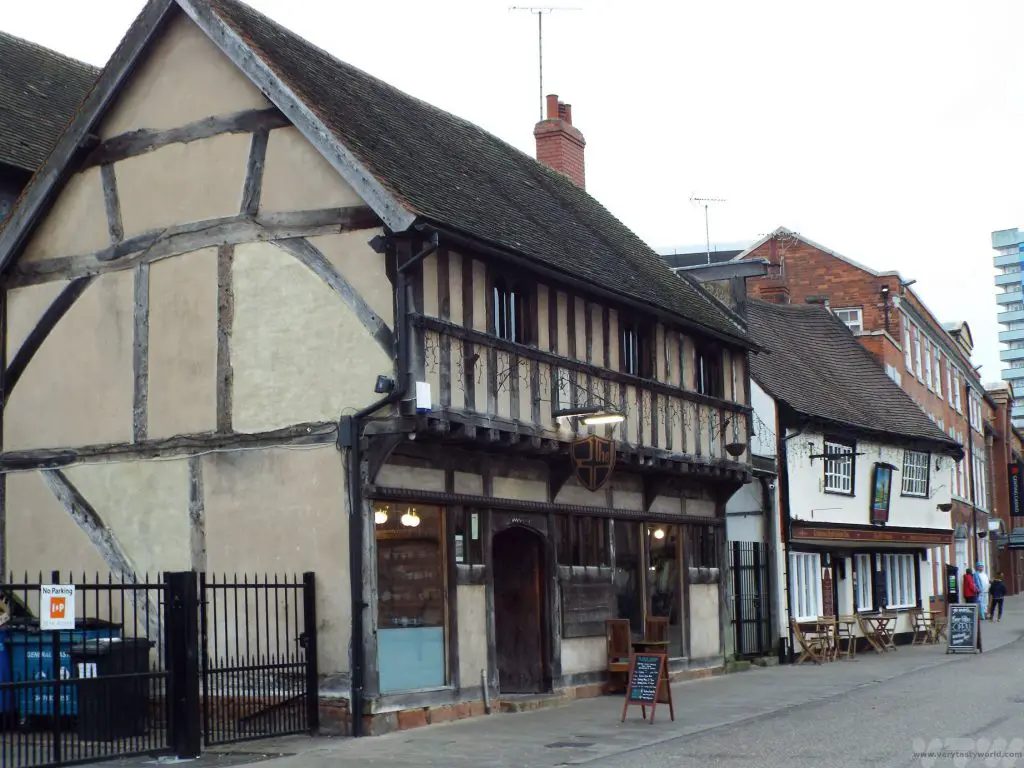
Ford’s Hospital was constructed in 1509, as an almshouse.
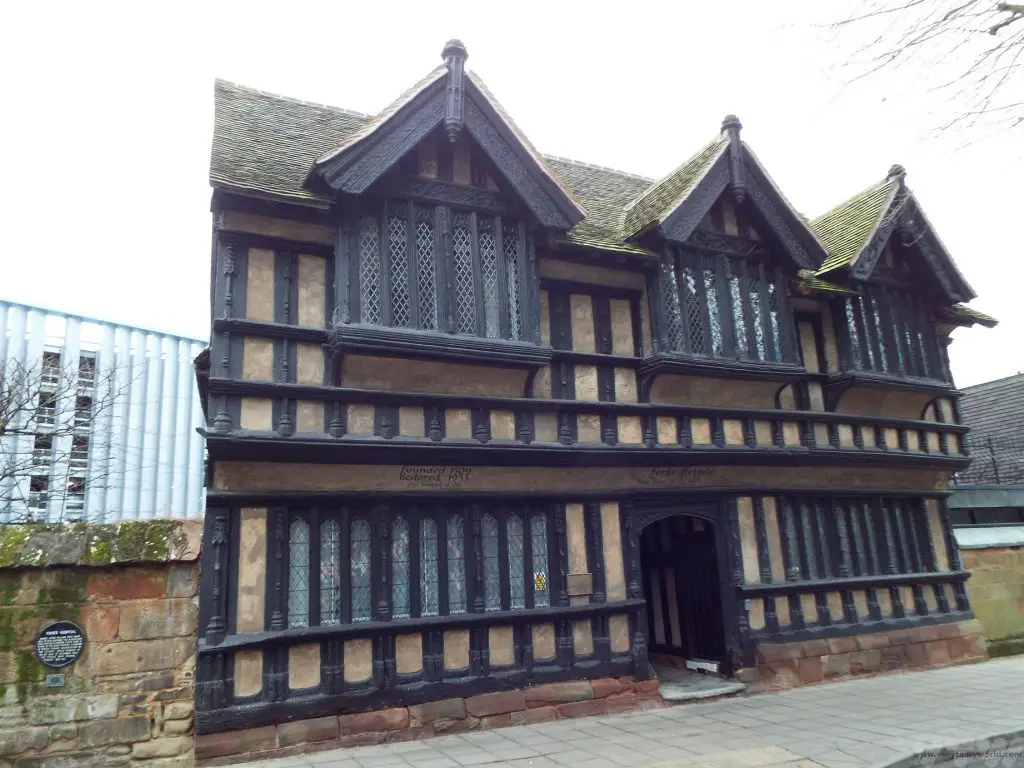
Some parts of the original city wall can still be seen. Swanswell Gate is the best preserved of the city’s gates. It has now been converted into a boutique hotel and it is possible to book it for a stay in the city.
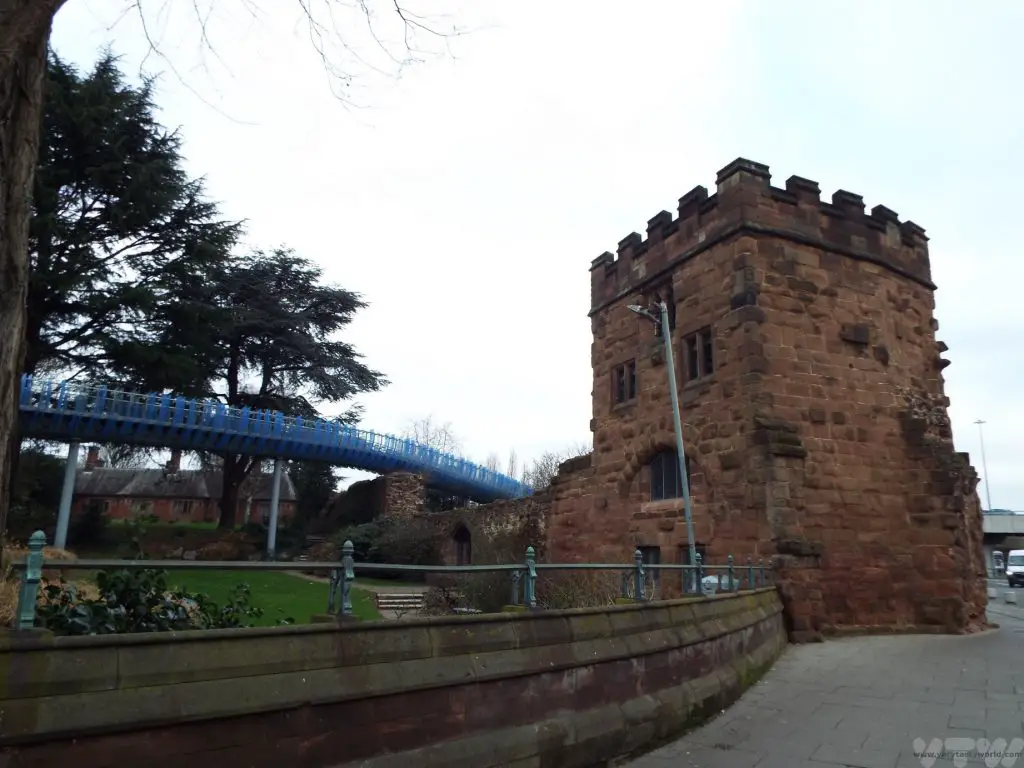
Dating from the 12th century, the old grammar school is now a conference or wedding venue which occasionally opens up for pop-up art events. You can see the original school chairs, carved by their previous occupants centuries ago.
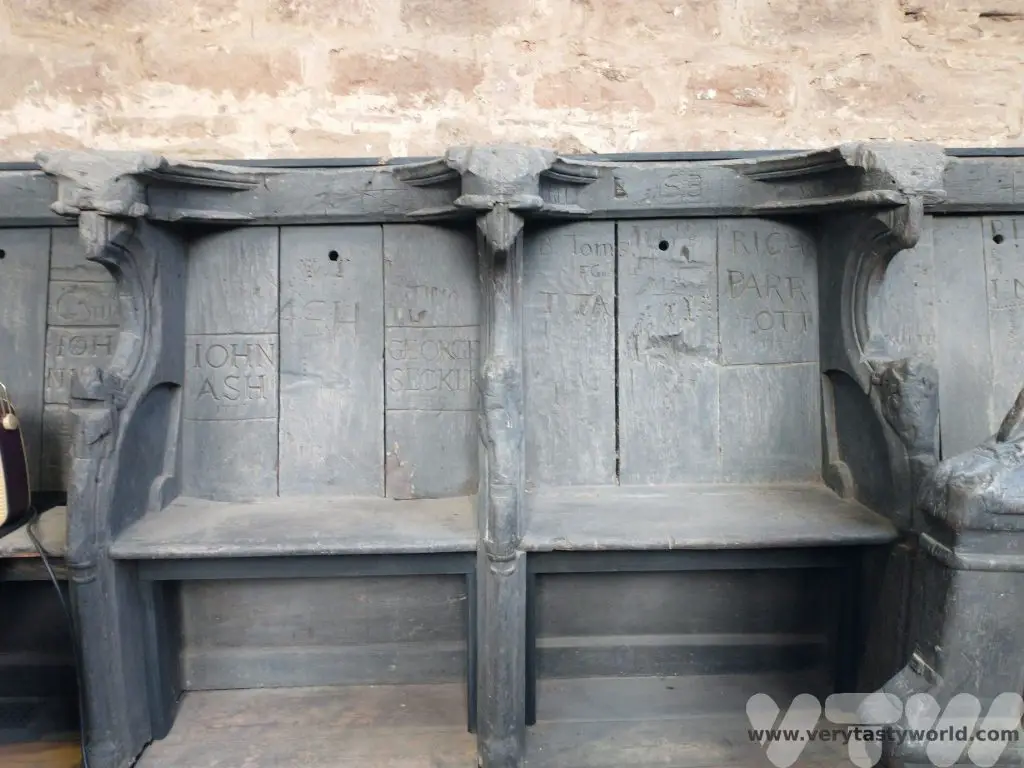
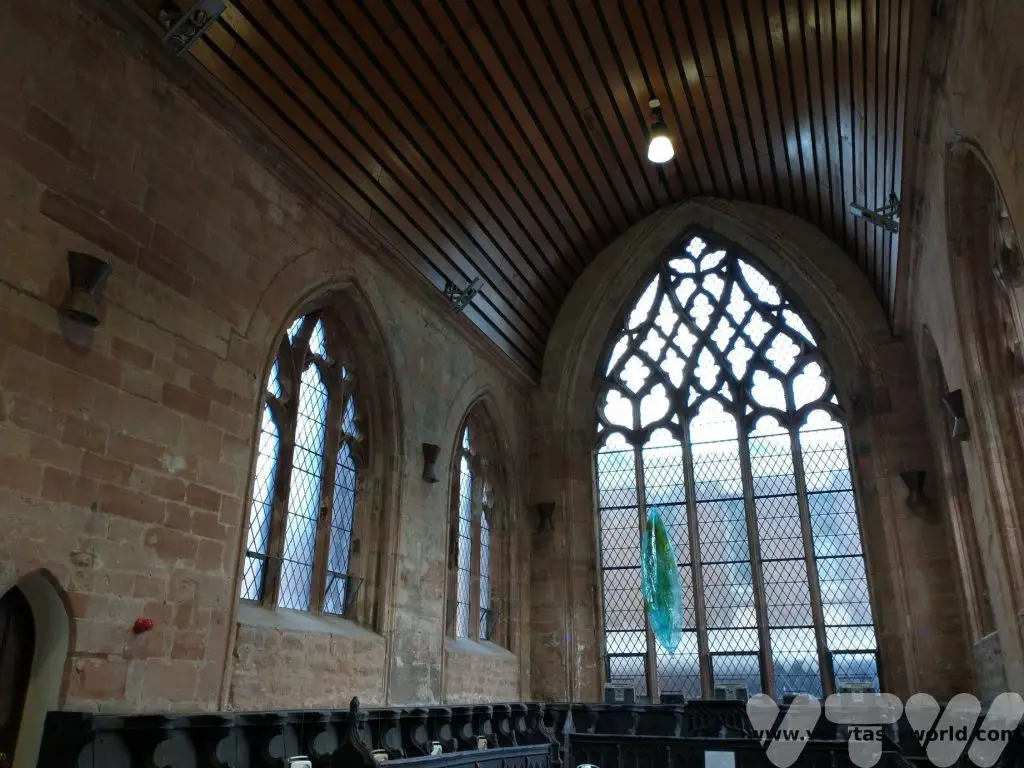
Coventry Cathedral – old and new
St Michael’s Cathedral was largely destroyed during the Blitz raid but its outer walls and spire remain. It was decided that it should remain in situ. It contains a number of symbols of reconciliation, including a charred cross which was constructed from two fallen wooden beams.


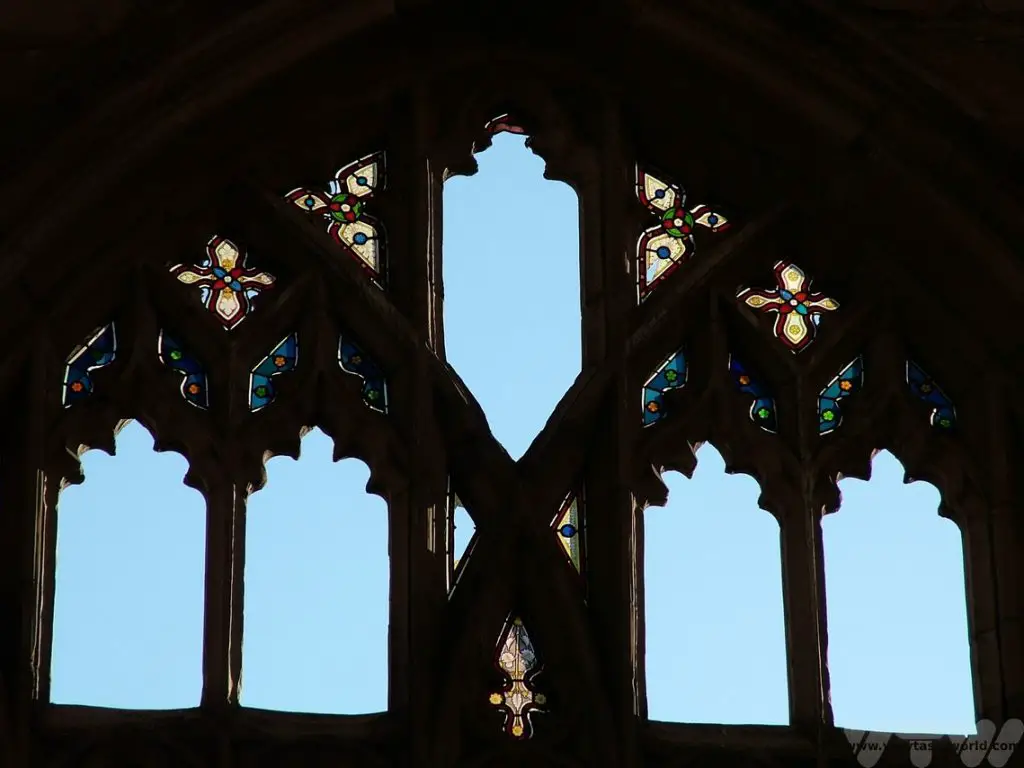
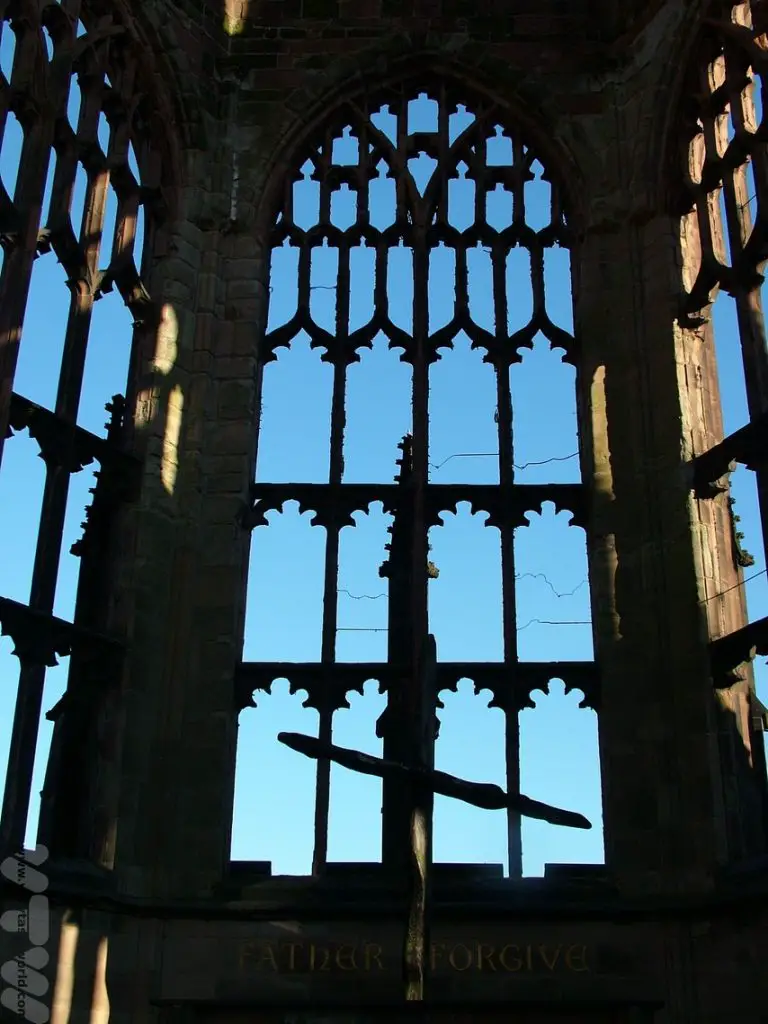
A new cathedral, constructed alongside the ruins of the old, was consecrated in 1962 as a place of worship. Both cathedrals are very much part of the community. They often hold concerts, plays and other events, both indoors and outdoors. The old cathedral even became an ice rink during the winter Christmas season.



St Mary’s Guildhall
This is one of Coventry’s original mediaeval buildings, a guildhall built in 1342 but then reconstructed in the 15th century.
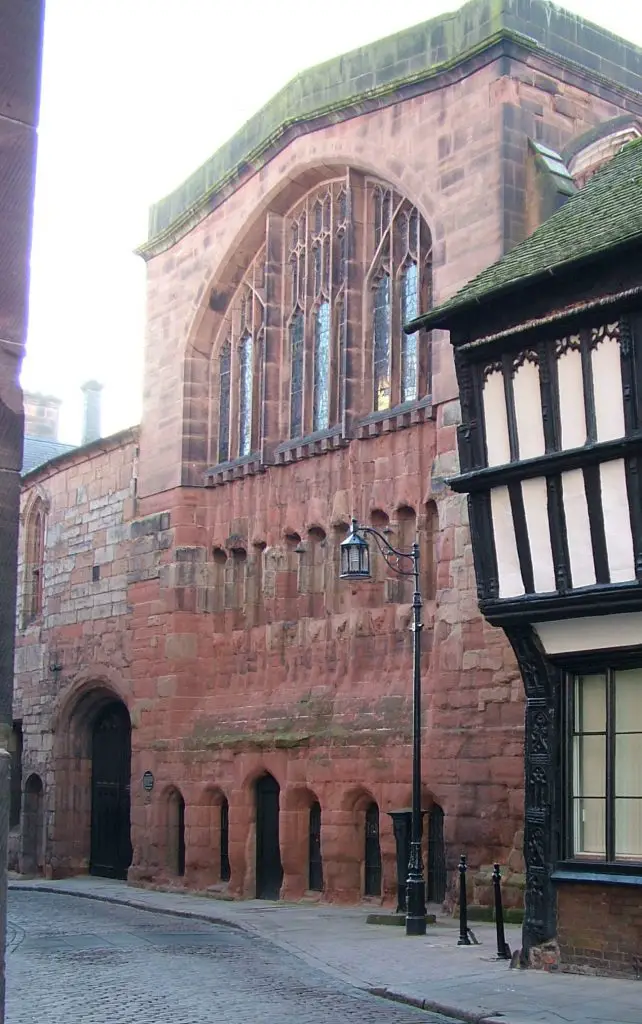
It contains one of the oldest tapestries in the country, almost certainly the oldest that remains in its original setting, known to have been made for the hall itself. The central figure is the Virgin Mary, to whom the hall is dedicated.


Amazingly, the guildhall, which is located right next door to St Michael’s cathedral which was largely destroyed during the firebombing of Coventry, survived the Blitz.
A recent refurbishment has revealed mediaeval kitchens which have been restored. There are exhibits showing the sort of food that might have been prepared there in centuries gone by. A splendid afternoon tea can be enjoyed in the undercroft.

Coventry Music Museum
Located just outside the city in the Ball Hill district, the Coventry Music Museum is a small but perfectly formed museum dedicated to the musical history of the city.
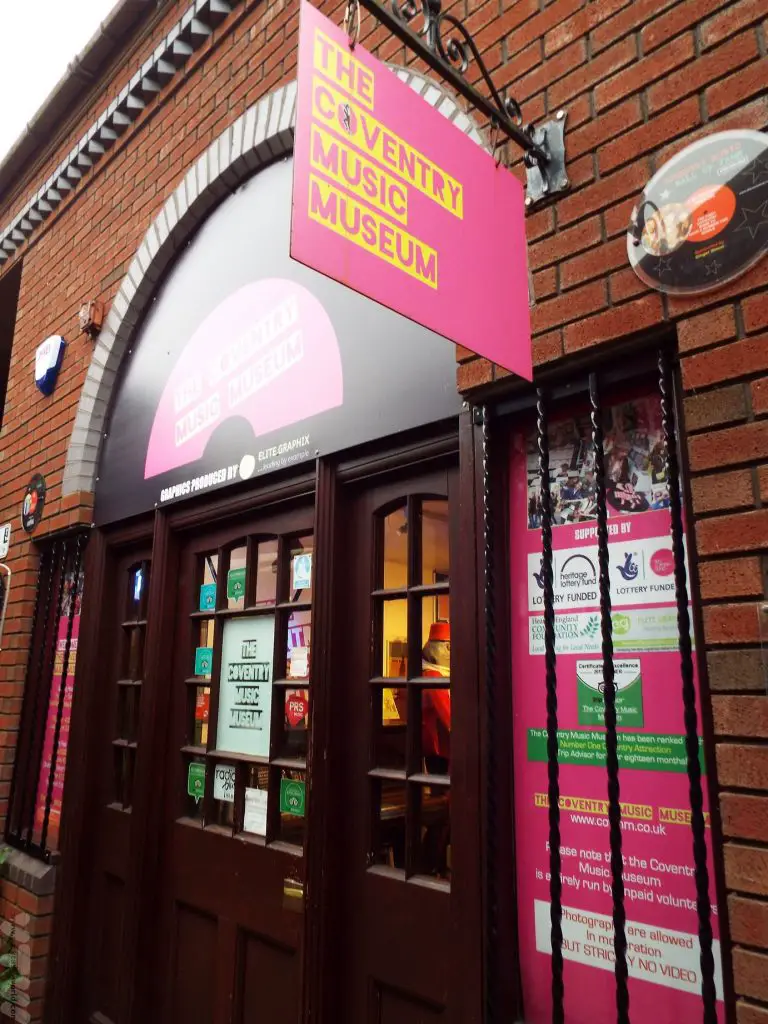
You always receive a friendly welcome. With a plethora of exhibits and memorabilia, including the original Ghost Town organ and a reproduction of a Two-Tone bedroom, it also looks to Coventry’s earlier music history including an exhibit looking at the work of Coventry born Delia Derbyshire, the pioneering electronic musician (who arranged the Dr Who theme tune). Deliaphonic is an annual celebration of her life and work which takes place in venues around the city.
You can also use the music room there – just pick up an instrument and play. Opposite the museum is the Two-Tone café and the excellent Simmer Down Caribbean restaurant.





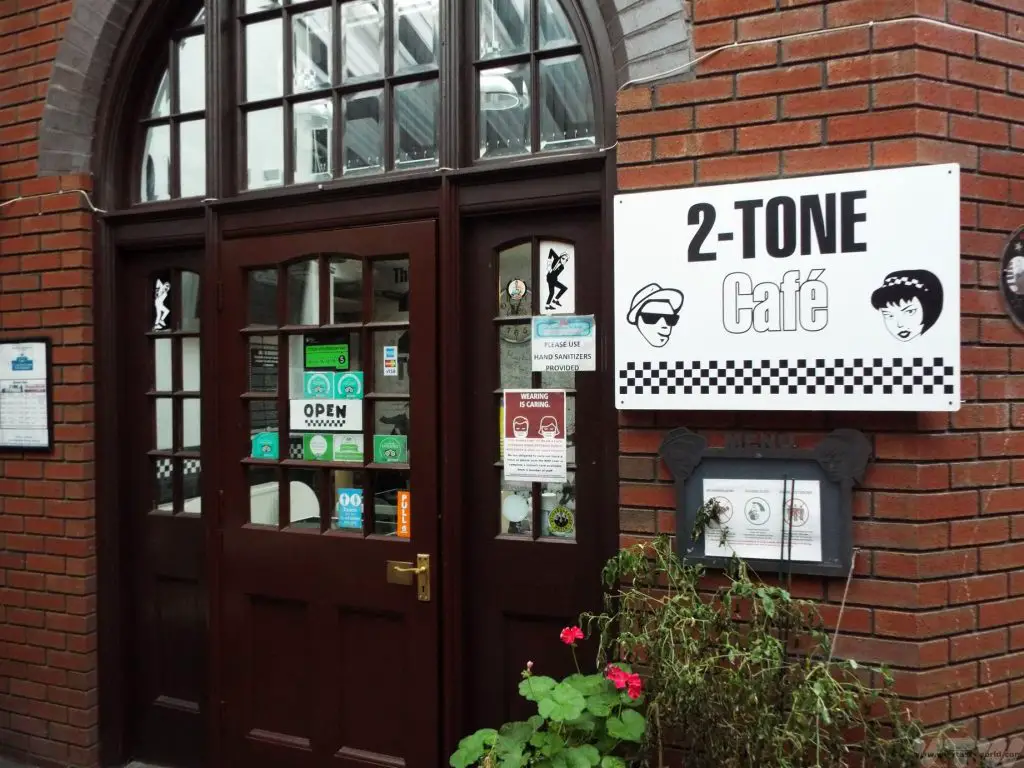
Coventry Transport Museum
Located on Millennium Place, Hales Street and celebrating Coventry’s motor history, this is a fascinating museum which has the largest publicly owned collection of British cars in the world.

The museum offers a brilliant history of transportation and also of the city. It has lots of interactive exhibits and you can see an extensive variety of vintage vehicles as well as two of the fastest cars in the world: Thrust SSC and Thrust 2. Fun fact: part of the famous car chase from the film The Italian Job was filmed in Coventry. While the Mini Coopers enter and leave the tunnel in Turin, the actual tunnels were Coventry sewers which were being constructed at the time.
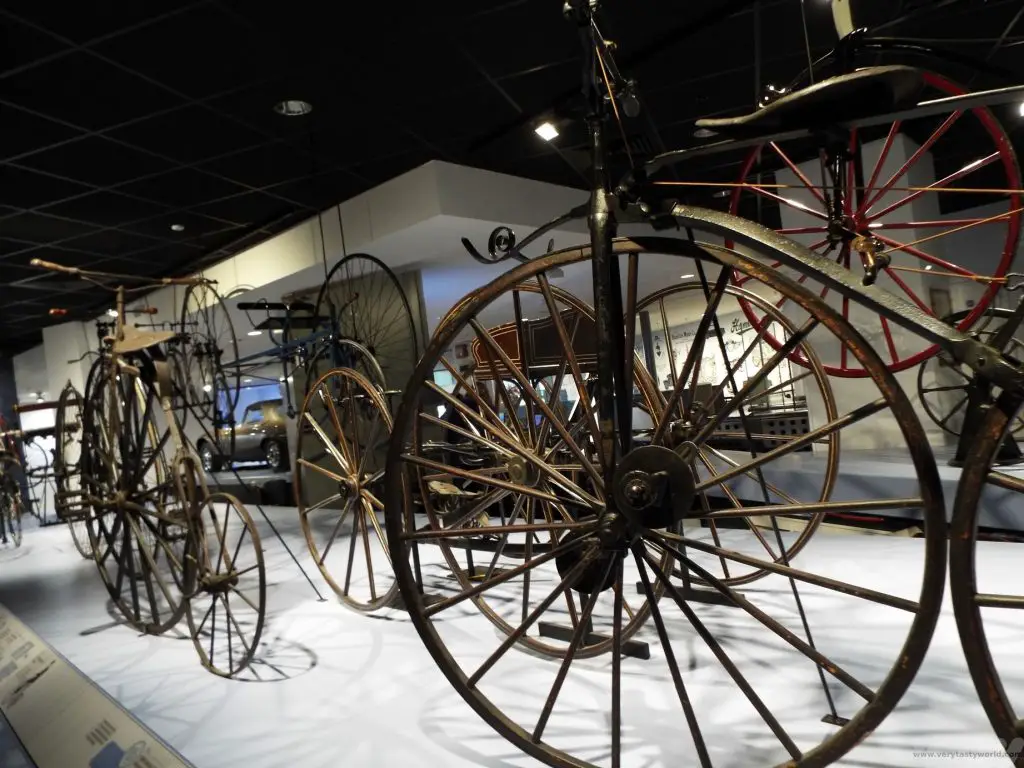
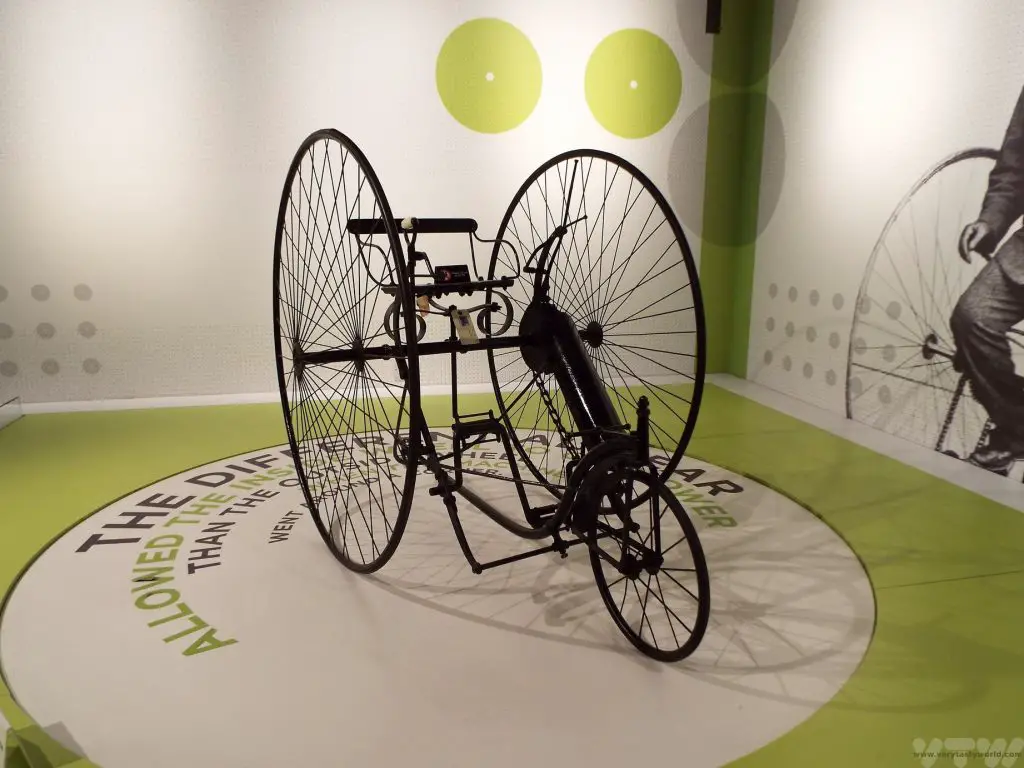
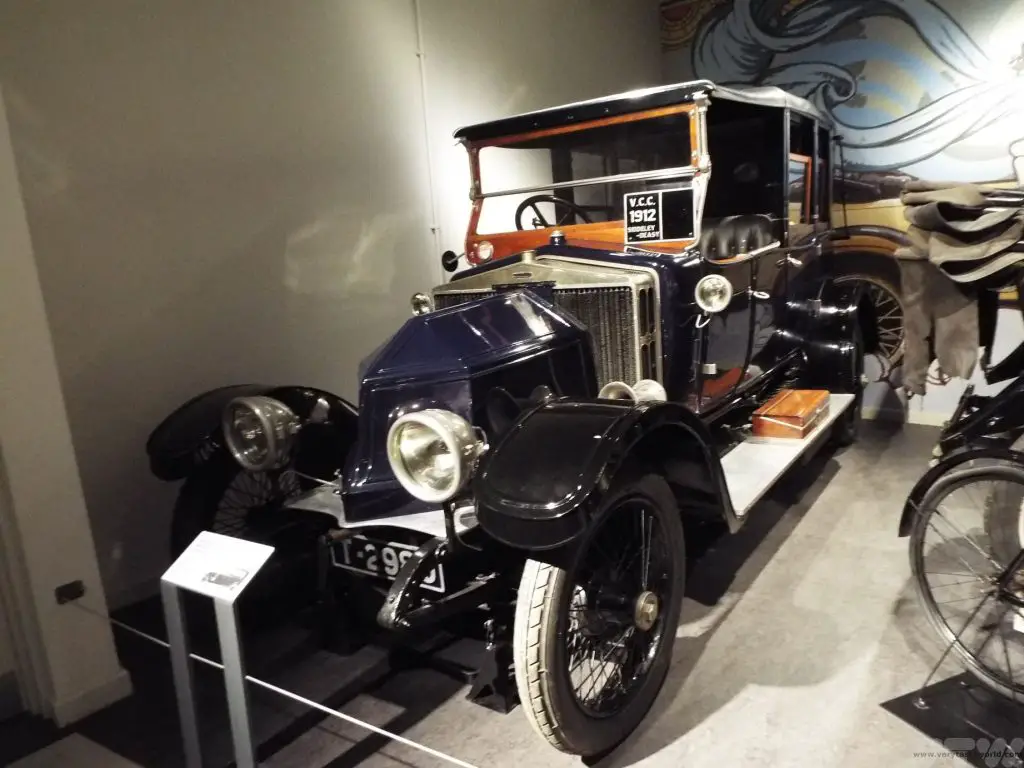
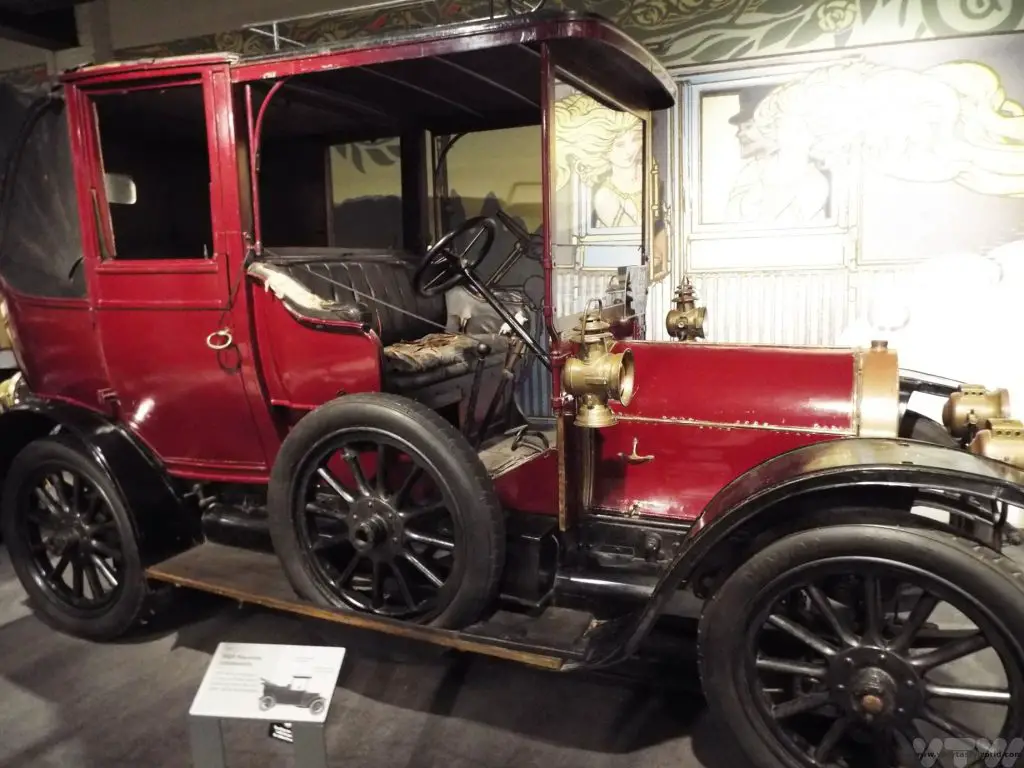


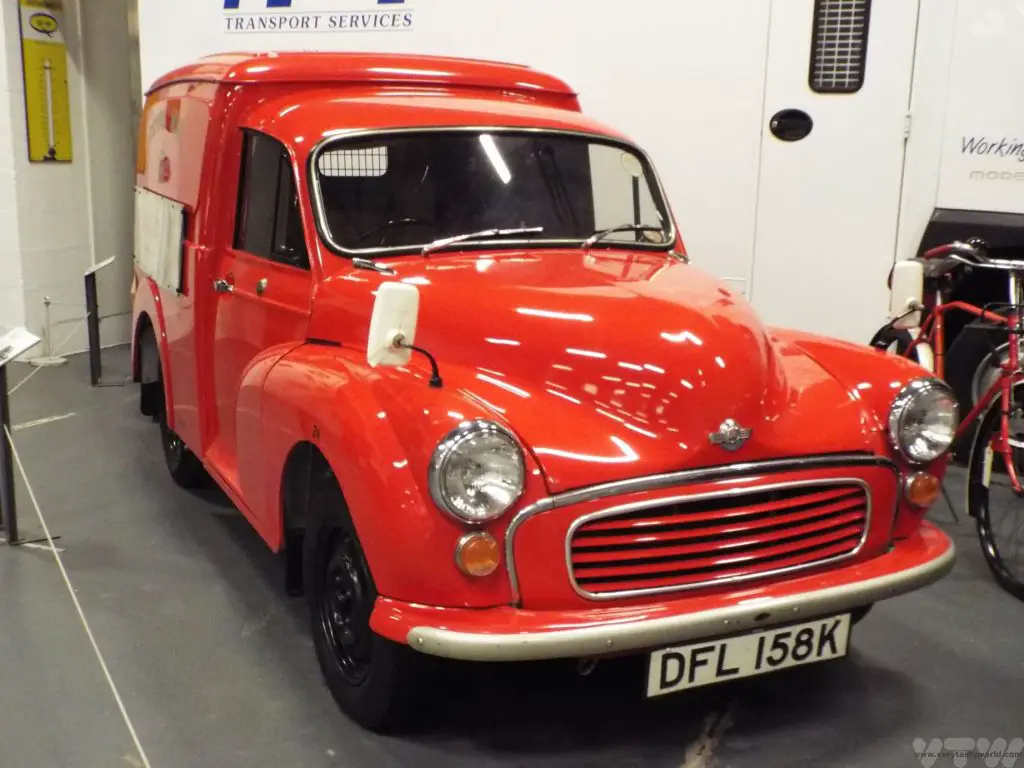
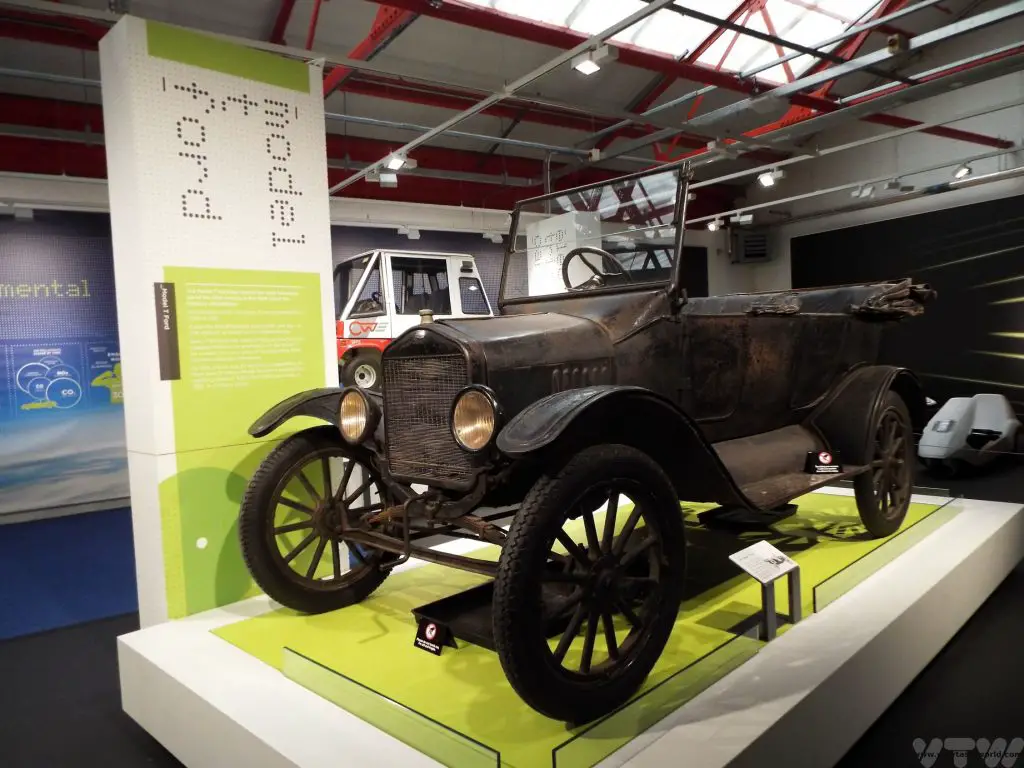
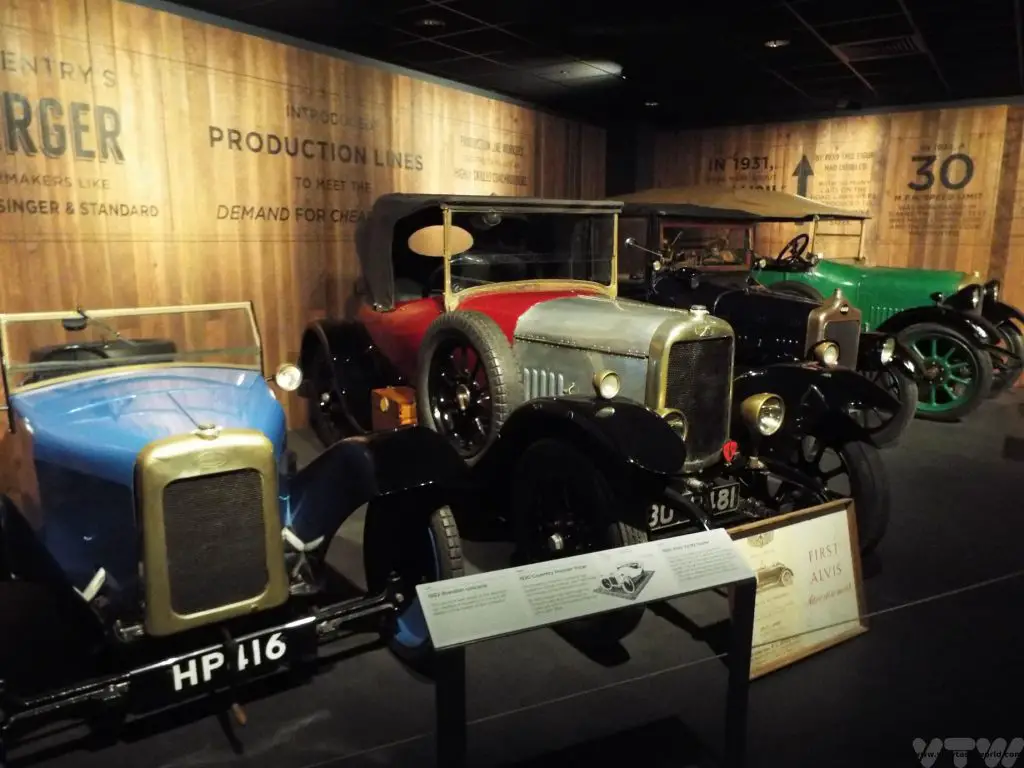

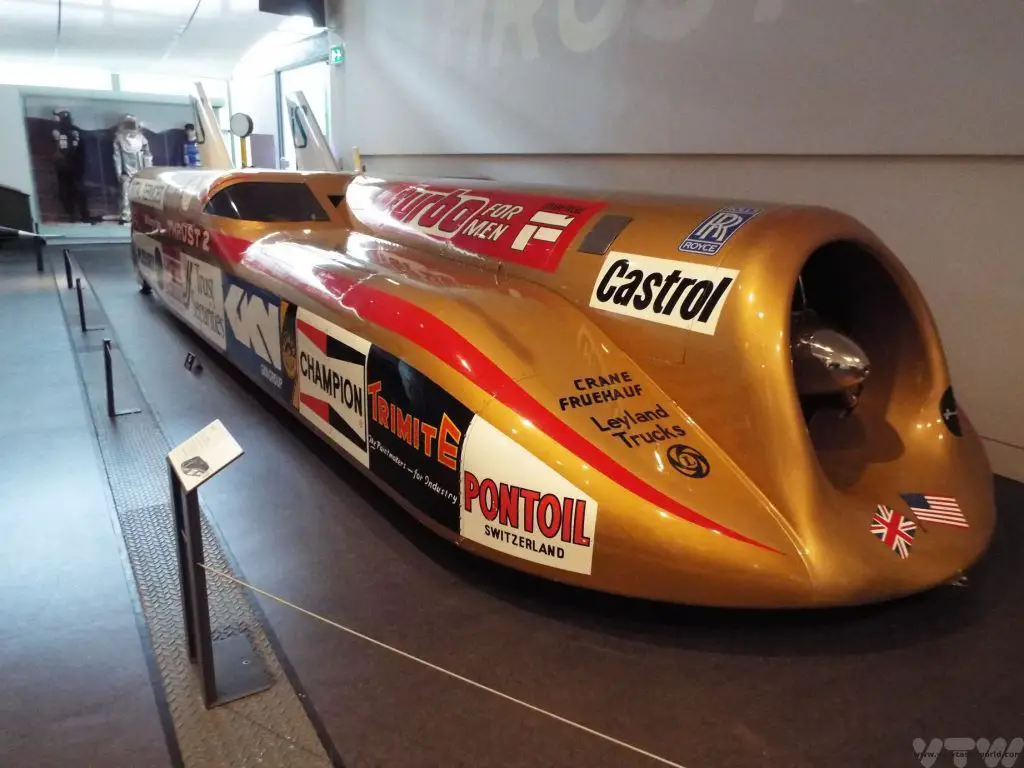

The Weaver’s House (Spon End) is a fascinating listed building which is quite unusual because it was the home of a poor person. Historic buildings are normally preserved because they are great big stately homes owned by important people.
The weaver’s house is a remarkable construction because it has an internal jetty for the weaver’s loom, which is very rare. The weaver’s house is located close to the river Sherbourne before it enters the city, so the water would have been clean for washing and dyeing the cloth. The house doesn’t have regular opening hours, but check the website for the next open day when you can learn about its history and also visit its mediaeval garden.
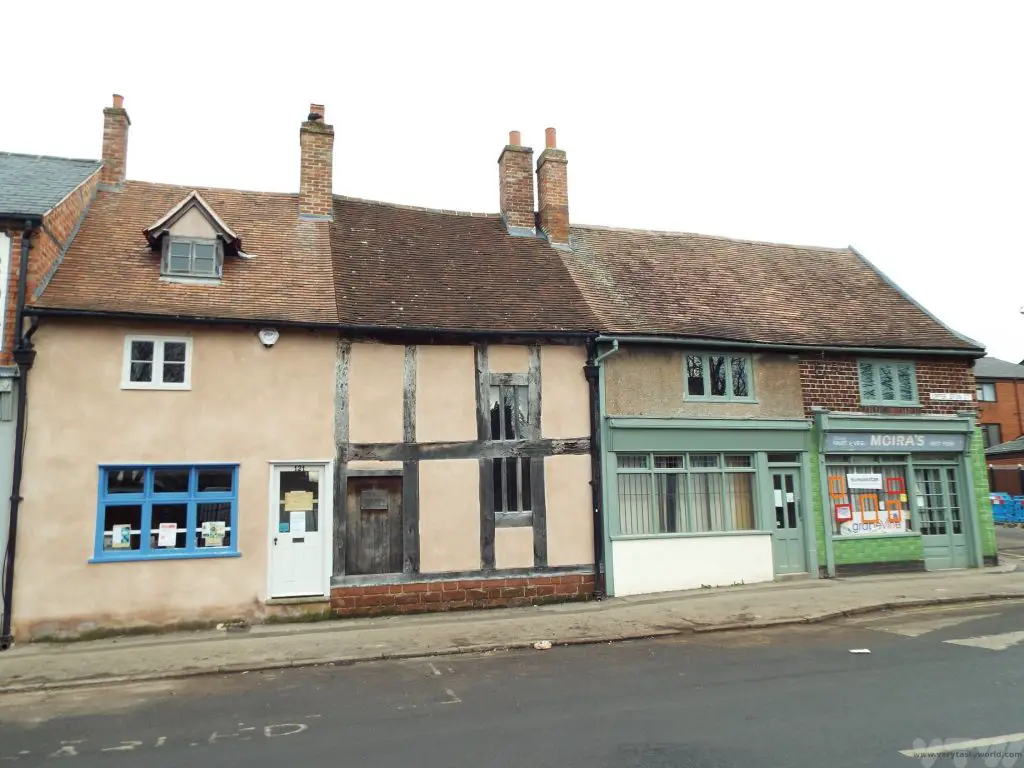
Watch Museum A small but interesting museum dedicated to Coventry’s watchmaking heritage.
Charterhouse
Located on the London Road, just over a kilometre outside the city centre, this former monastery was founded in 1381. It was a Carthusian monastery, home to a silent order of monks who each had their own cells (actually like small houses with walled gardens) in which they would meditate, pray, read and copy books. They would meet in church or at mealtimes – and meals were eaten in the refectory which is the main surviving building.
After Henry VIII’s dissolution of the monasteries the building became a private home and was modified over the years. The adjoining church and monks’ cells were lost. Its most famous resident was Robert Dudley, first Earl of Leicester who was a close friend and suitor to Queen Elizabeth I.
Eventually the building was passed to the people of Coventry and the Coventry Historic Trust set about ensuring its survival and restoring the building. It is now open to visitors.
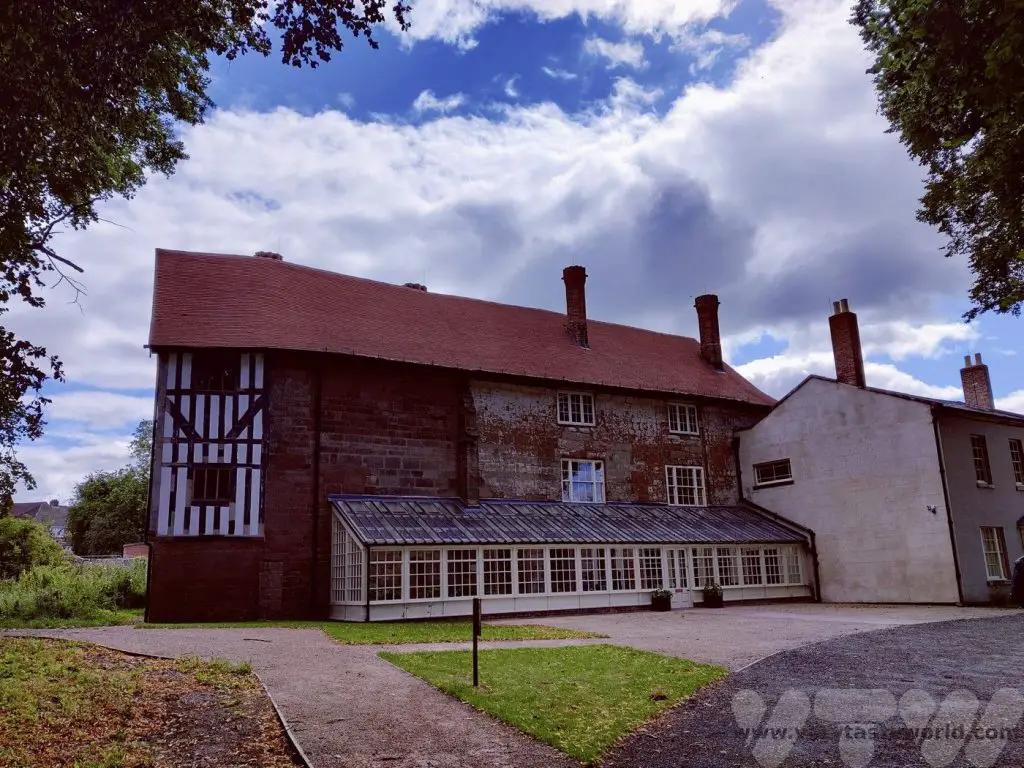
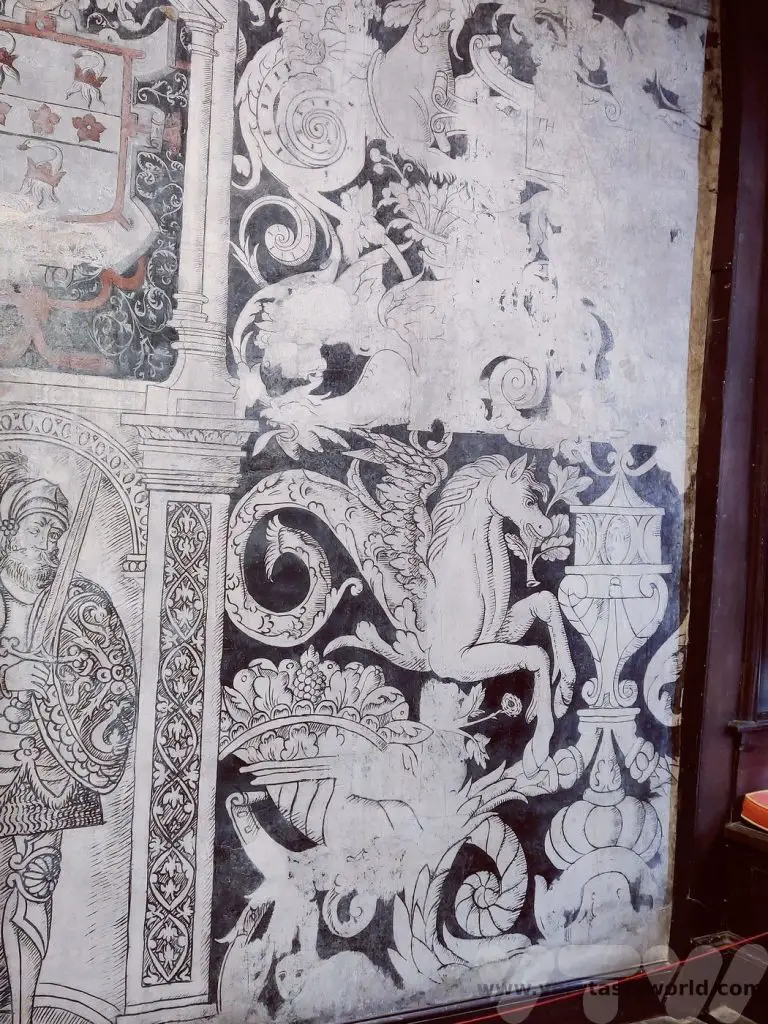
Of particular interest are the mediaeval paintings – a black and white painting dating back to the 15th century, likely to have been commissioned by Dudley.
Sadly when the monastery was converted from a two-floor to a three-floor building the top part of a crucifixion painting was lost. What remains is fascinating.
The grounds also house a kitchen garden. A bistro/café is located on site for light snacks. If you buy a ticket to visit the site, it is valid for a year from issue.
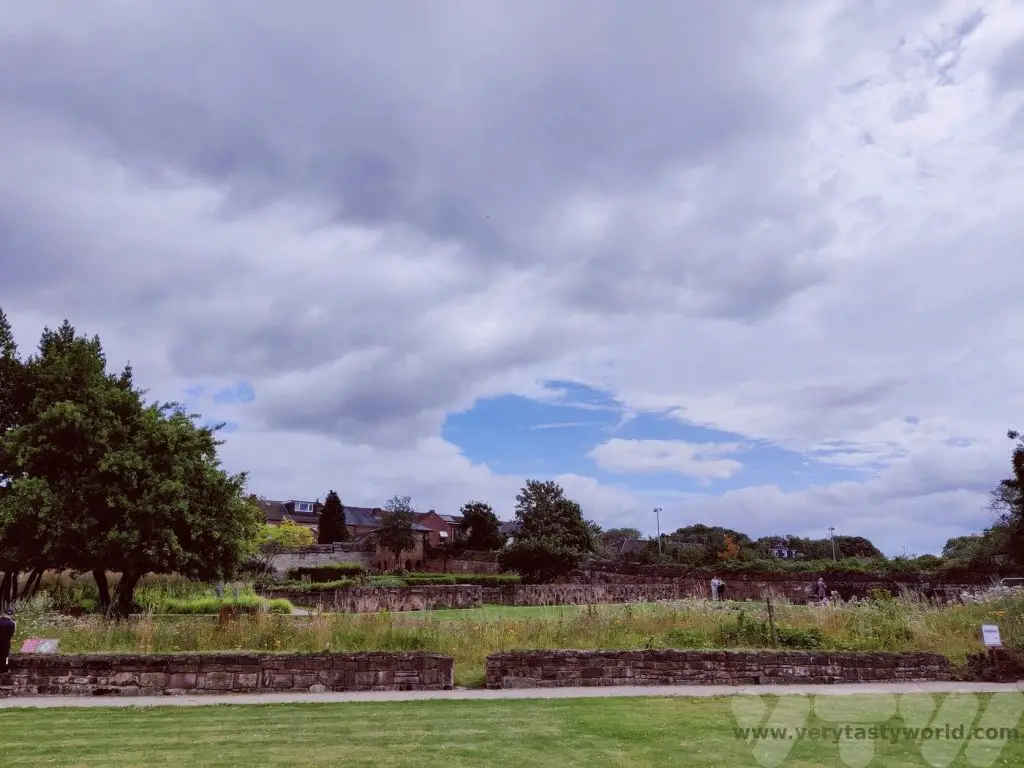
Coventry Culture
Herbert Art Gallery
A fantastic space, the Herbert has a permanent collection and regular temporary exhibitions. It’s located next to the cathedrals. With free entry to most exhibitions, it also hosted the 2021 Turner Prize.




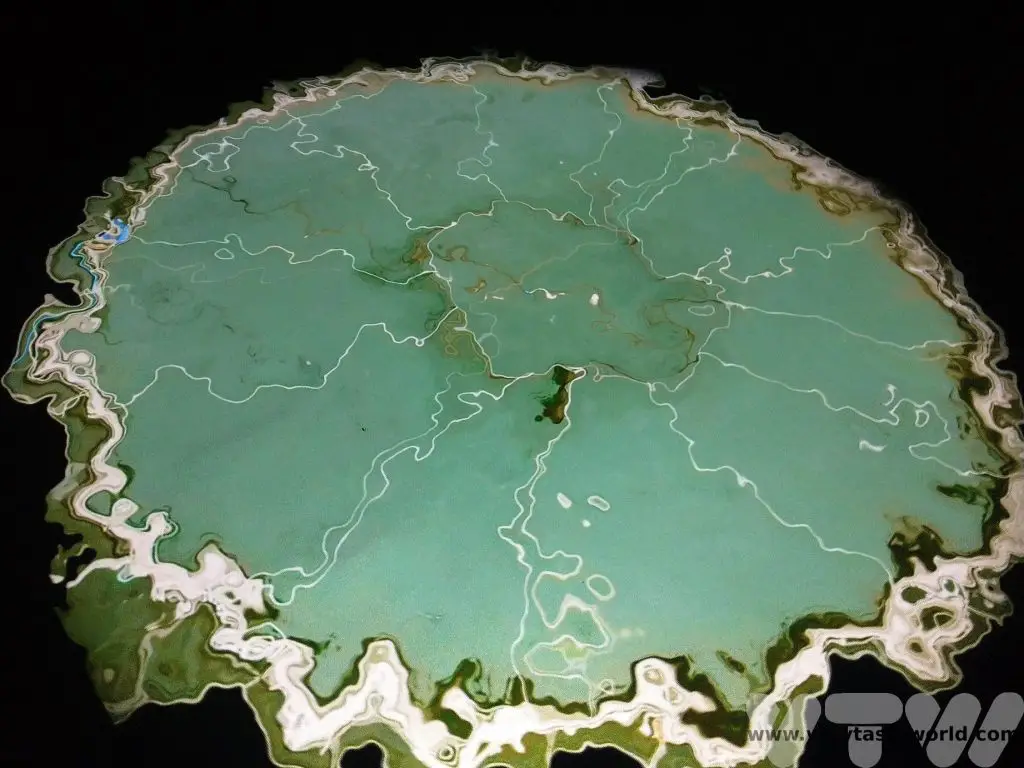

Fargo Village
Located to the east of the city, around a 15 minute walk from the city centre on Far Gosford Street, this is the Coventry’s creative quarter. With some quirky shops, great restaurants, venues and an on-site brewhouse it regularly hosts a variety of events.
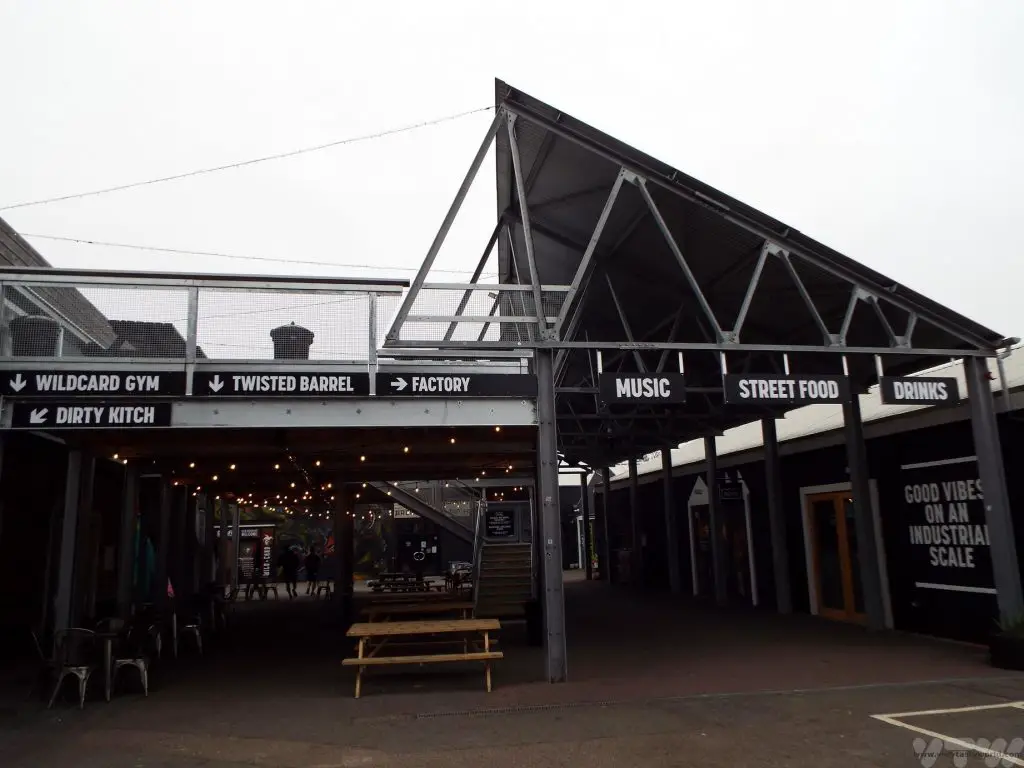
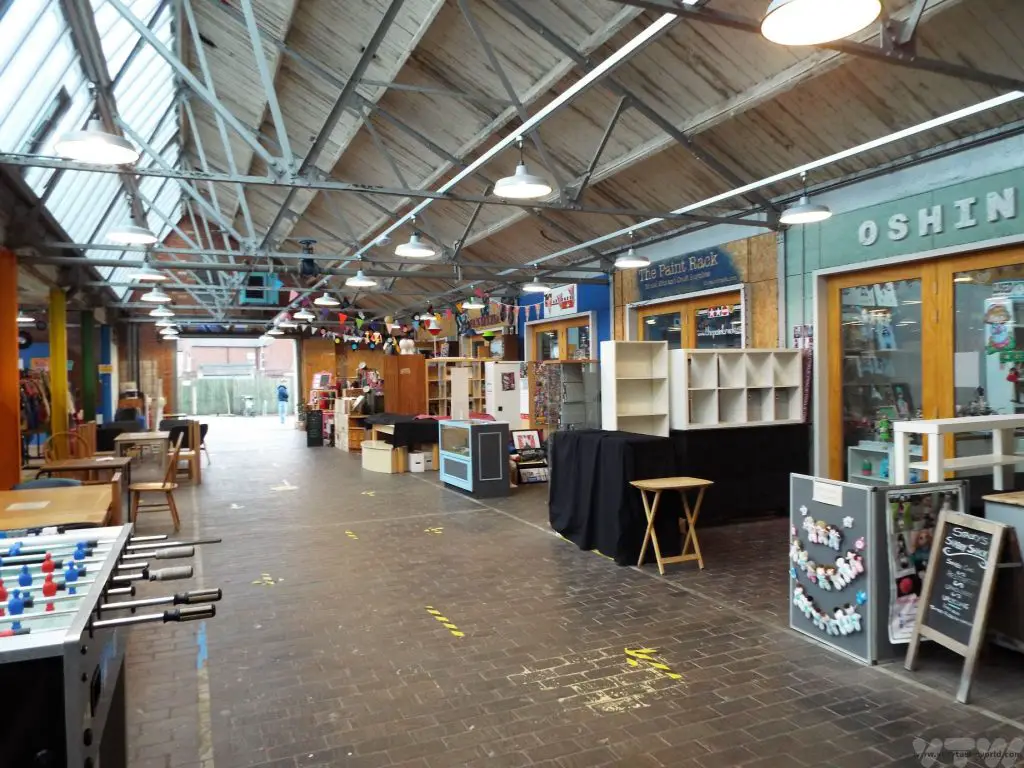


Theatre and Music The Belgrade Theatre and Albany Theatre have a great programme of theatrical productions. There are lots of venues for music gigs, including the tiny but excellent Tin Music and Arts venue in the coal vaults at Coventry’s canal basin. Warwick Arts Centre, located a few kilometres out of town at Warwick University, has a full programme of music, theatre, film and arts events.
Coventry Biennial This festival of art is held every two years. What’s great about it is that it uses multiple venues around the city and also in some of the surrounding towns.
Litten Tree Building (until late 20223). This is a pop-up art venue in a disused space above a pub. (Just enter the Litten Tree pub in the Bull Yard, on the way in from the railway station and climb the staircase). It’s totally shabby-chic inside but offers a variety of exhibitions and gigs – just feel free to explore the building discovering fabulous art along the way.





Eating -Where to Eat in Coventry
Coventry has its share of the usual chain restaurants but there are a number of excellent independent restaurants.


The Pod Café – this is located on Far Gosford street and is one of our favourites. A vegan café it sources local ingredients, 70% of which are grown on its Food Union (a social activism initiative run by the local council) allotment on the other side of the city (and one that we volunteer at, so we may even have helped grow your lunch). The café also runs evening supper clubs with live music. And, naturally, the food is absolutely delicious.
Gourmet Food Kitchen – one of the most difficult restaurants to get a table at for chef Tony’s monumentally delicious gourmet evenings (you have to get lucky when slots on the website are released) this teeny restaurant located in Fargo Village also offers the best cooked breakfast in the land (which you can usually just show up for). Everything is home-made and utterly scrumptious.

Earlsdon Supper Club (secret location in Earlsdon – you’ll find the location when you book). This is a supper club where you join chef Tobias who cooks you a delicious tasting menu and describes his inspiration behind each dish.

Hello Vietnam (Smithford Street) offers a wonderful array of Vietnamese dishes.
A-Sushi (Hertford Street) – best sushi in Coventry, this Korean restaurant also offers a variety of Japanese and Korean dishes.


Shin Ramen (Priory Place) is a Japanese restaurant that serves izakaya style food, notably its authentic ramen noodles. The tonkotsu and champon ramen are particularly good.
Jinseong Korean BBQ (Priory Place) – meat eaters can enjoy Korean BBQ where you can cook a variety of meats over a charcoal fire. Their KFC (Korean Fried Chicken) is also delicious.
Pickles (Spon End). There are so many excellent Indian restaurants in Coventry (as there are all over the Midlands) but we’re big fans of Pickles where you get a warm welcome and delicious curries.
Tamils Taste of Asia (Foleshill Road) offers superb and authentic South Indian cuisine. Great if you are hankering after dosas, biryani and idli.
Anatolia (Earlsdon Street) offers amazing Turkish food with great mezze and succulent kebabs.

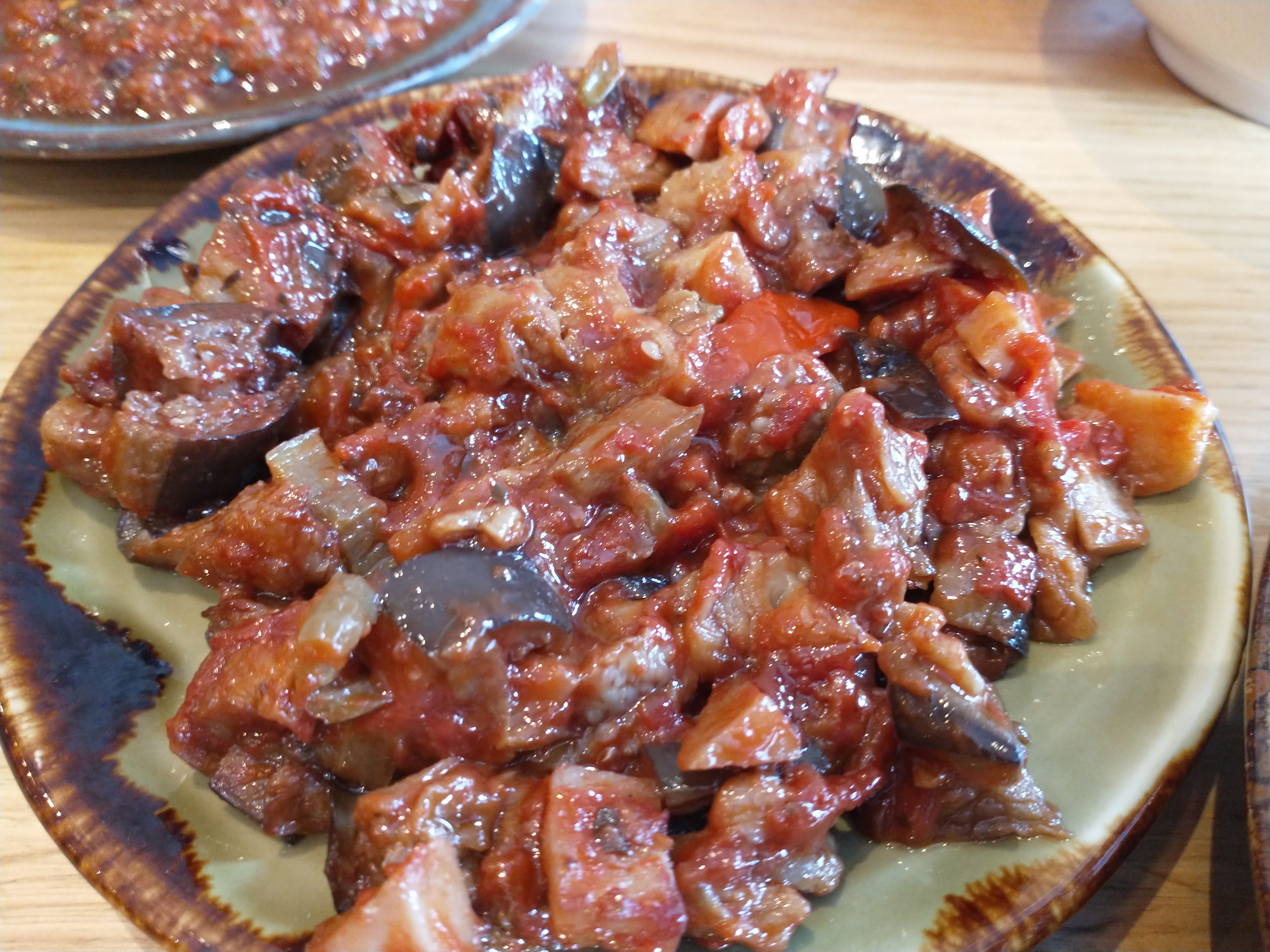
Drinking – Where to Drink in Coventry
Hops D’Amour – is a lovely micropub on Corporation Street serving craft beer, real ale and a variety of ciders. You can be sure of a friendly welcome and that you will have a different and interesting beer or cider experience every time you visit.
Broomfield Tavern – great beers and a huge variety of ciders are to be found in this small pub just outside the city centre, close to the Butts rugby ground. Teddy, the huge St Bernard dog, will offer a warm welcome, even if he sometimes pinches your seat.
Twisted Barrel – a brew-pub located in Fargo village. They offer a great variety of home-brewed and guest beers. They also have a mail order service so you can order their excellent beers online.
The Old Windmill – one of Coventry’s oldest pubs, located on Mediaeval Spon Street, this building has all sorts of nooks and crannies to sit in while enjoying your pint. It offers a great variety of beers and also locally sourced pork pies, ploughman’s platters and cheese boards.
Beer Gonzo (Earlsdon Street) – located in the suburb of Earlsdon this beer shop and tap room offers a wide variety of interesting beers from around the world. They regularly run “meet the brewer” events which result in a fun afternoon or evening enjoying a variety of beers. They too have an online shop.
Dhillons Spire Bar (next to the Bull Yard) is located within and around Christchurch spire, the third of Coventry’s three spires. You can sit in a personal booth (which has a heater when it’s cold) and drink locally brewed beer such as Ghost Town lager or Red Rebel IPA.
Green Spaces in Coventry
While Coventry has a reputation for being a dull concrete city, it actually has a huge number of green spaces, some close to the city centre and some a bit further out.
Lady Herbert’s Garden is located next to Swanswell Gate and the transport museum.
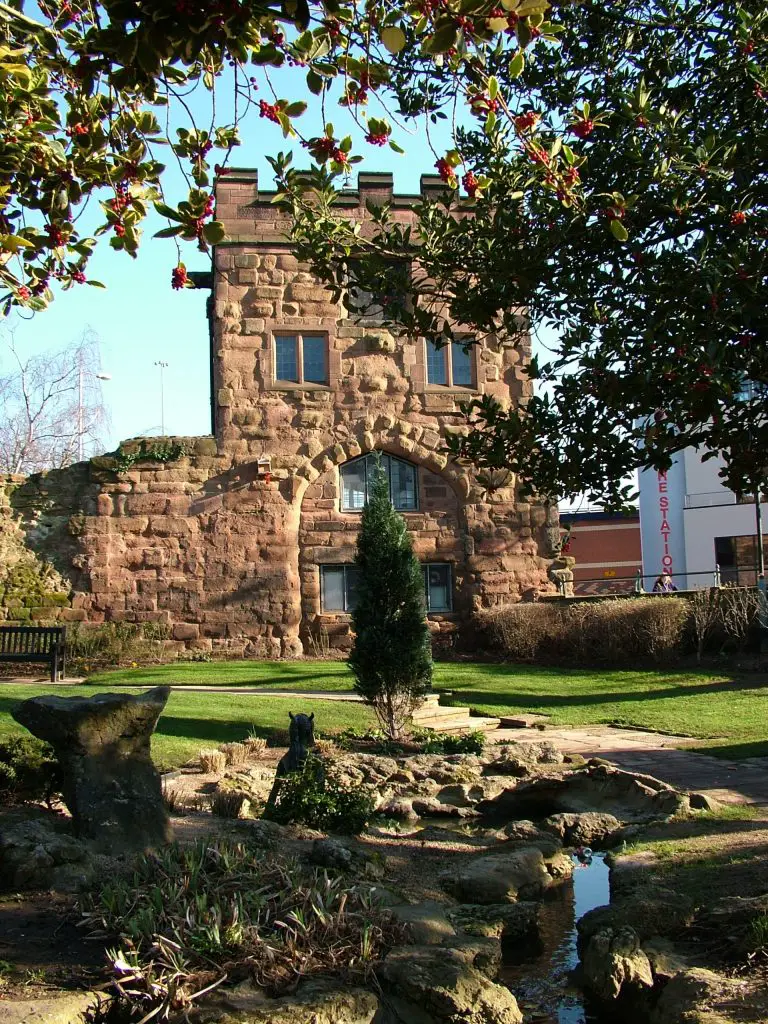
War Memorial Park is the city’s largest and best known park. Established in 1921 following World War I, it is absolutely huge and has tennis courts, football pitches, bowls green, footgolf course, an outdoor fitness trail and a cricket pitch. There are play facilities and skateboarding ramps too. It hosts the popular three day Godiva Festival every year.

Coundon Wedge – about a mile down the Holyhead road leading out of the city towards the A45 and Birmingham, Coundon Wedge is a delightful slice of actual countryside. Coventry’s lovely little river Sherbourne flows through it.
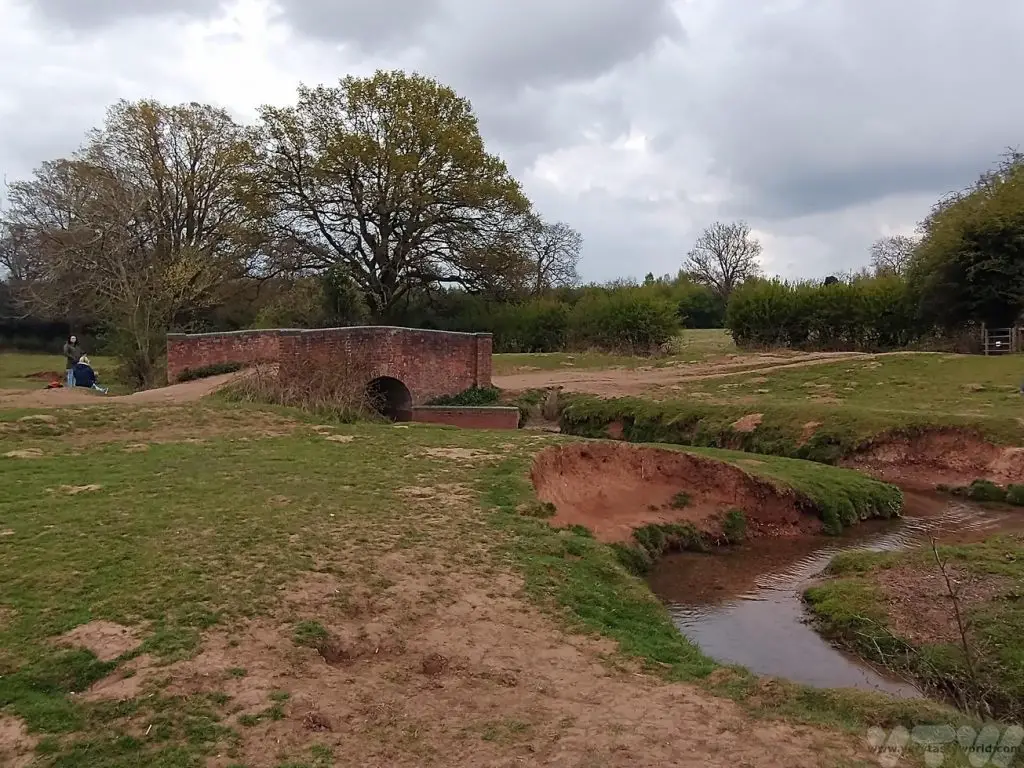
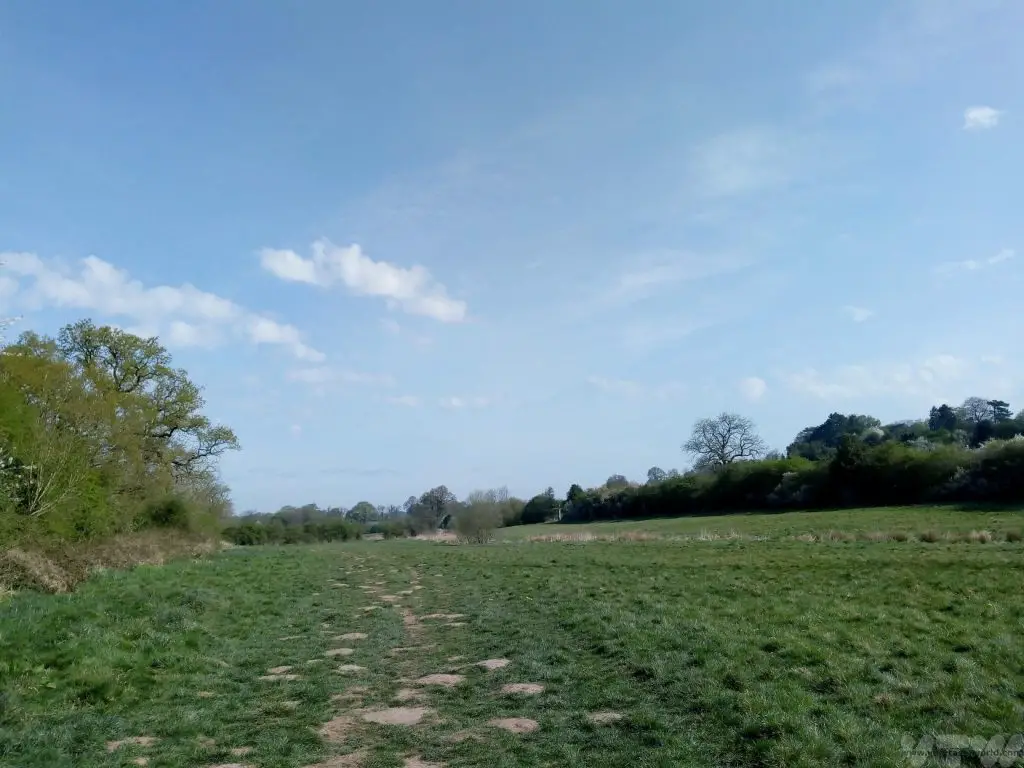
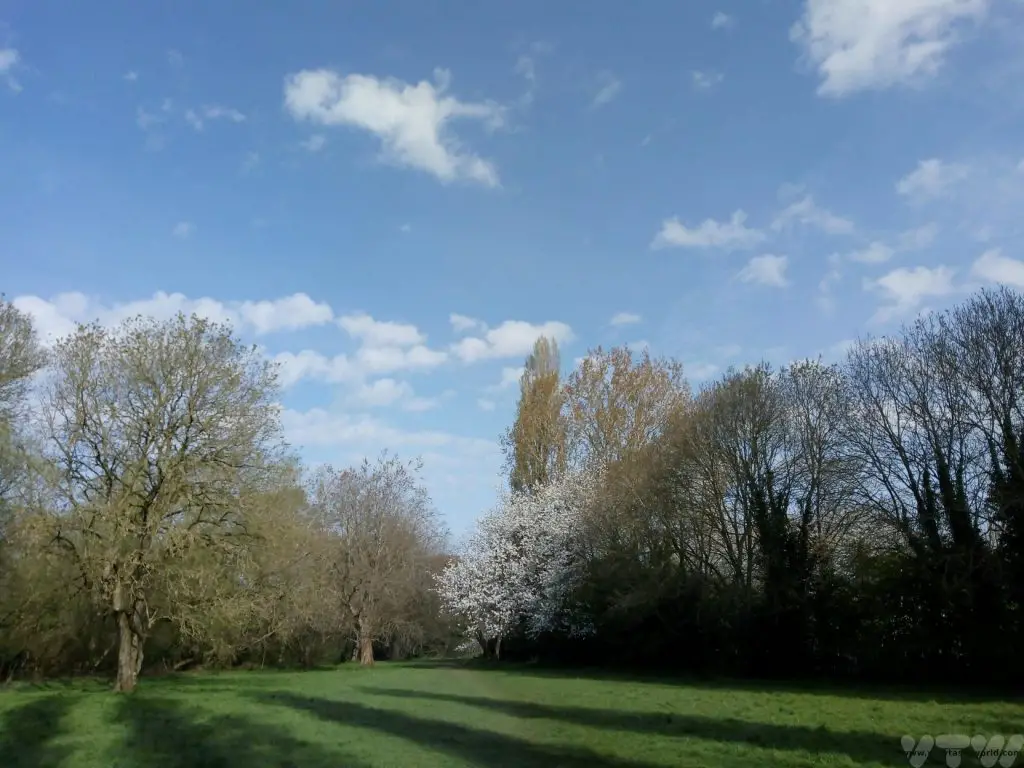
Charterhouse Fields – Opposite the cemetery on the London Road, the Charterhouse of St Anne is a Grade 1 listed building. It was founded in 1381 . It is surrounded by green fields which are located adjacent to the river Sherbourne after it has emerged from flowing under the city.
Coombe Abbey – a bit further out of the city on the way to Brinklow this is a former 12th century abbey that has been converted to a hotel set in around 500 acres of parkland.

The park is lovely to walk around – with woods and a lakeside to explore and they have also recently opened up a Go Ape venue. The hotel itself offers popular afternoon teas and bawdy mediaeval banquets (the banquets are available for pre-booked groups only).
Shopping in Coventry
Coventry hosts all the major retailers that you would expect from a city. As foodies living in a multi-cultural city, we love that there are all sorts of supermarkets or mini-marts from Asia, Eastern Europe, the Caribbean and Africa. And we are pretty sure that you can buy anything at Coventry market. Located inside a circular building (it took us about 5 years to work out how to leave it at the exit we wanted and we still get a bit lost on occasion) there are stalls for fresh food at great prices and pretty much anything else you might want.

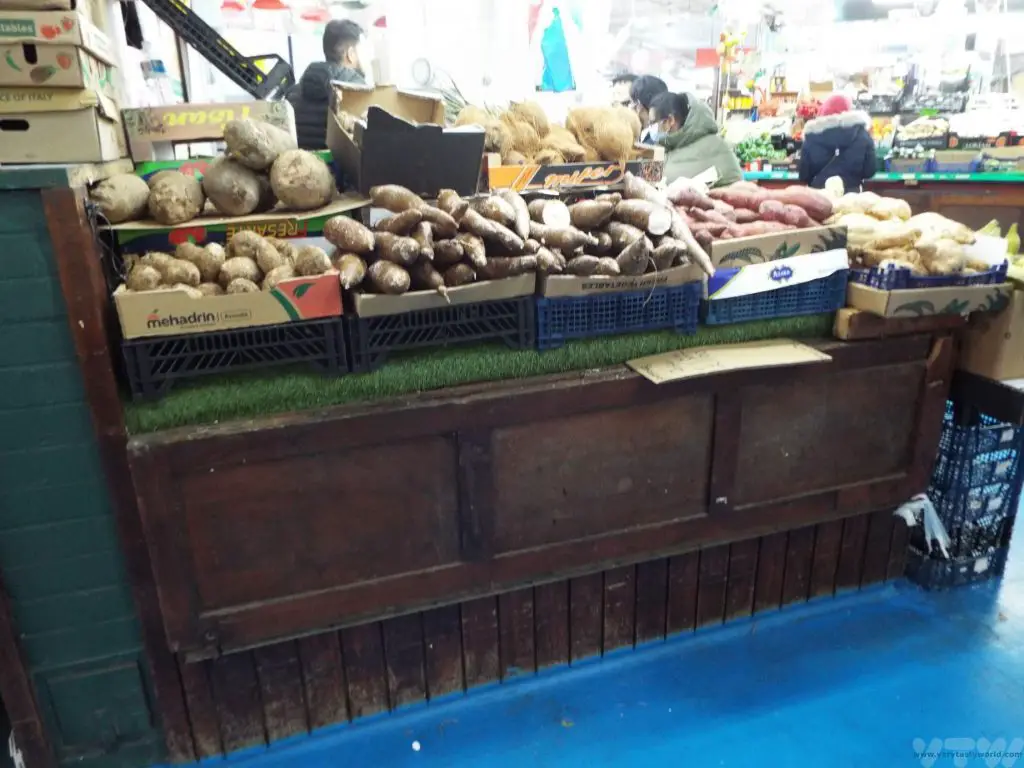
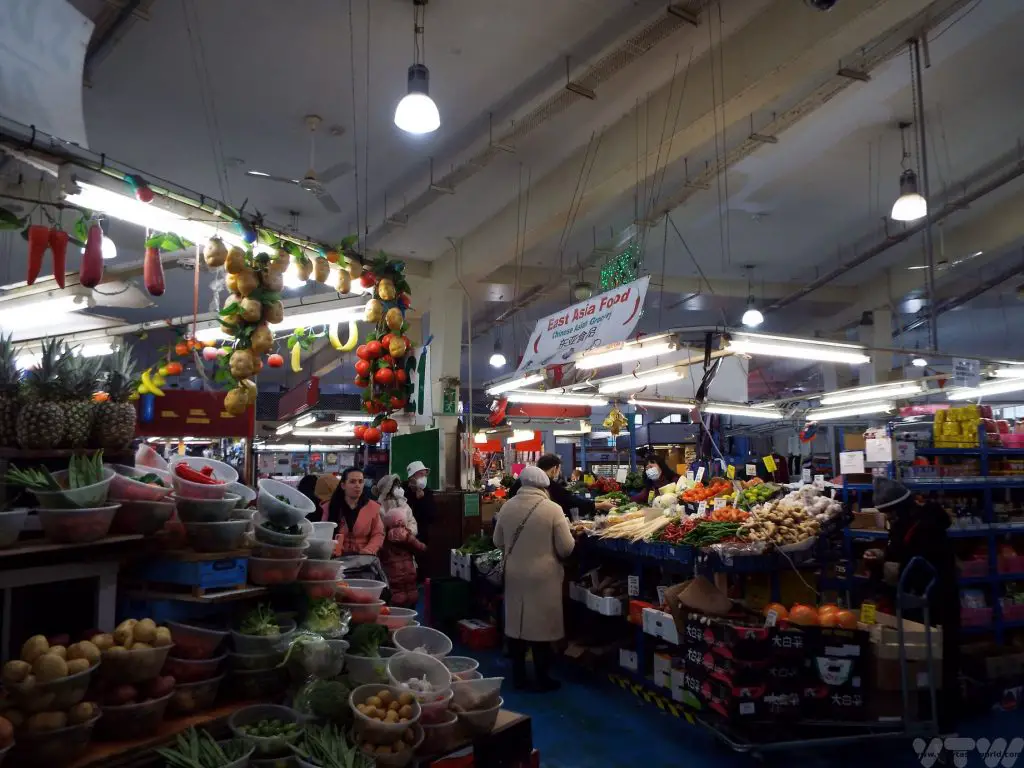

The Best – Or Worst – Road in the World?
Talking of circular things, Coventry’s ring road is one of the world’s smaller ring roads. Indeed it’s so tiny that you can circumnavigate the entire city in less than two minutes. Because the ring road is so teeny cars both enter and leave on the same section of junction, which is usually quite a short distance. This means that it’s something of a challenge for novices to drive on. In fact, we know several people who will drive several miles out of their way to avoid using it. (If you want to avoid it there is a Park and Ride service at War Memorial Park.) But it does work and is hugely convenient. There is a convention: Once on the ring road move to the outer lane unless you are planning to leave at the next exit. When planning to leave at the next junction, move across to the exit lane and exit. If you are about to exit and a car ahead of you is on the junction and planning to enter, slow down and let them enter. Conversely, if you are planning to exit and the car planning to enter is behind you, they should give way. And the same etiquette applies if you are joining the ring road. If you miss your junction you can just go round again – it won’t take long.
